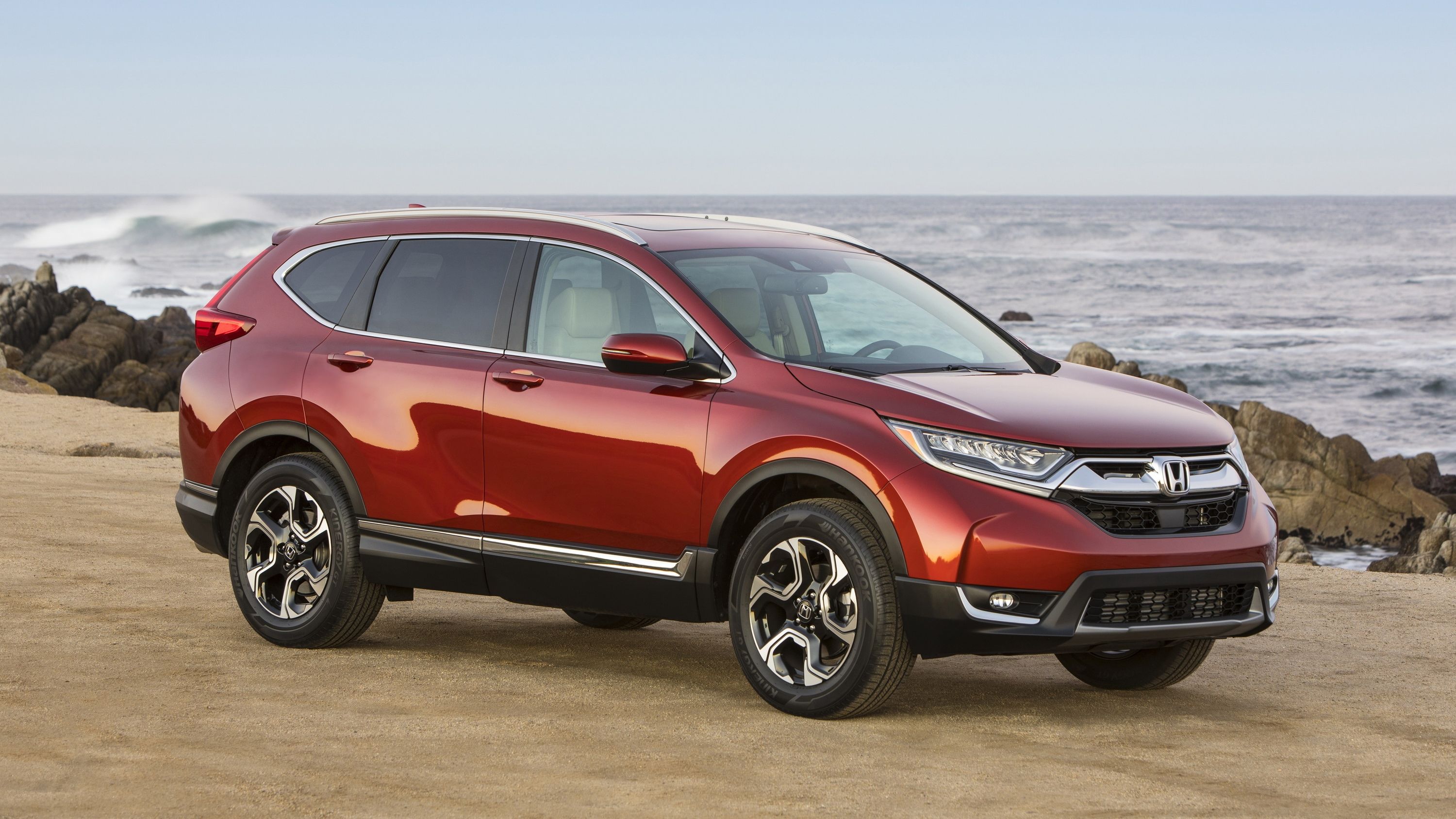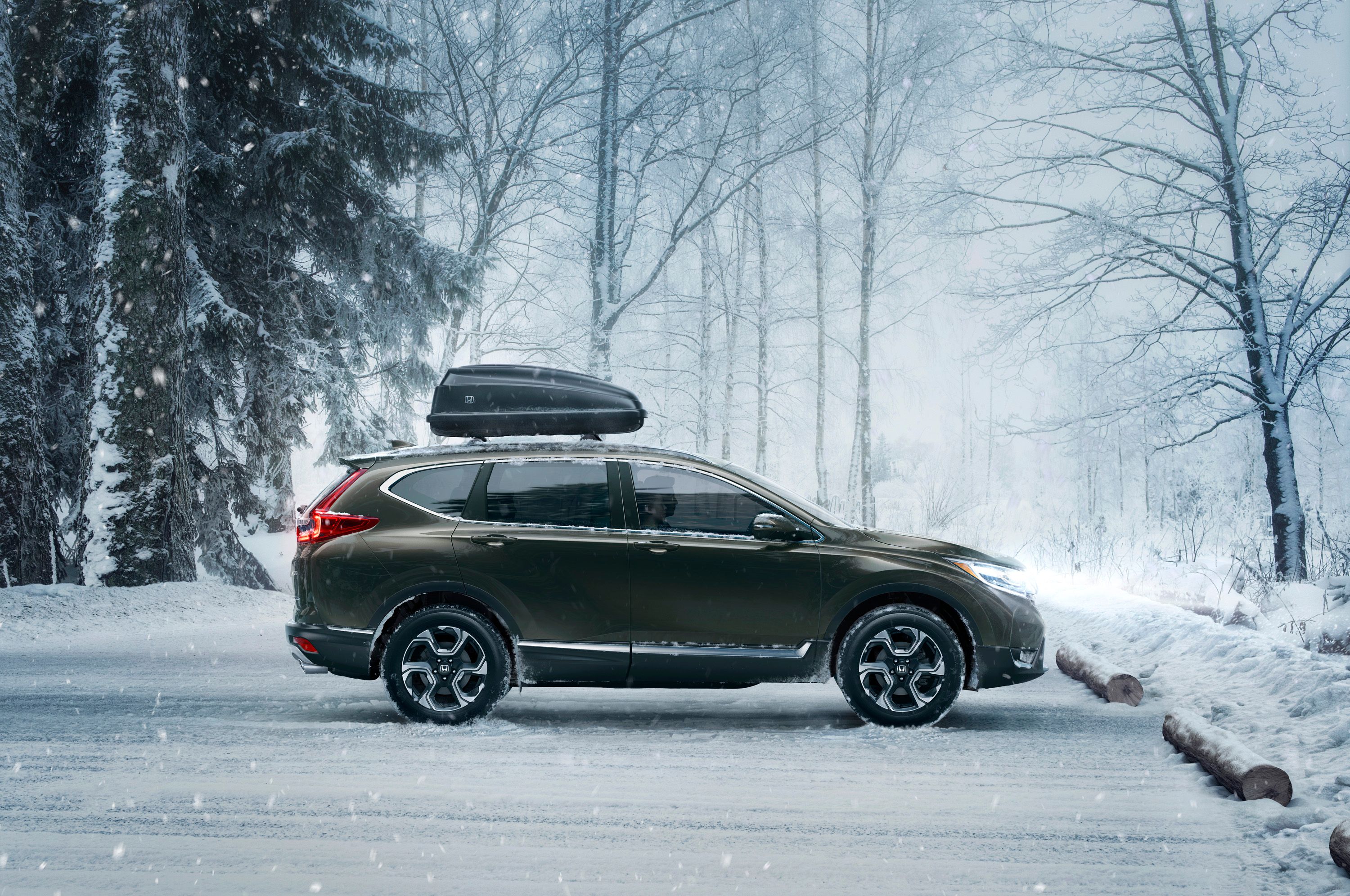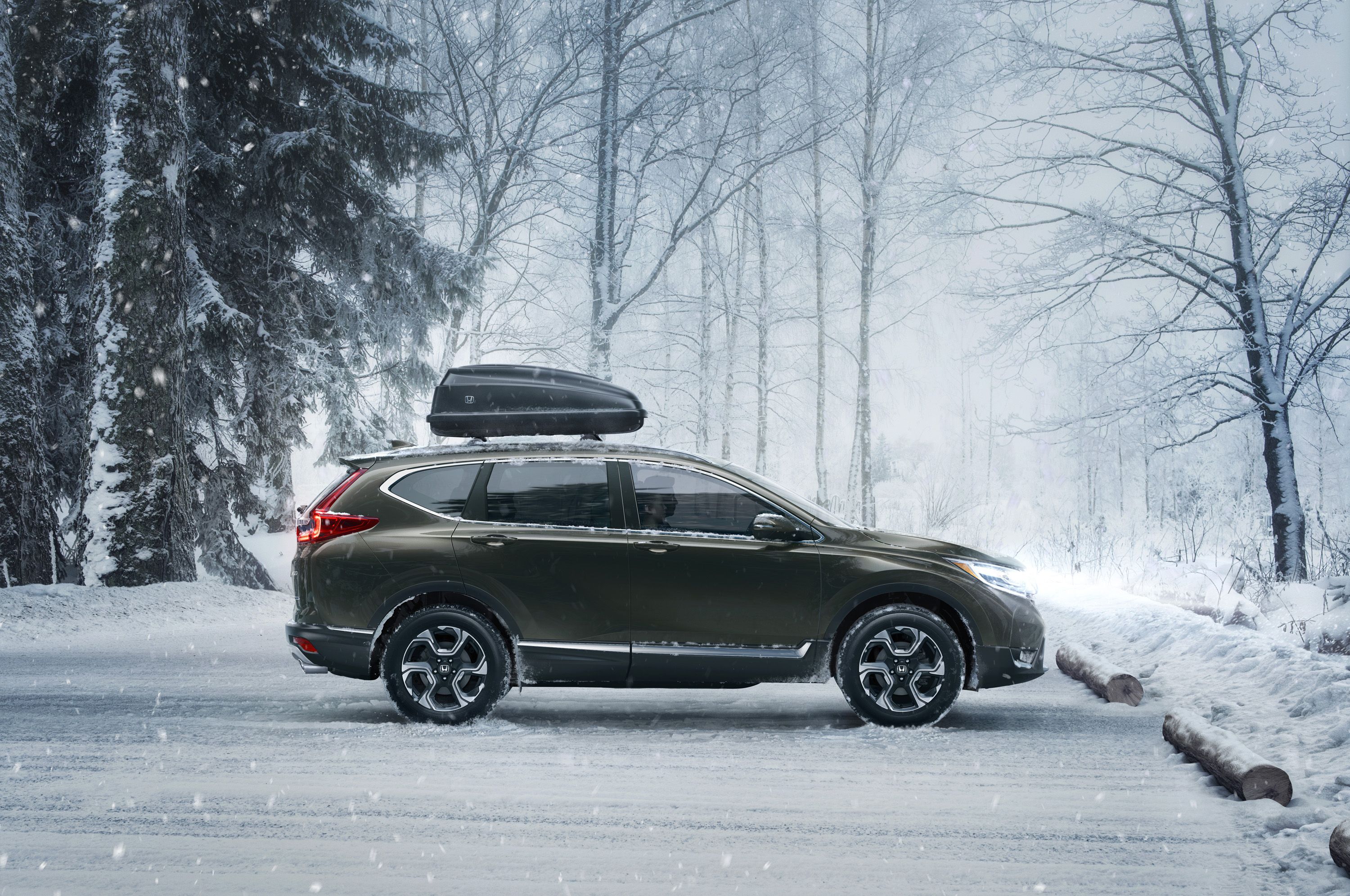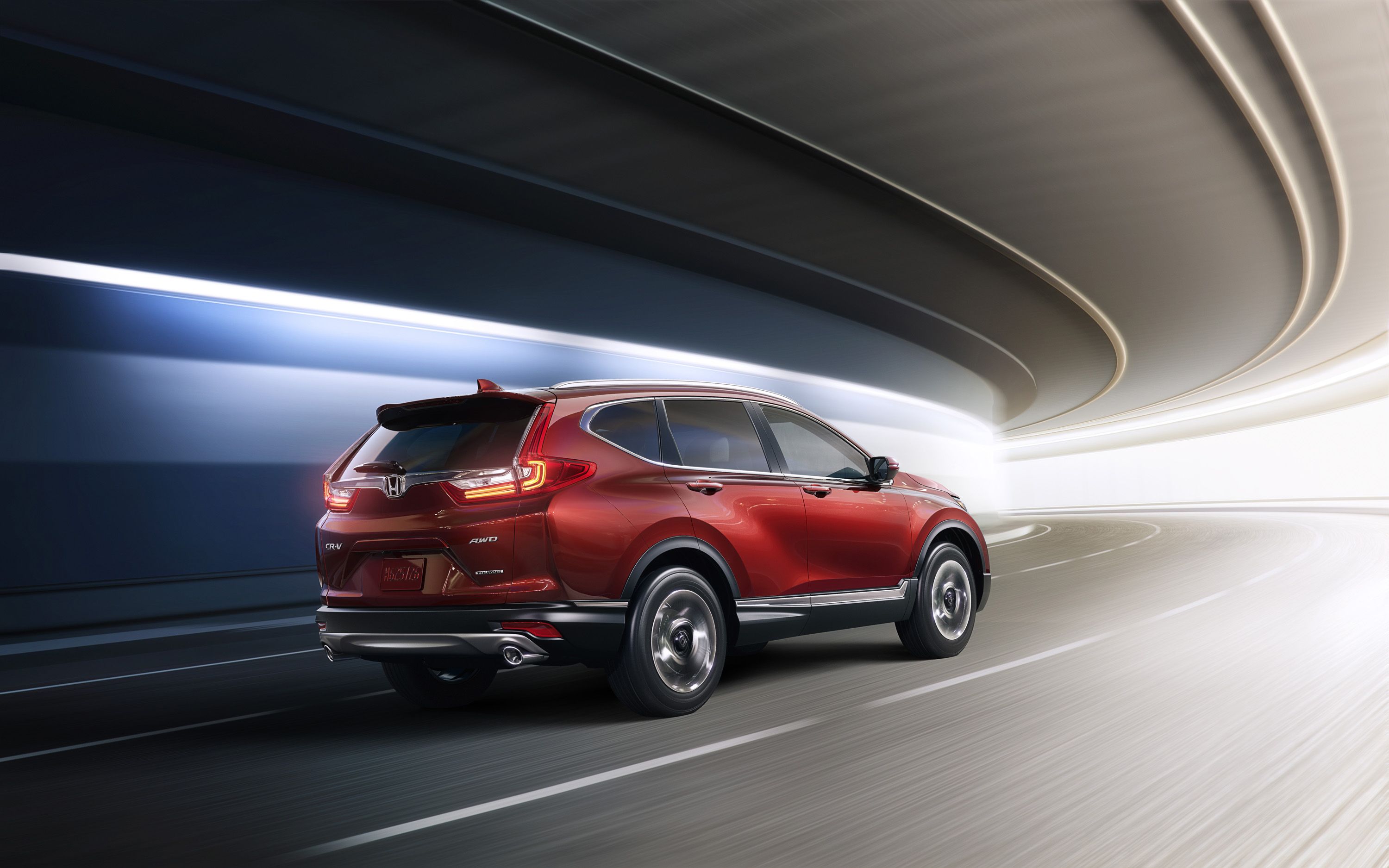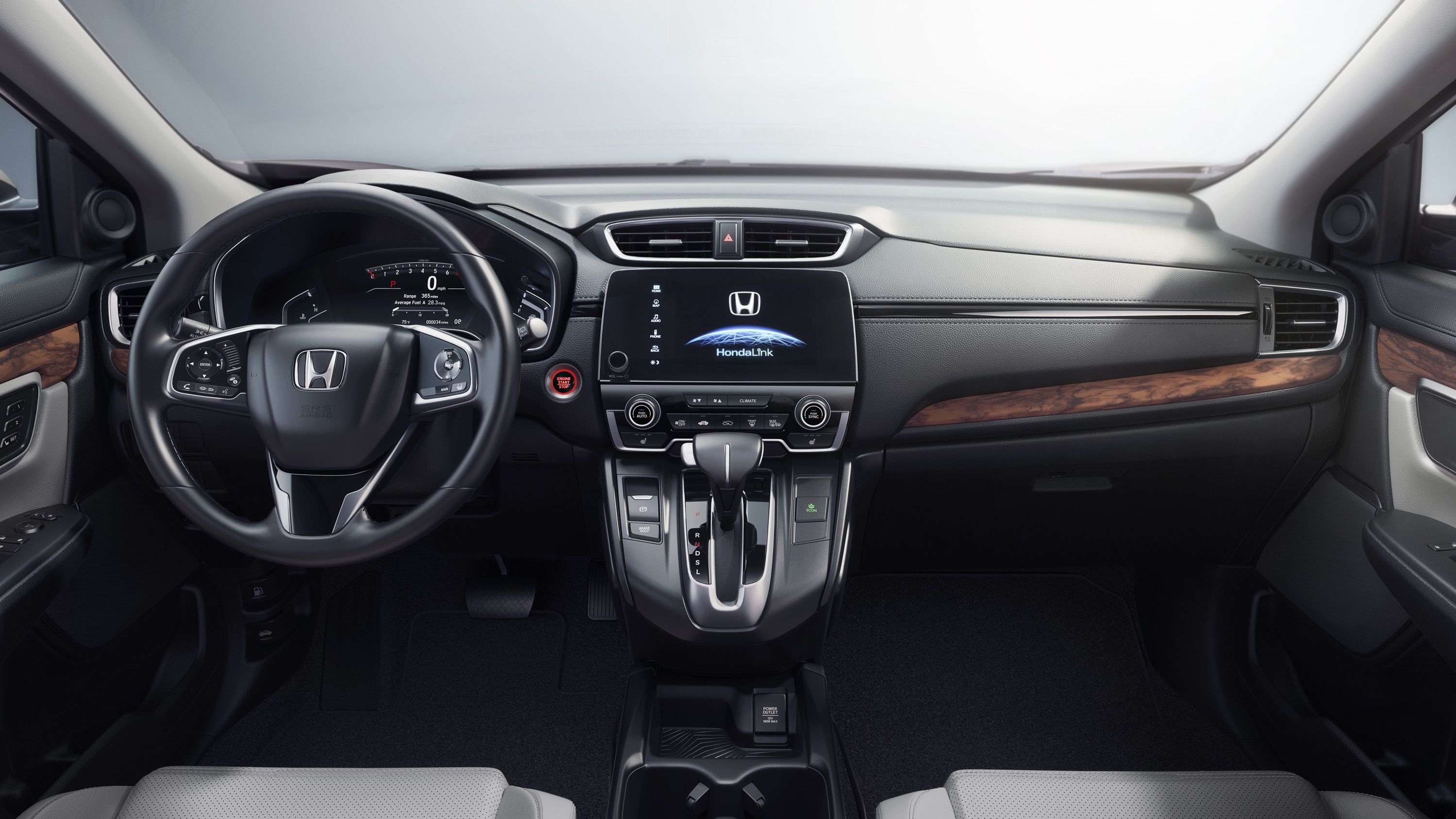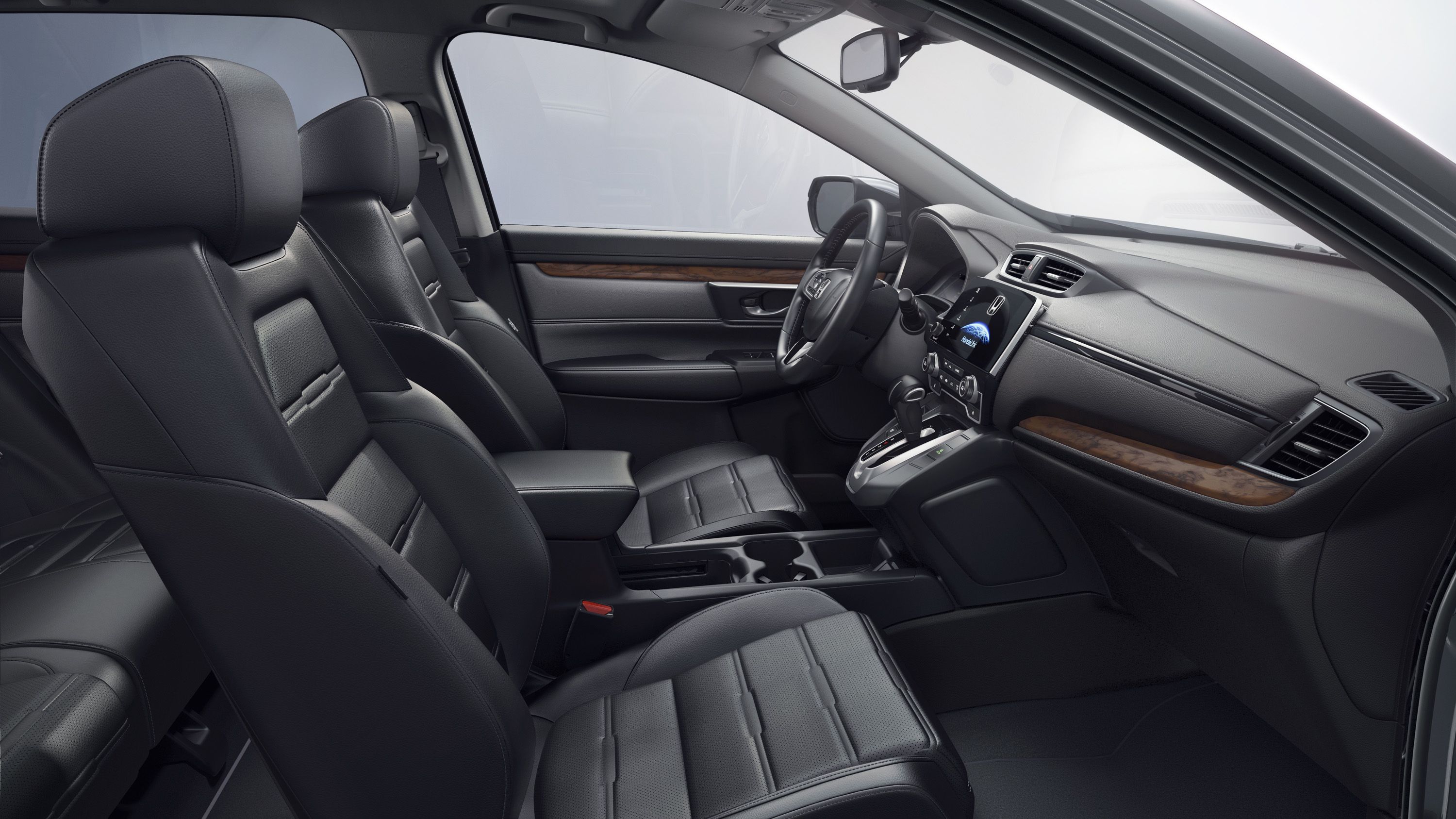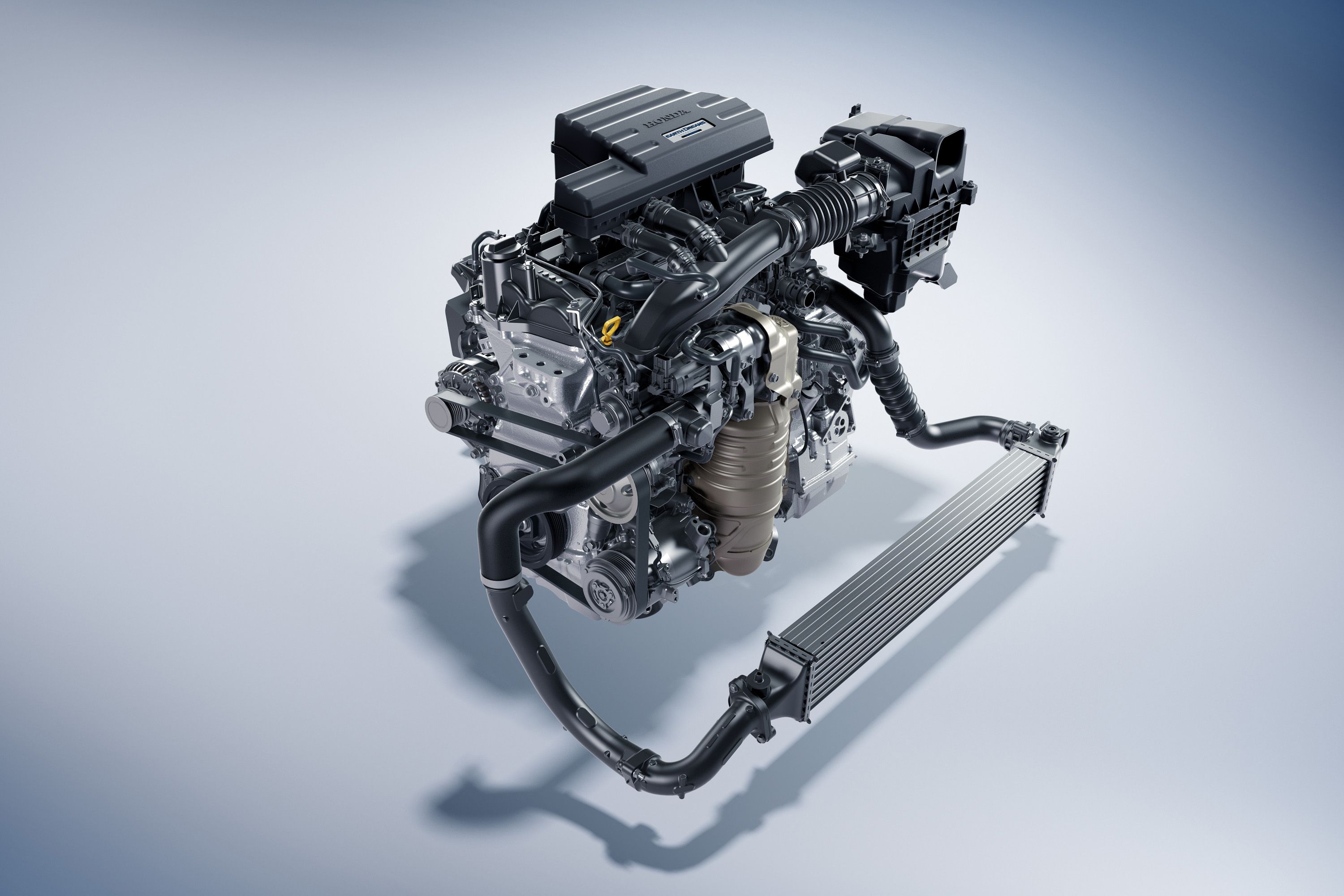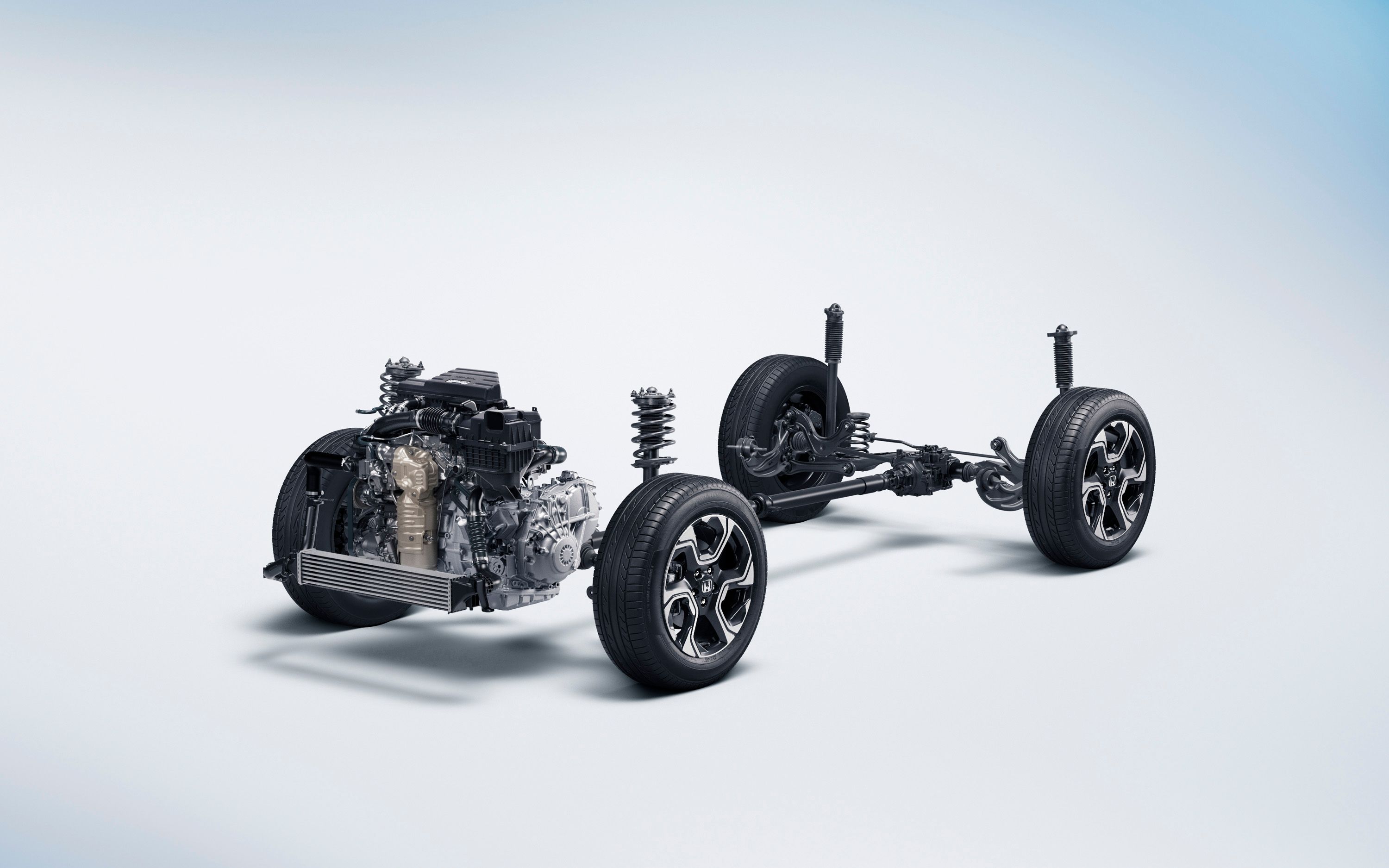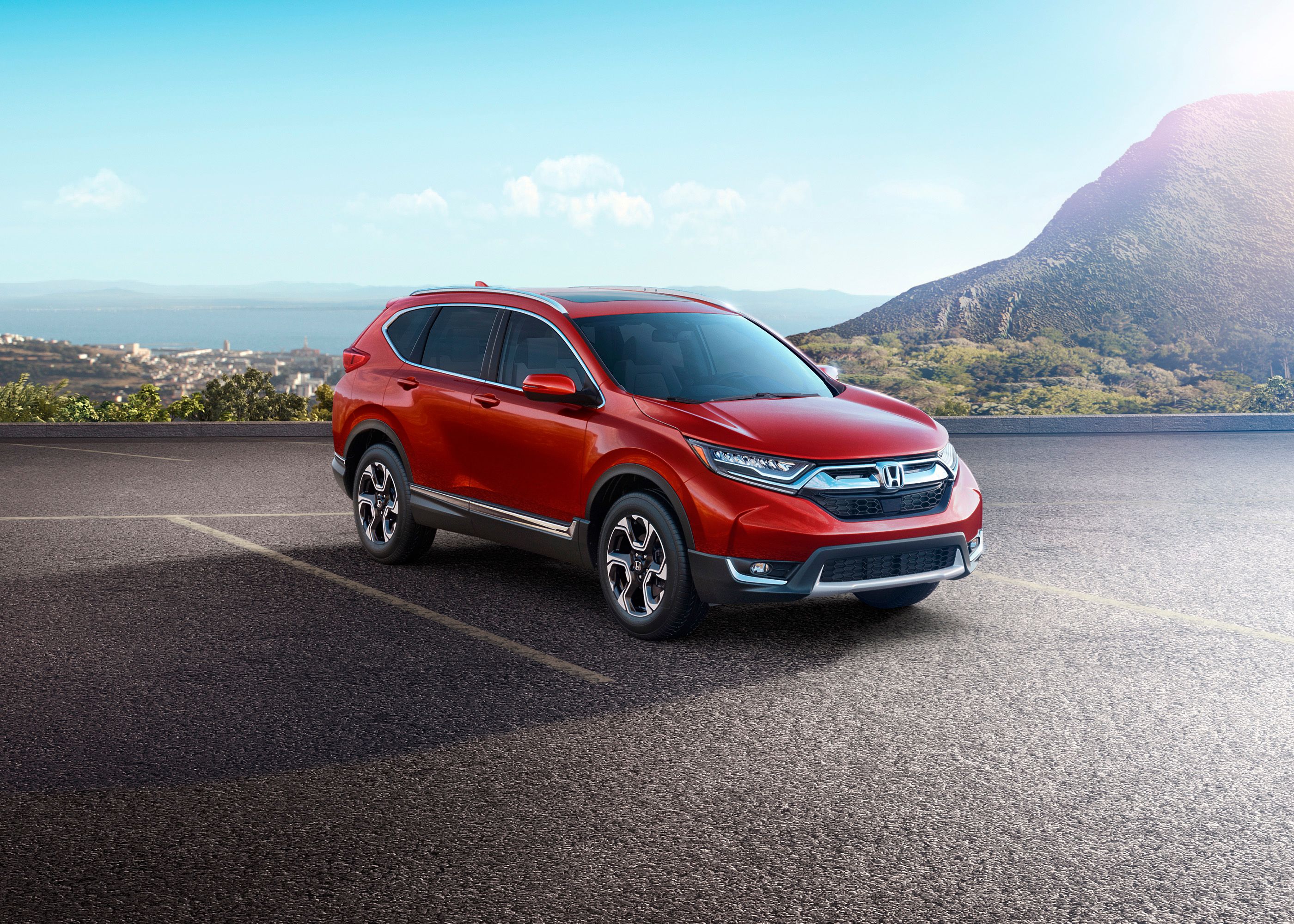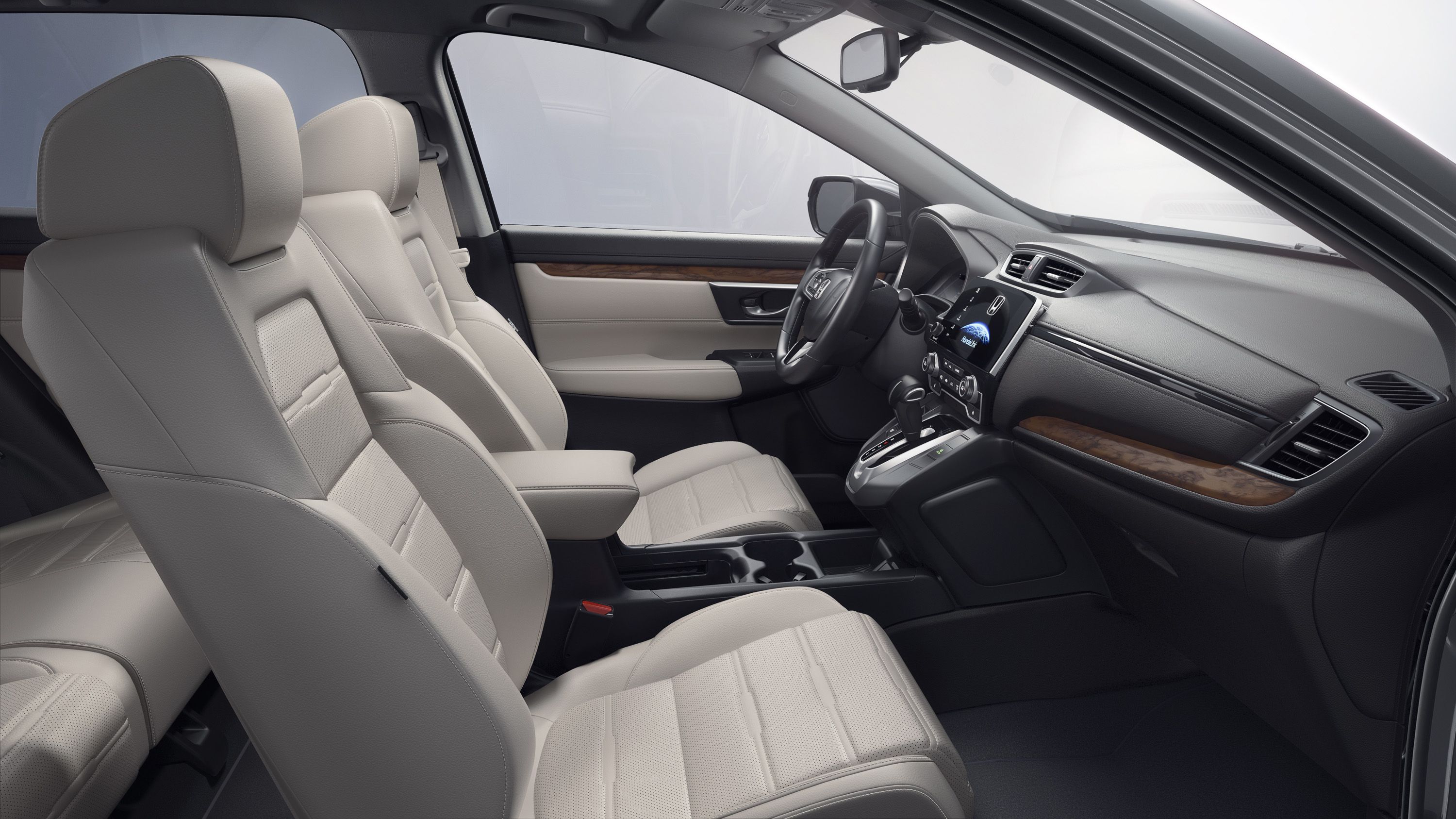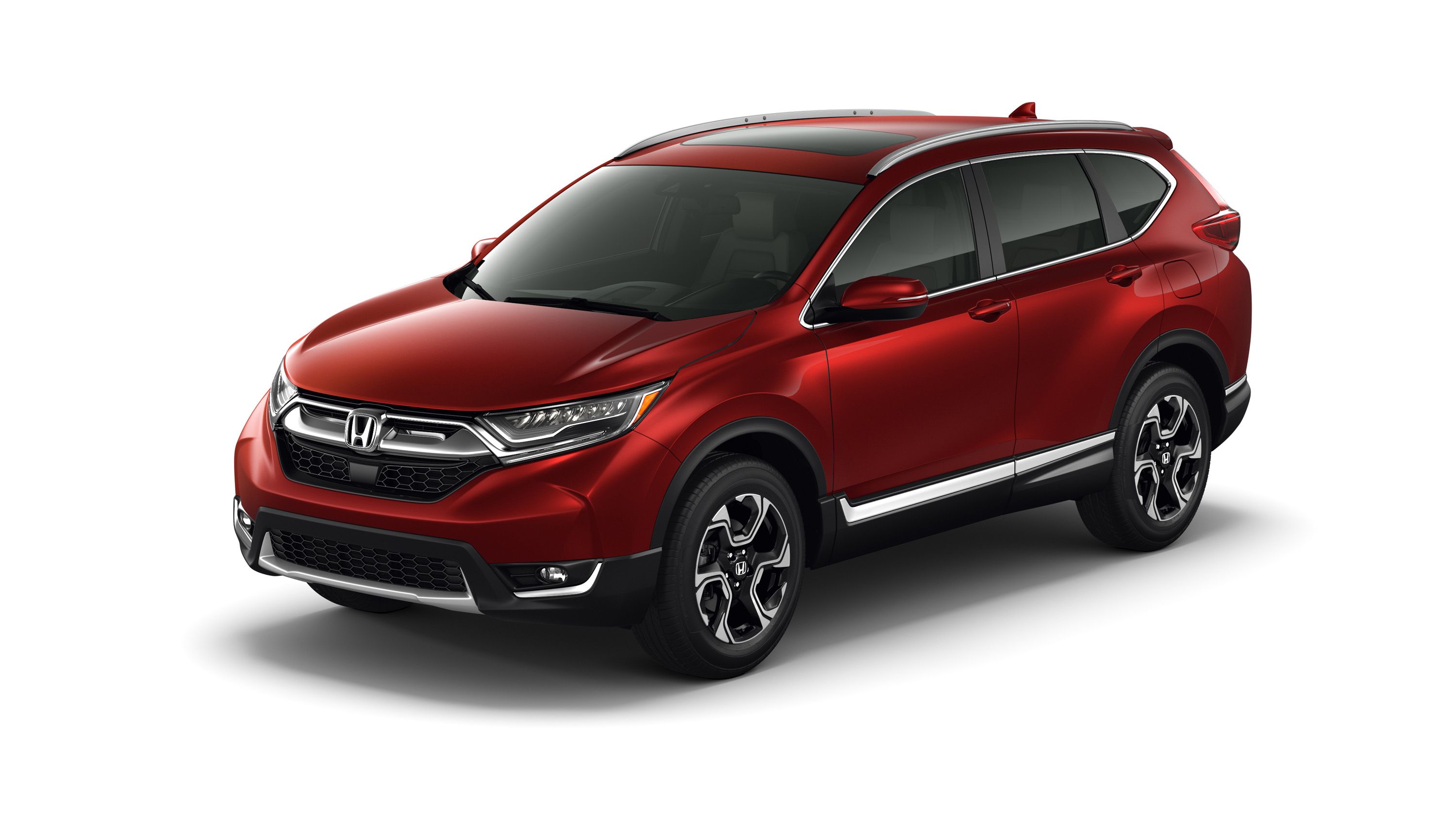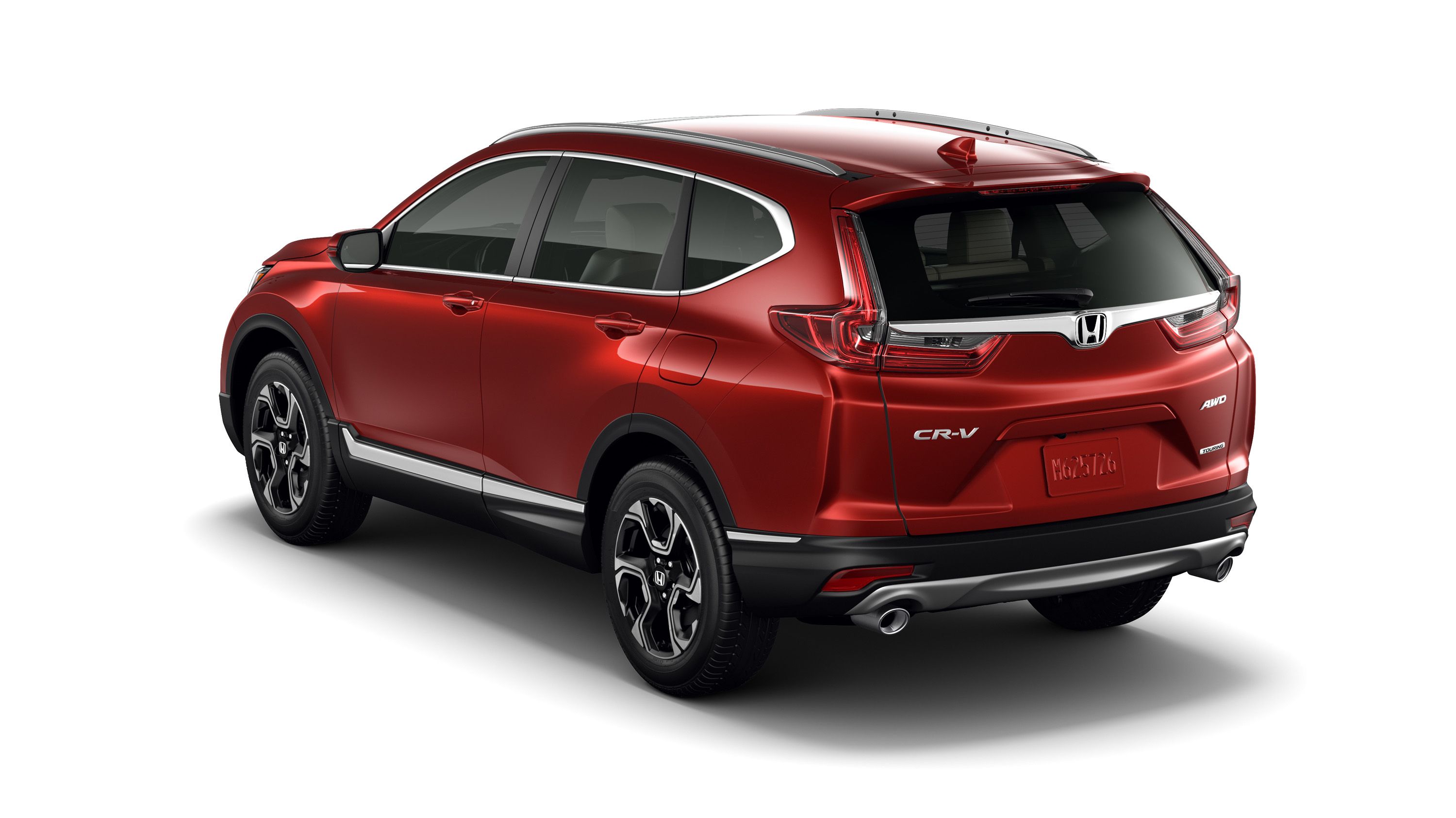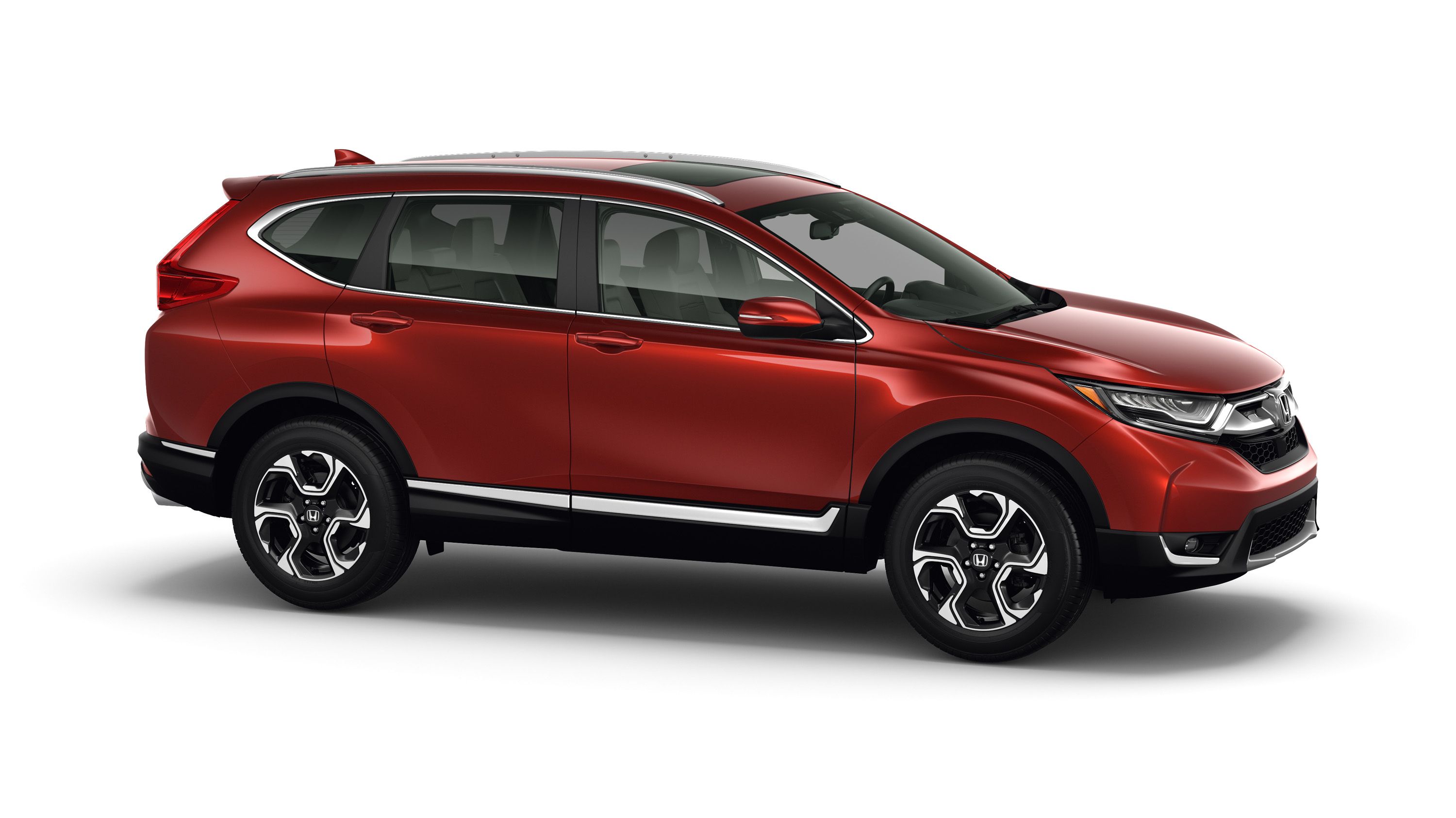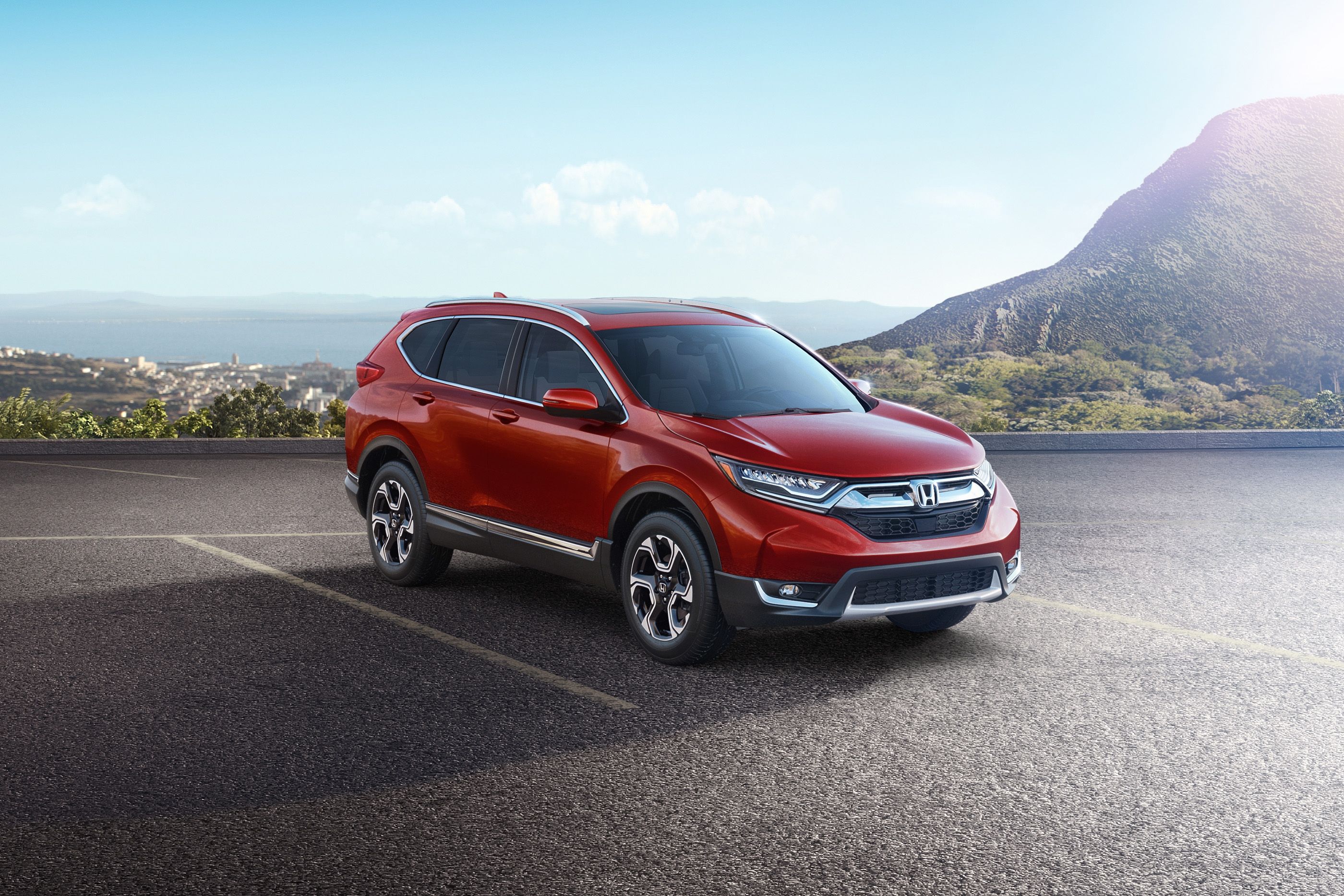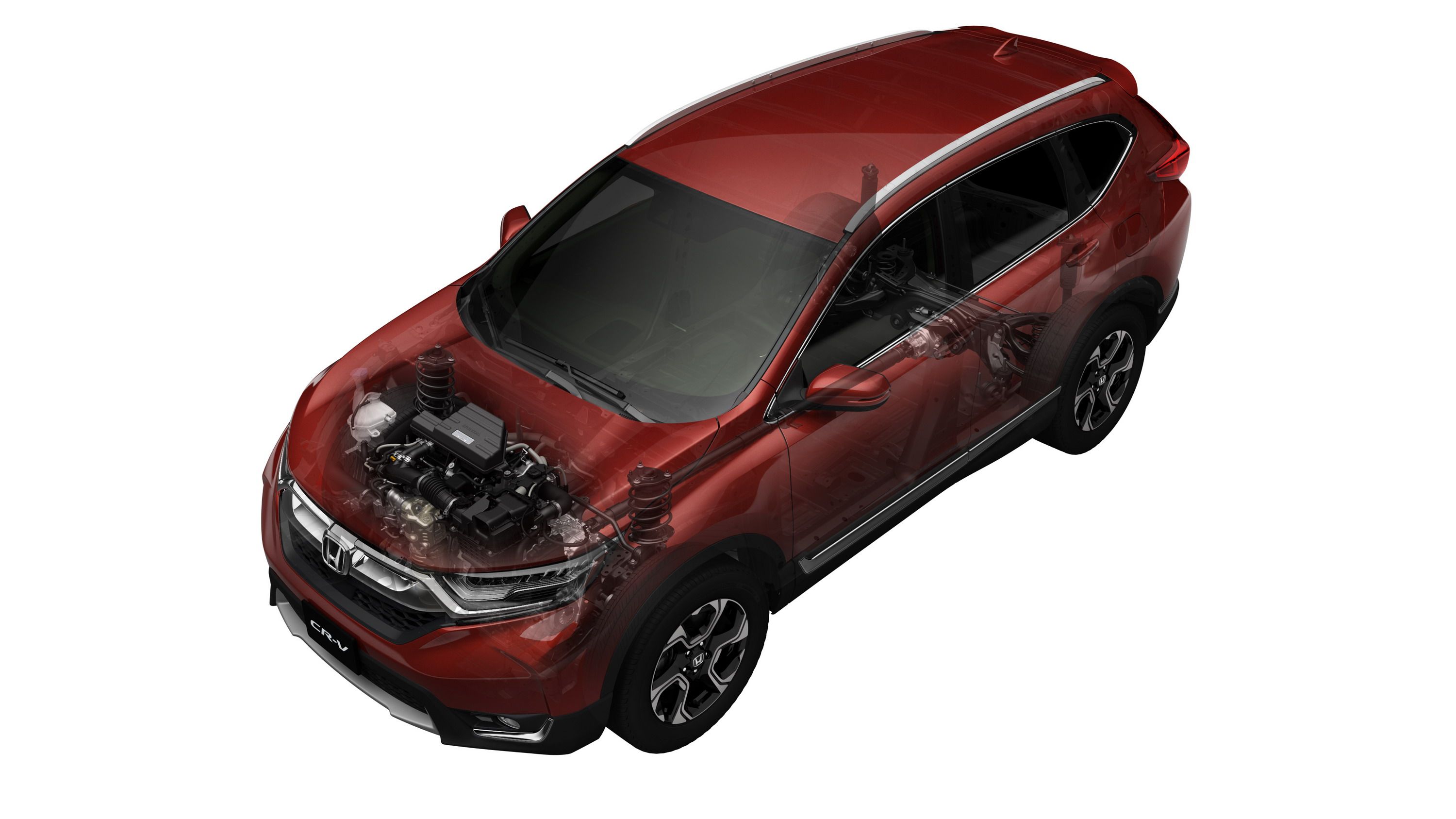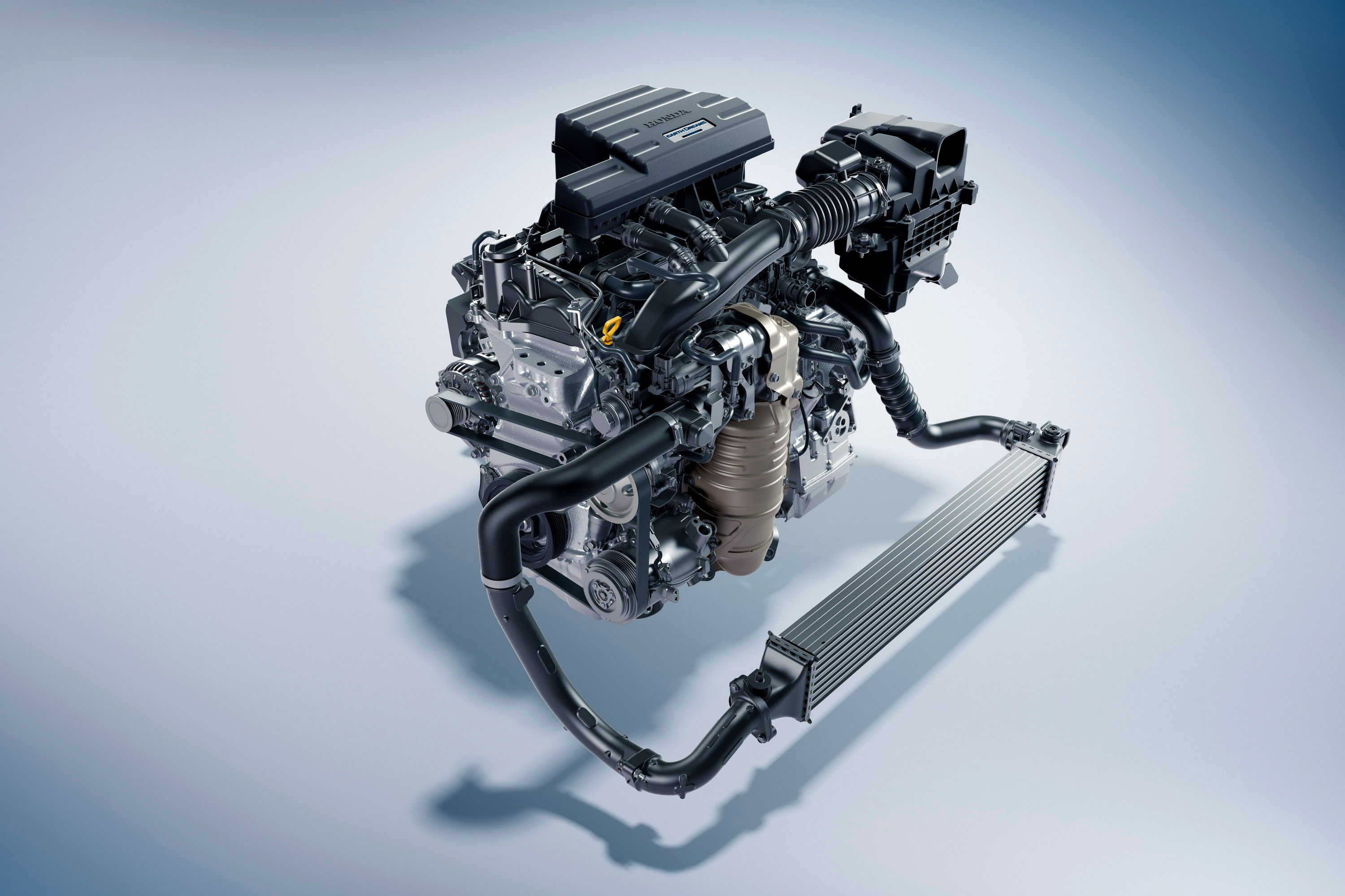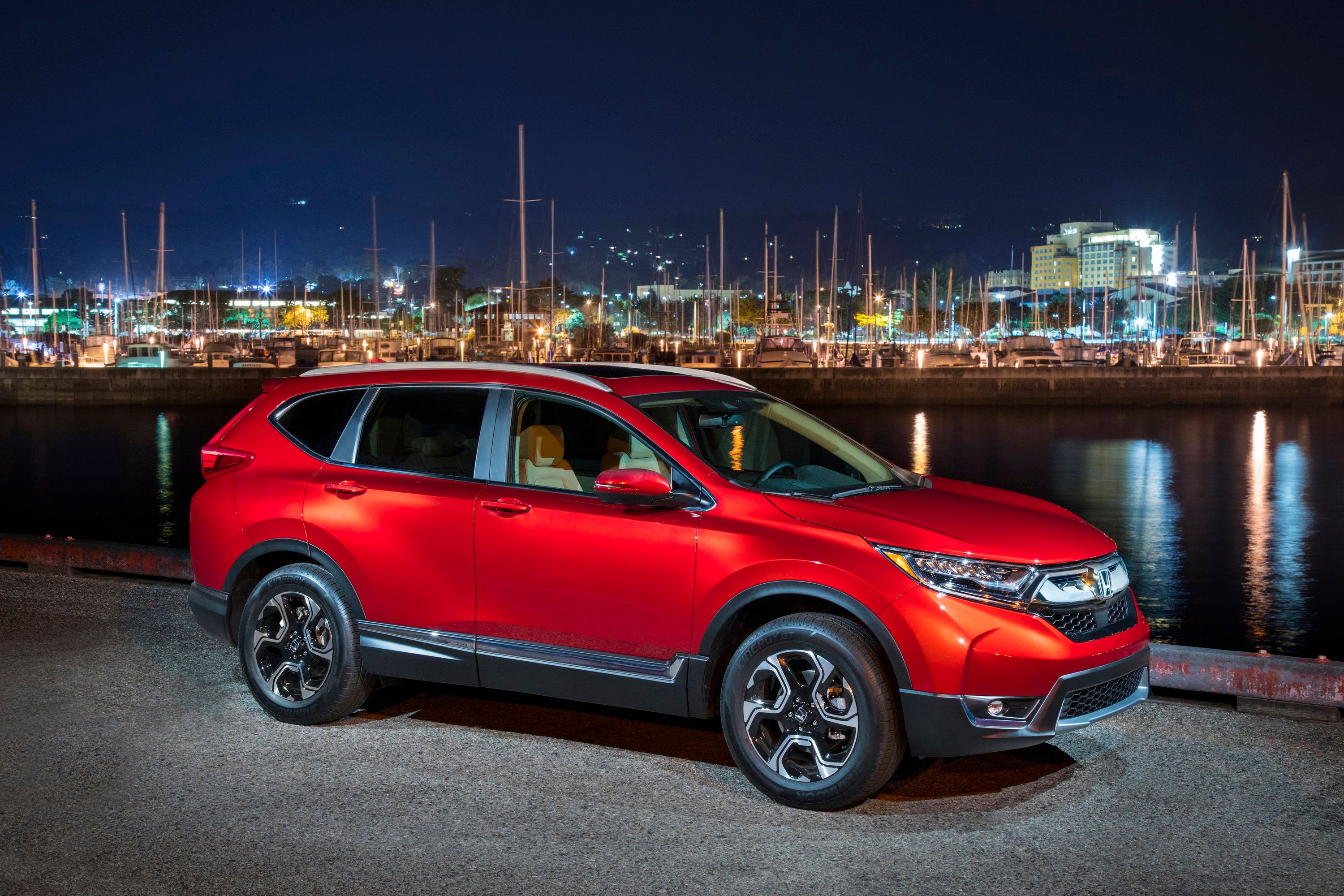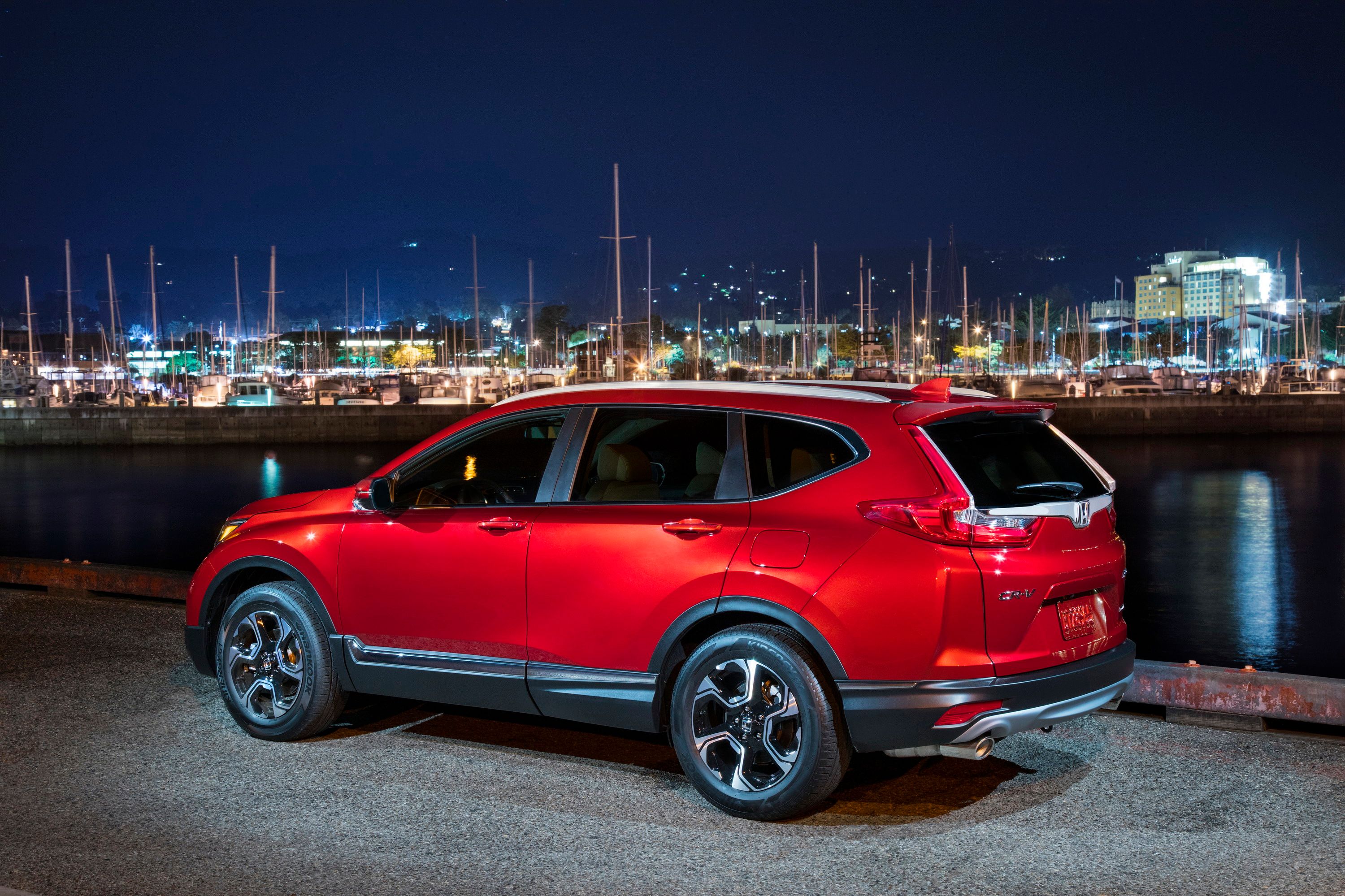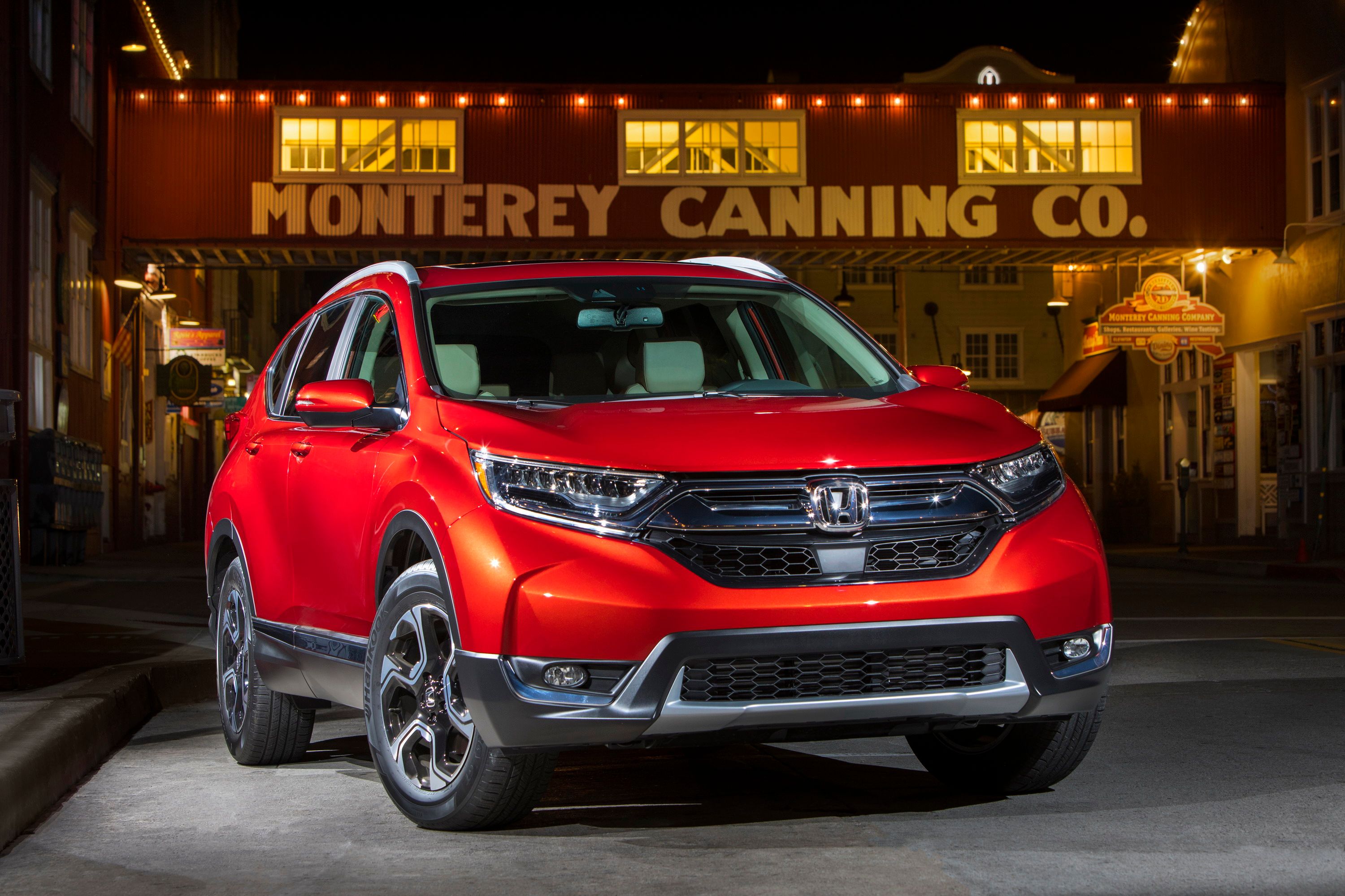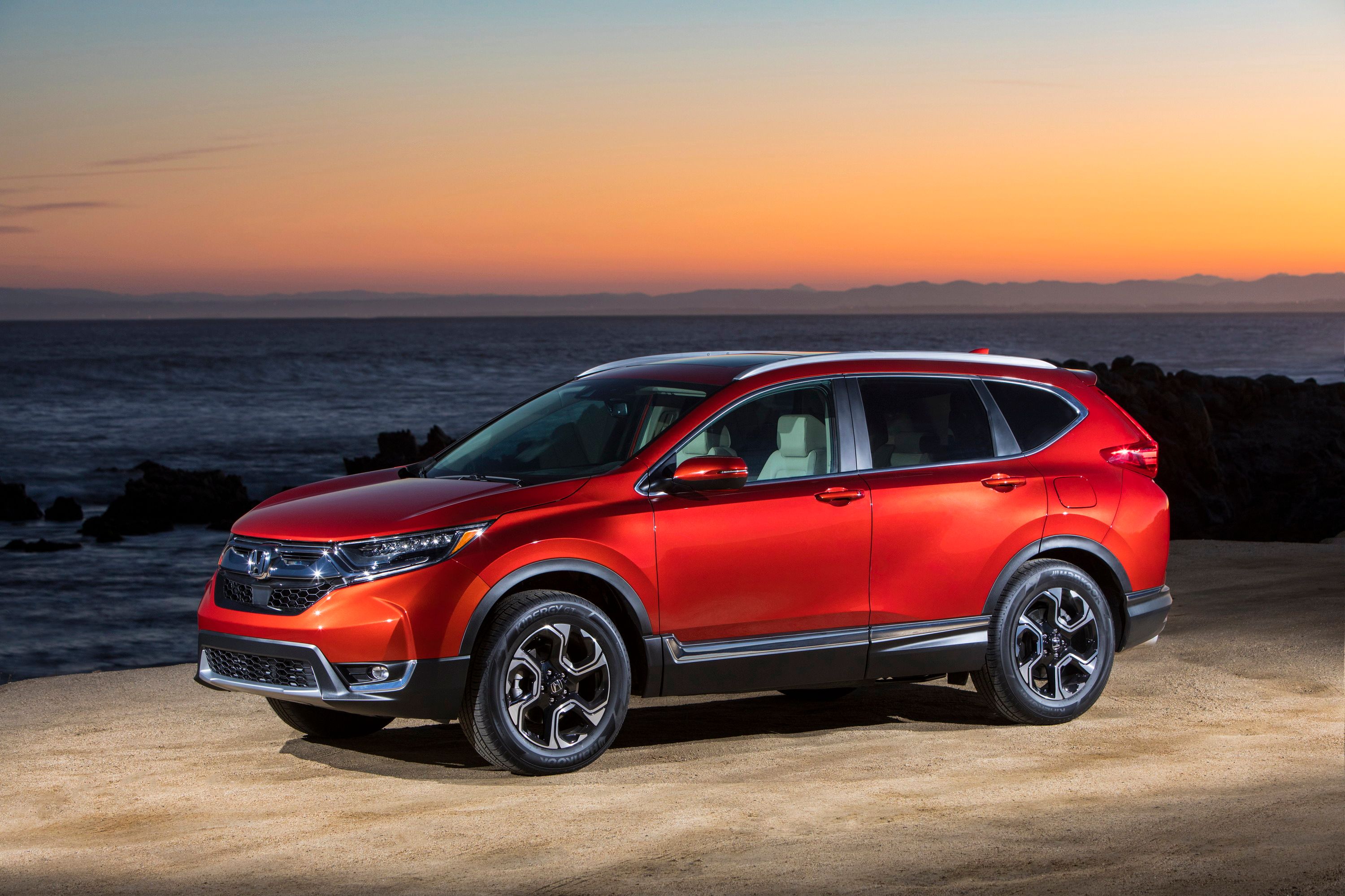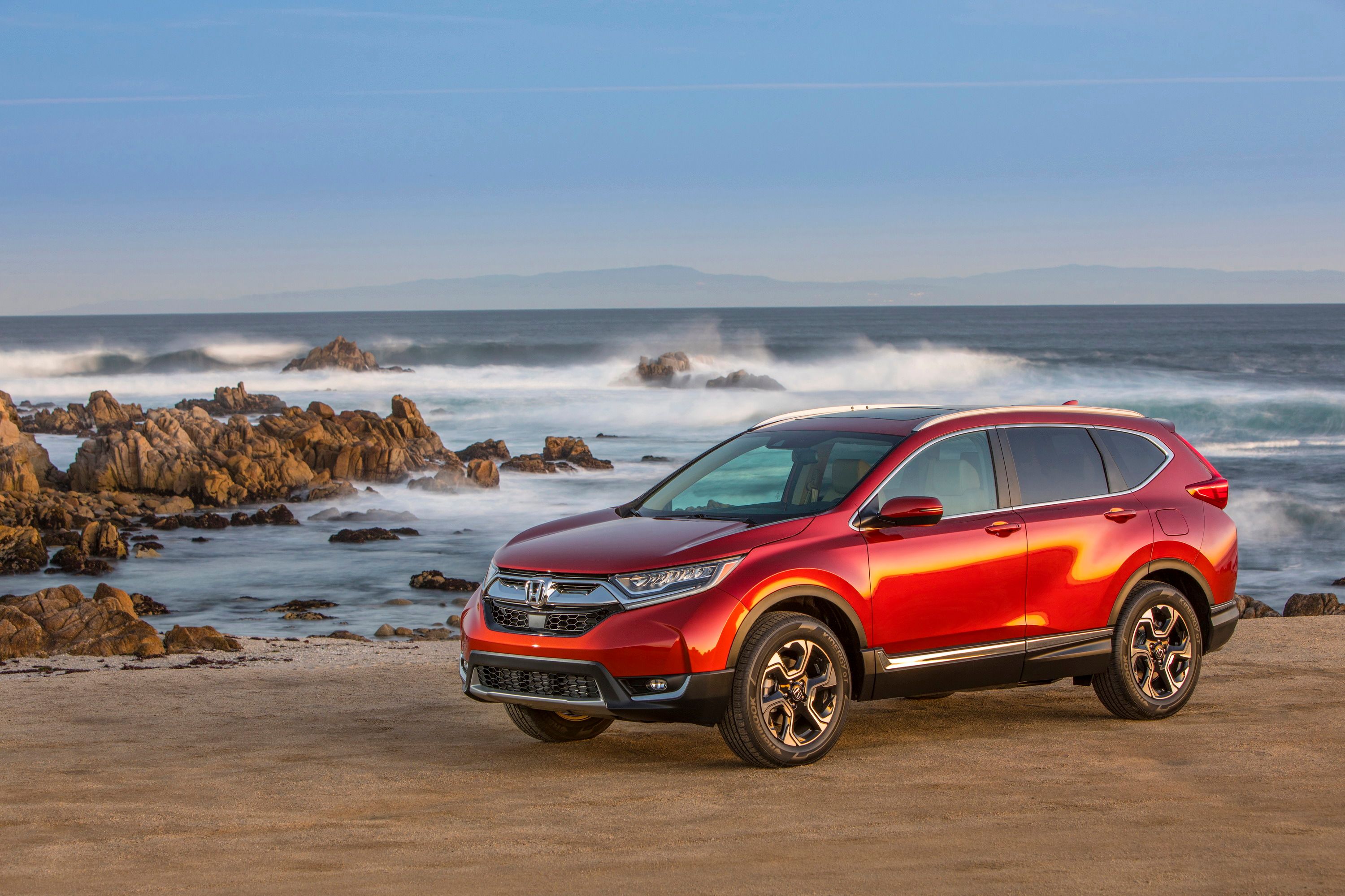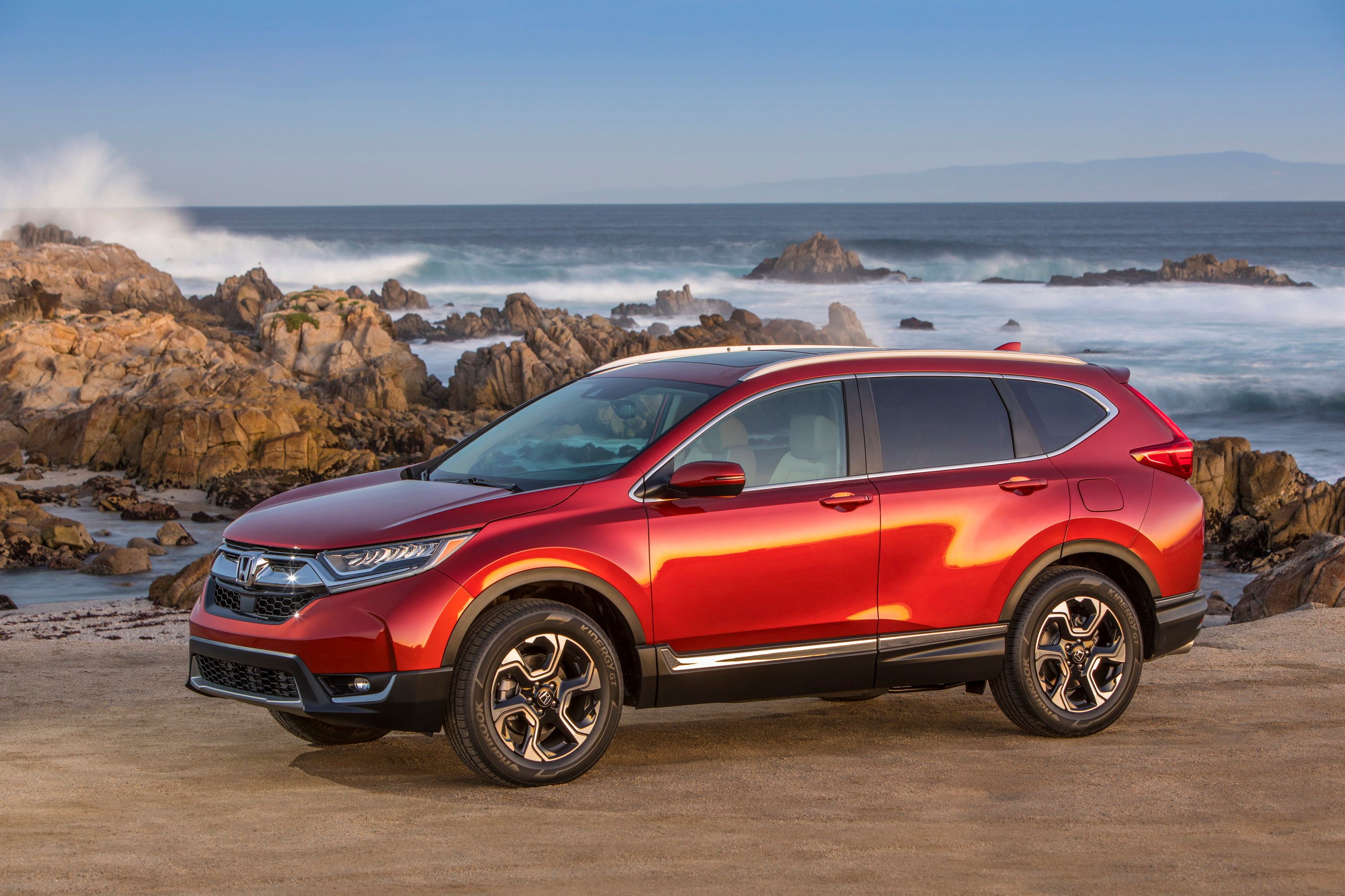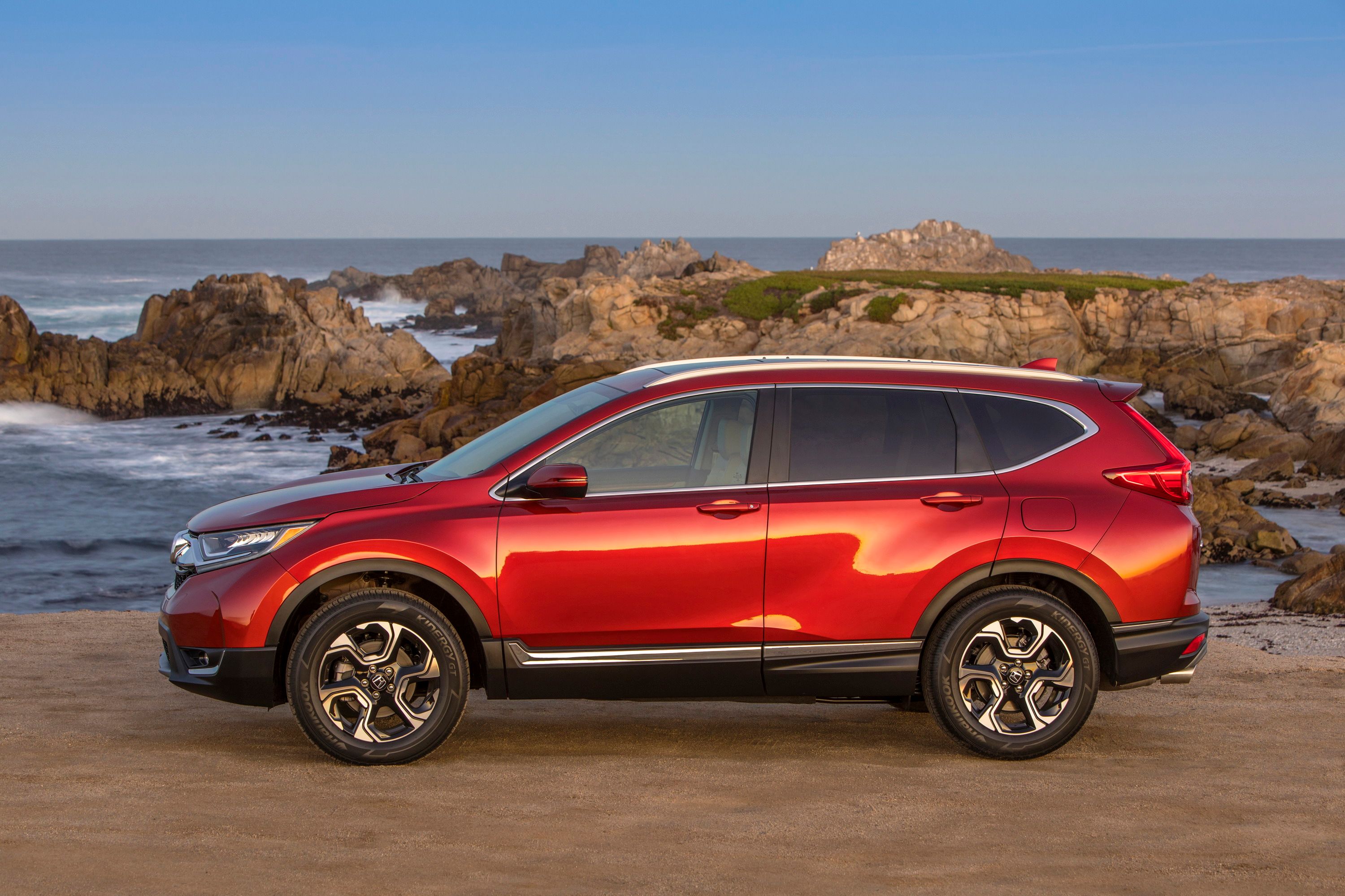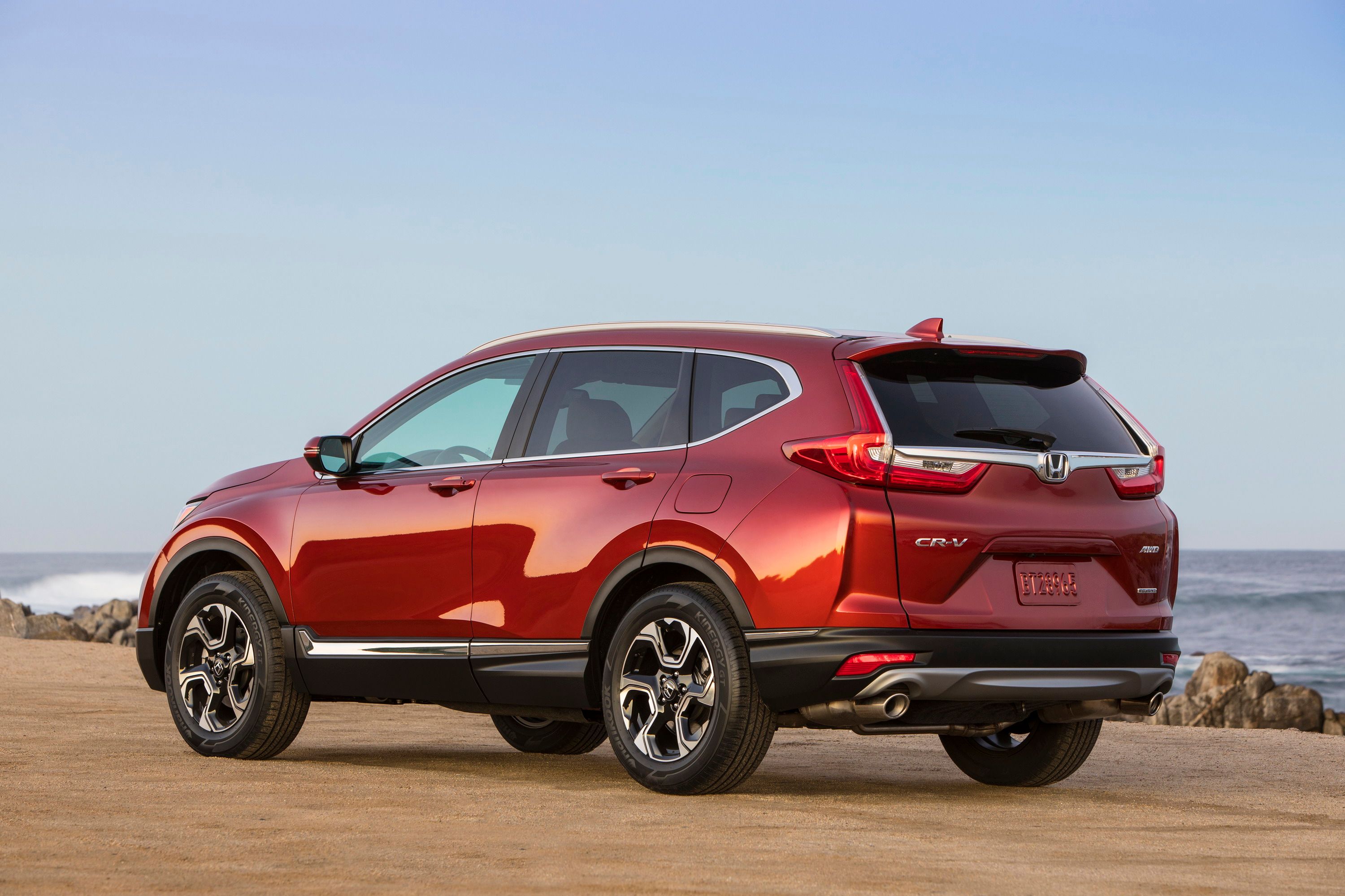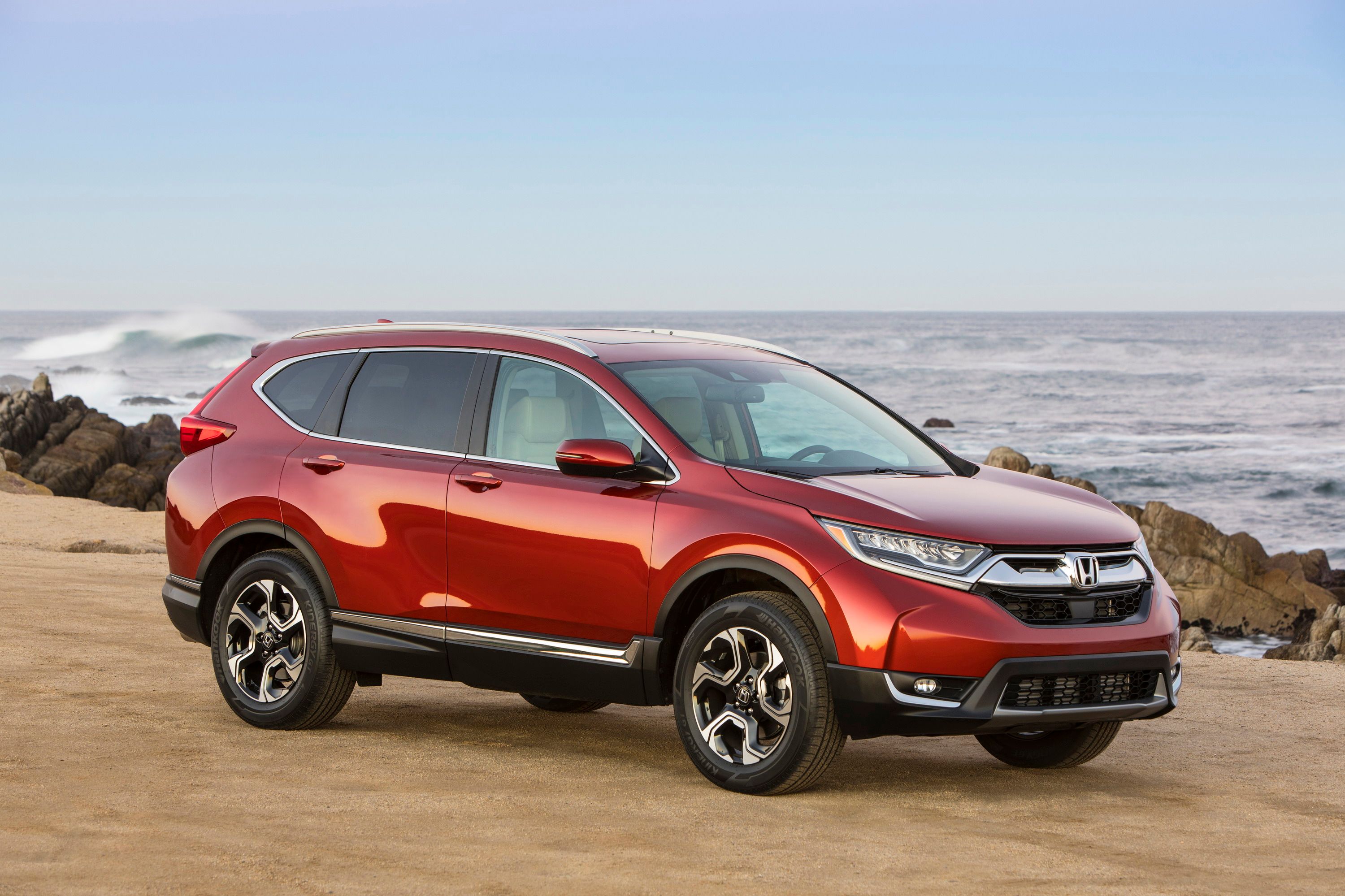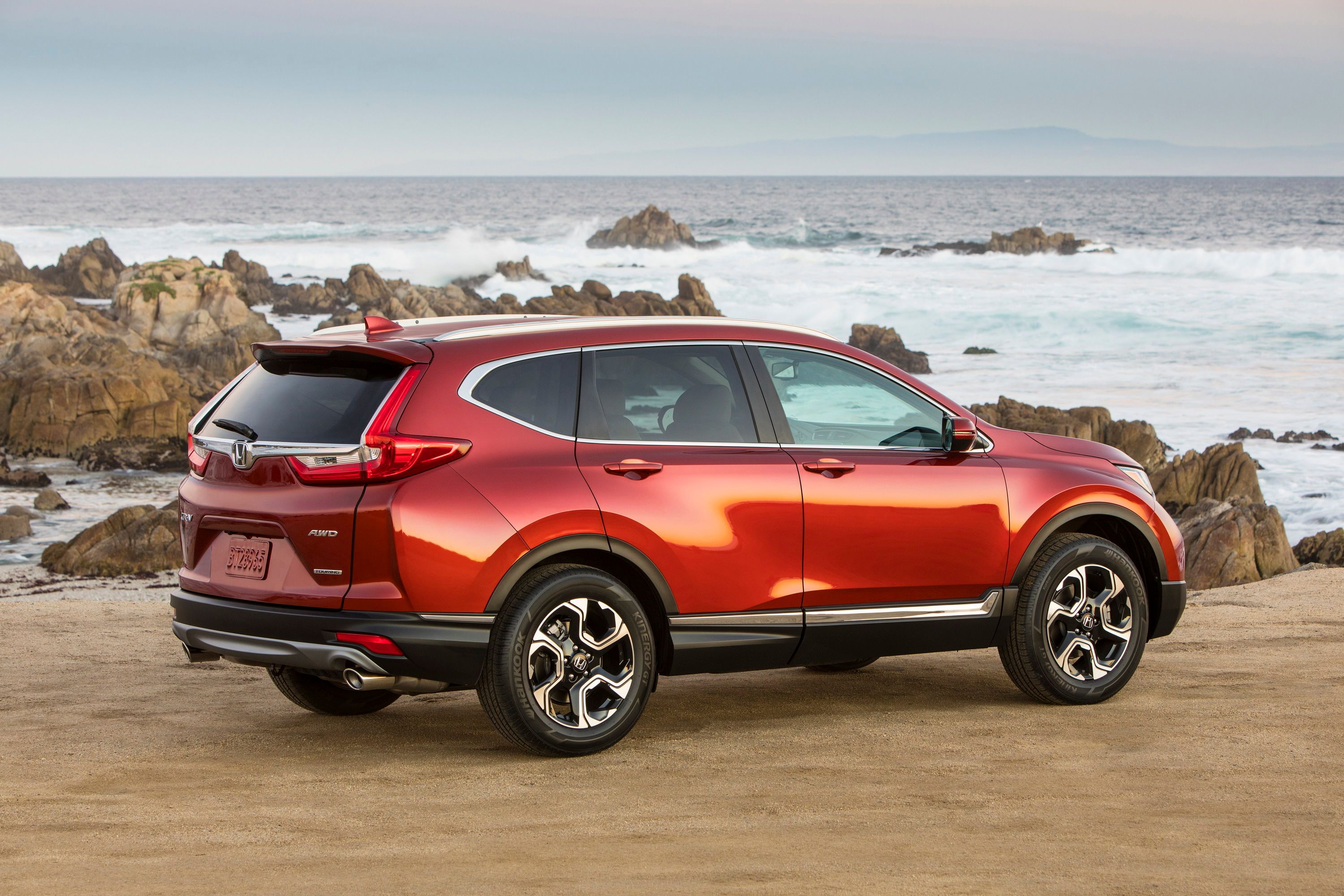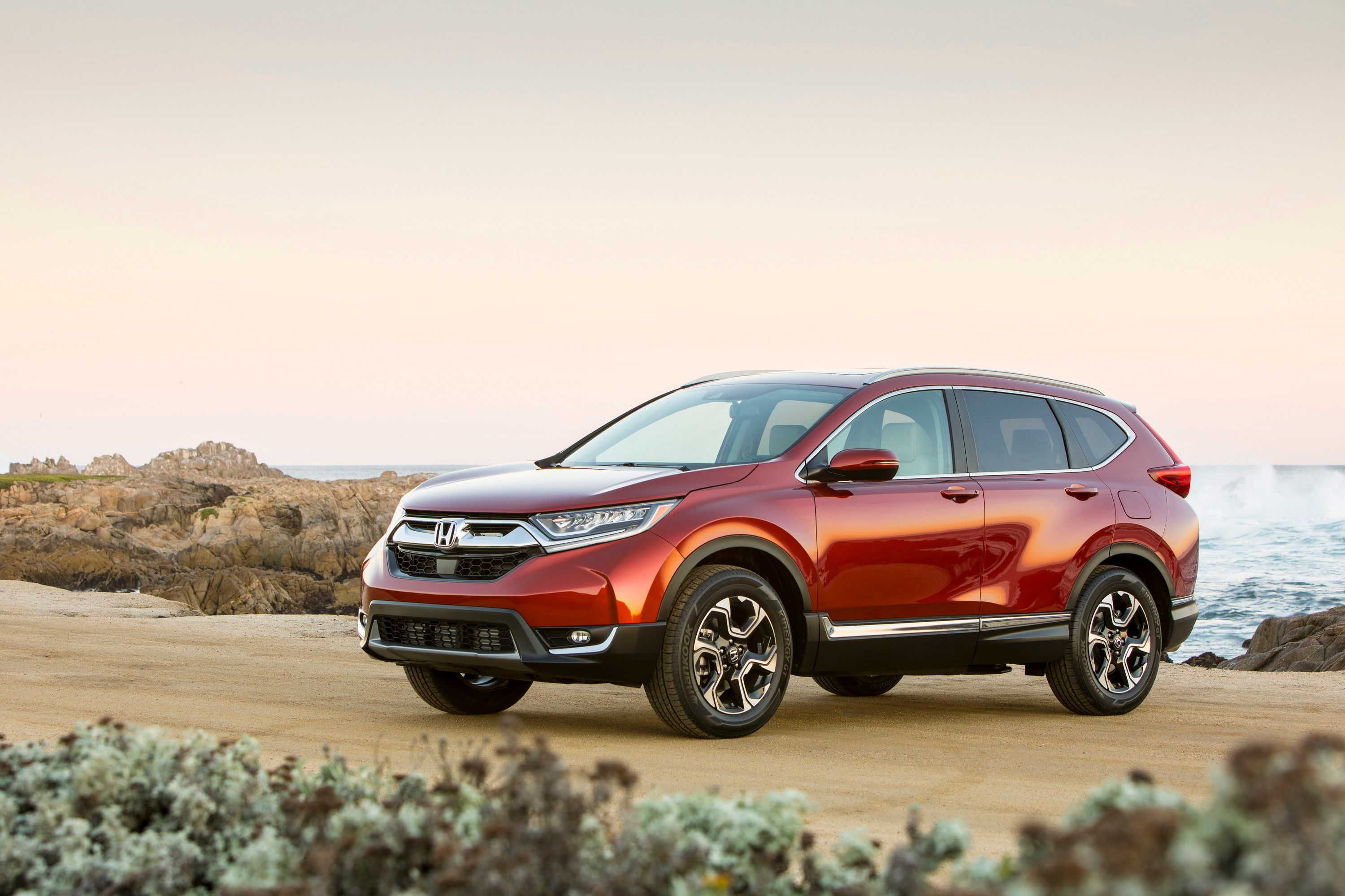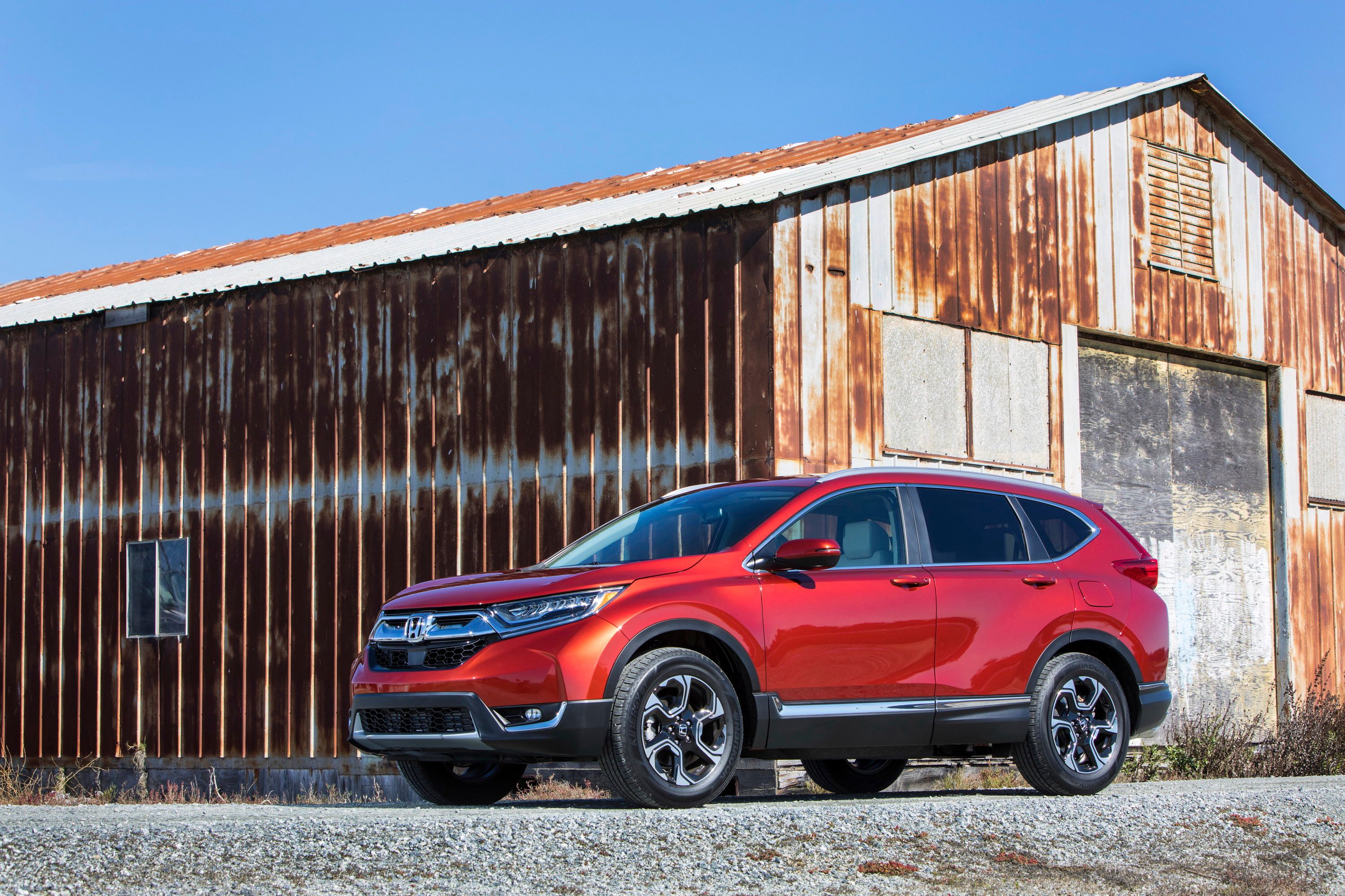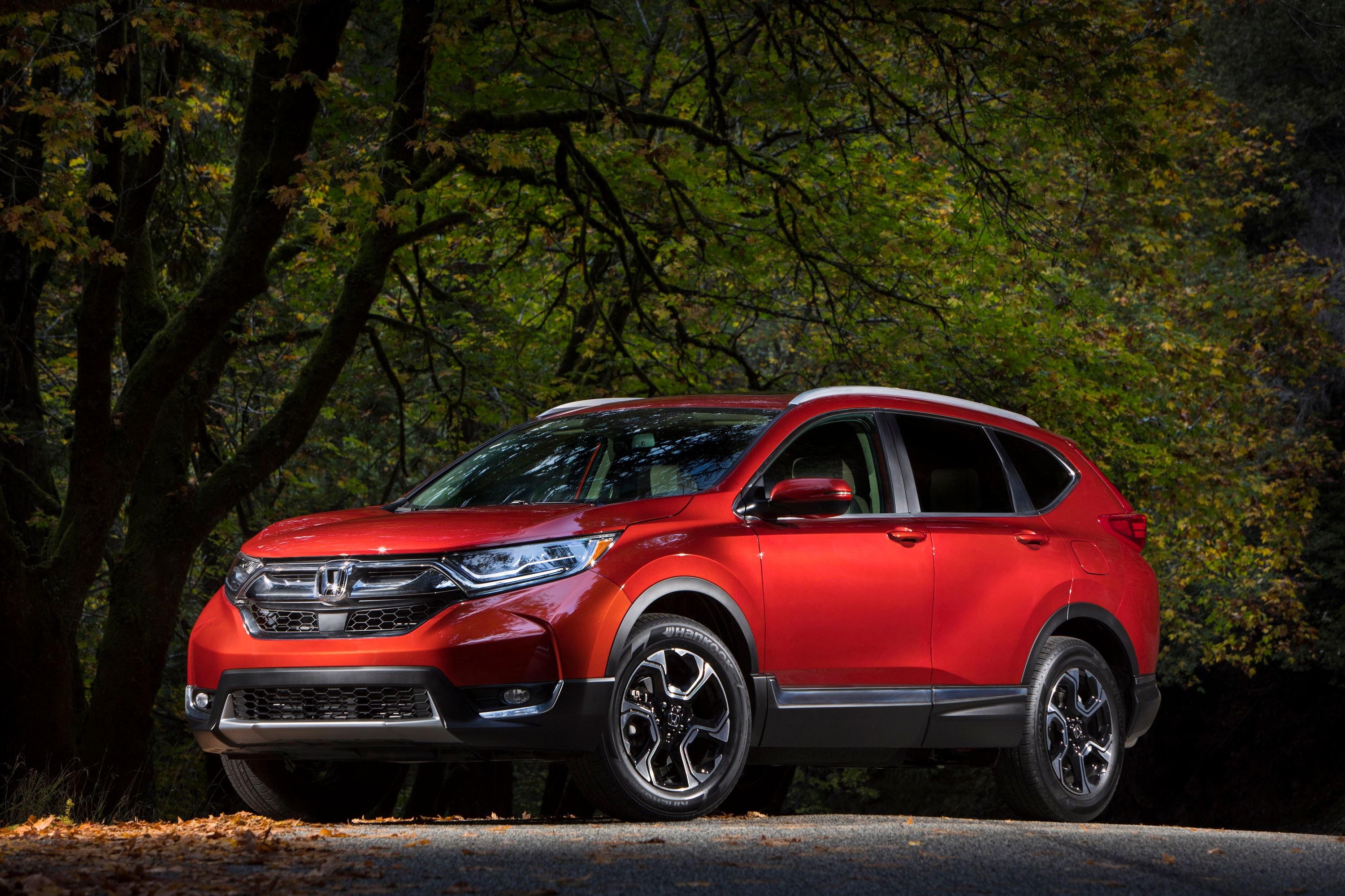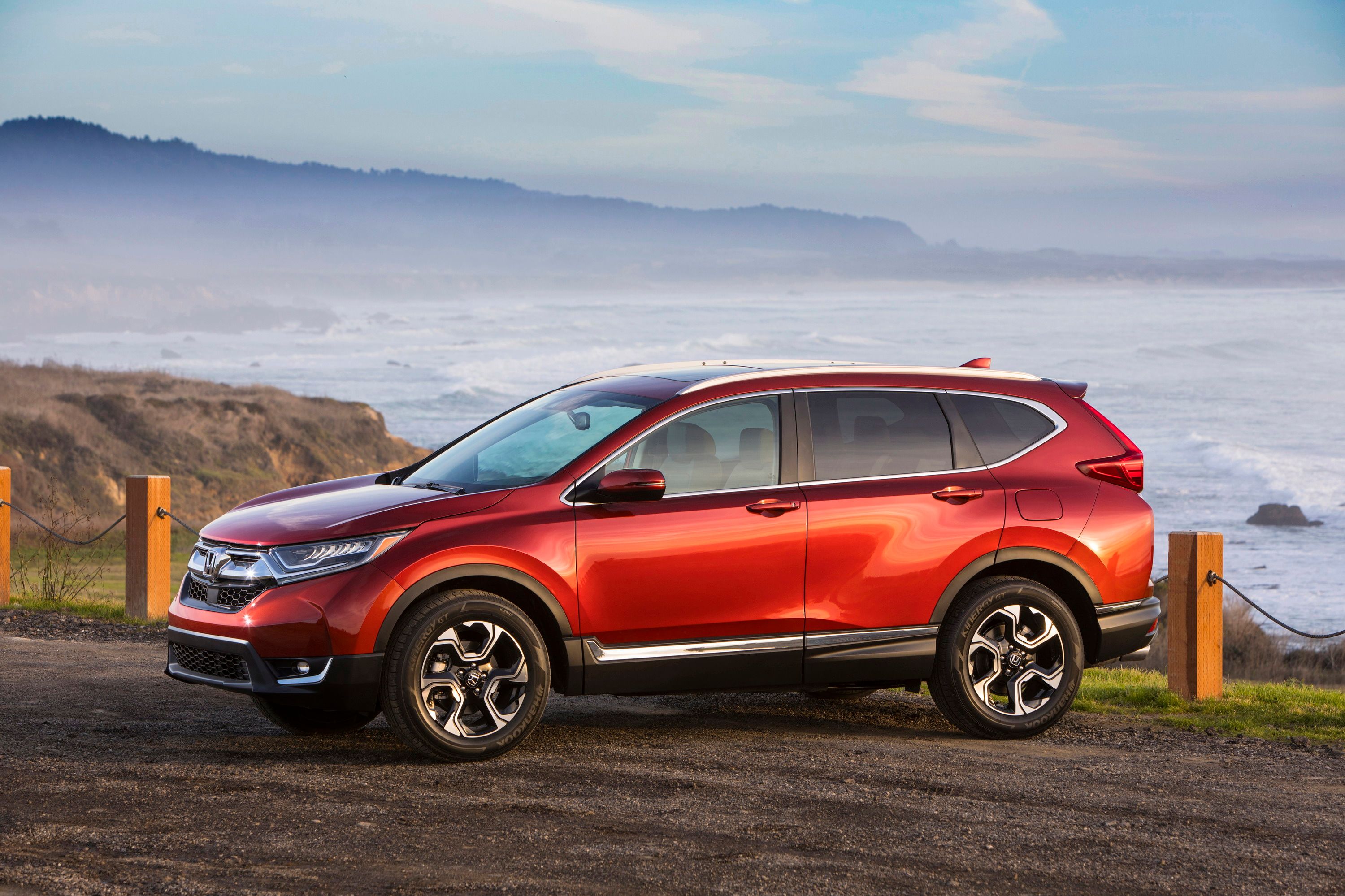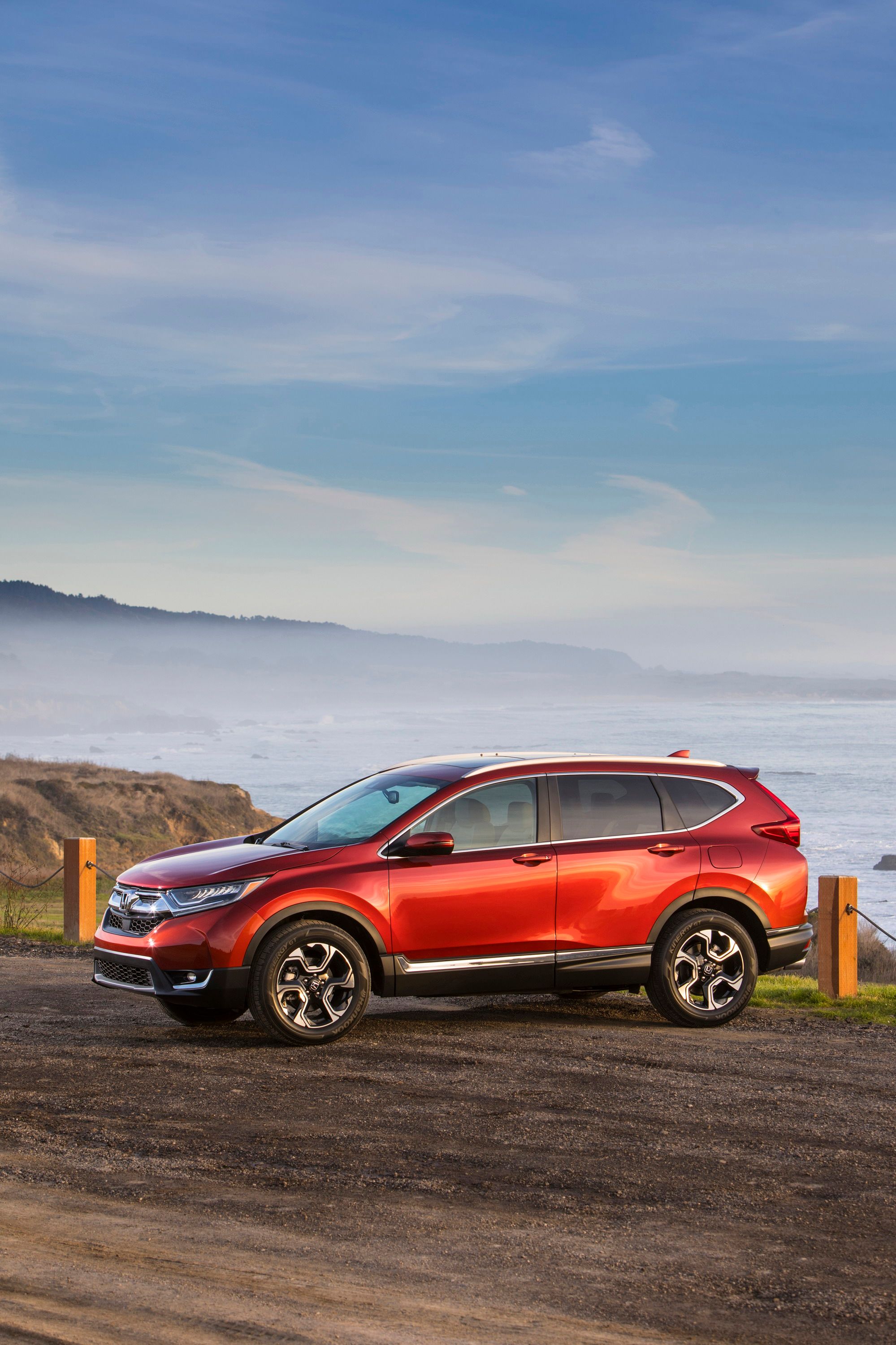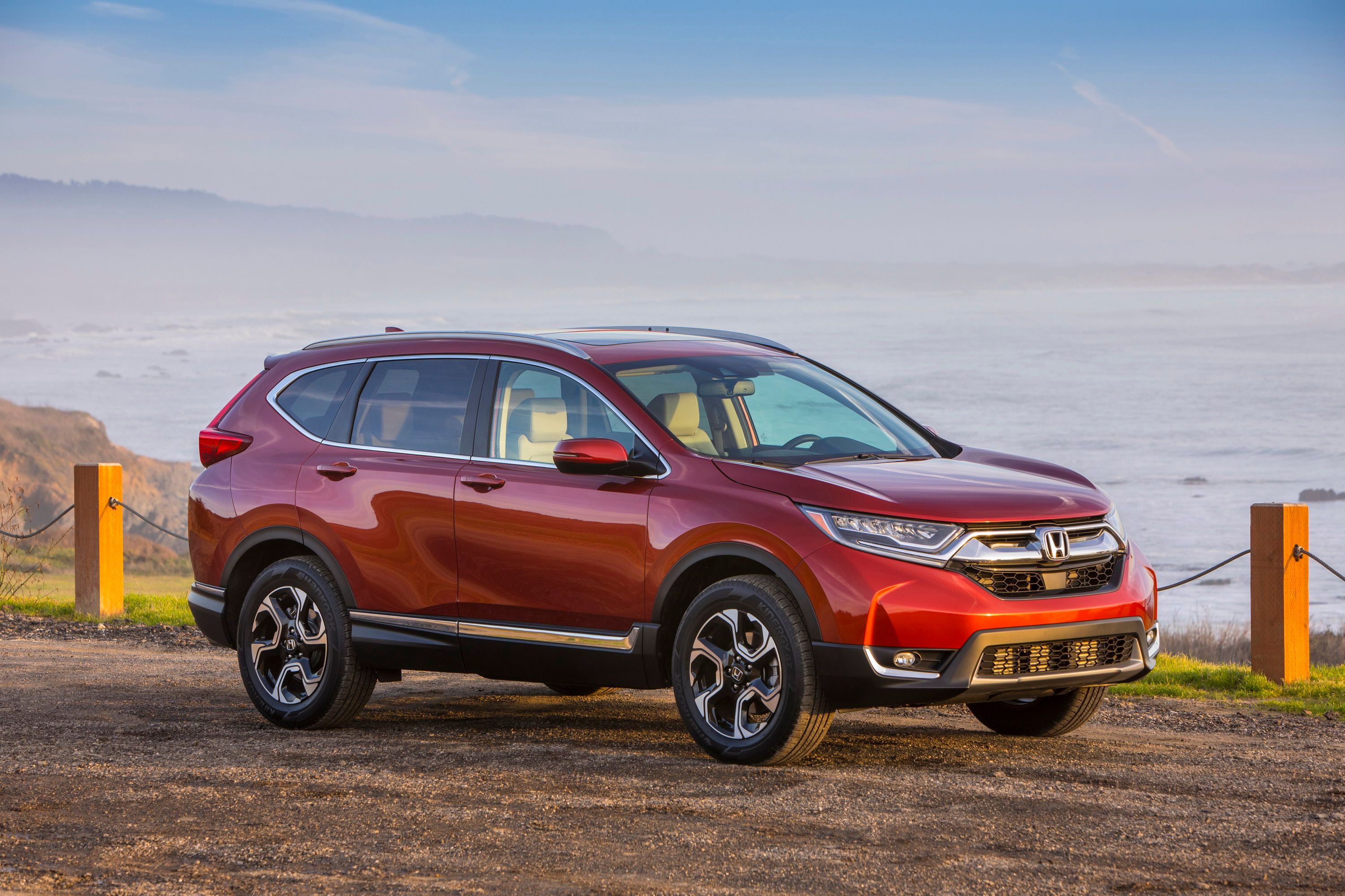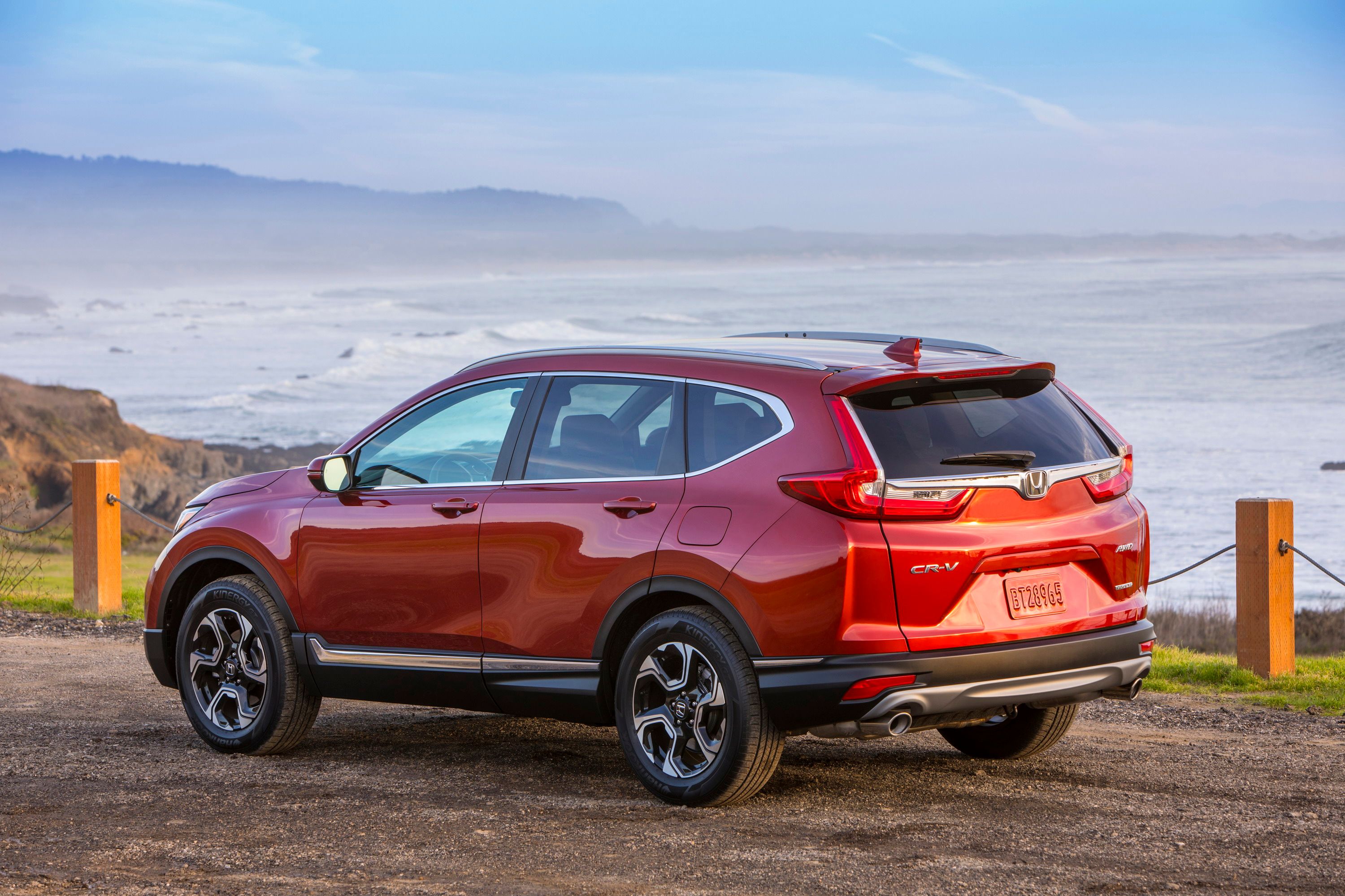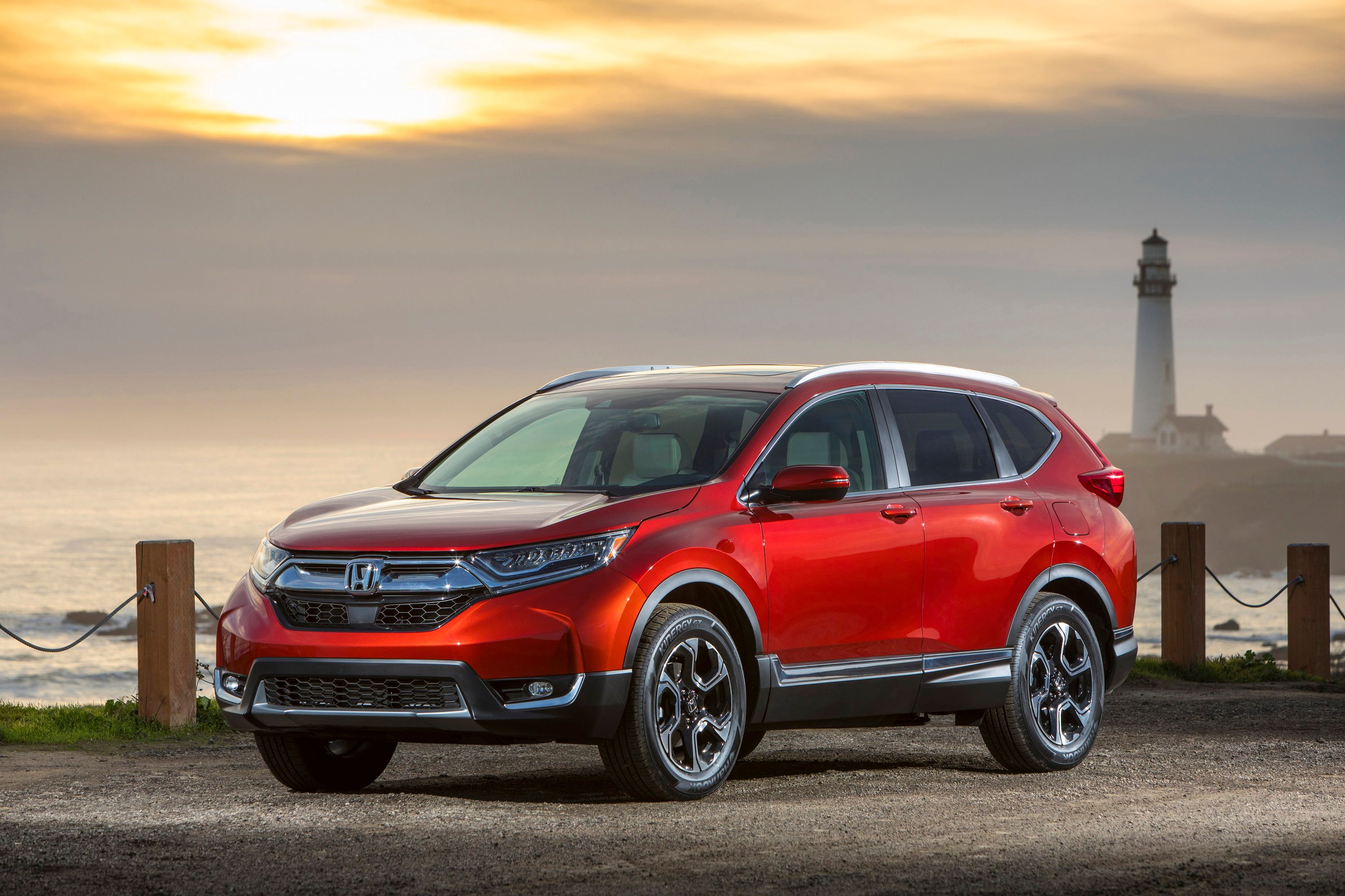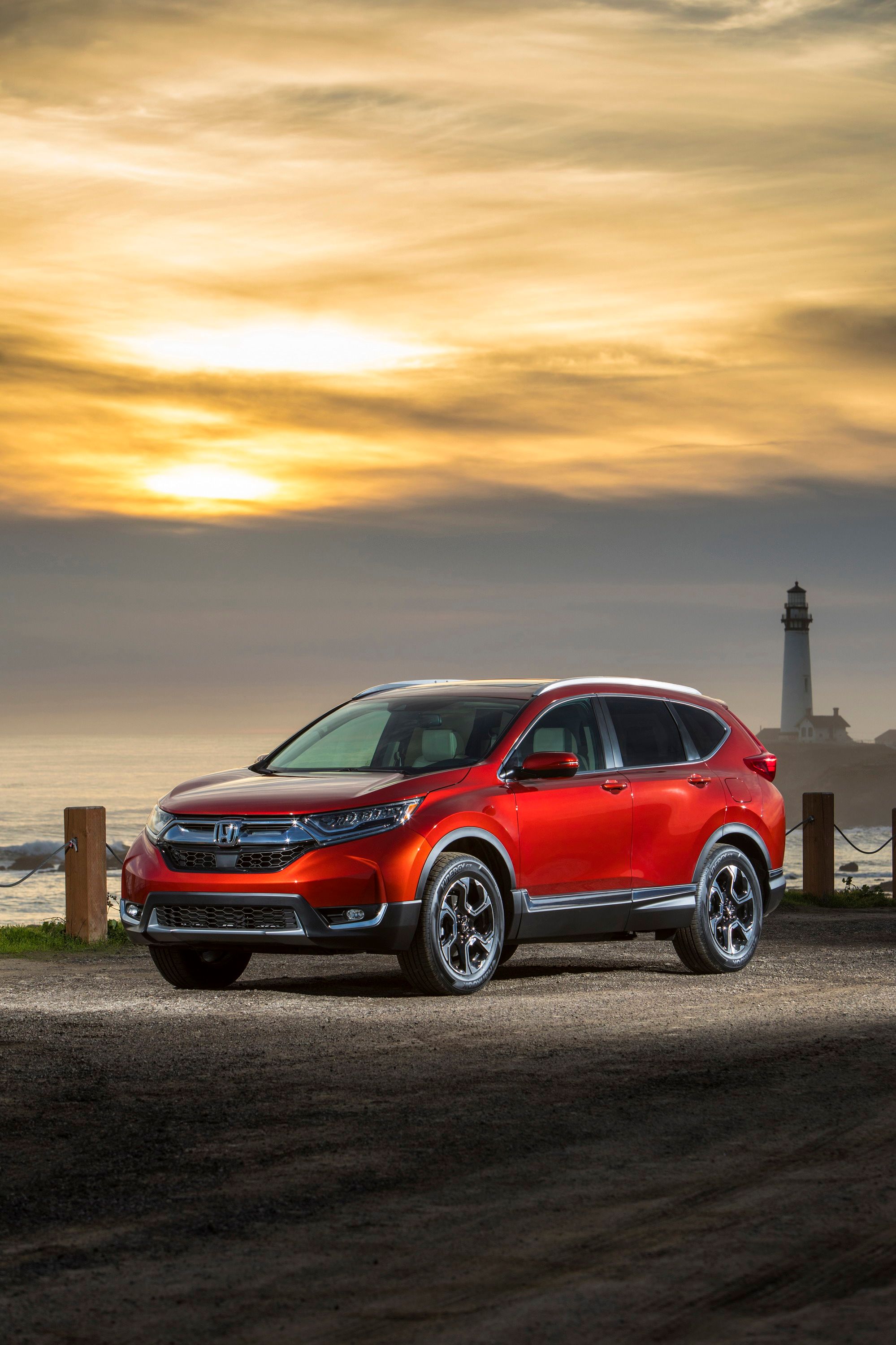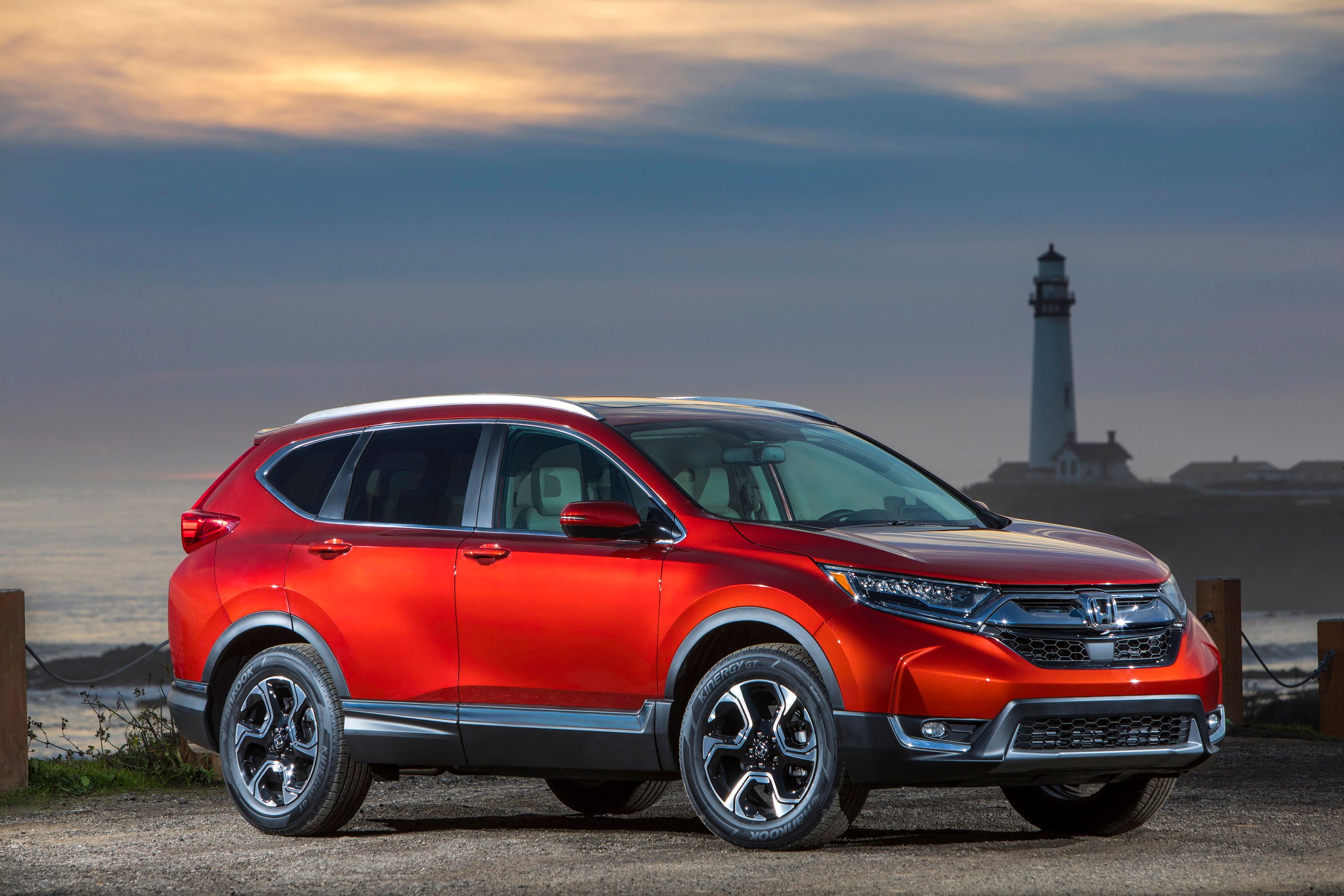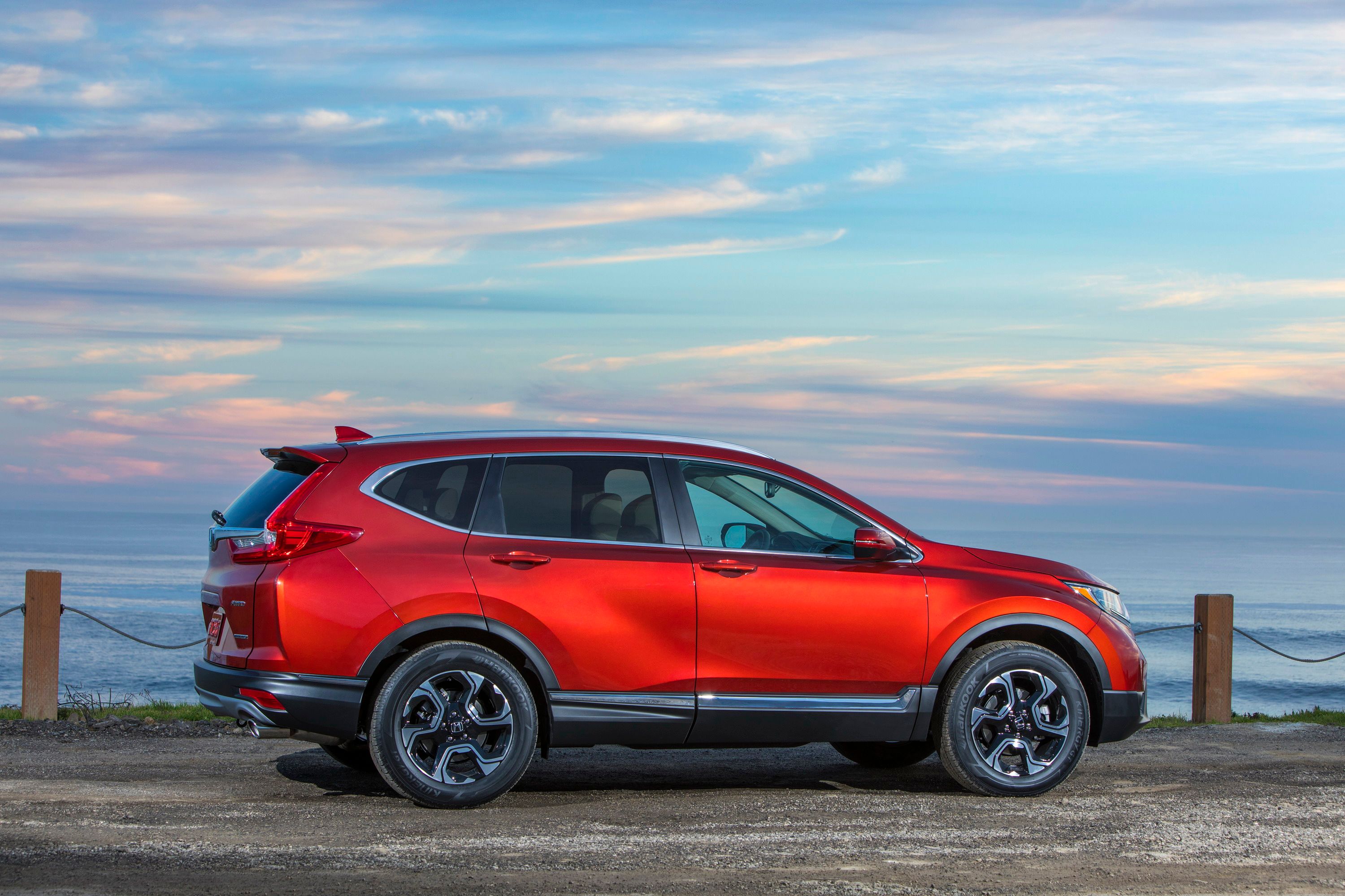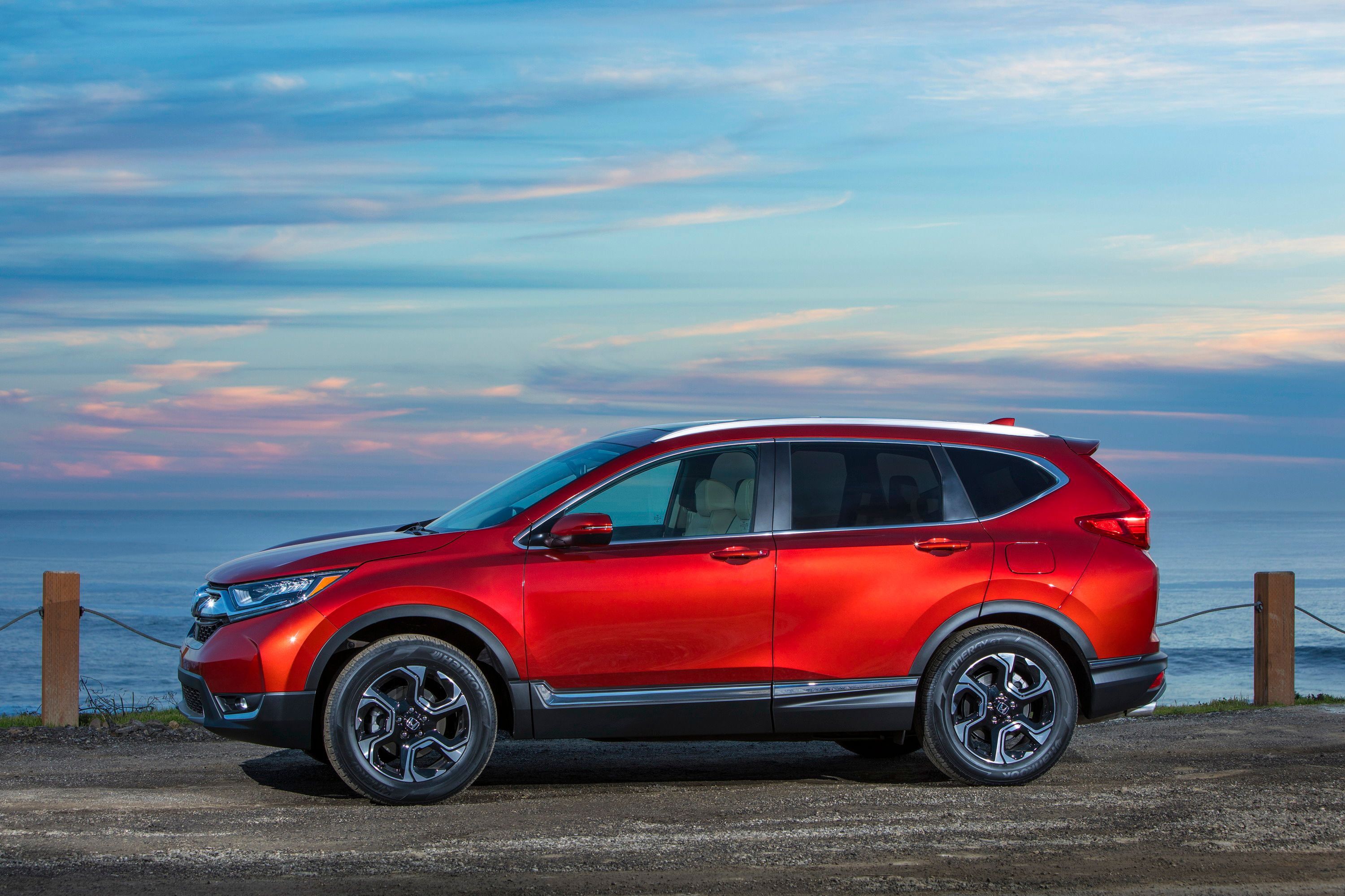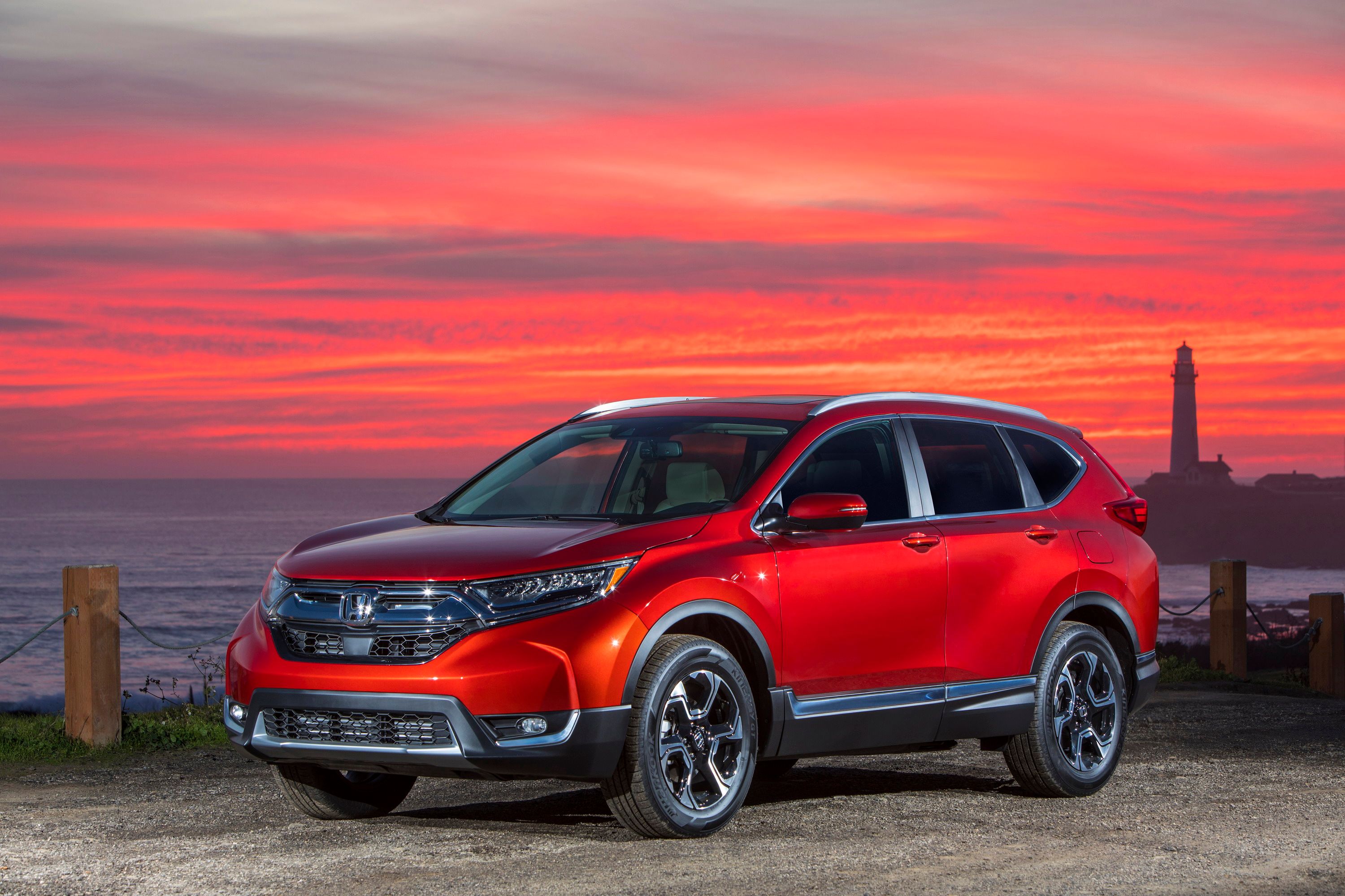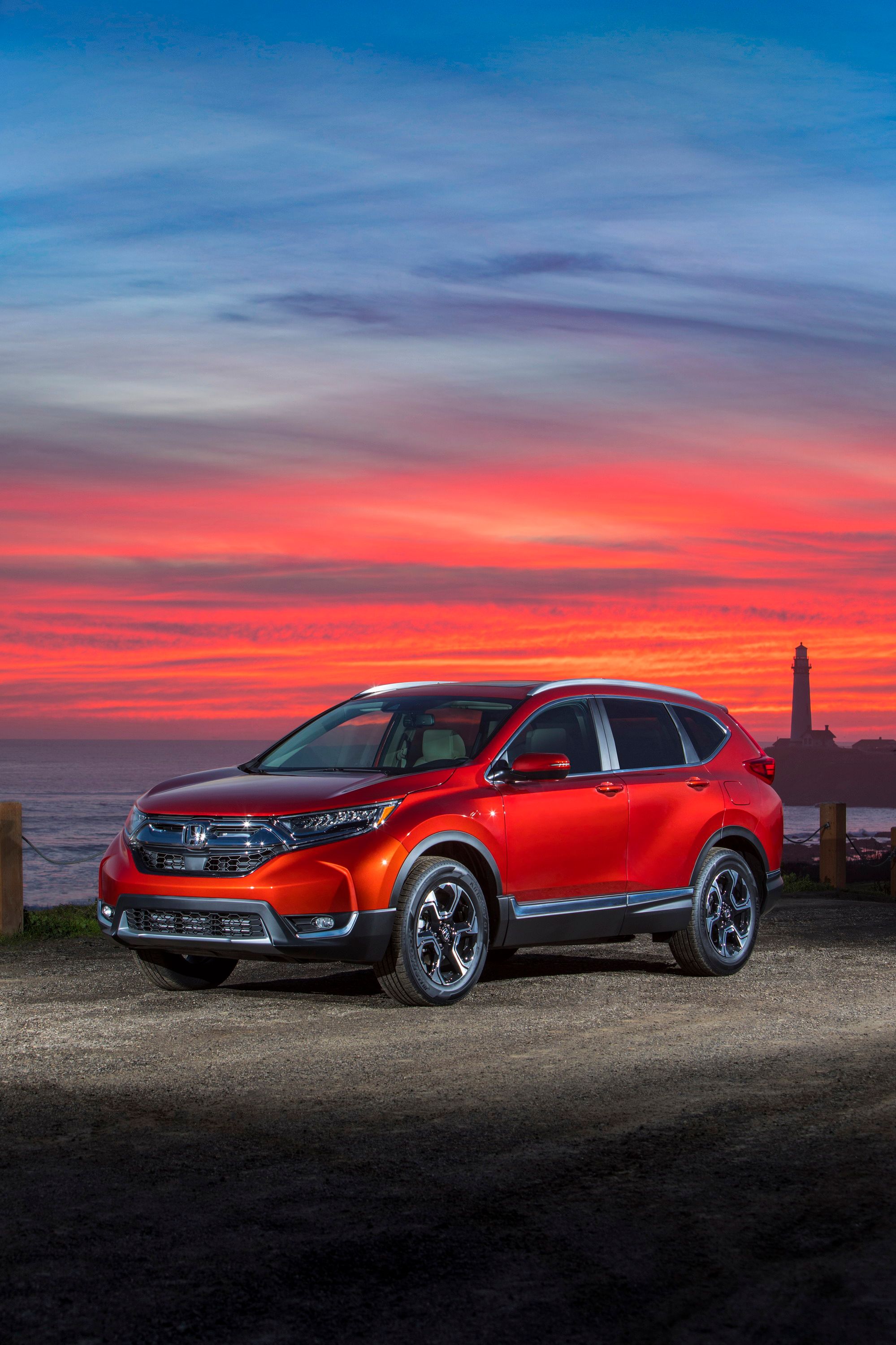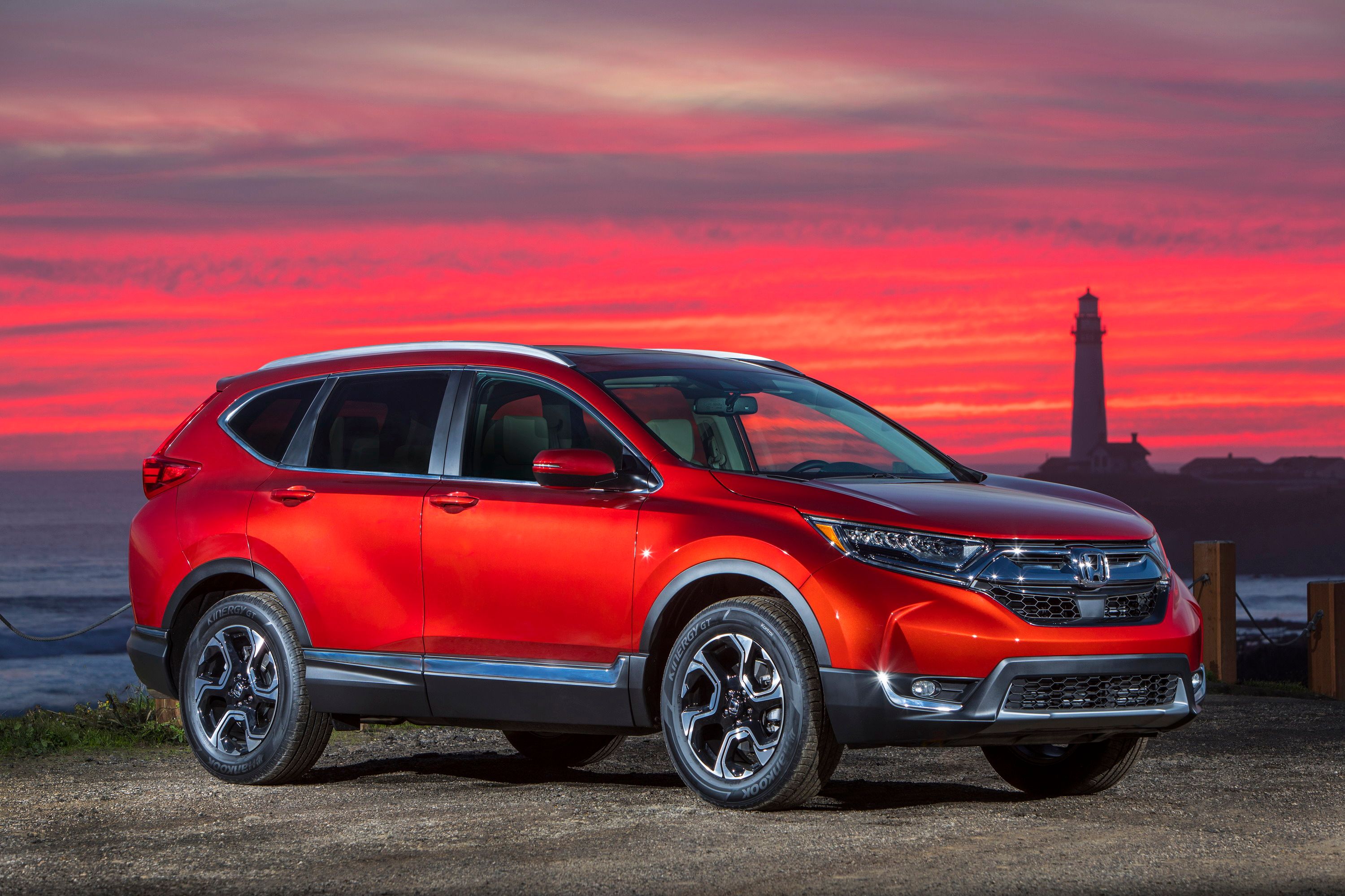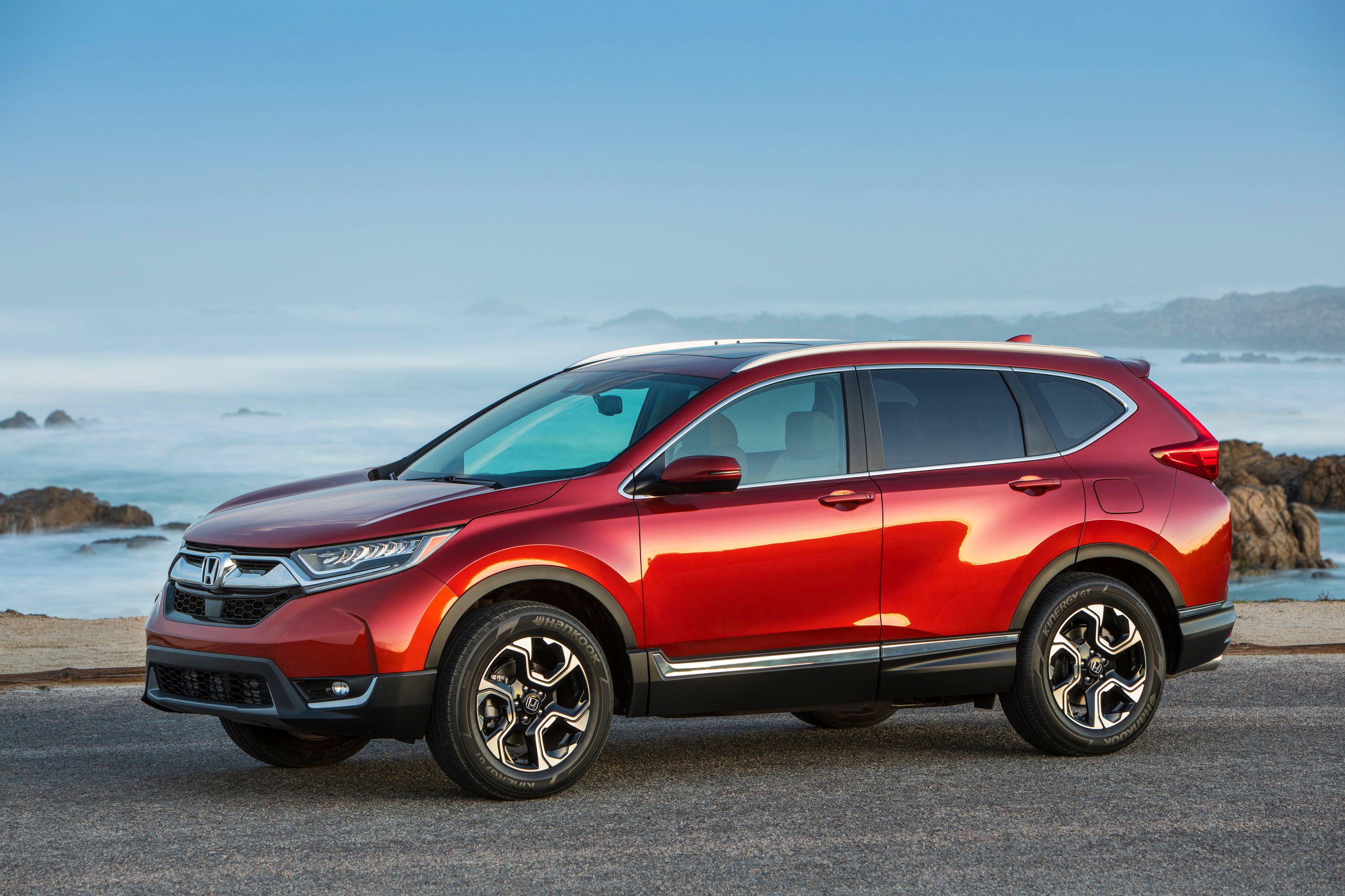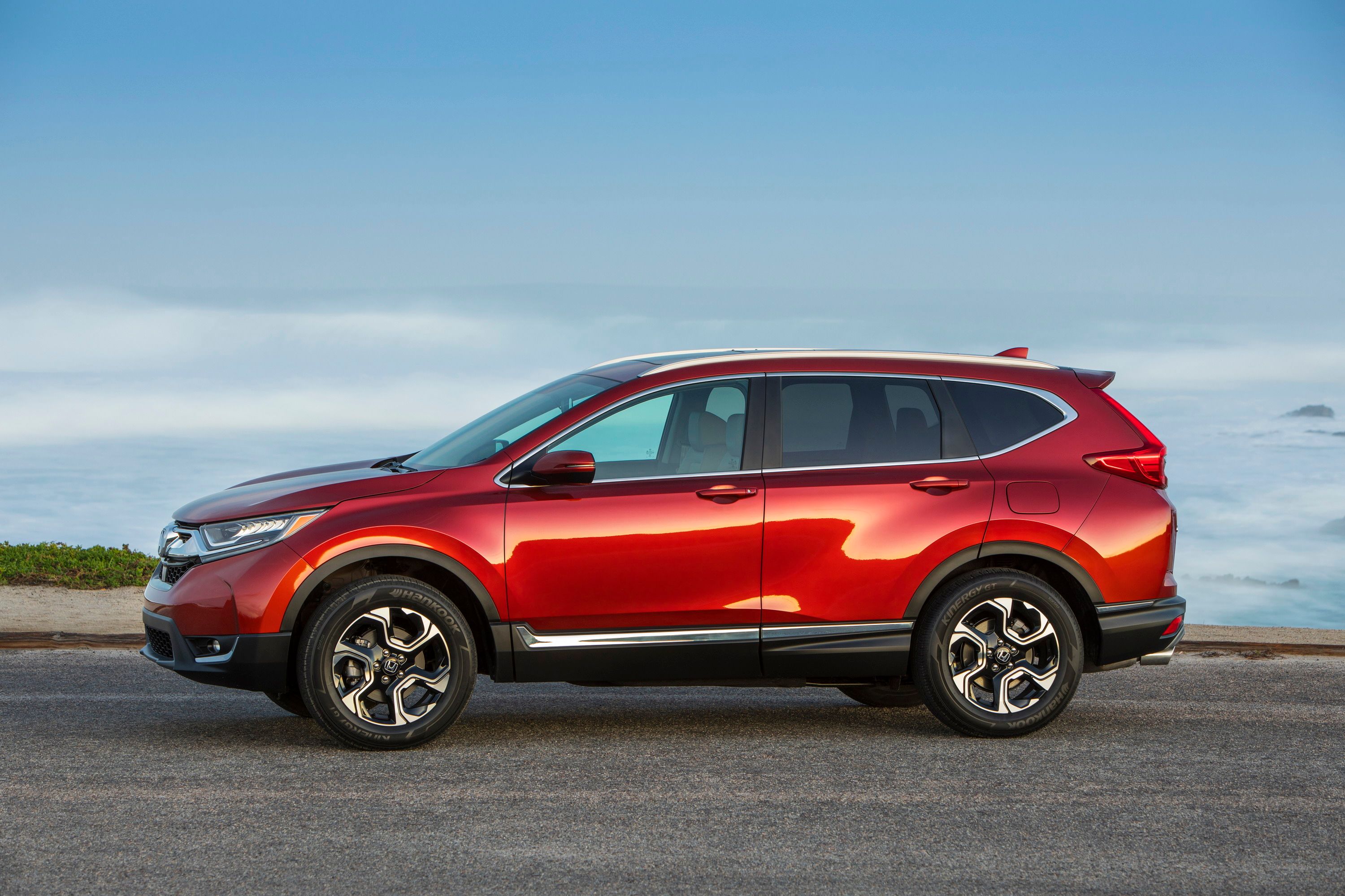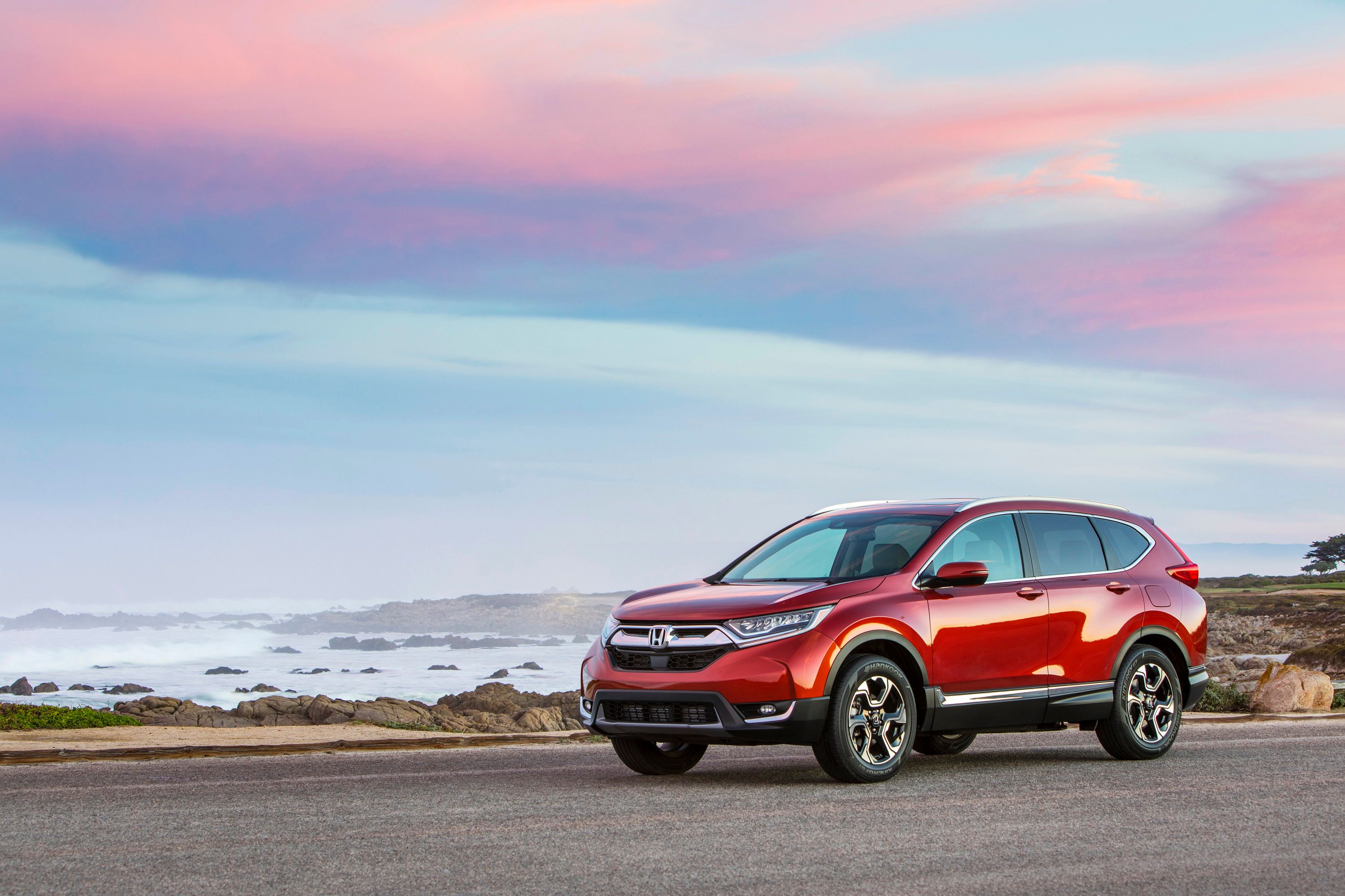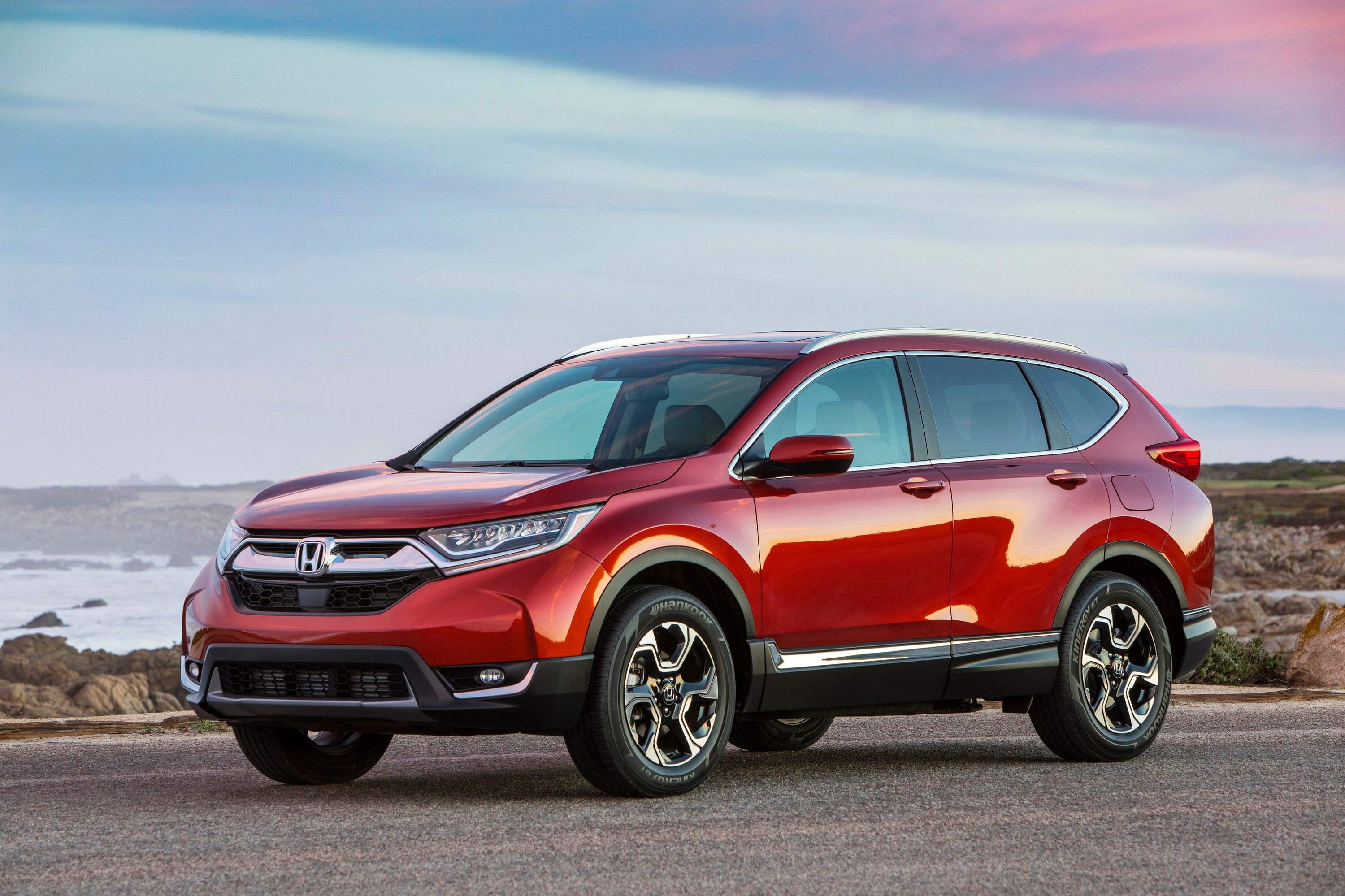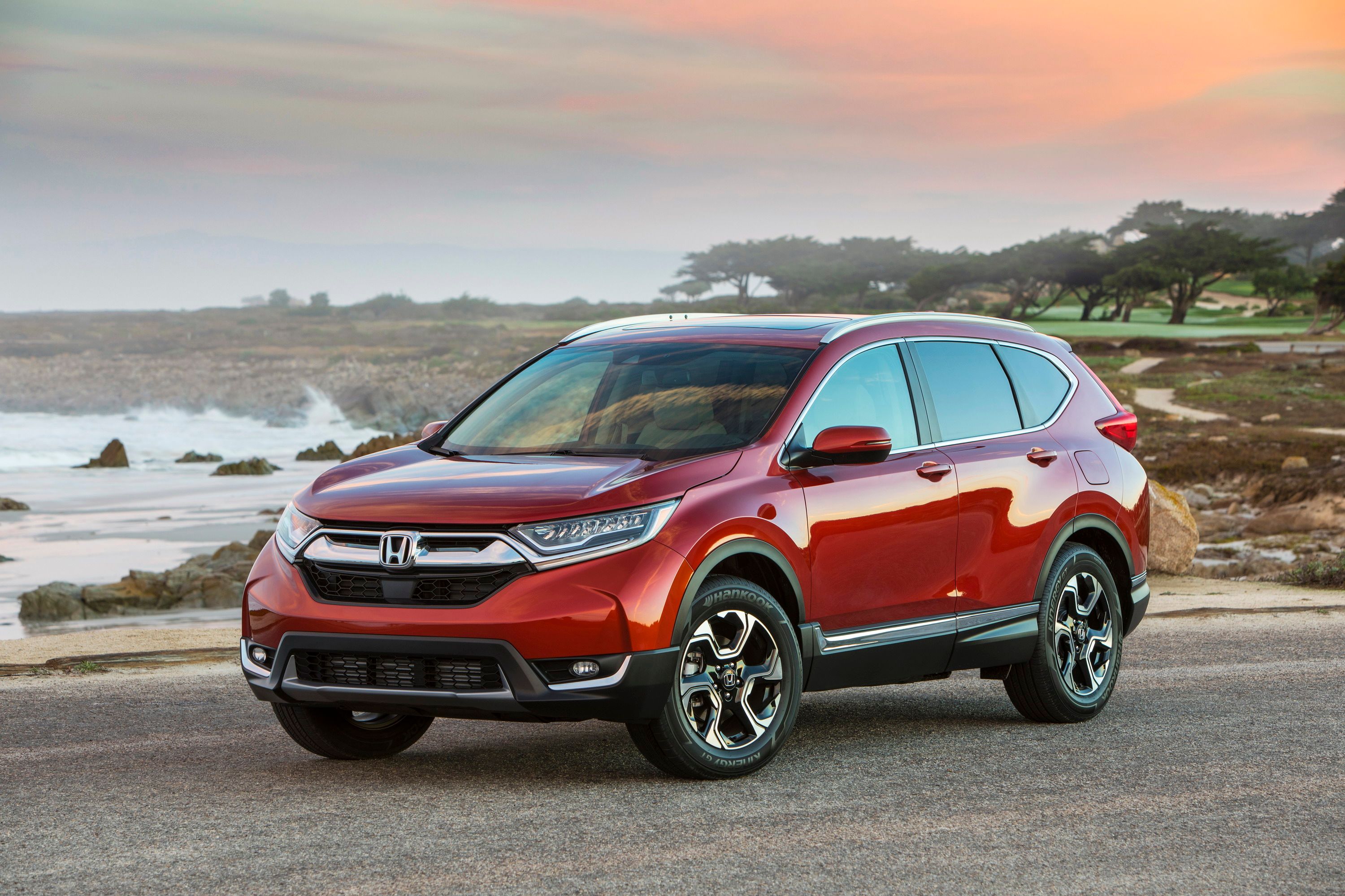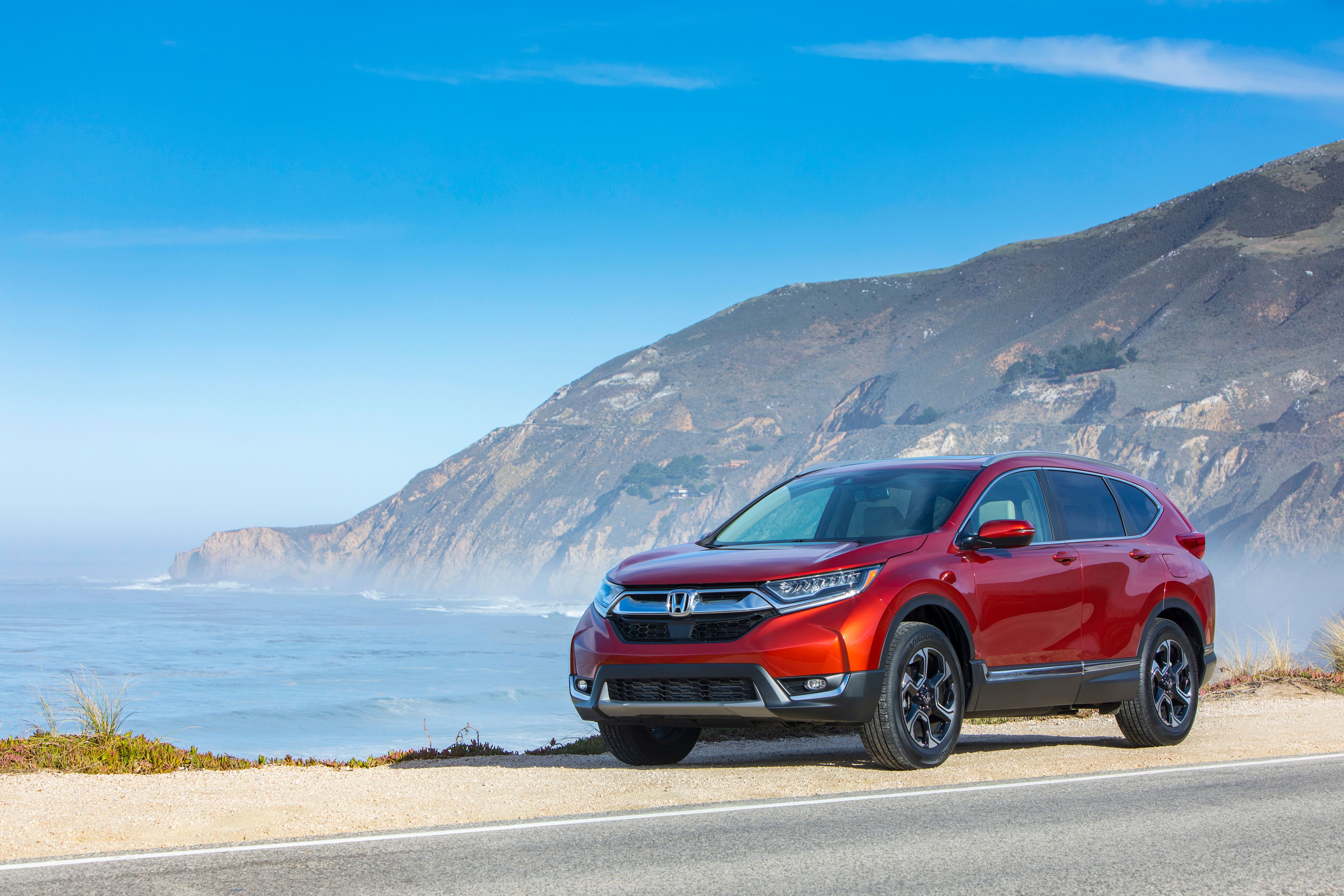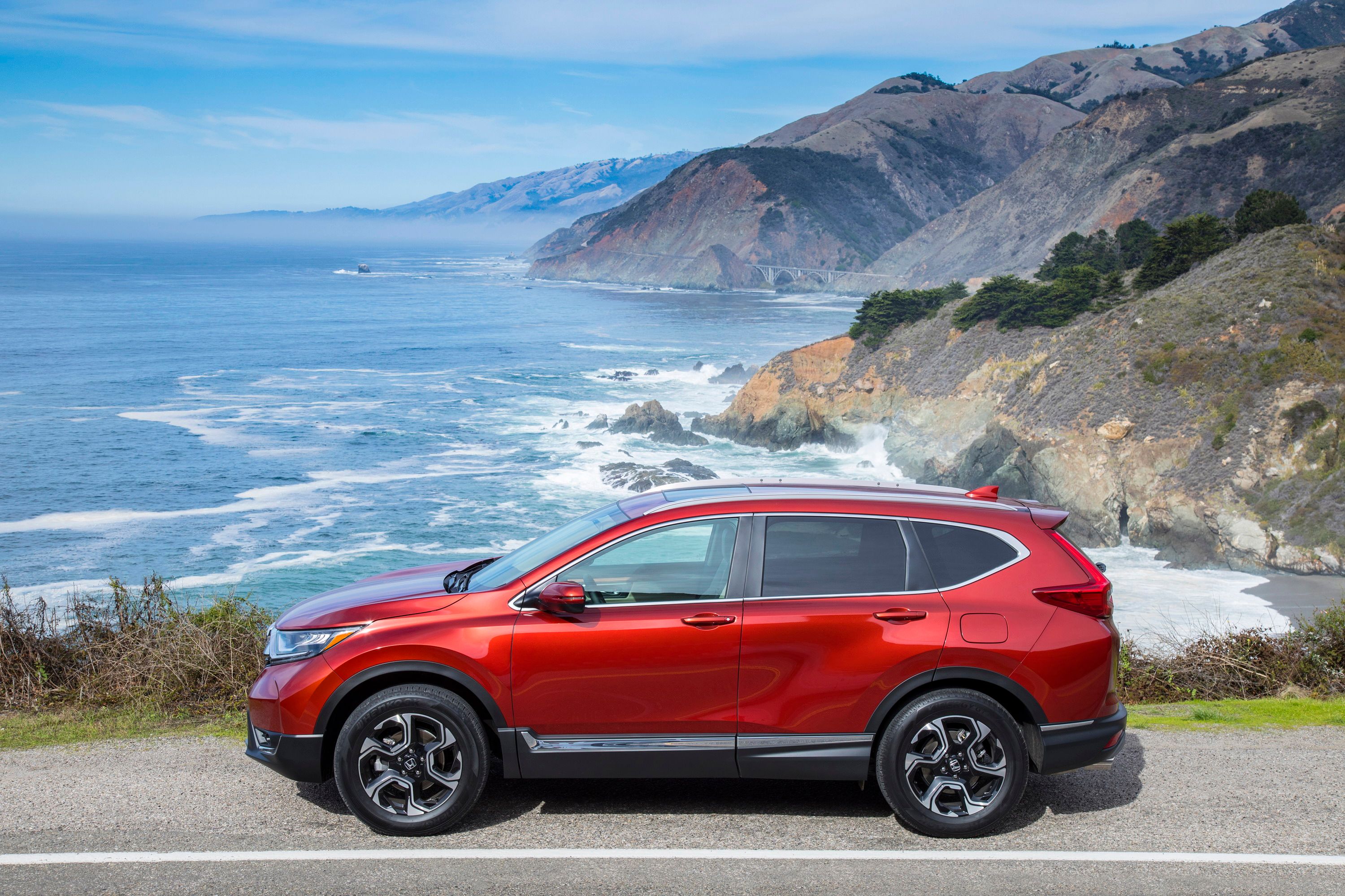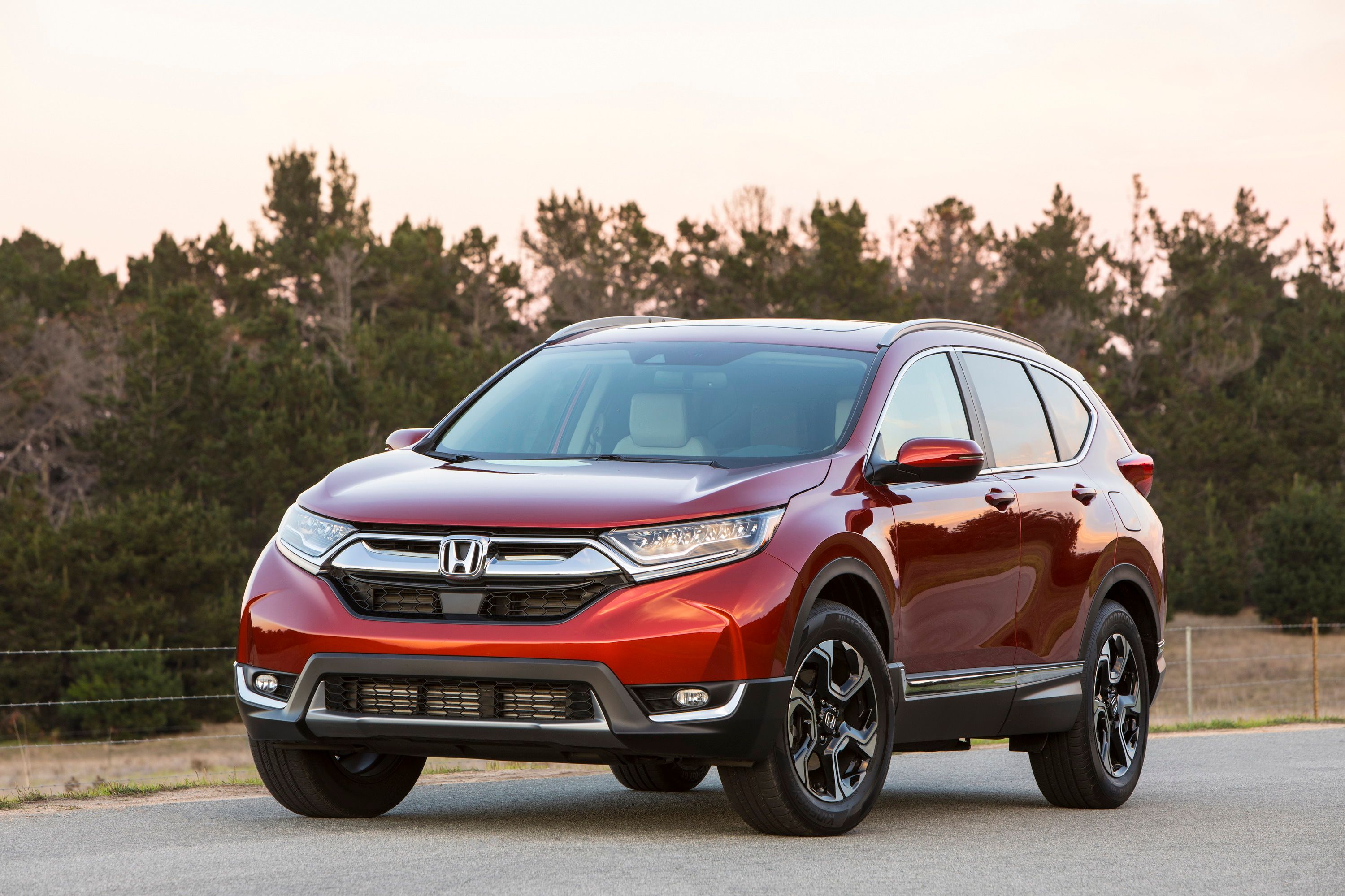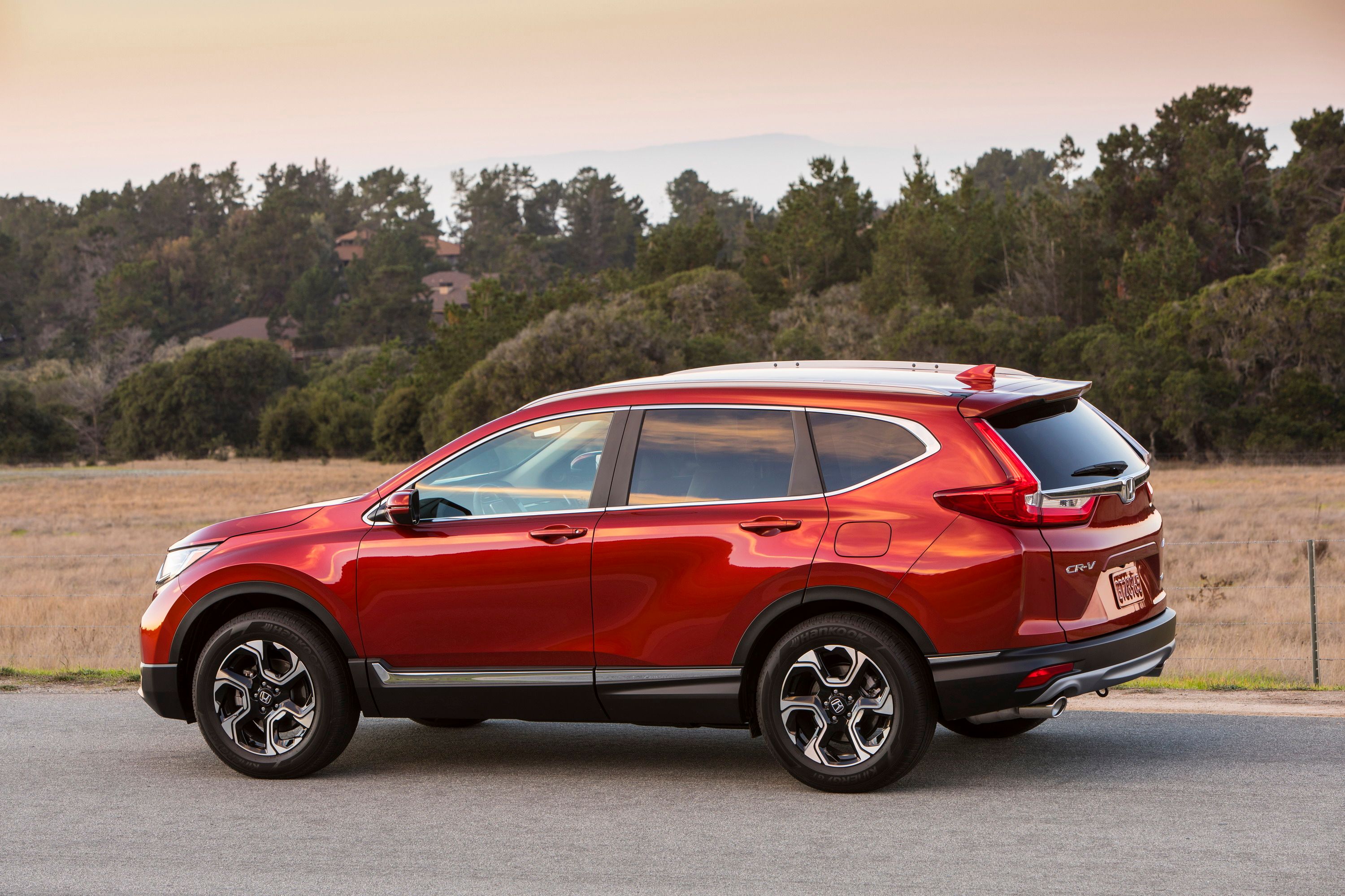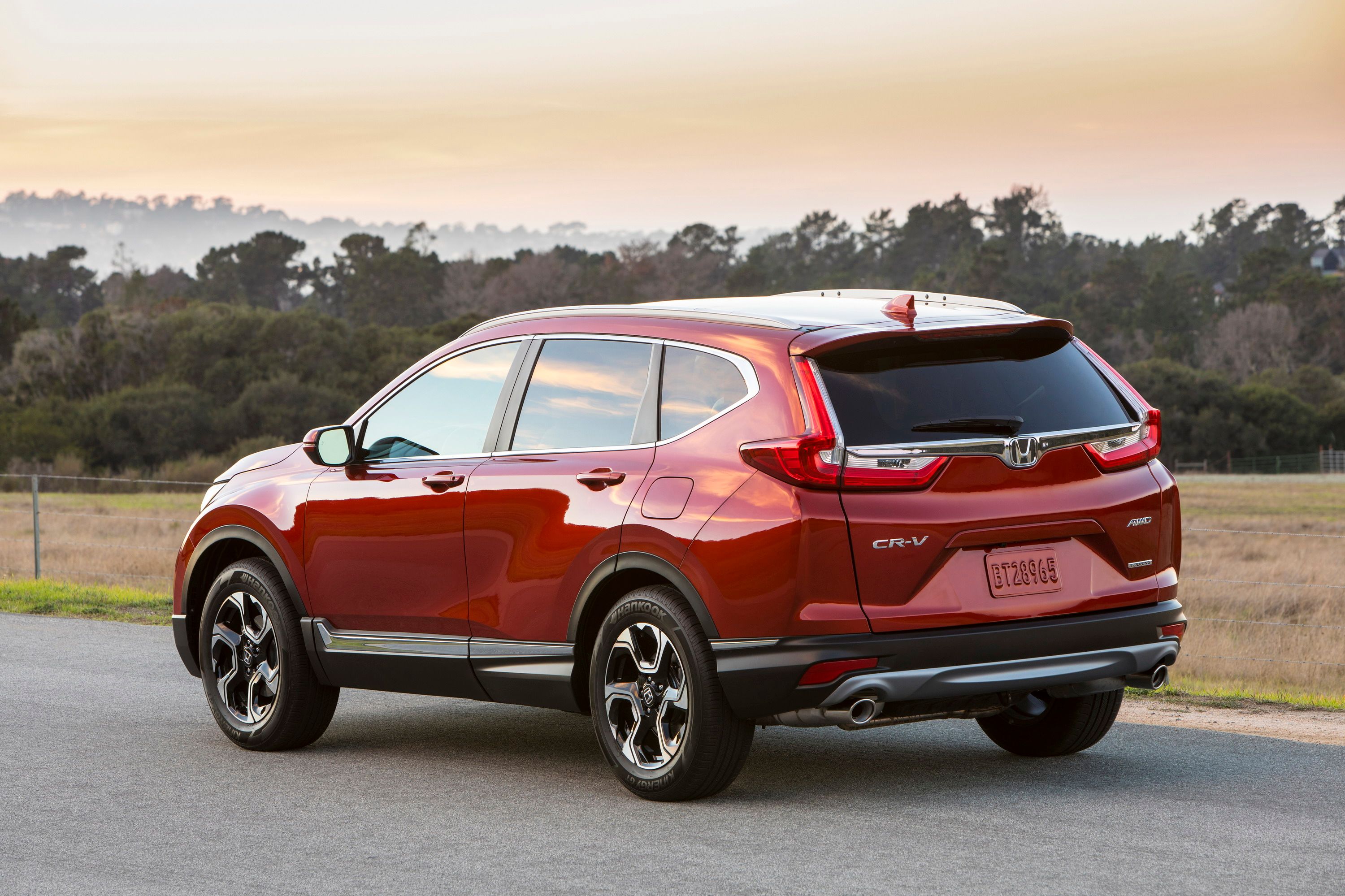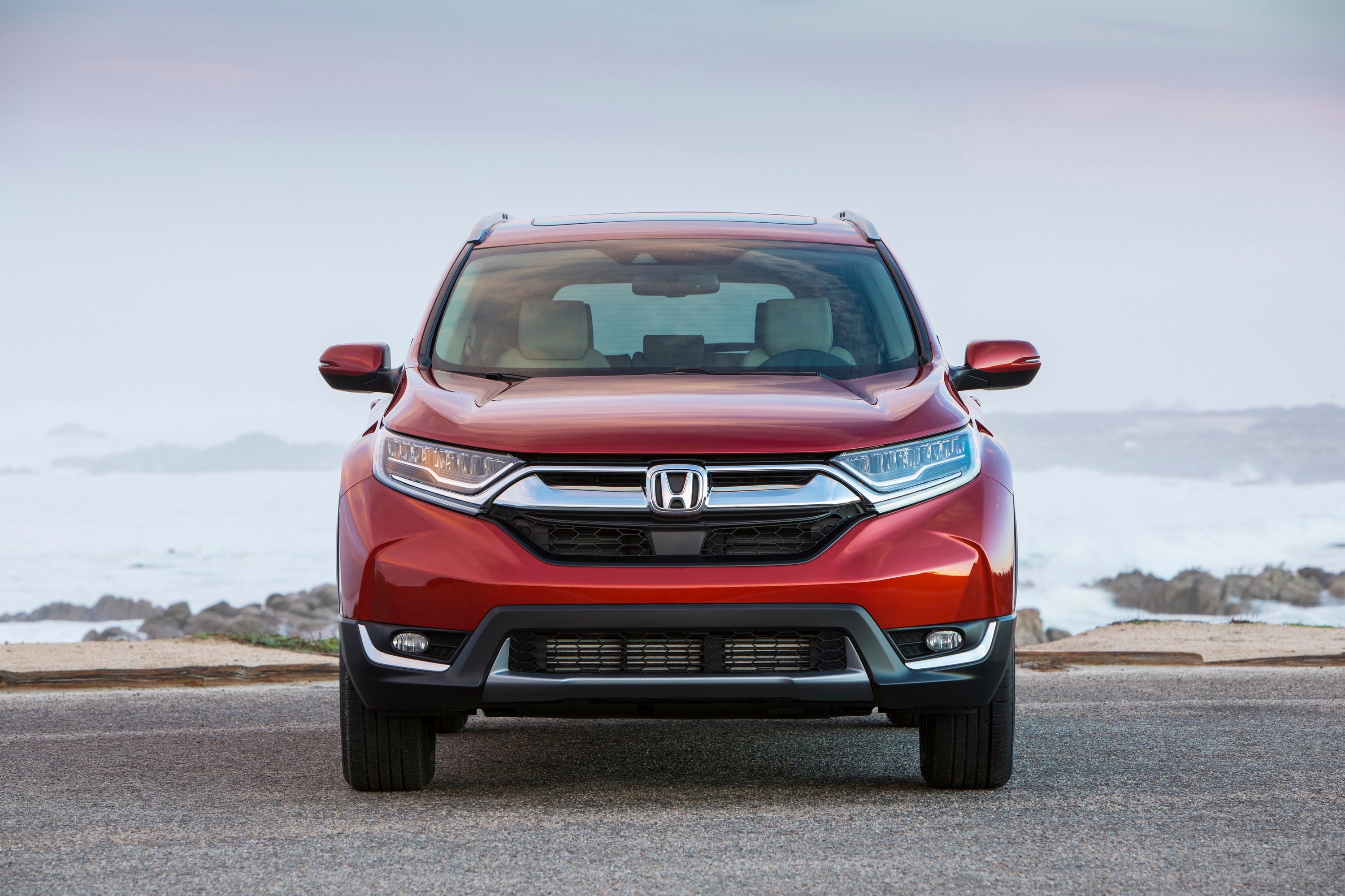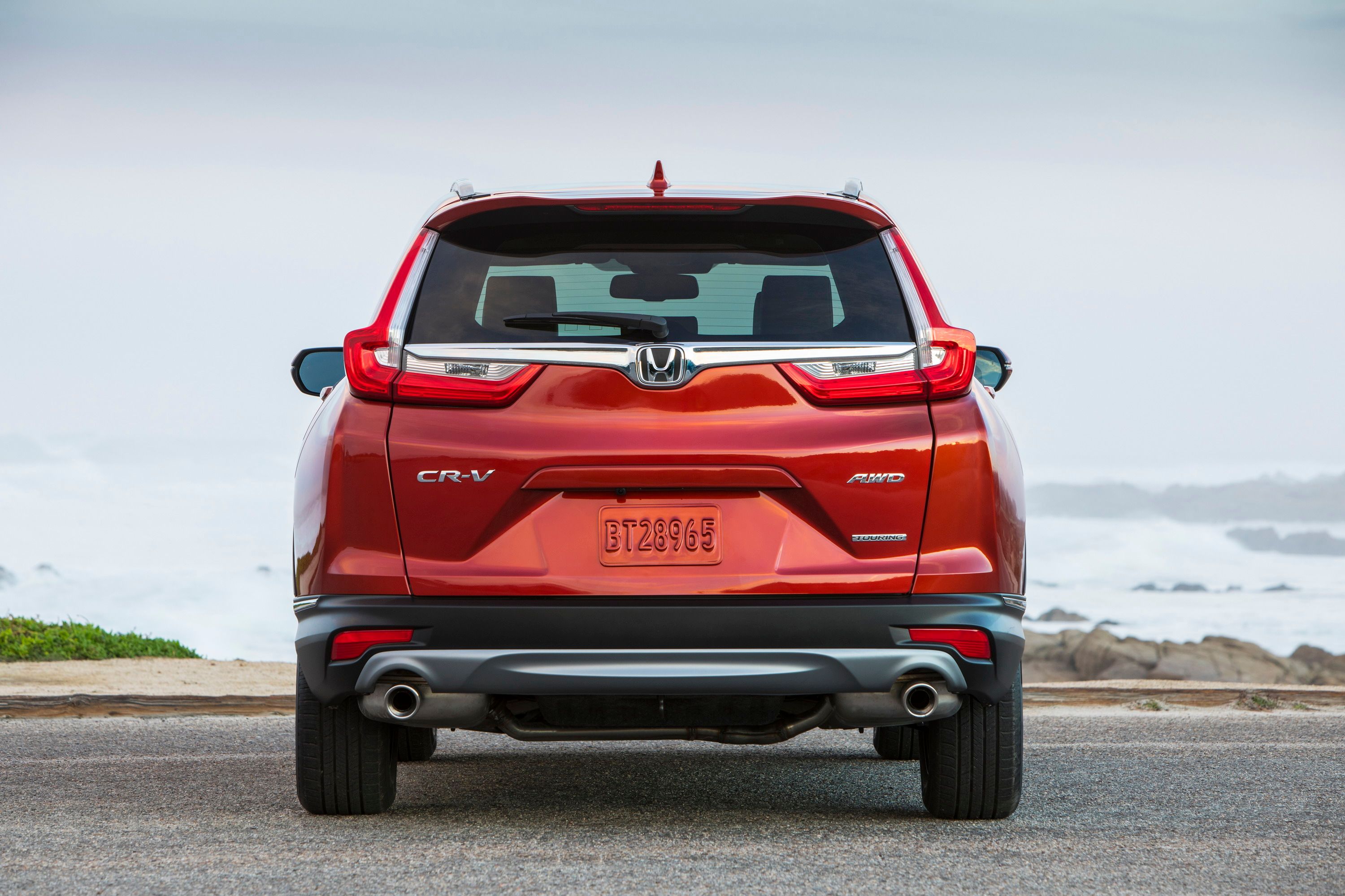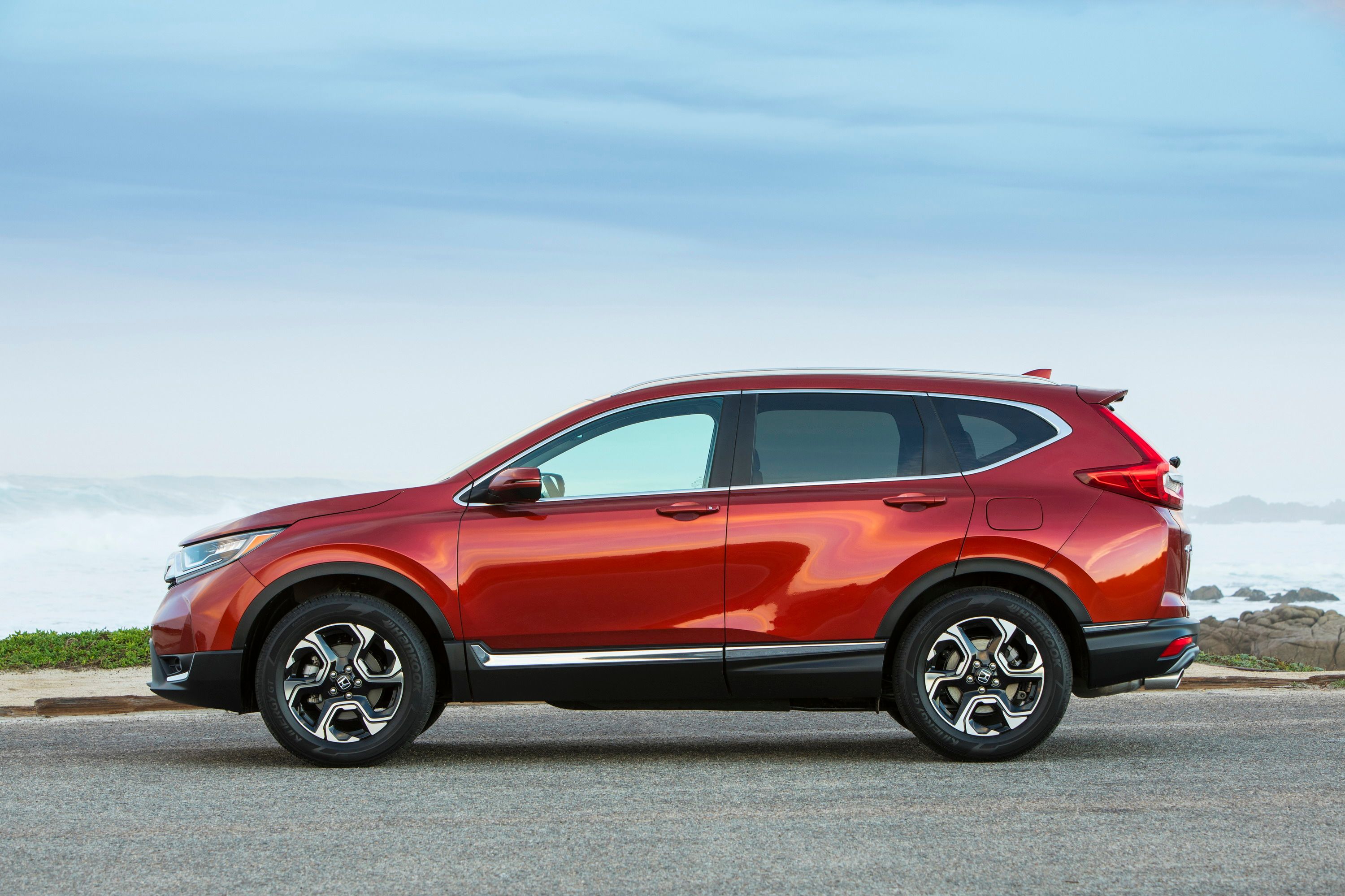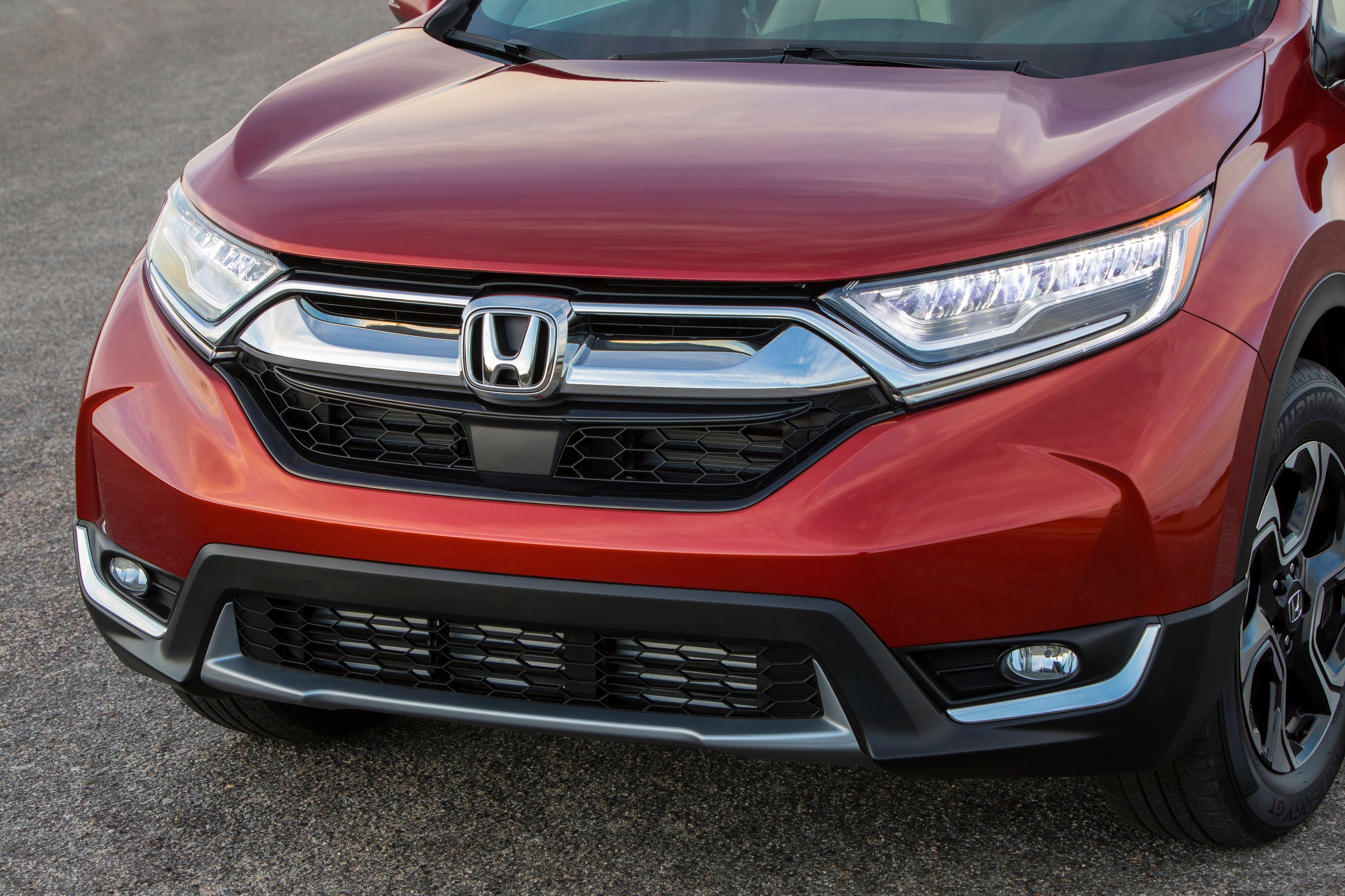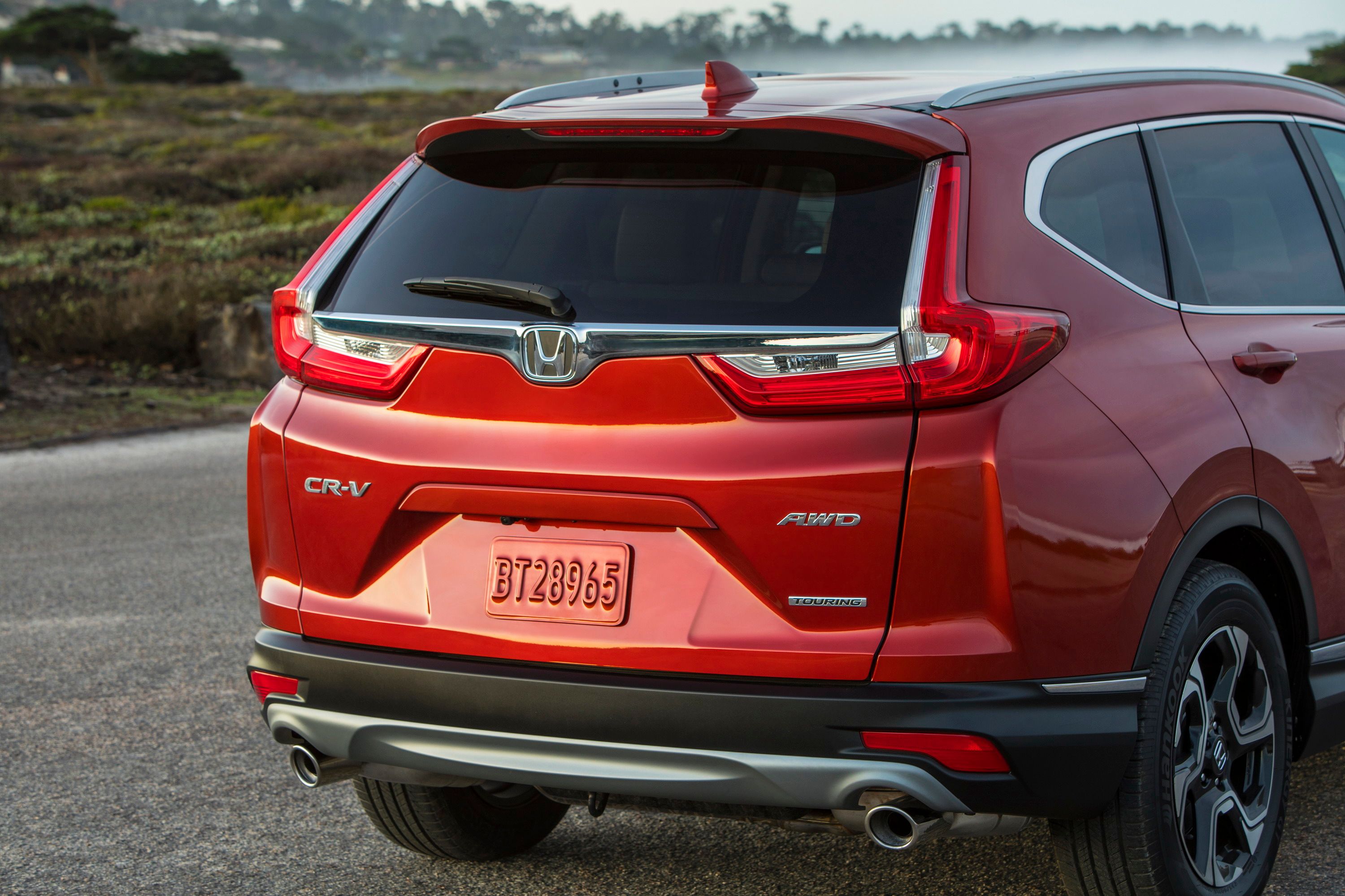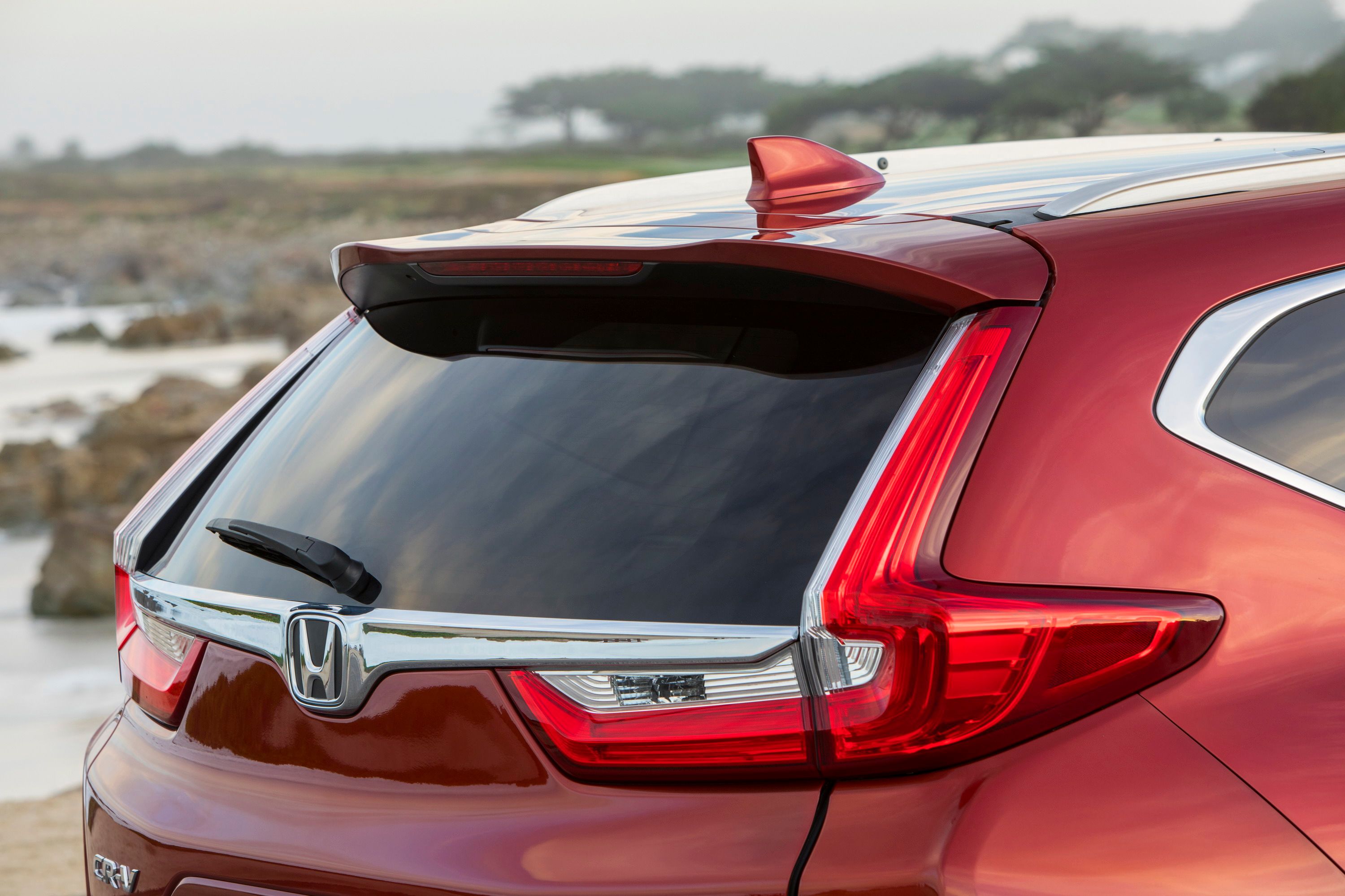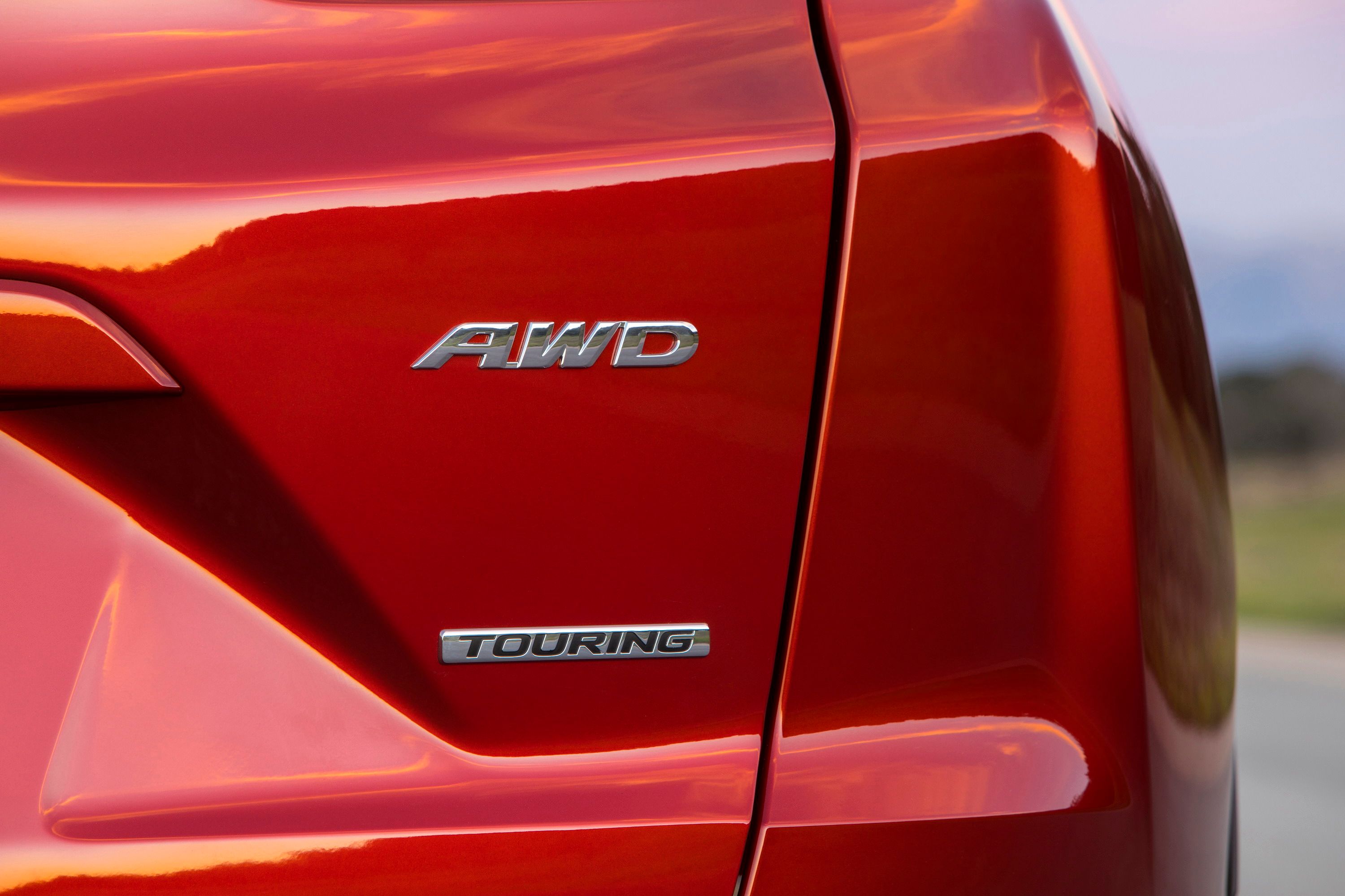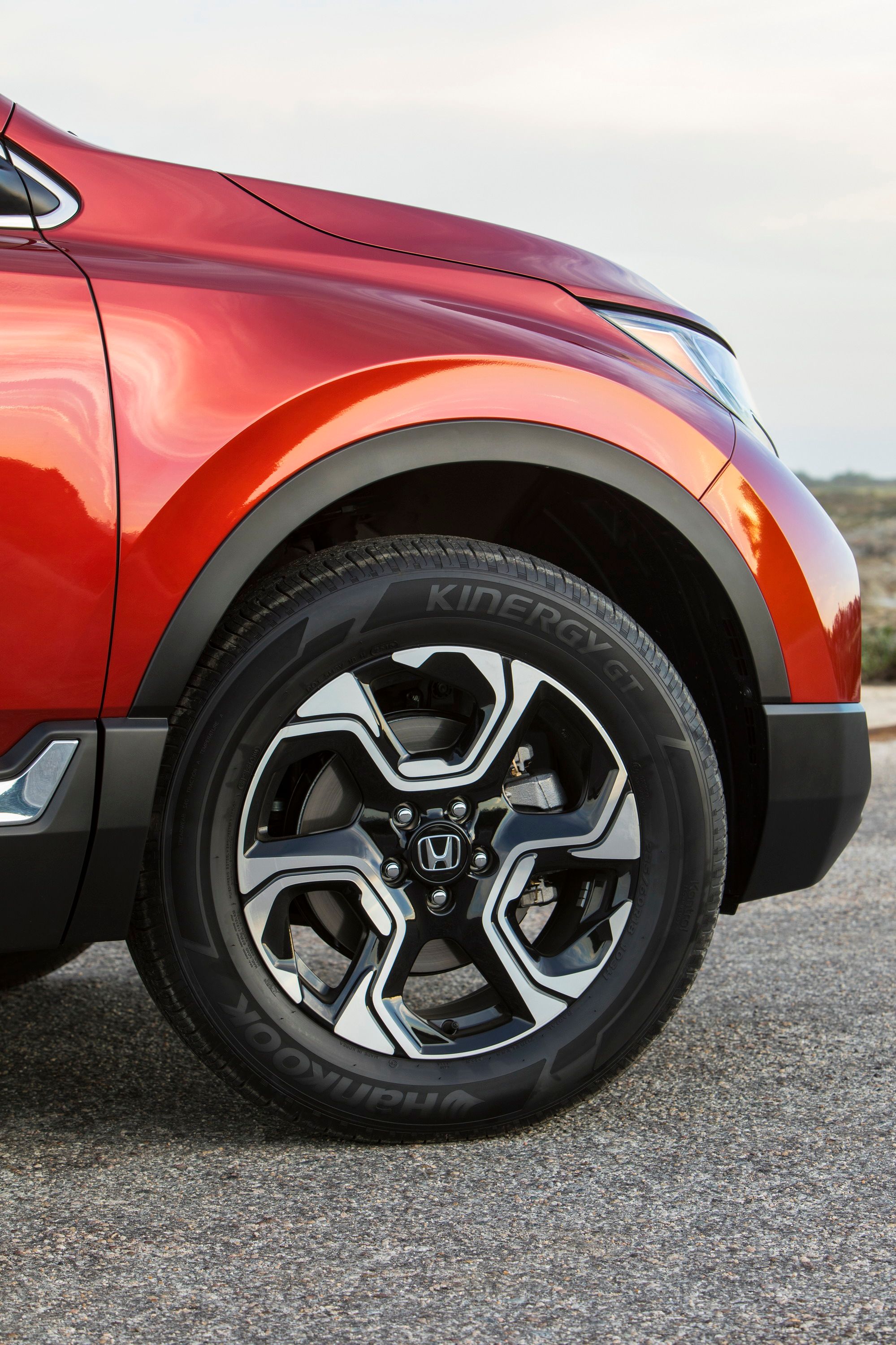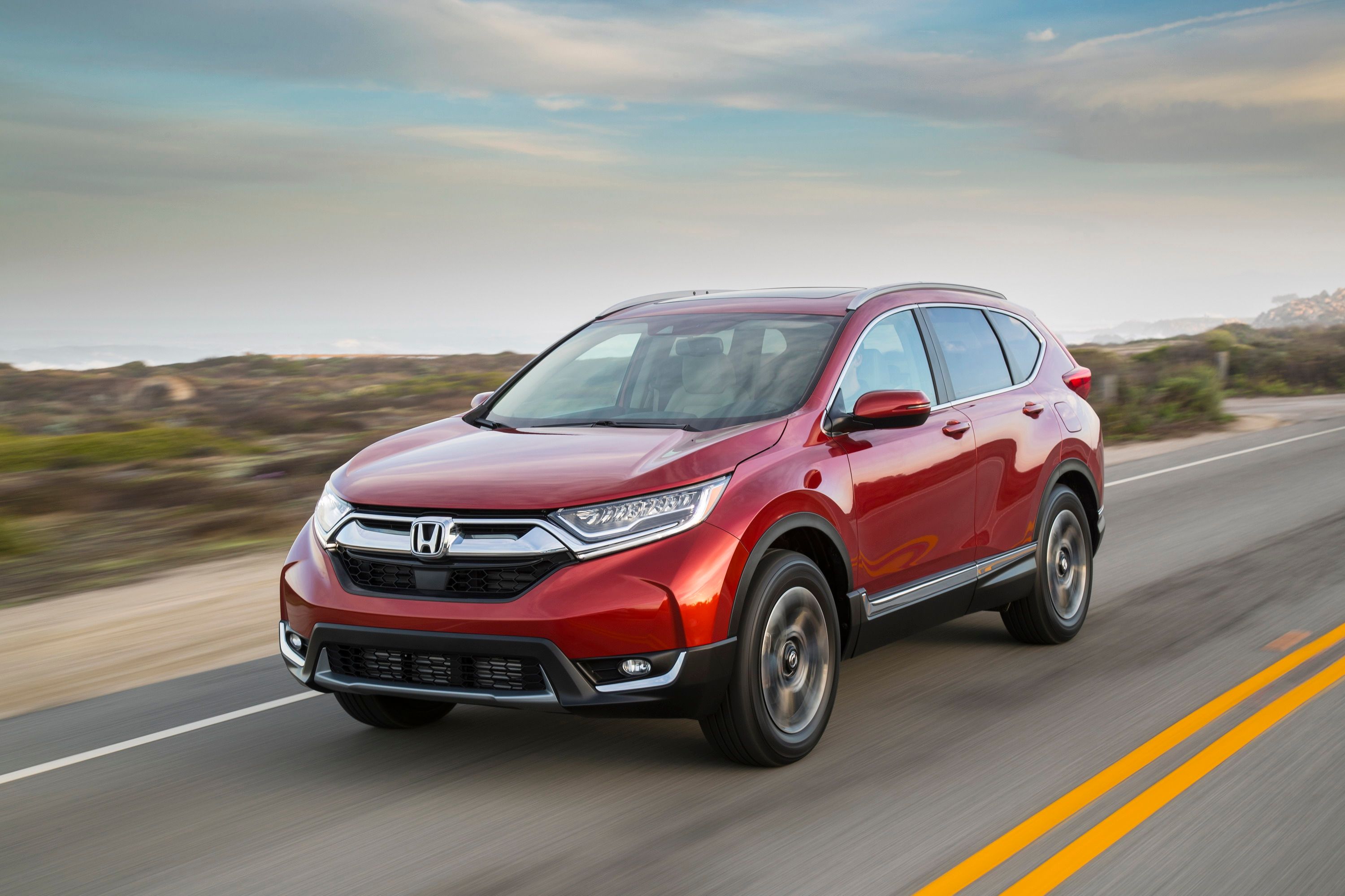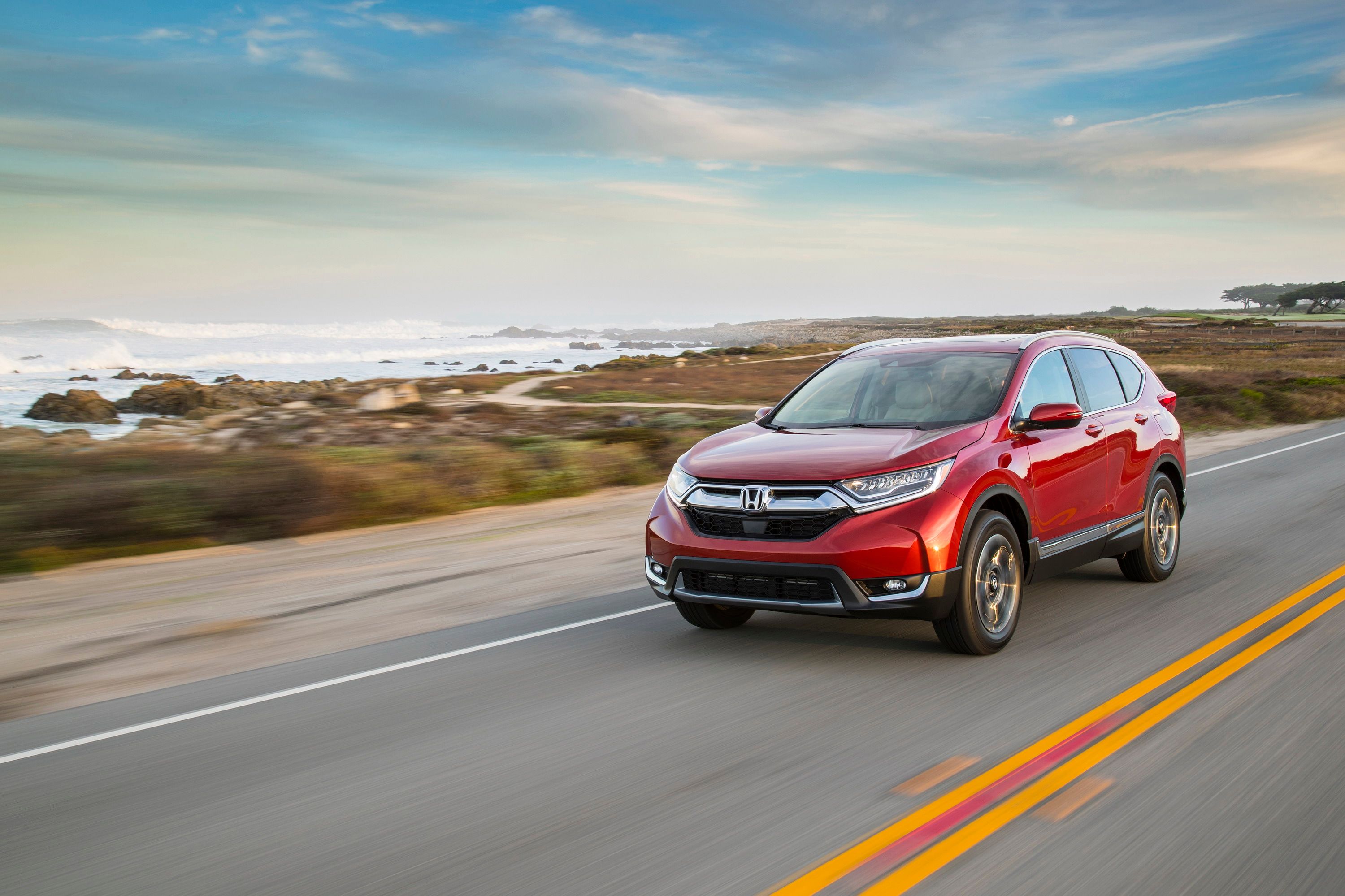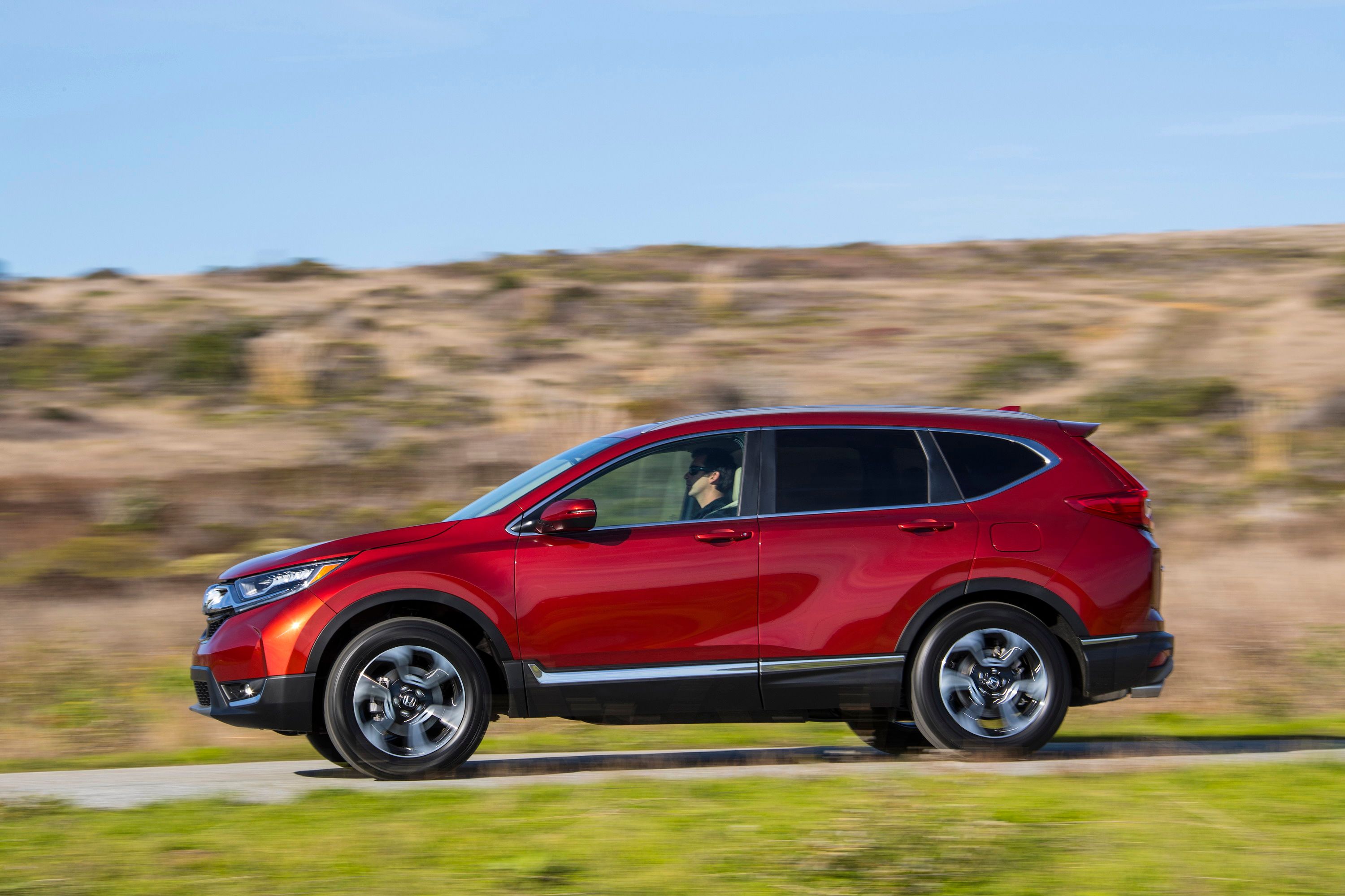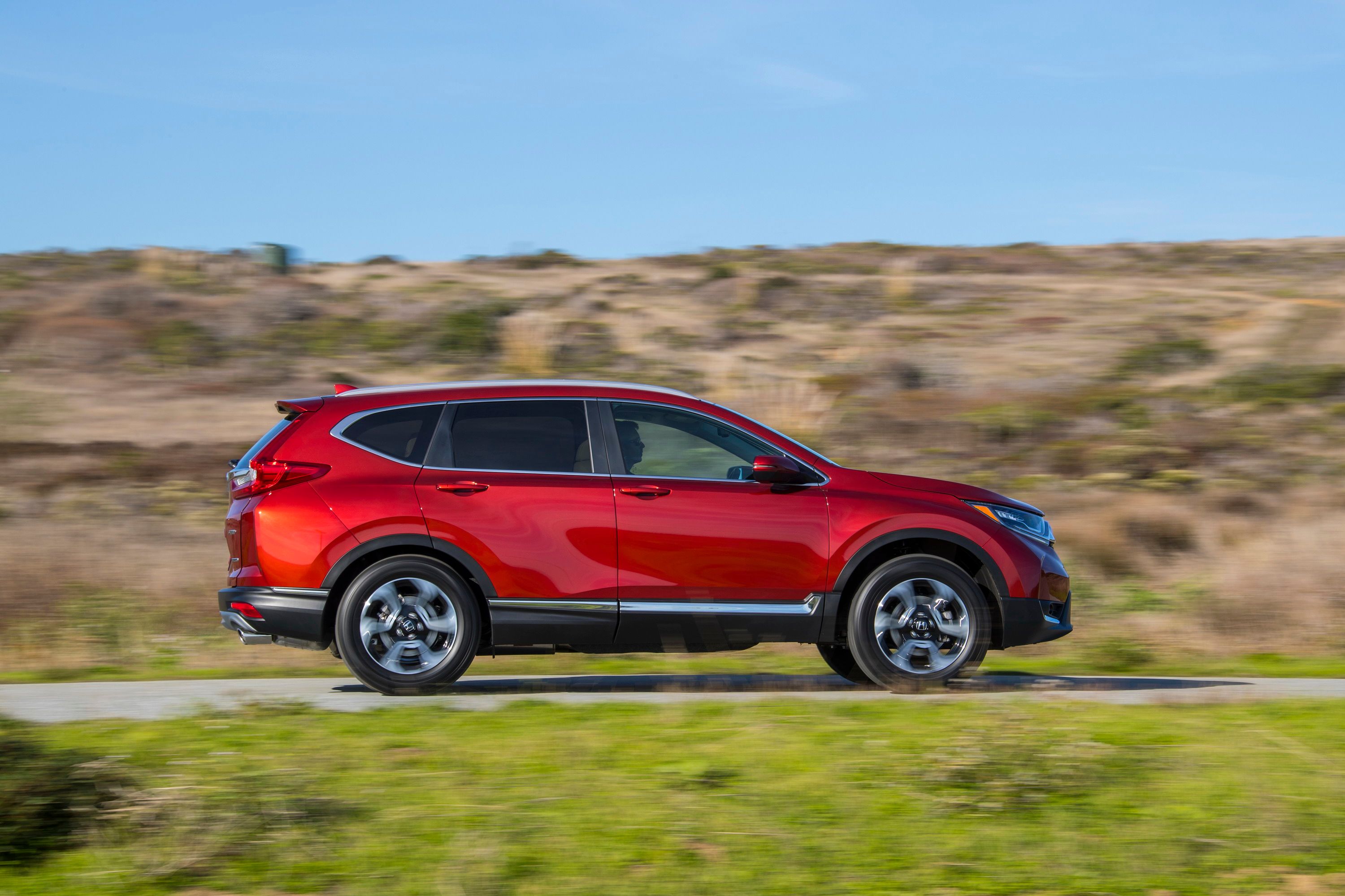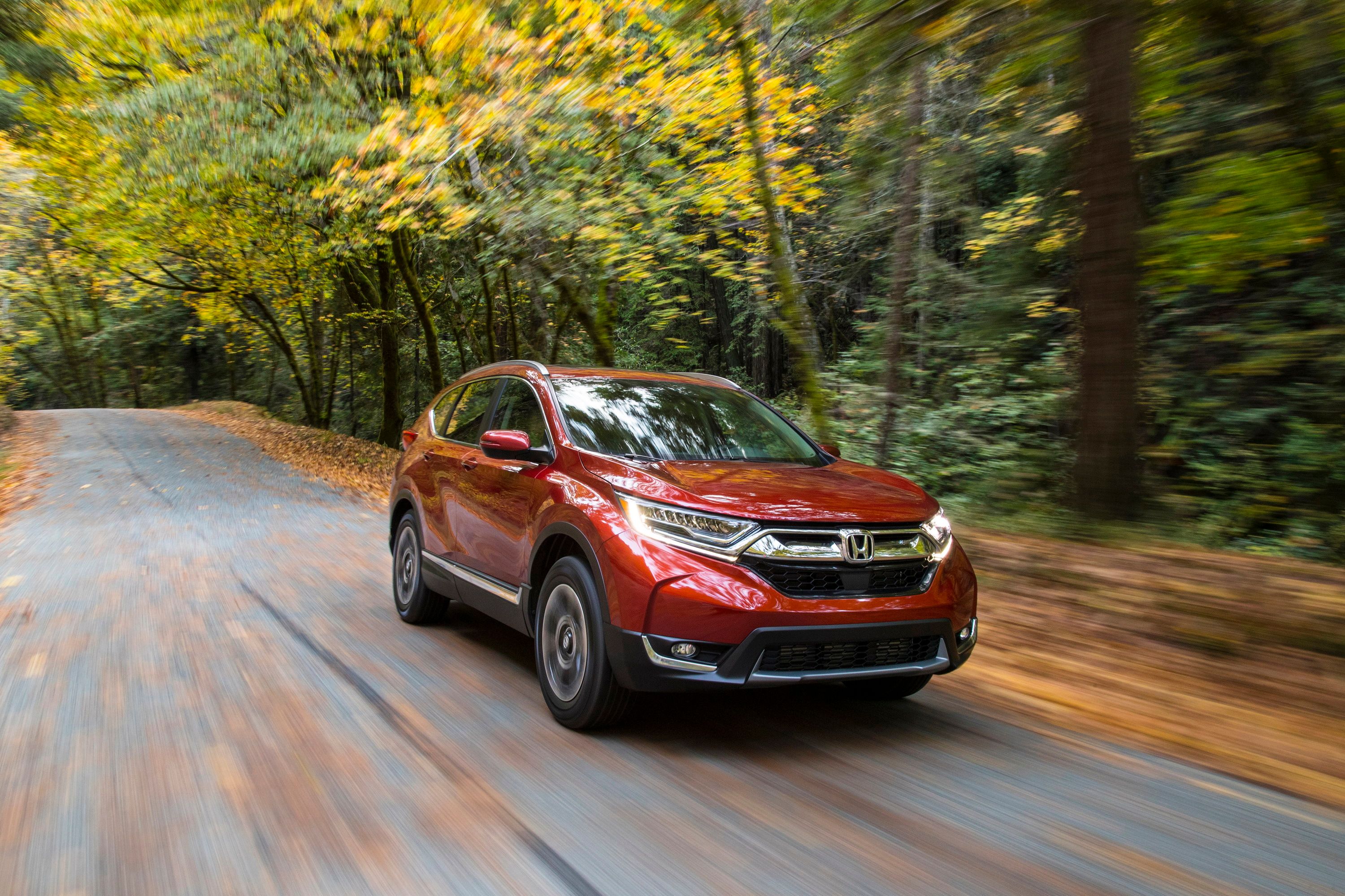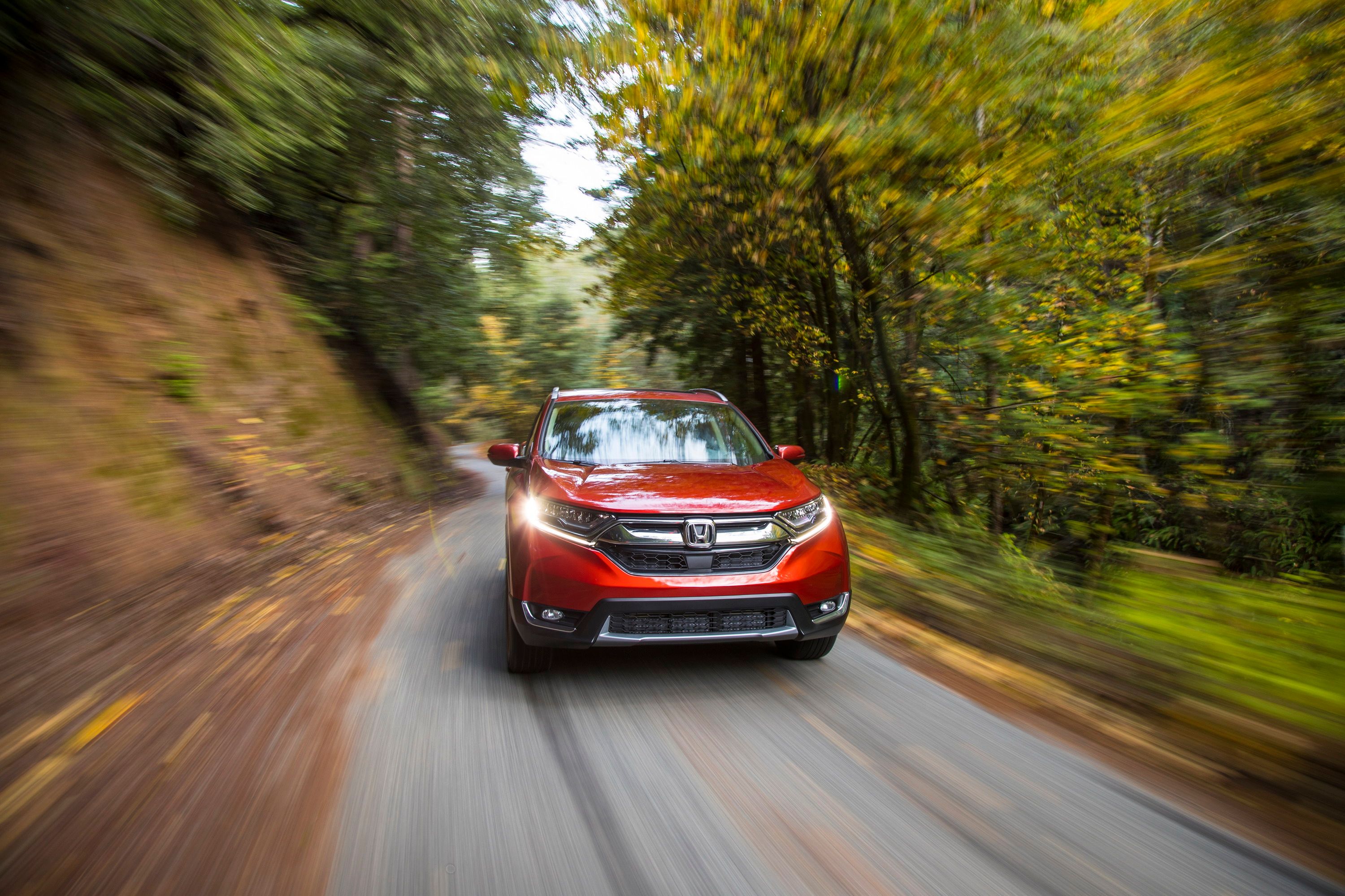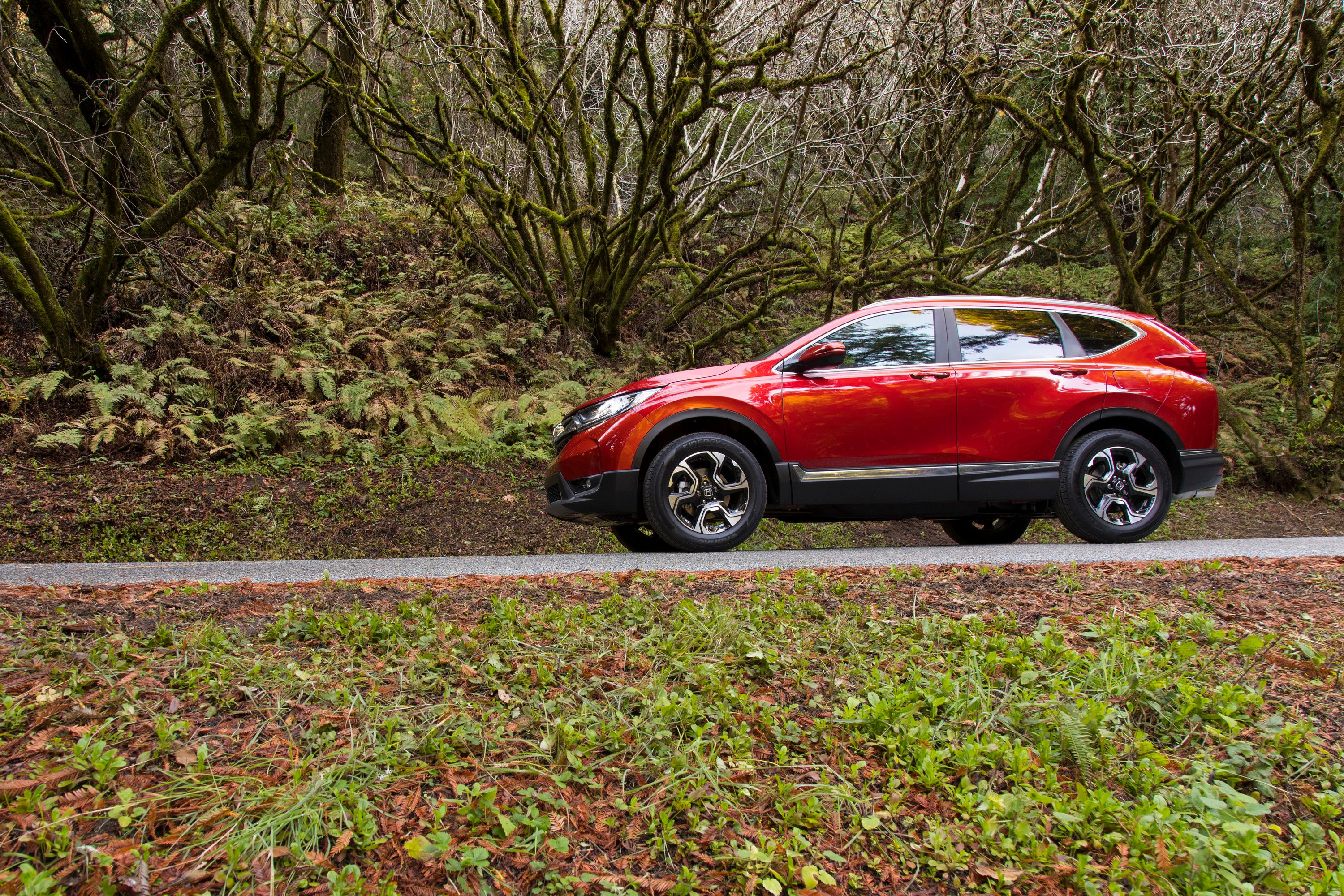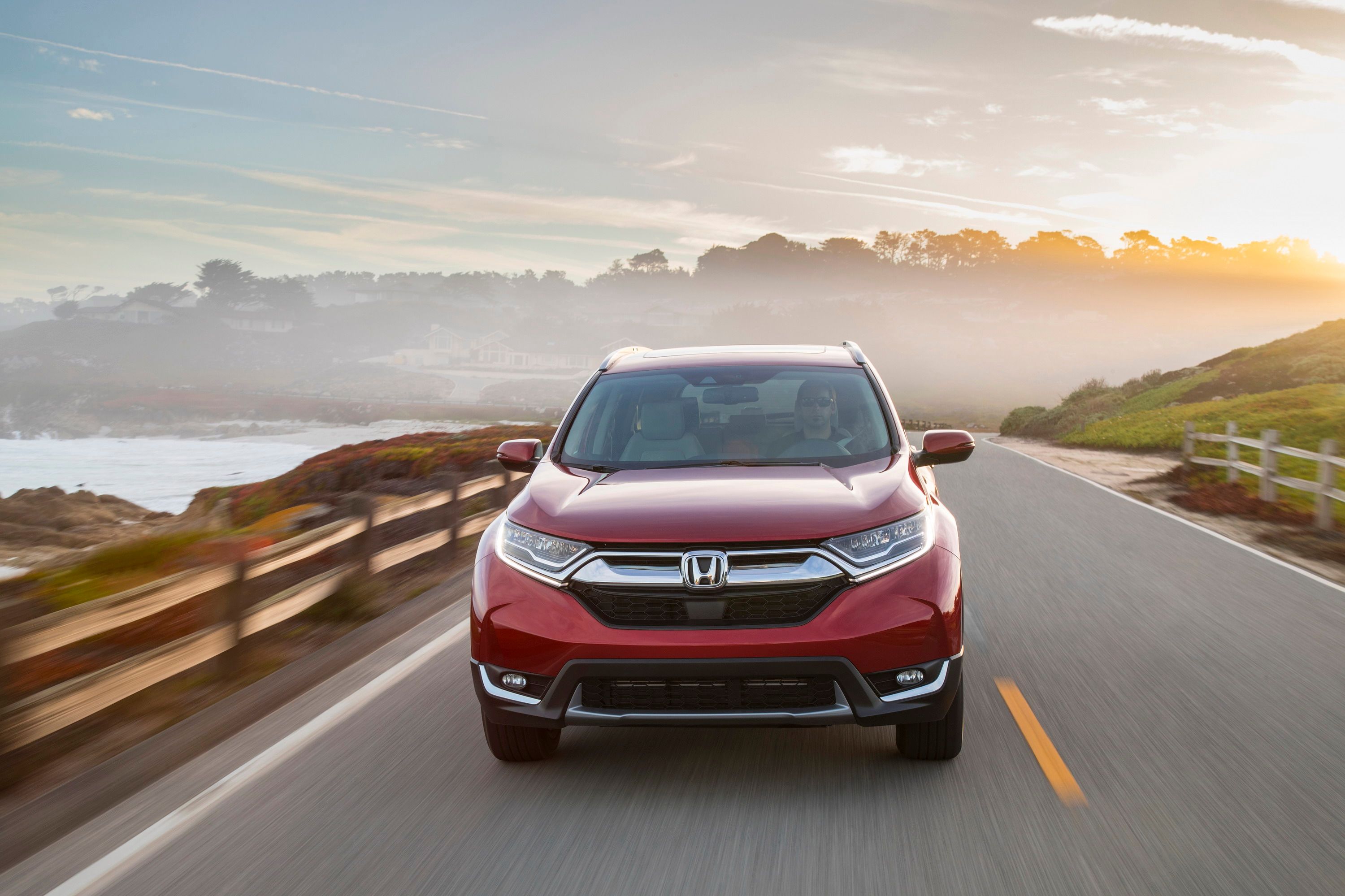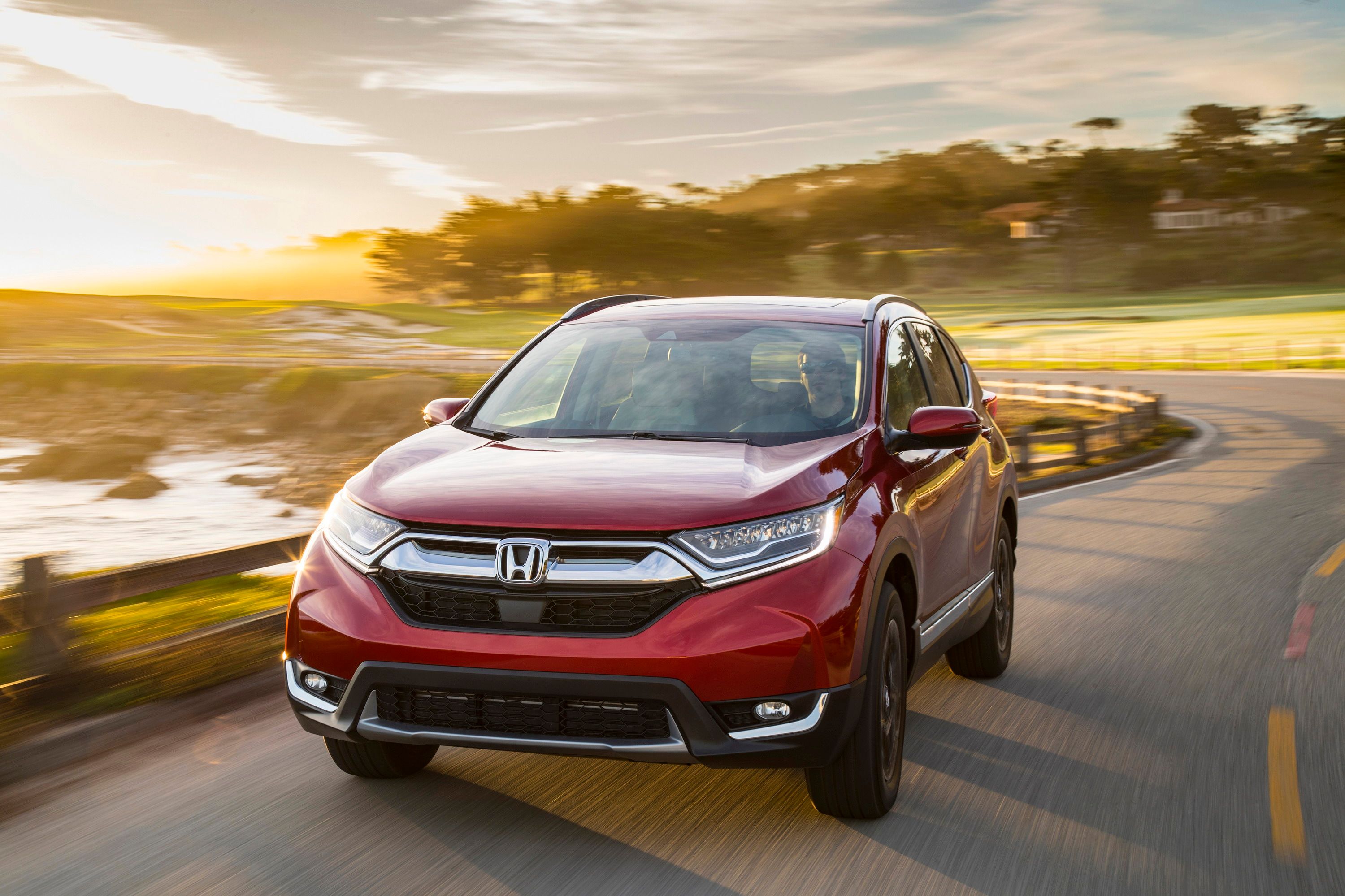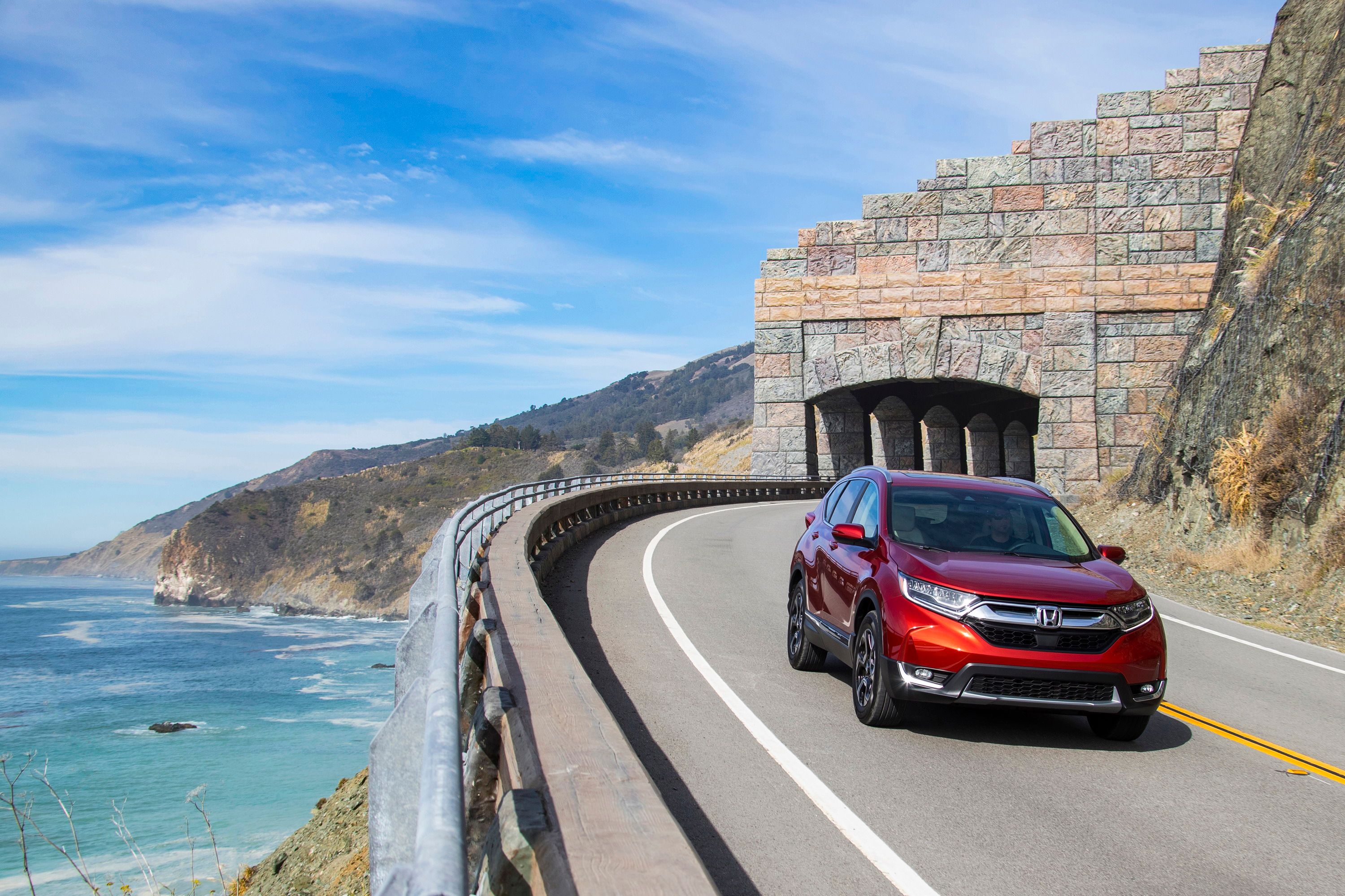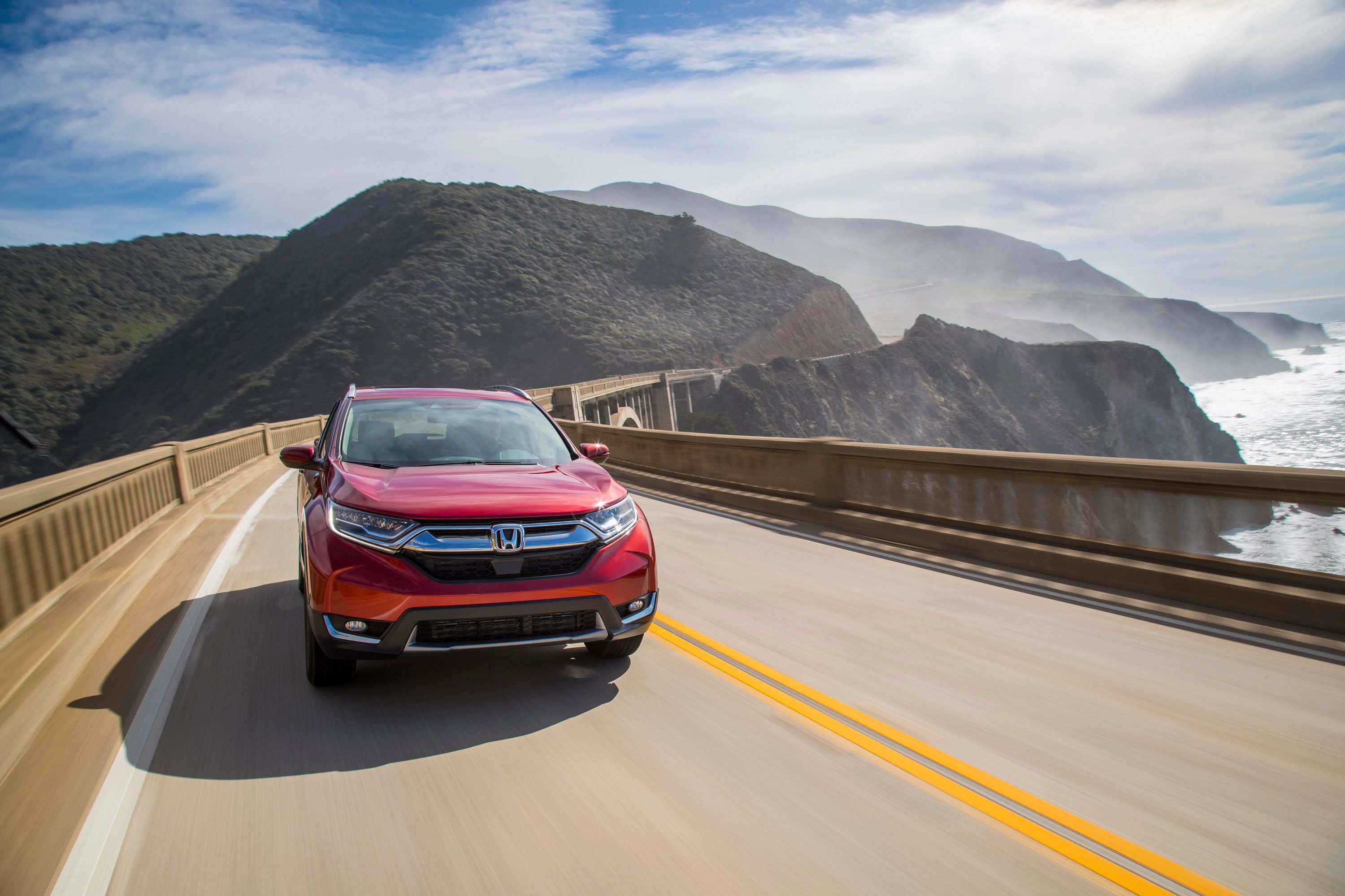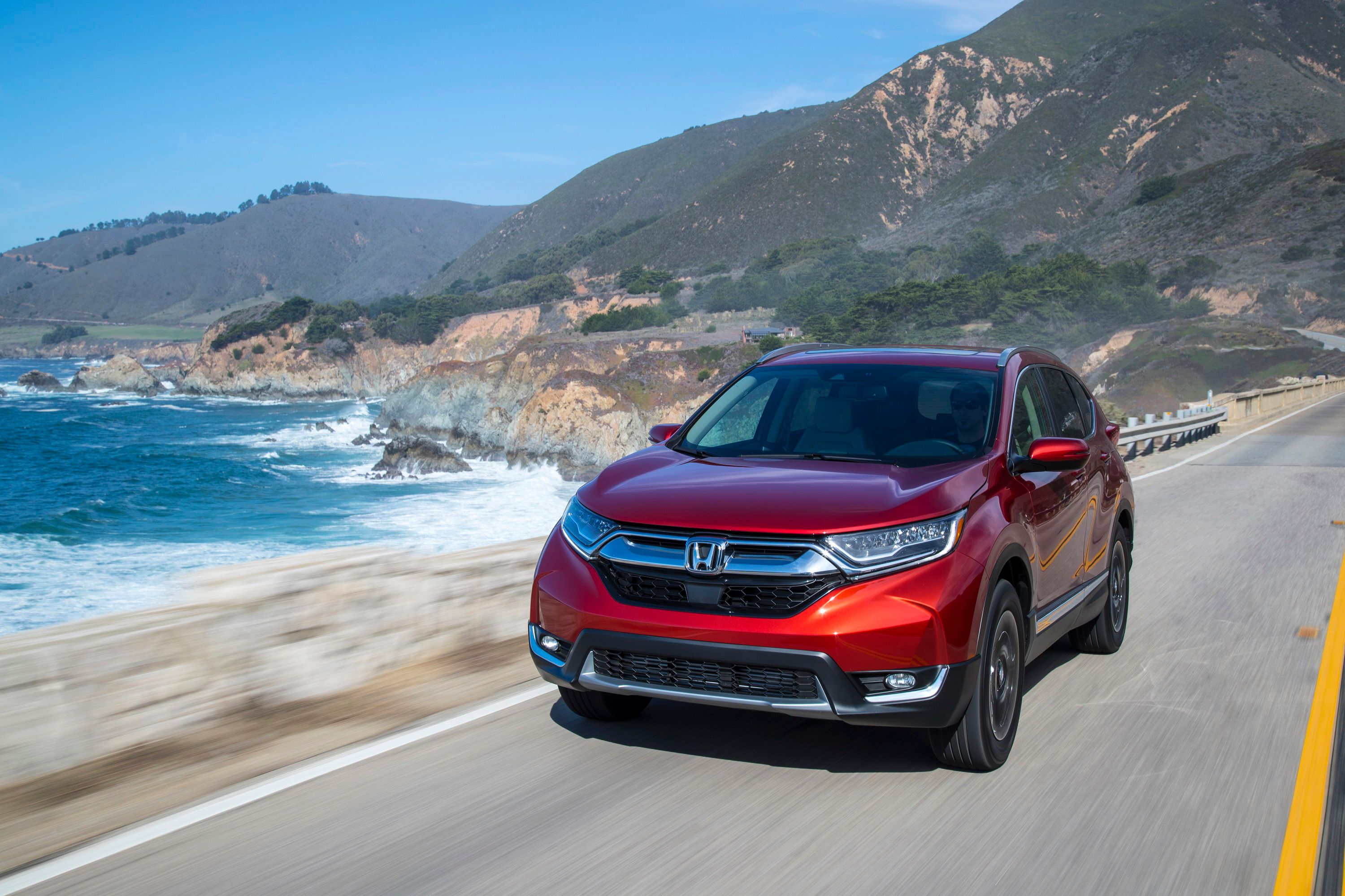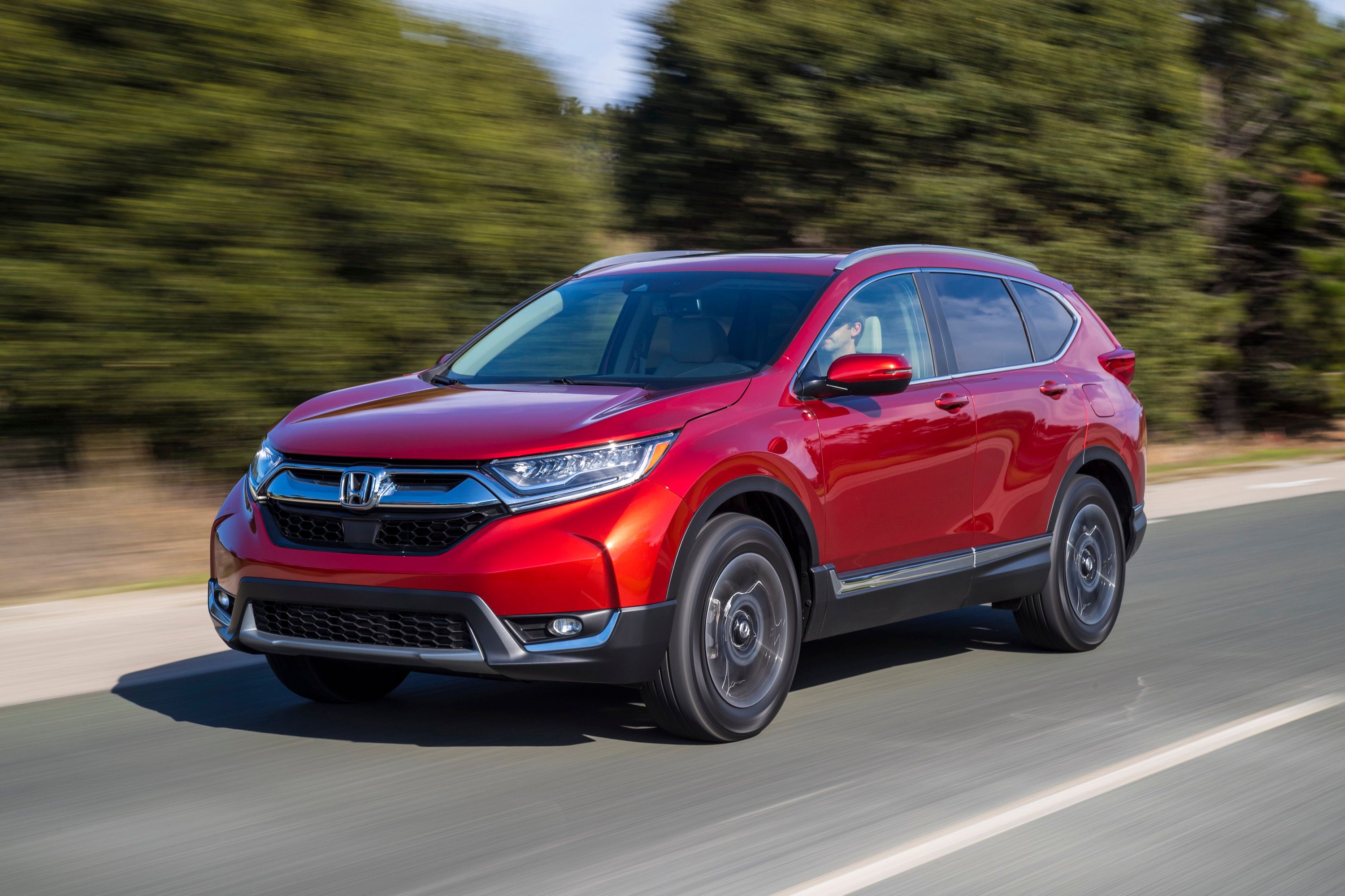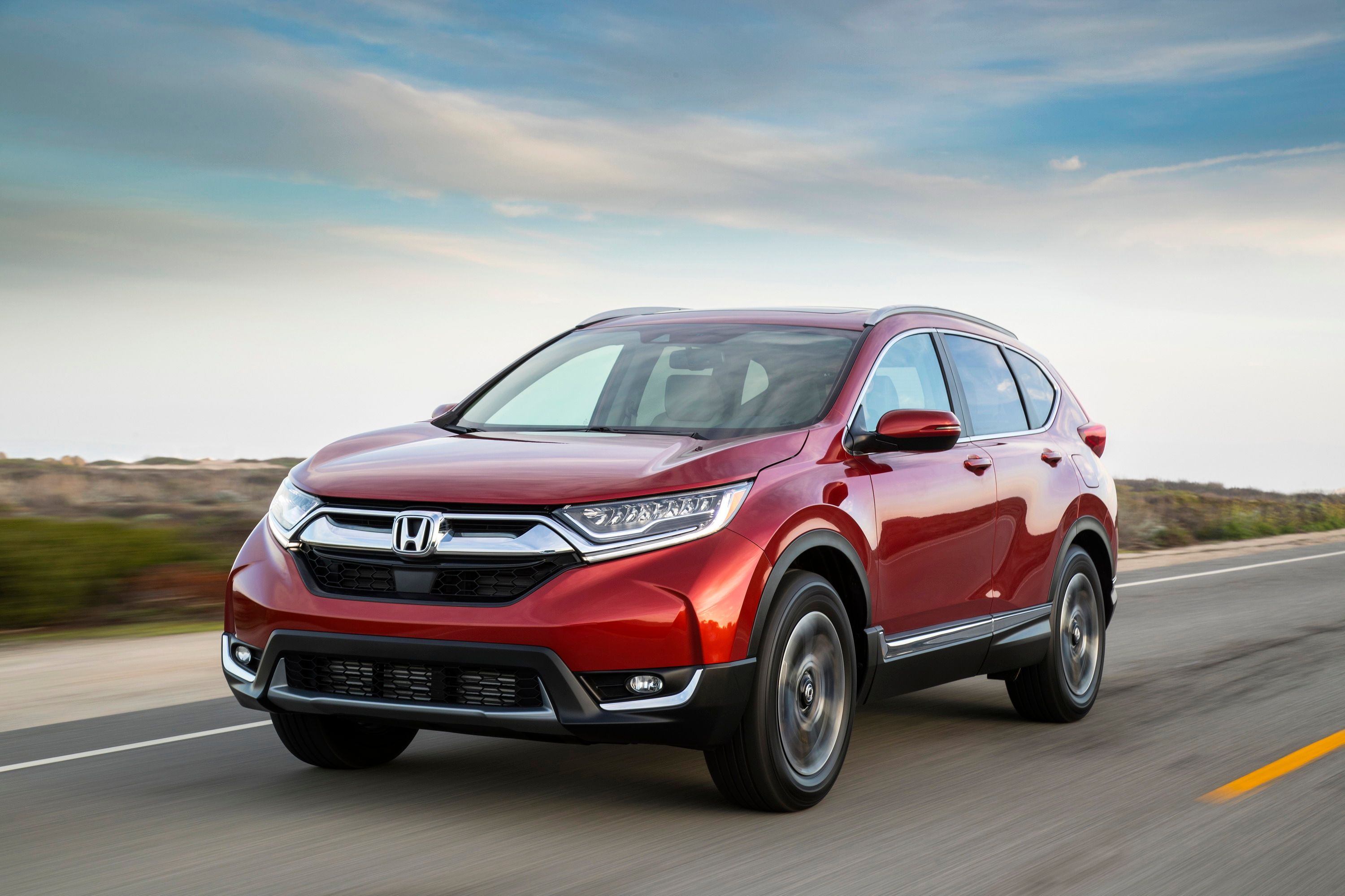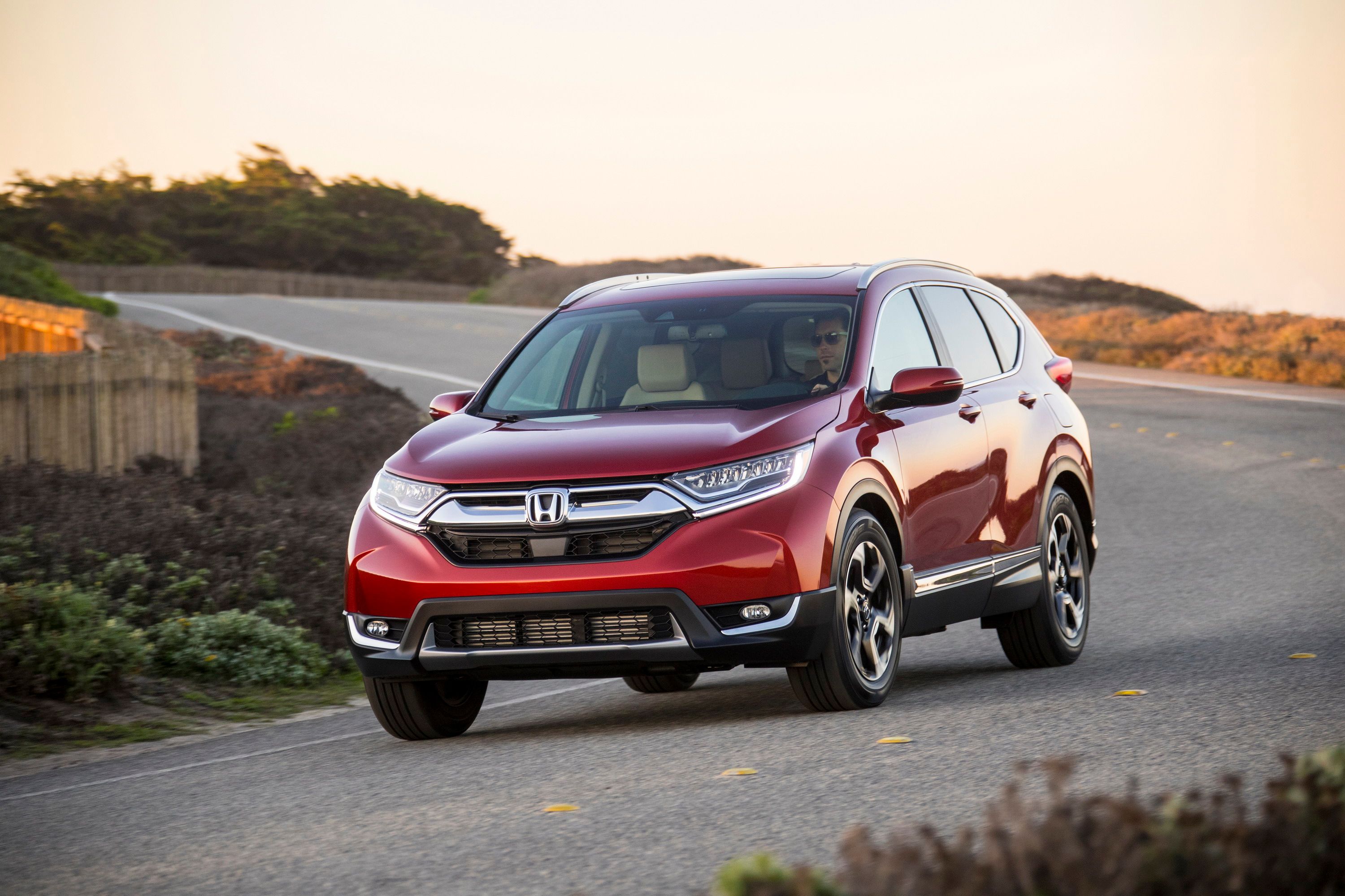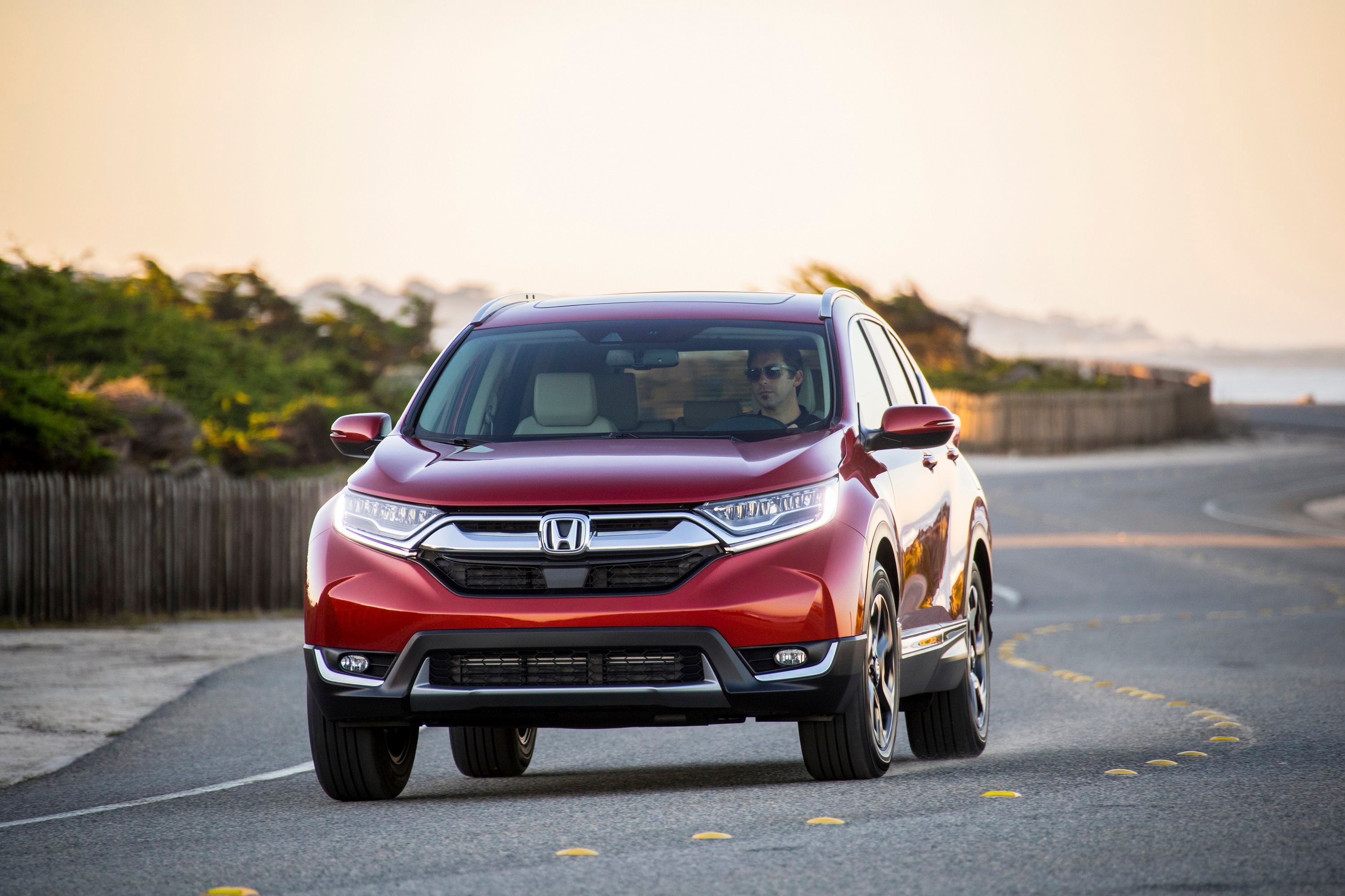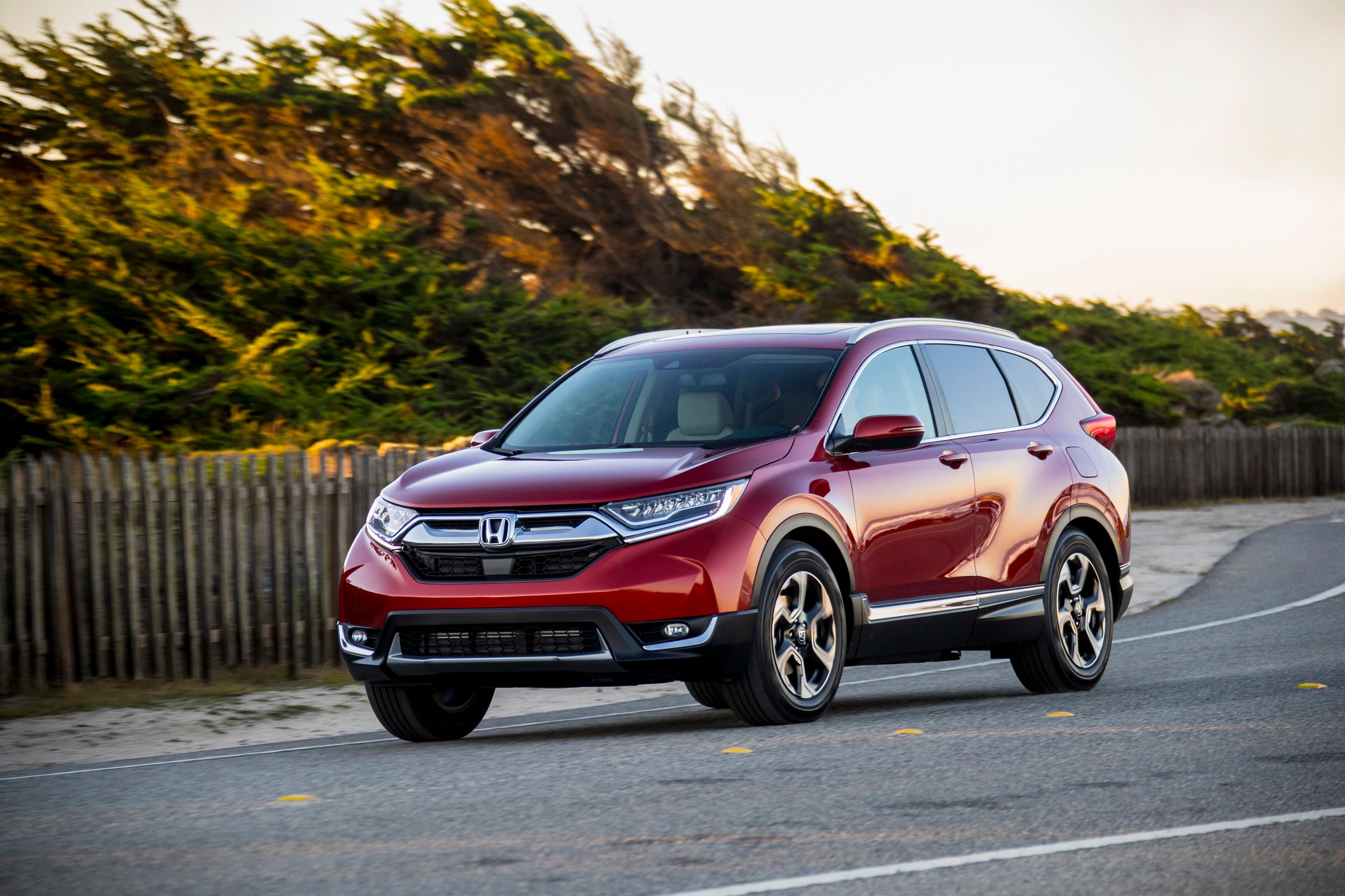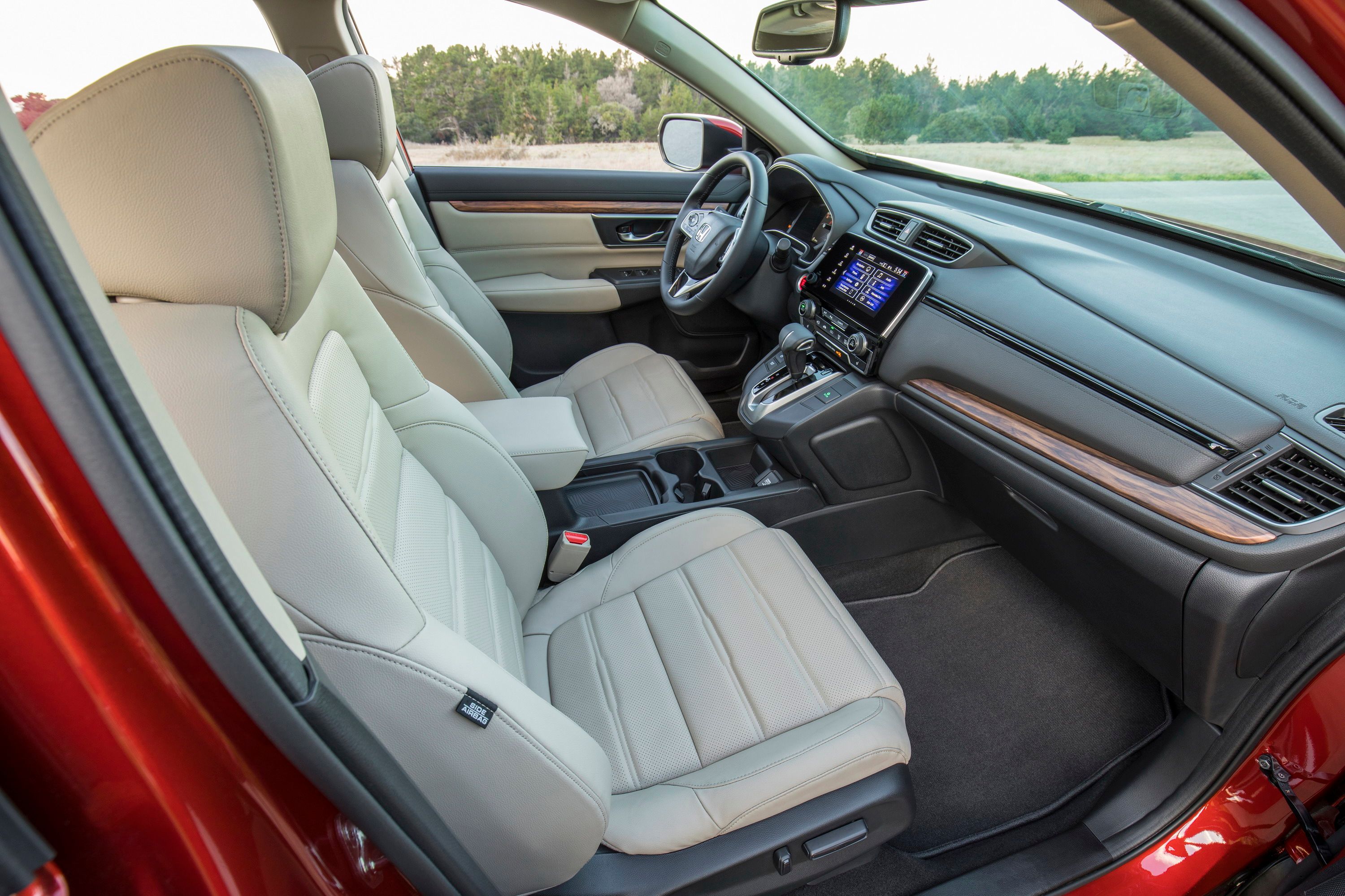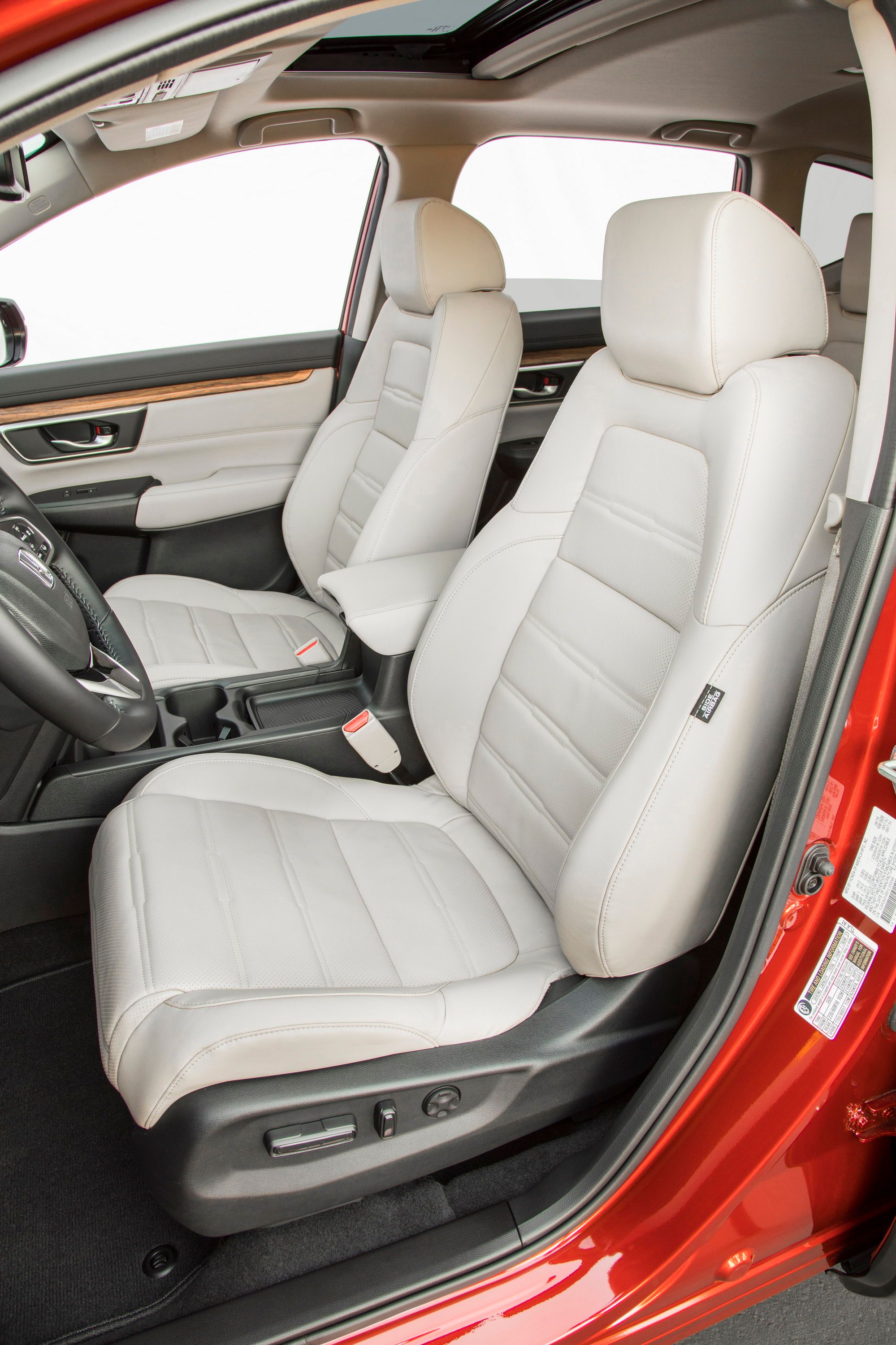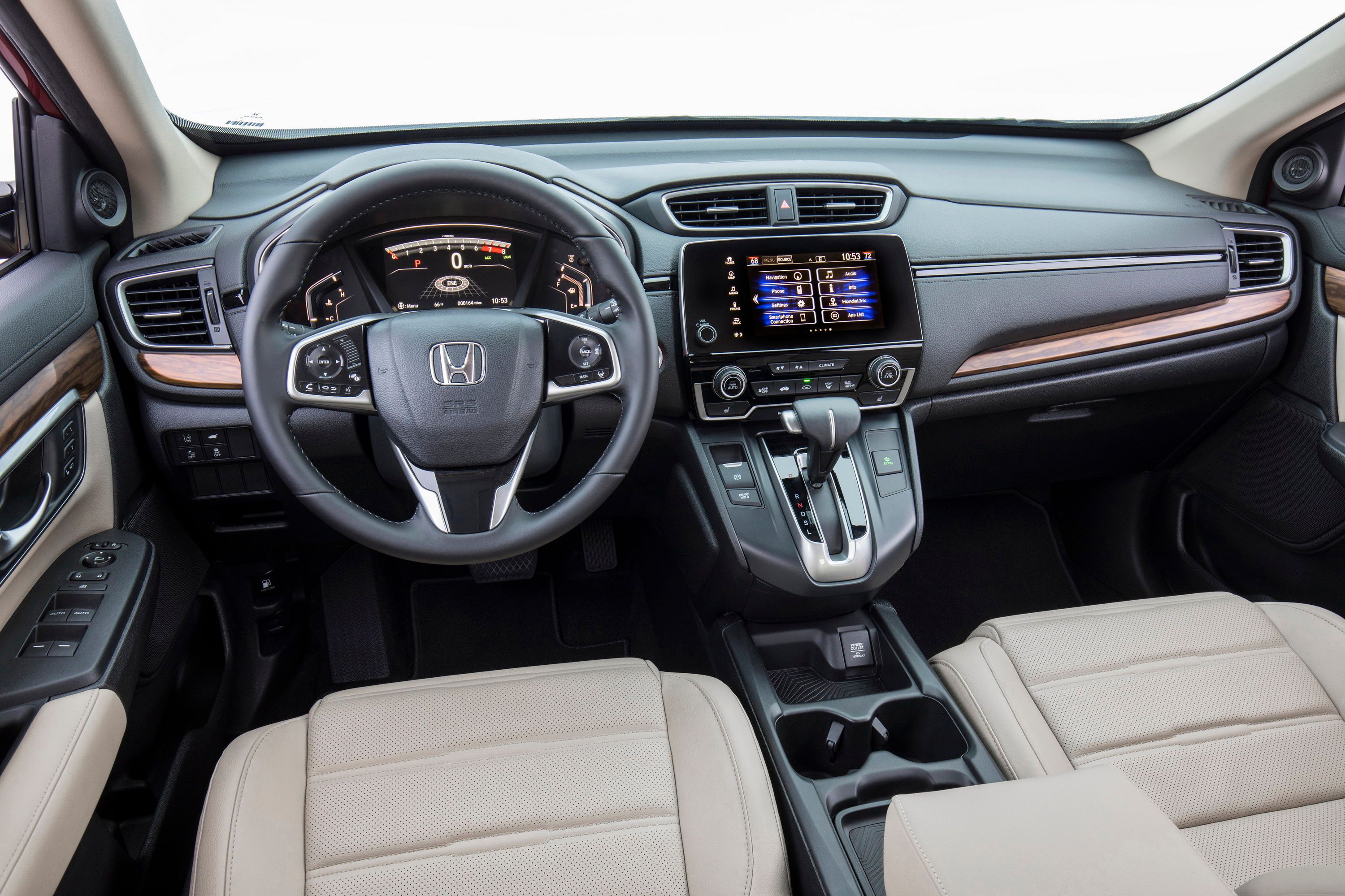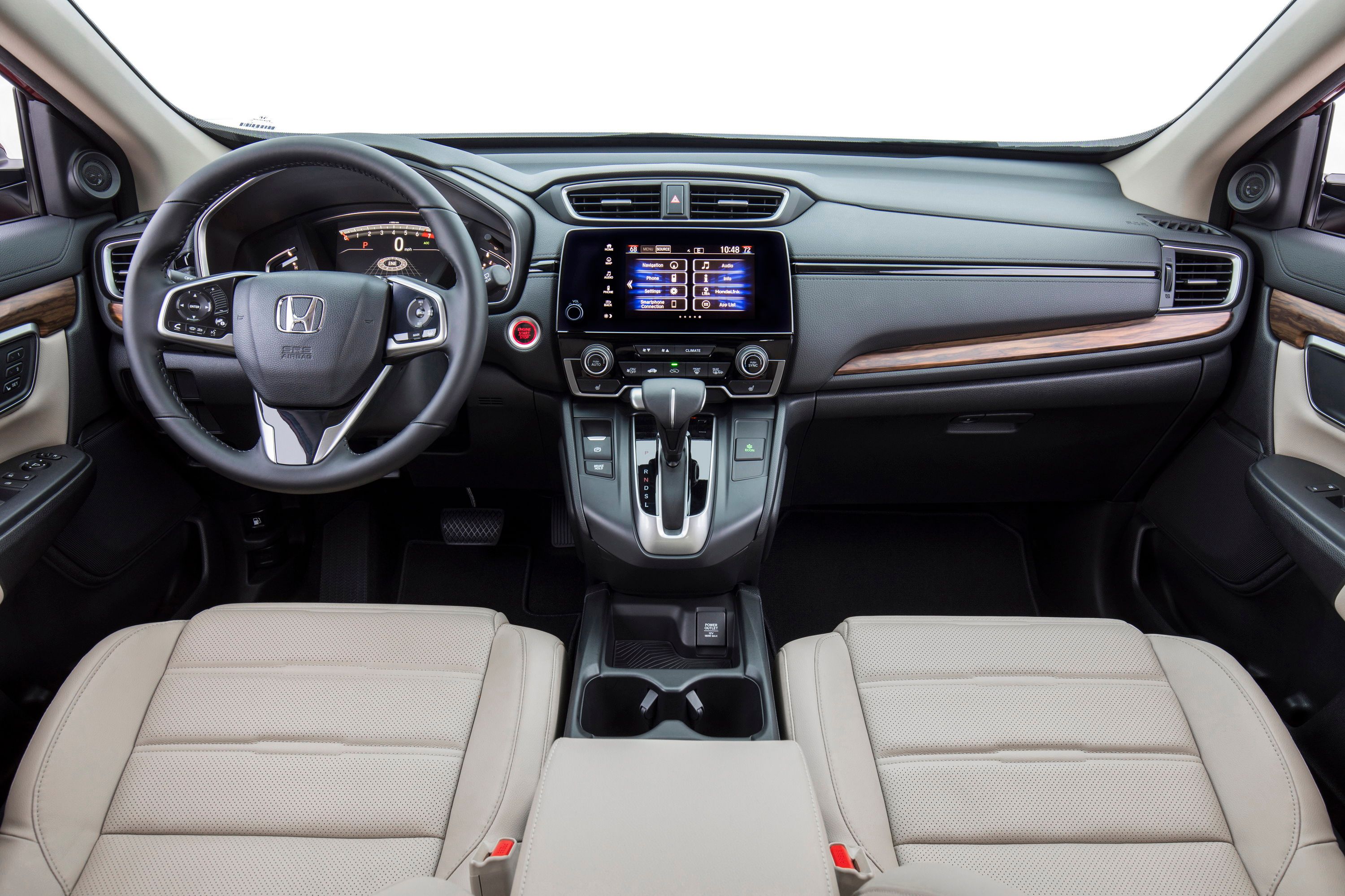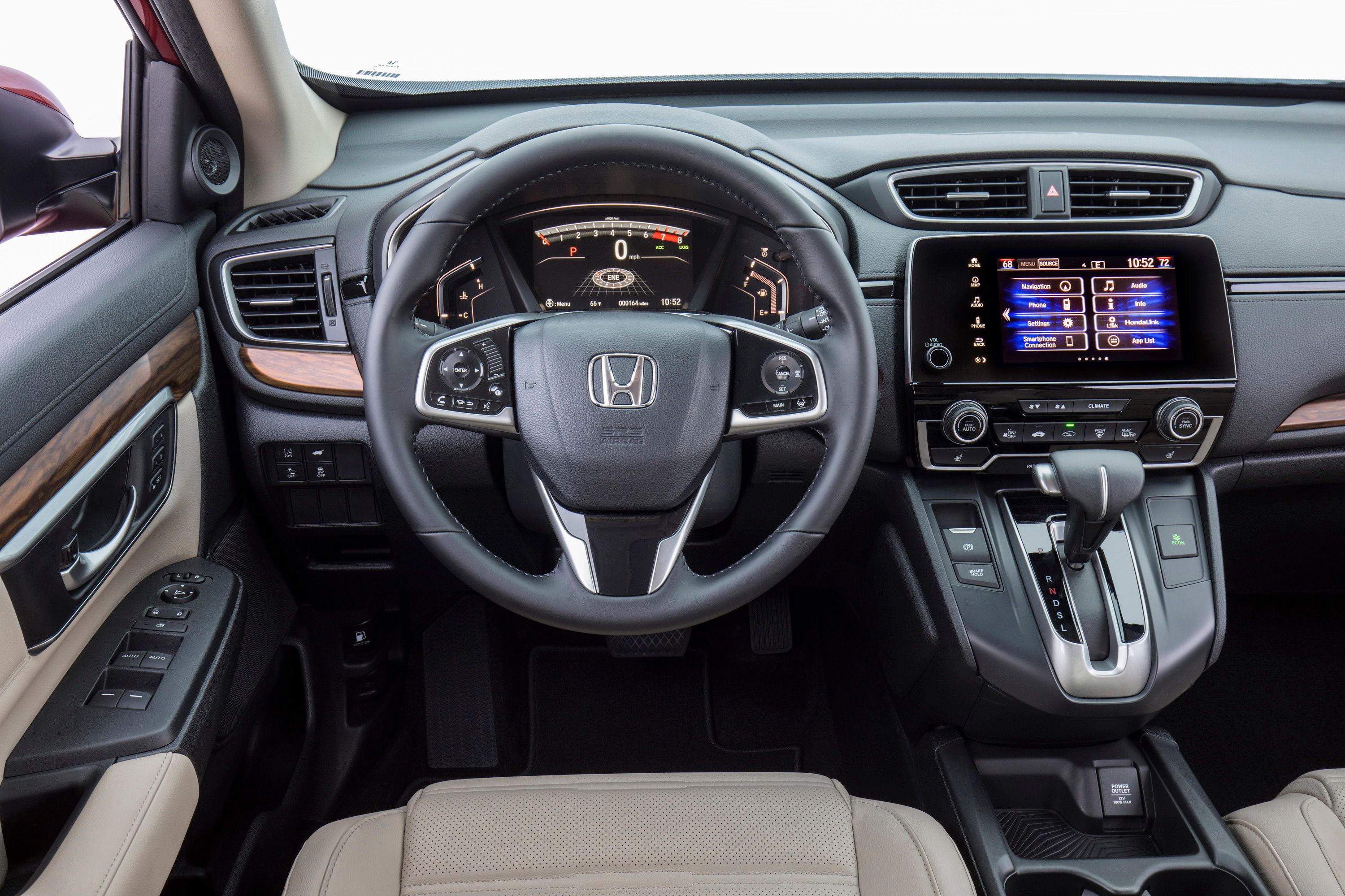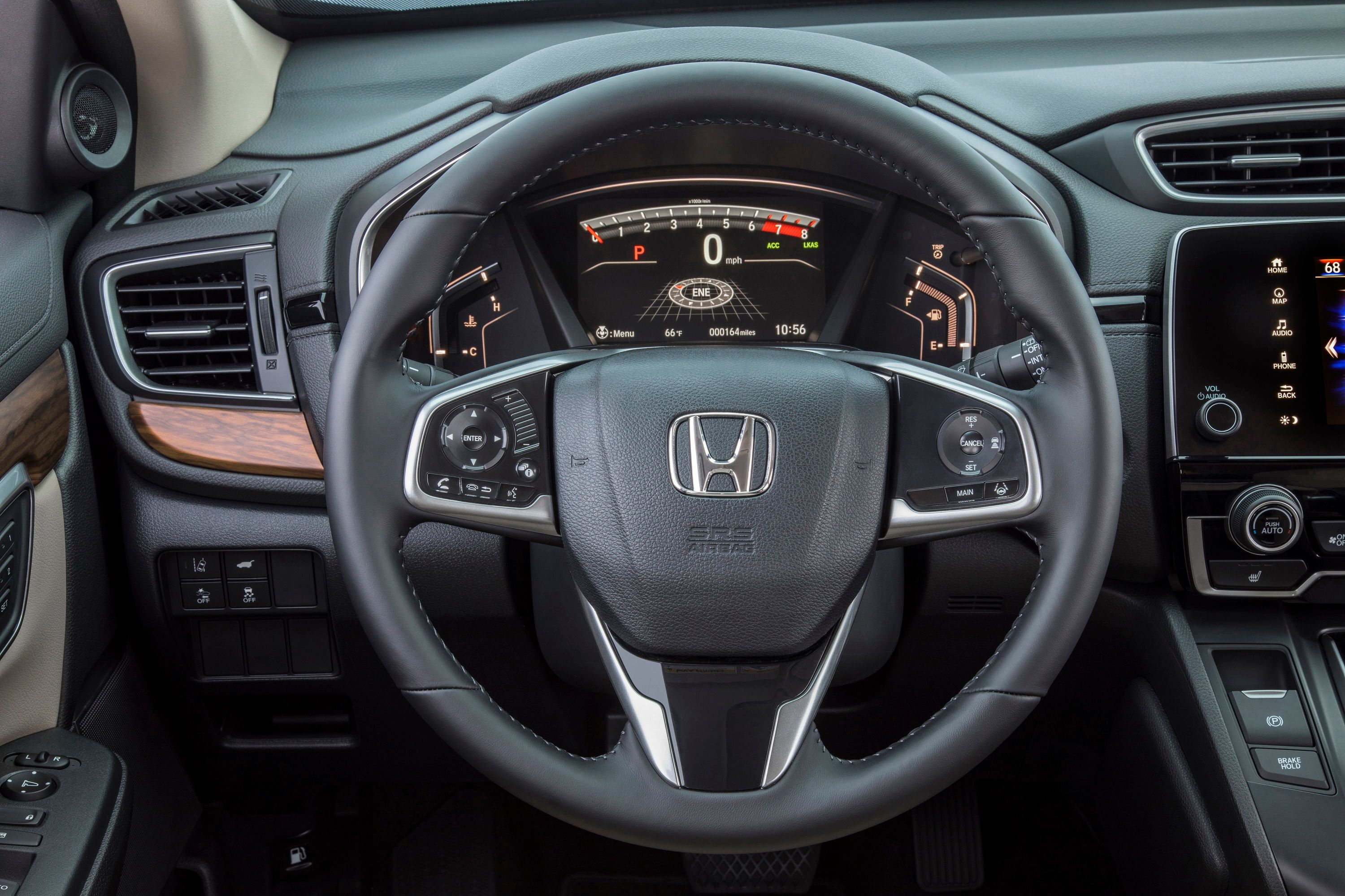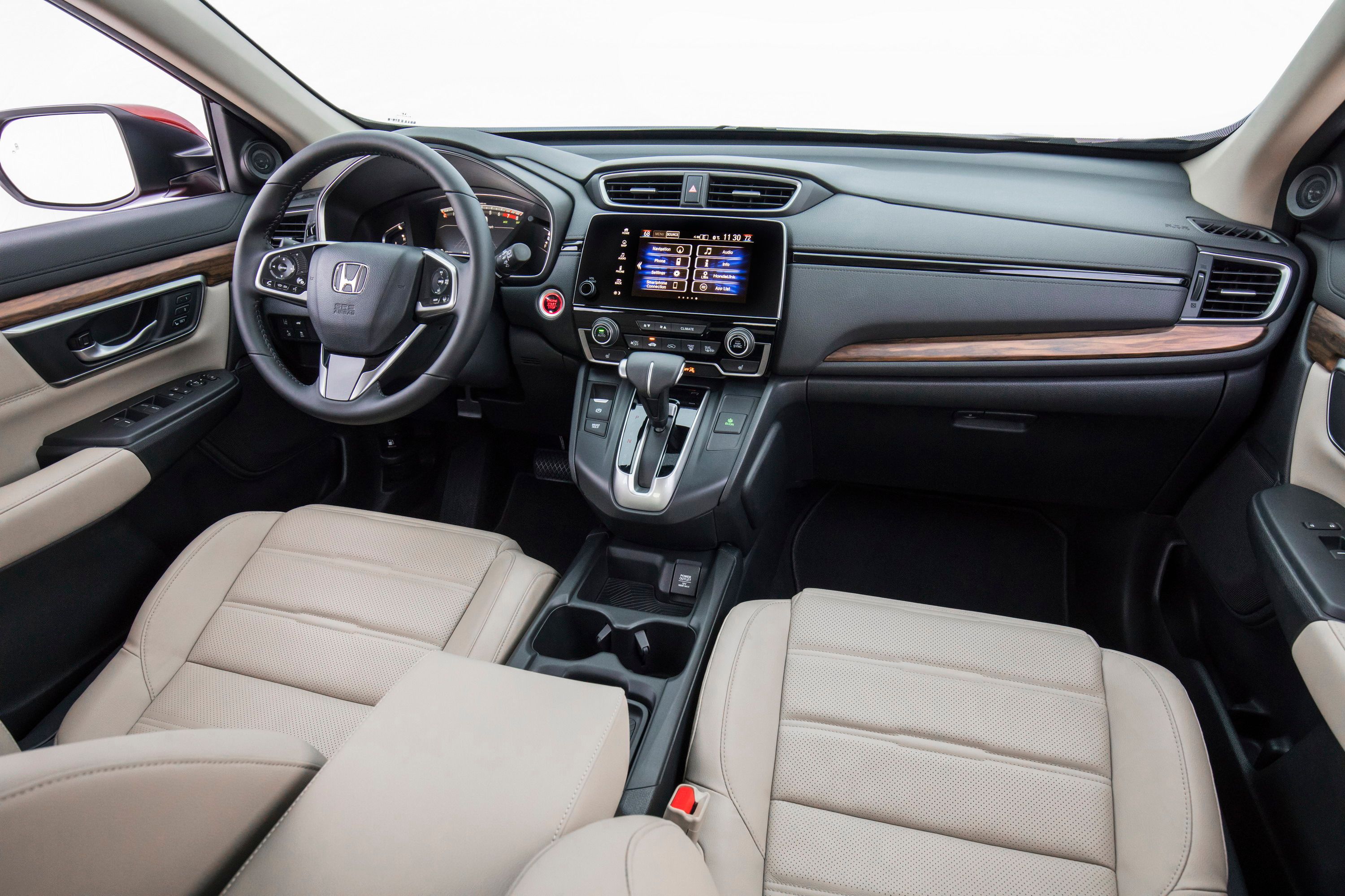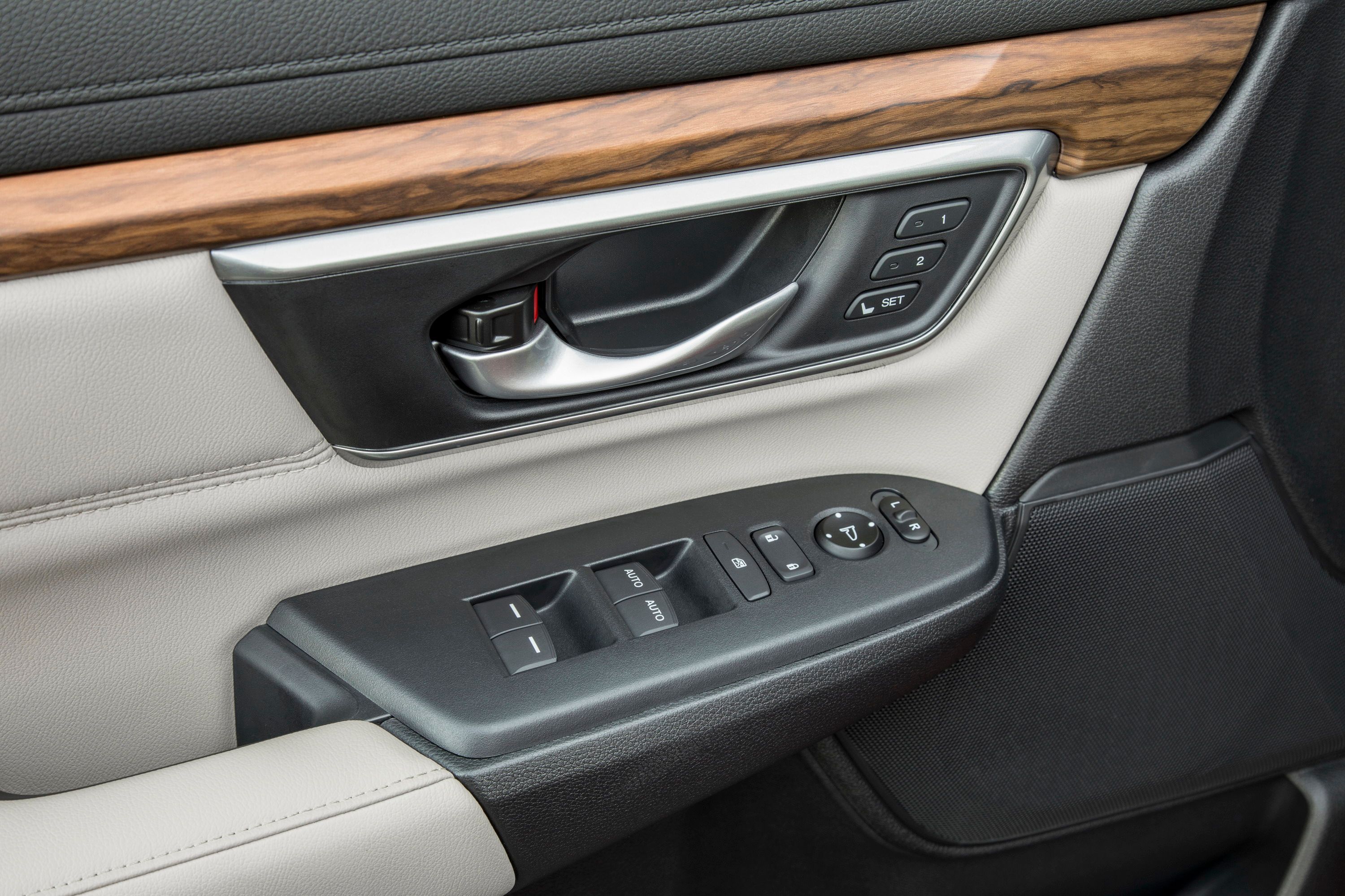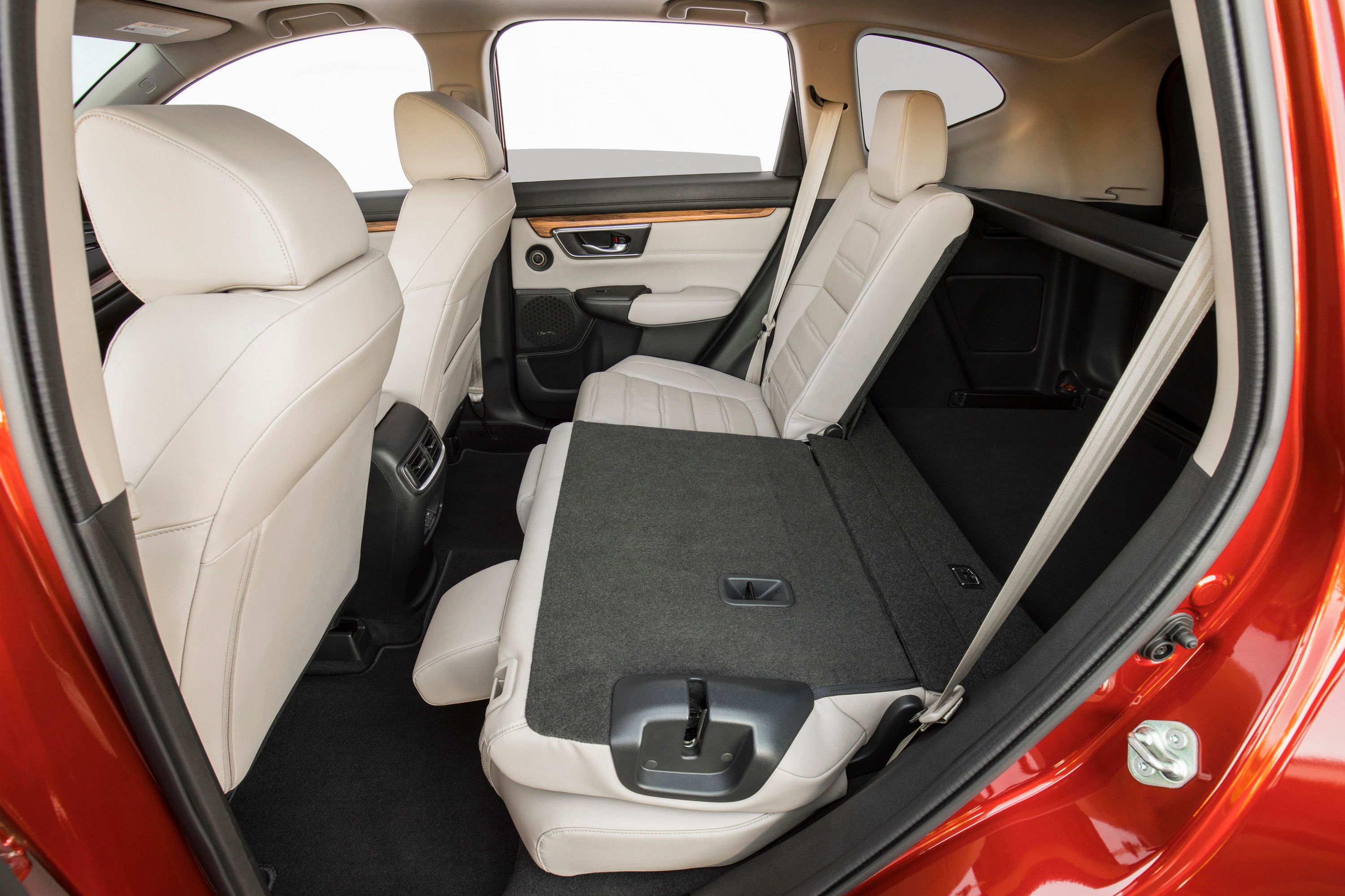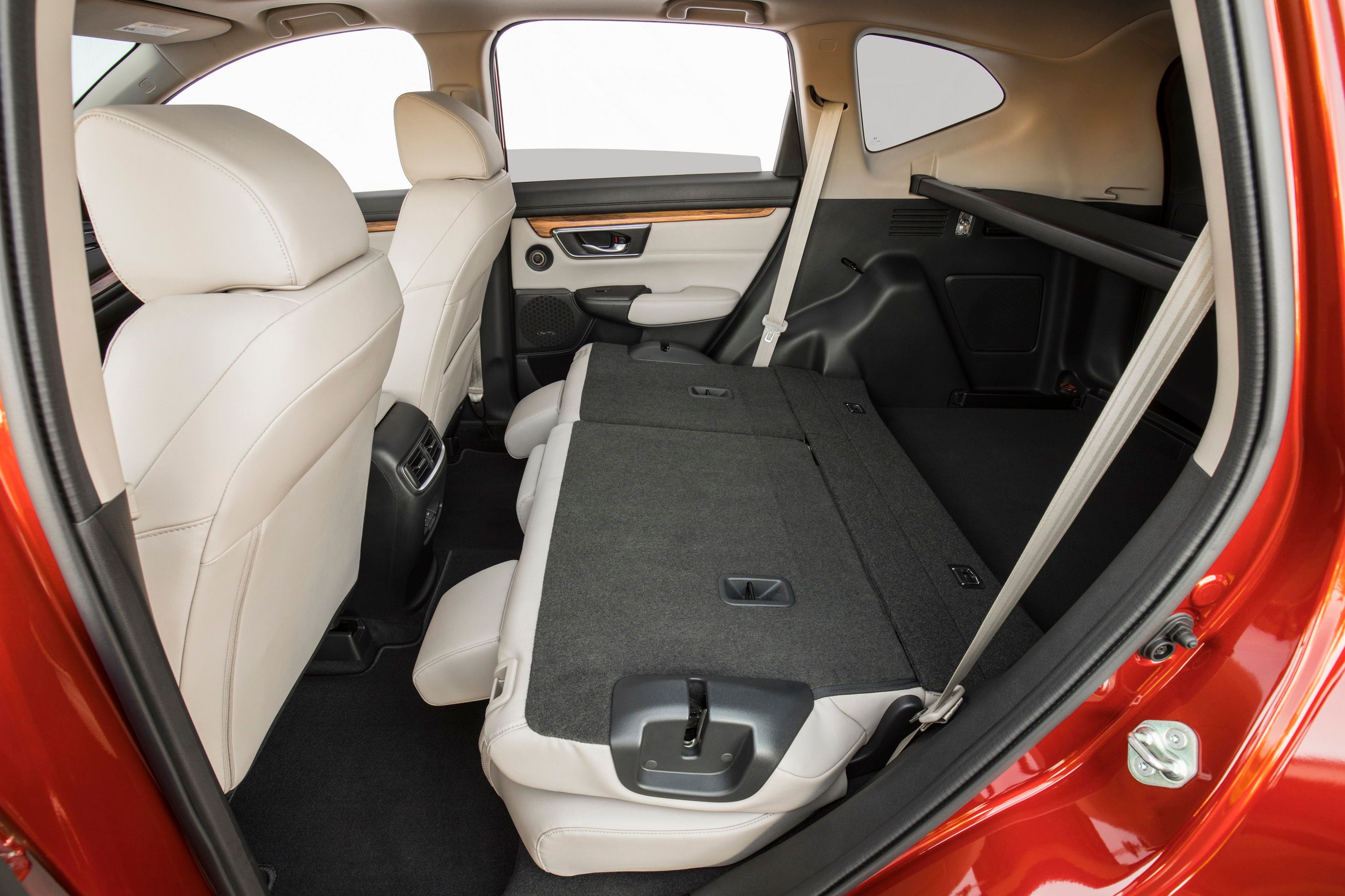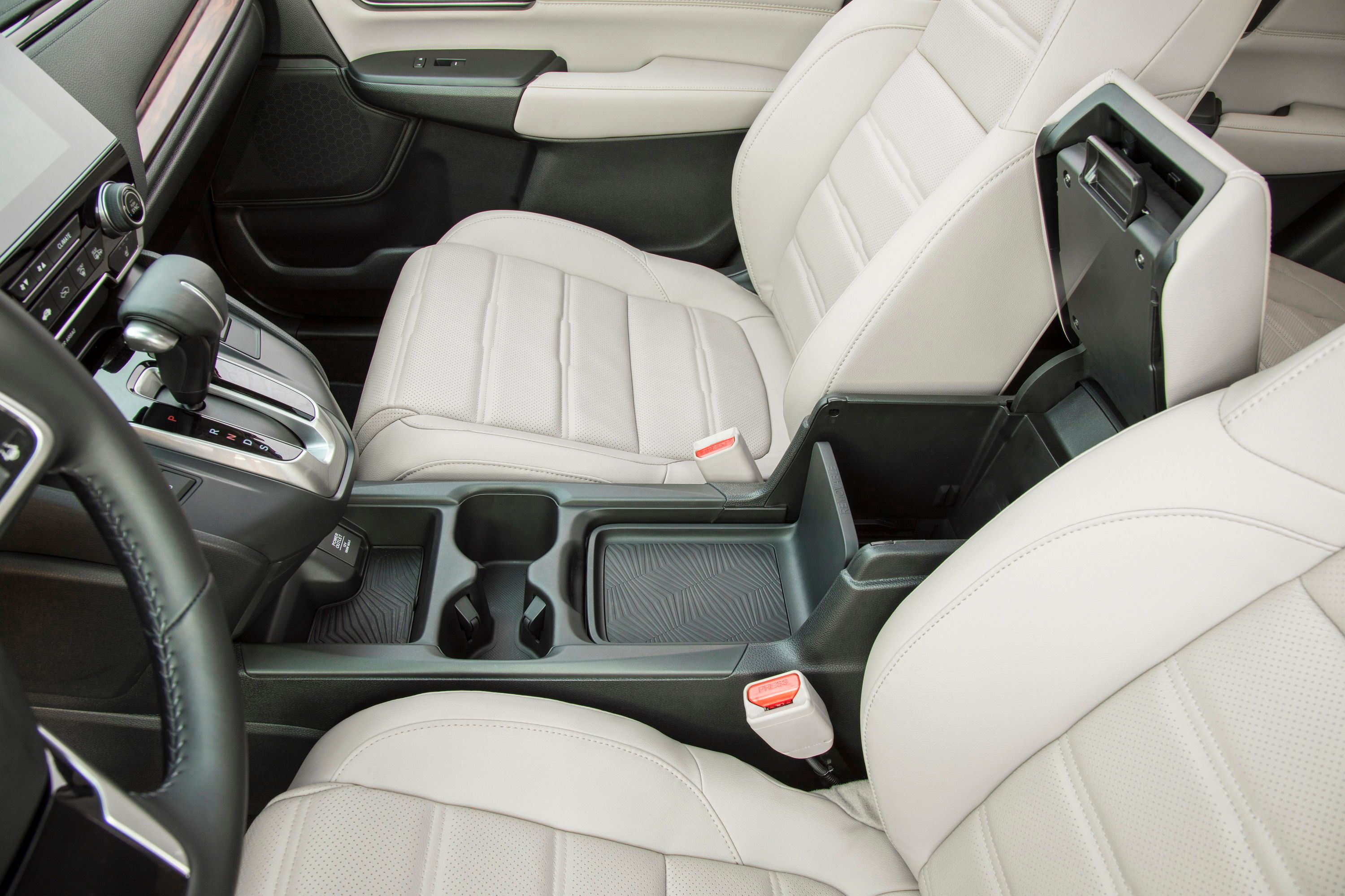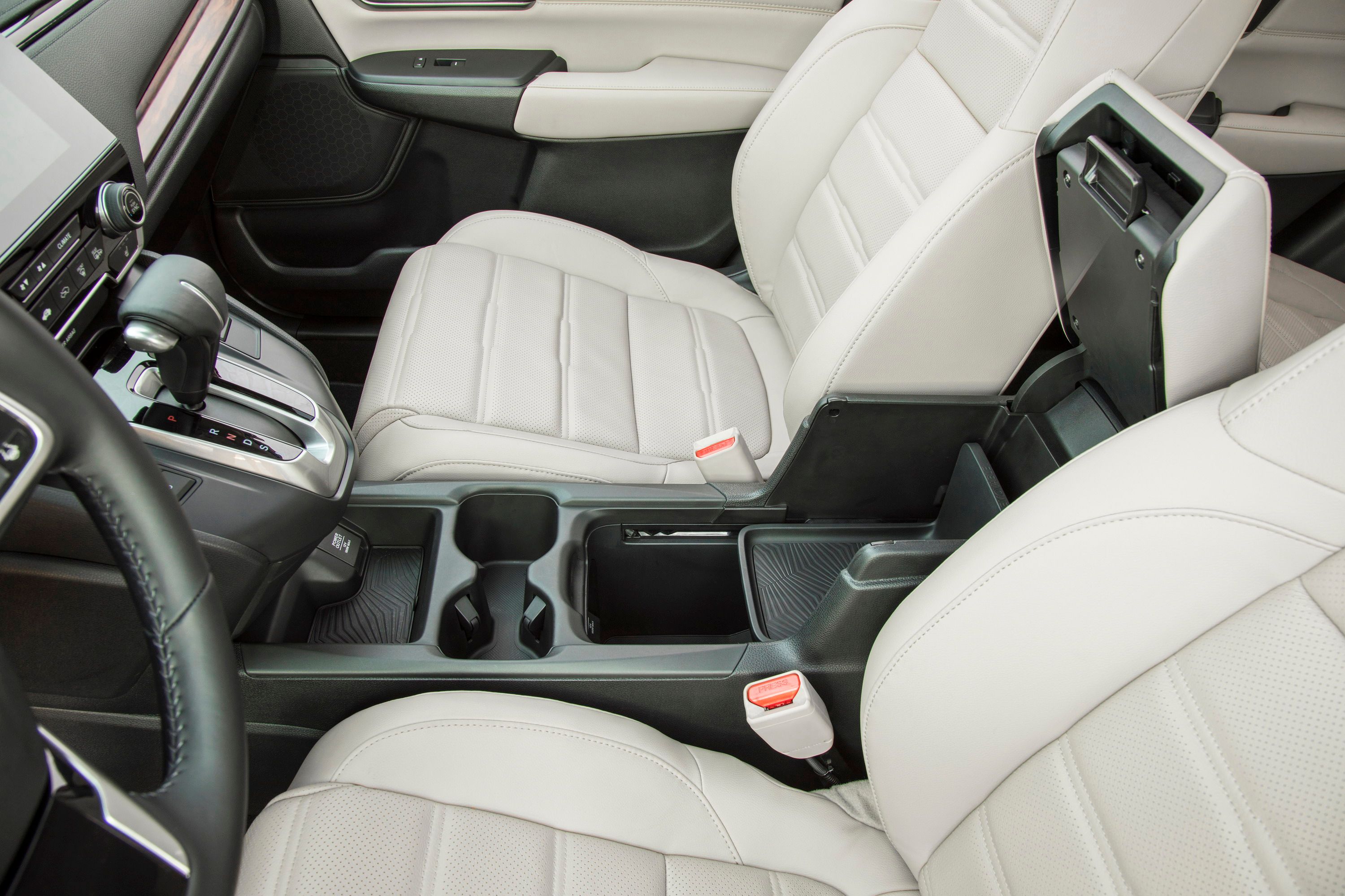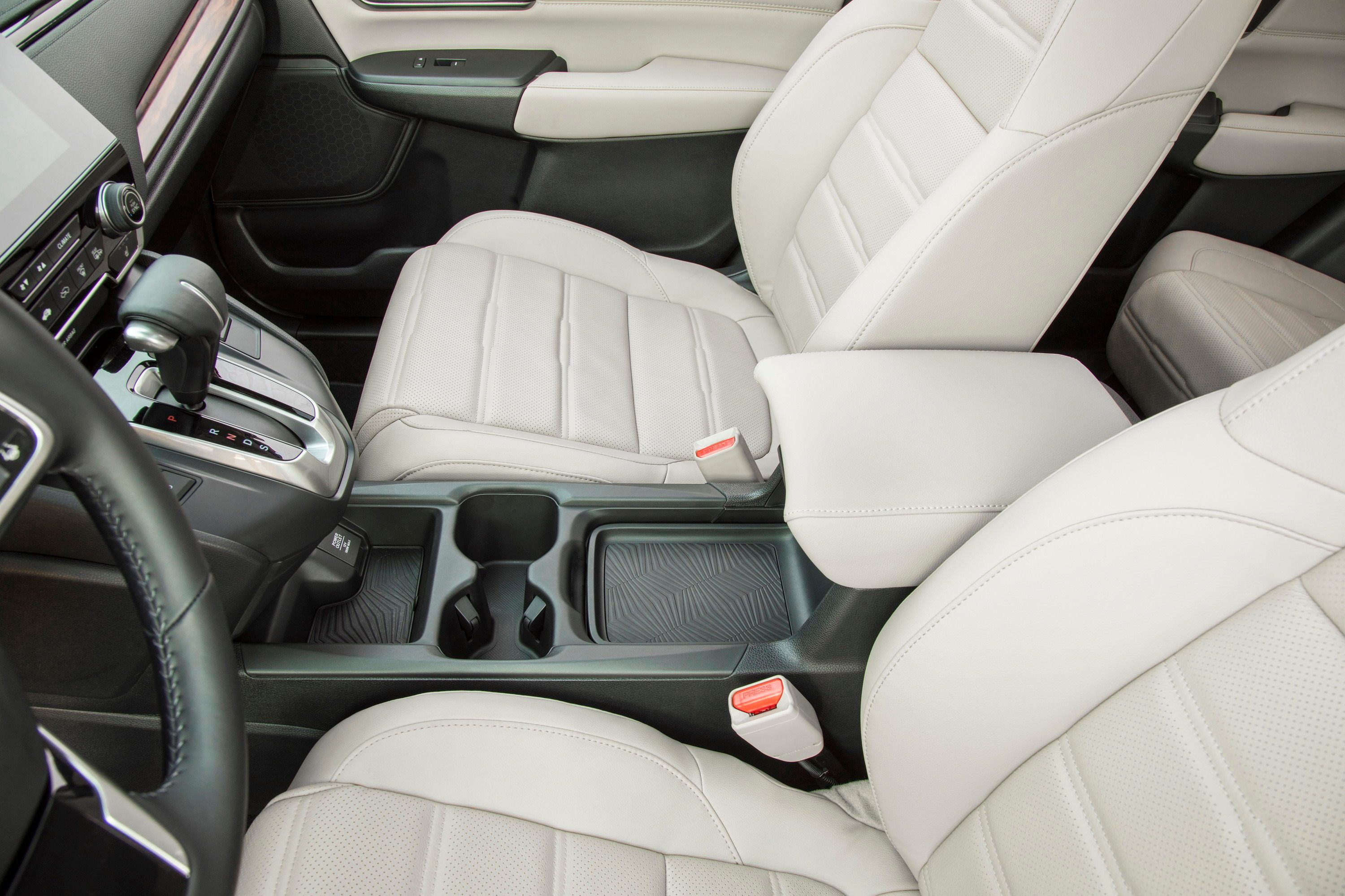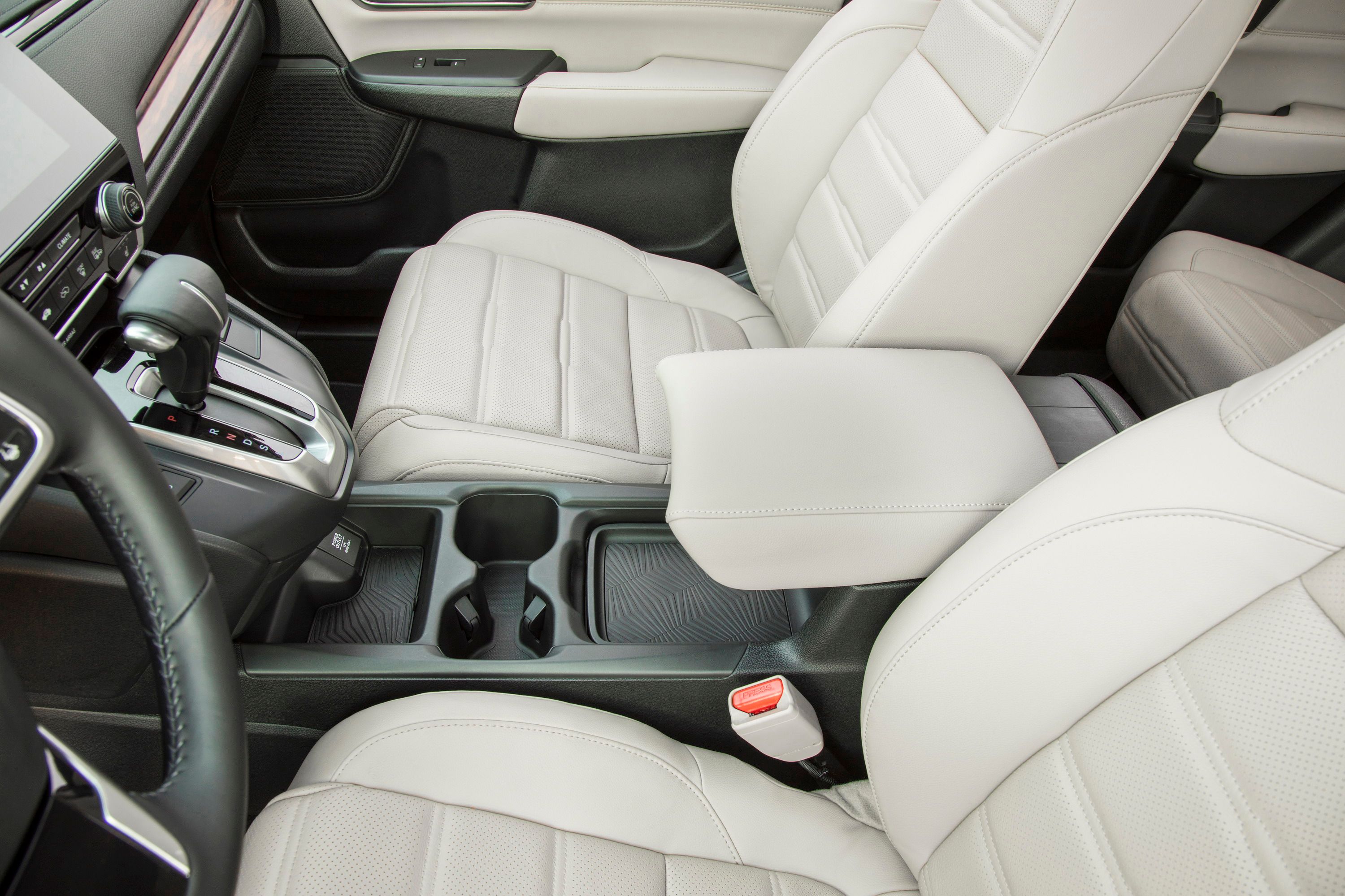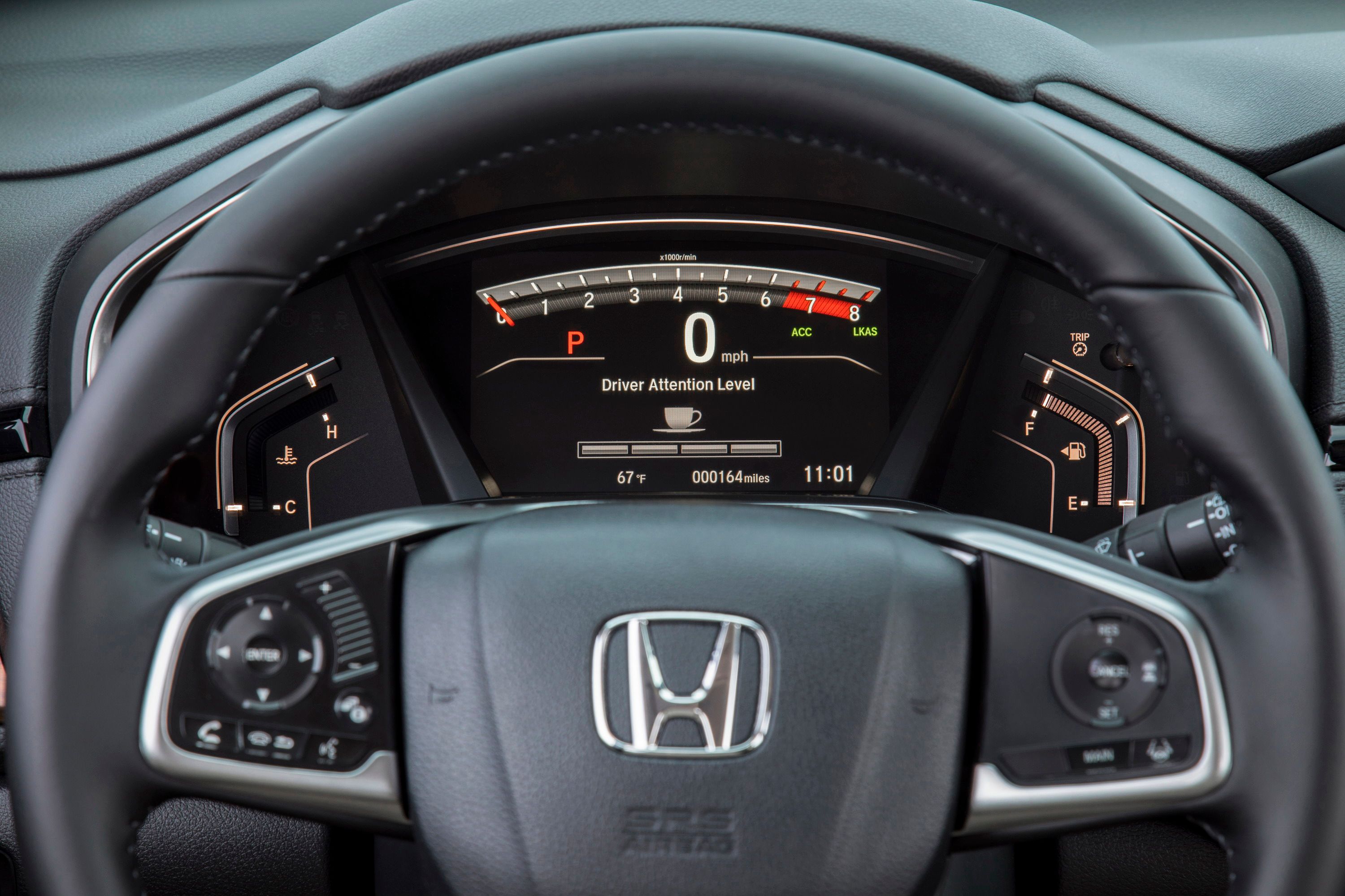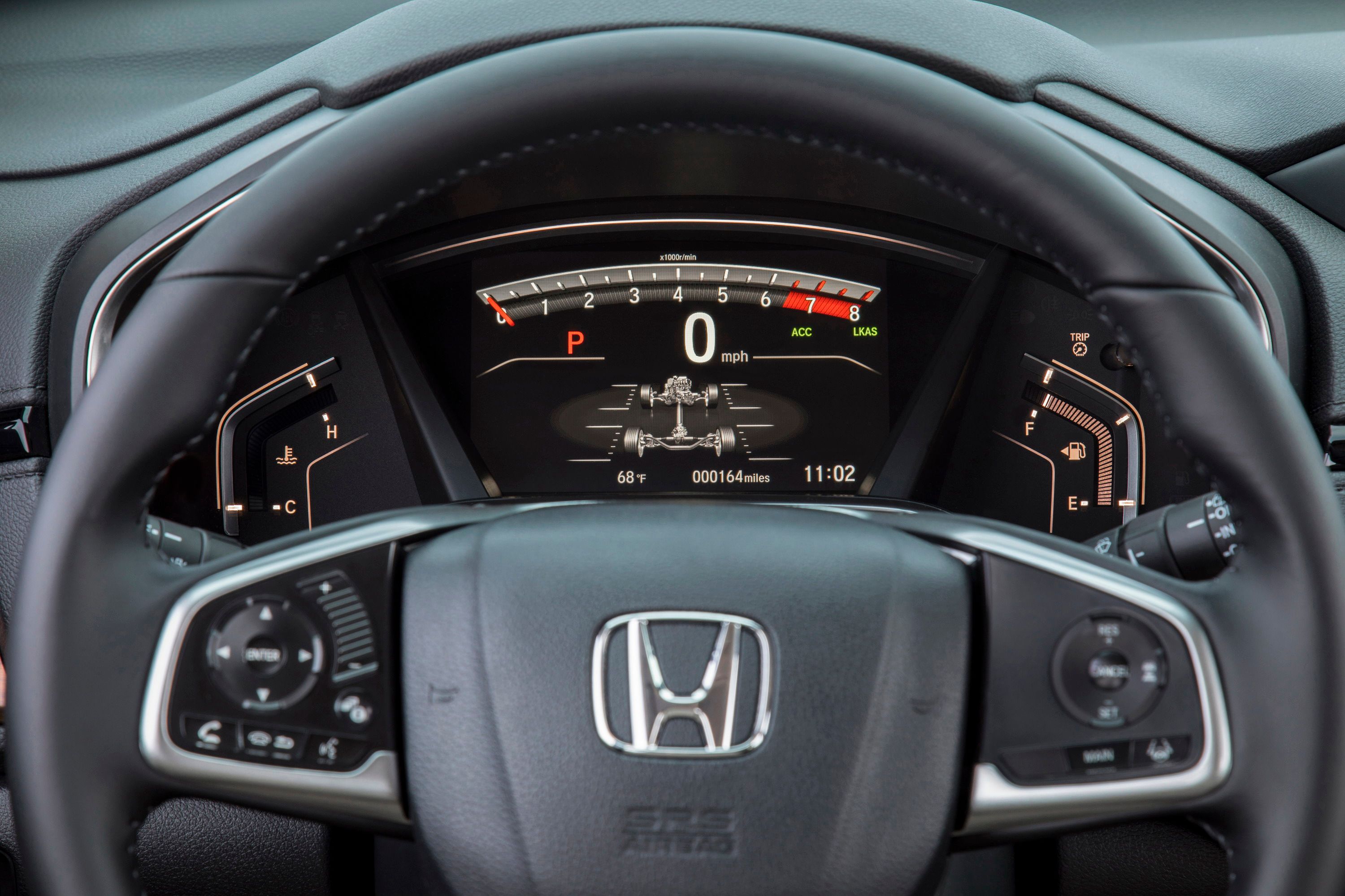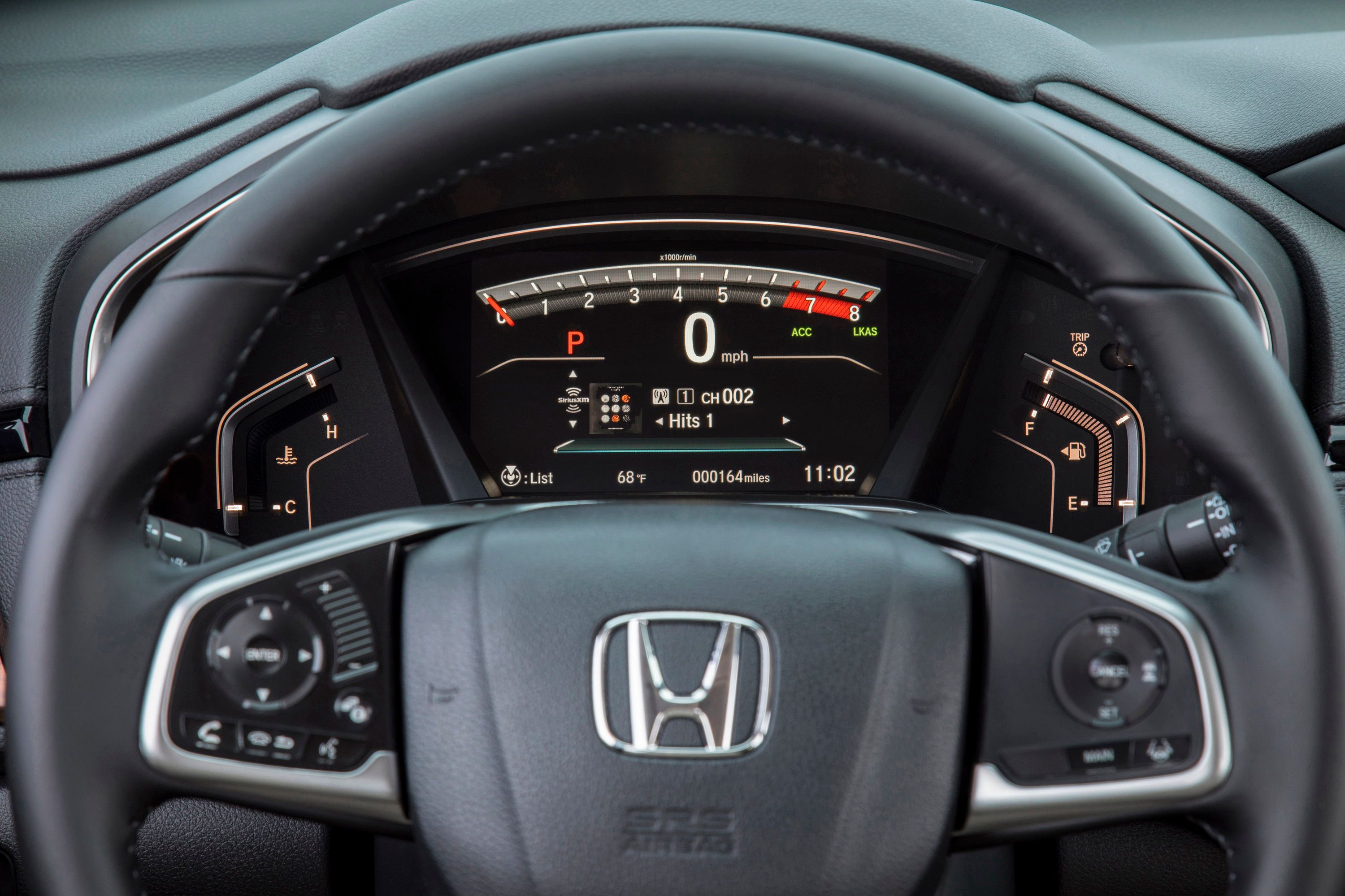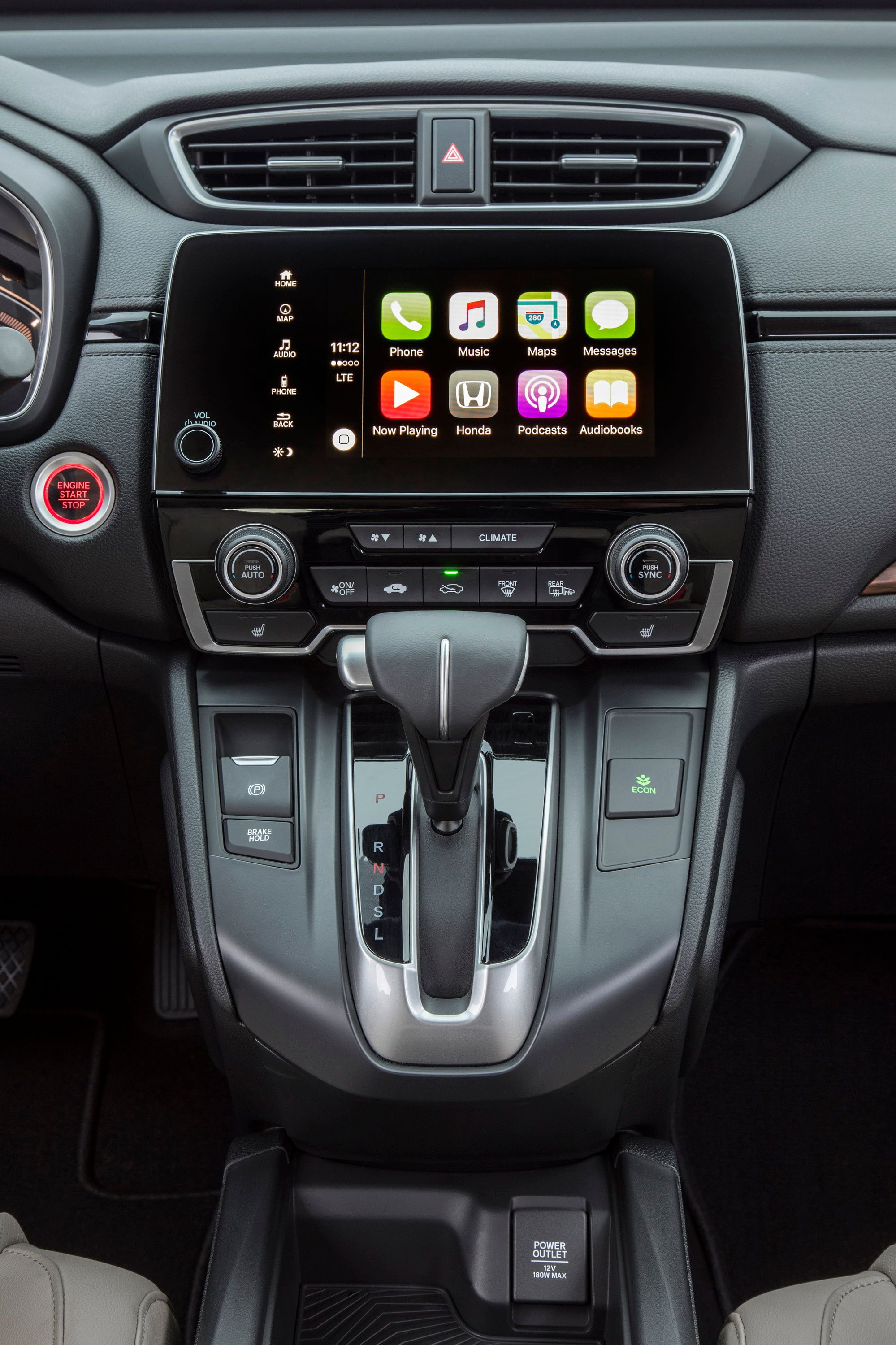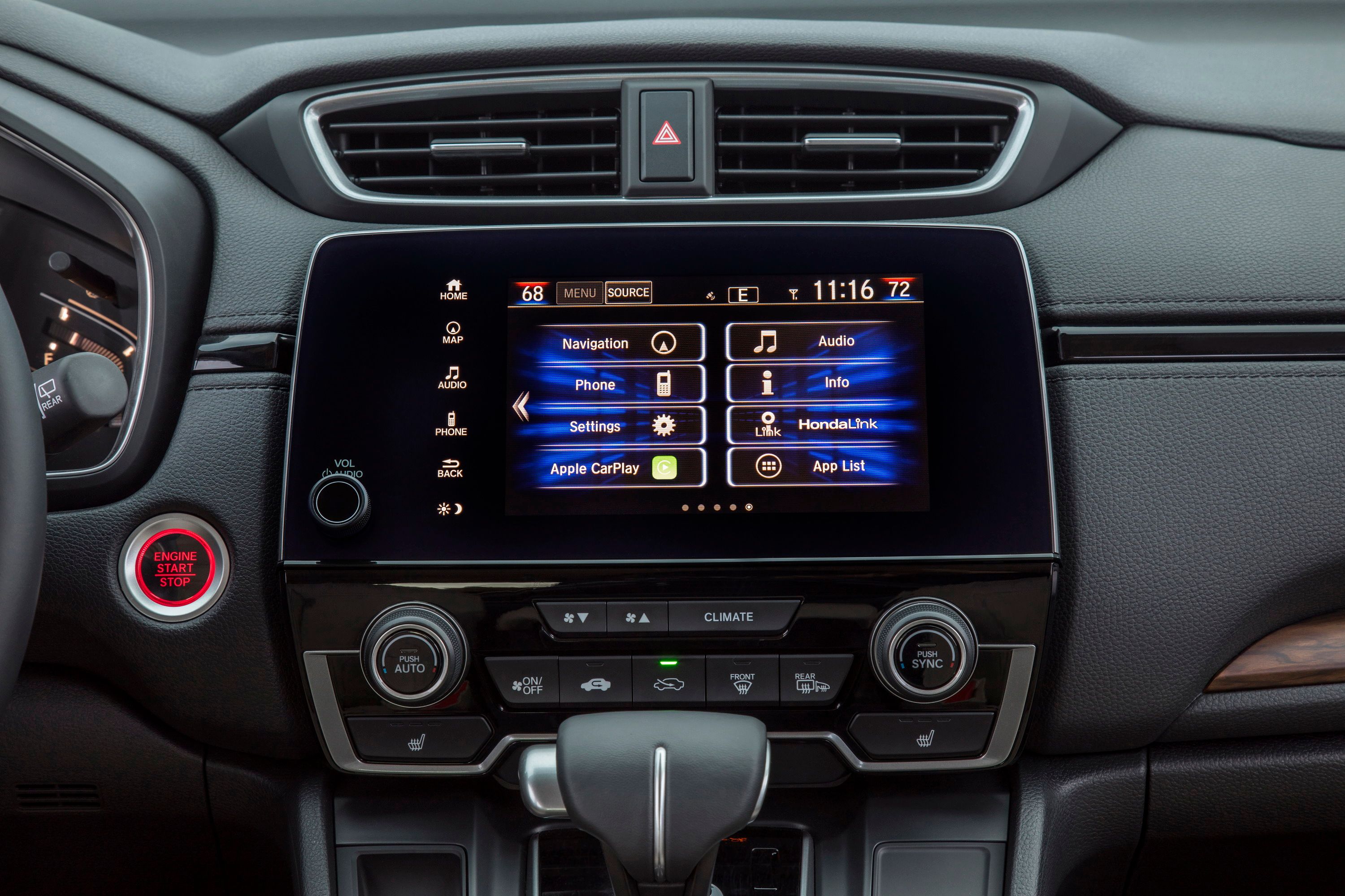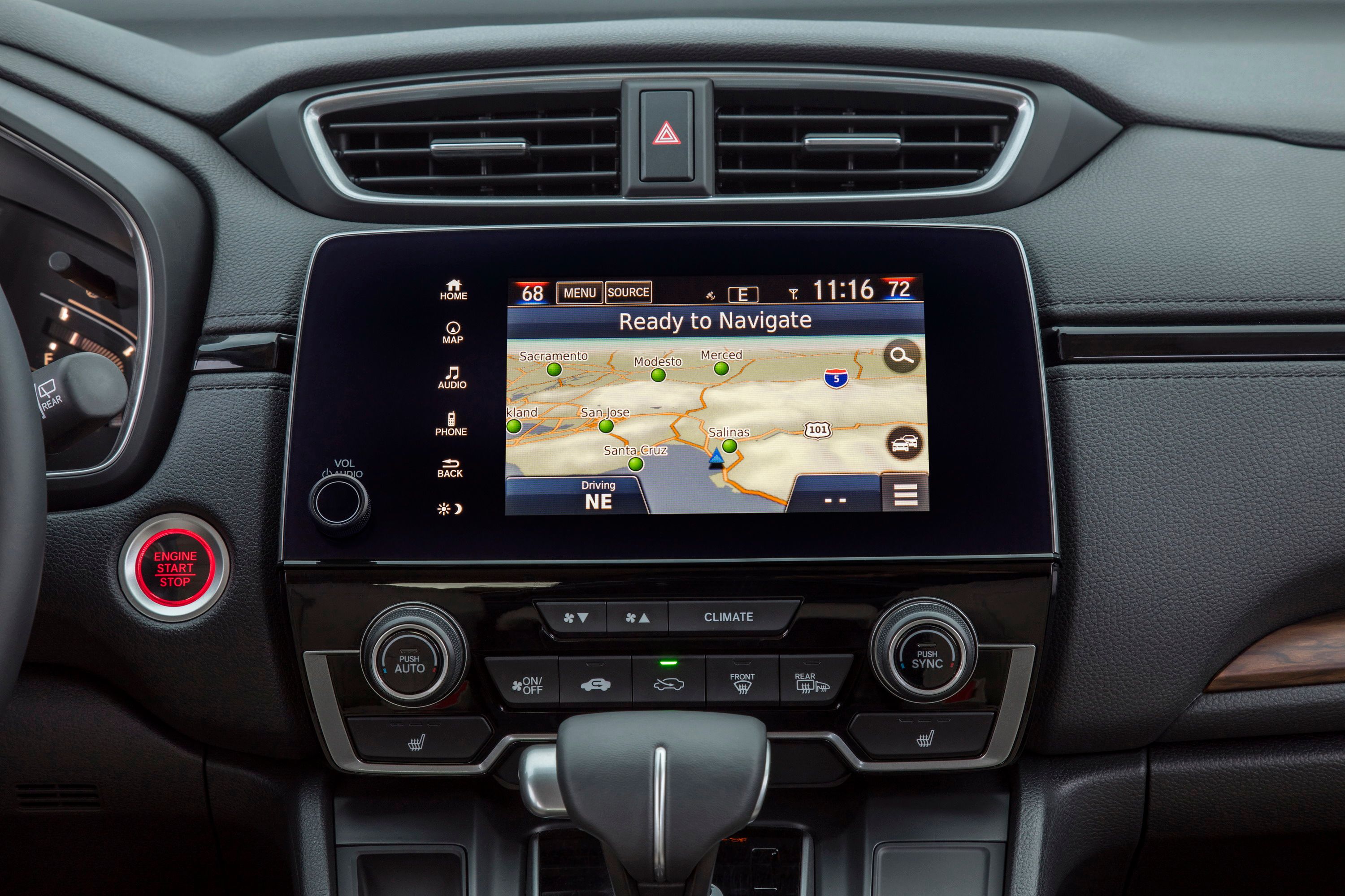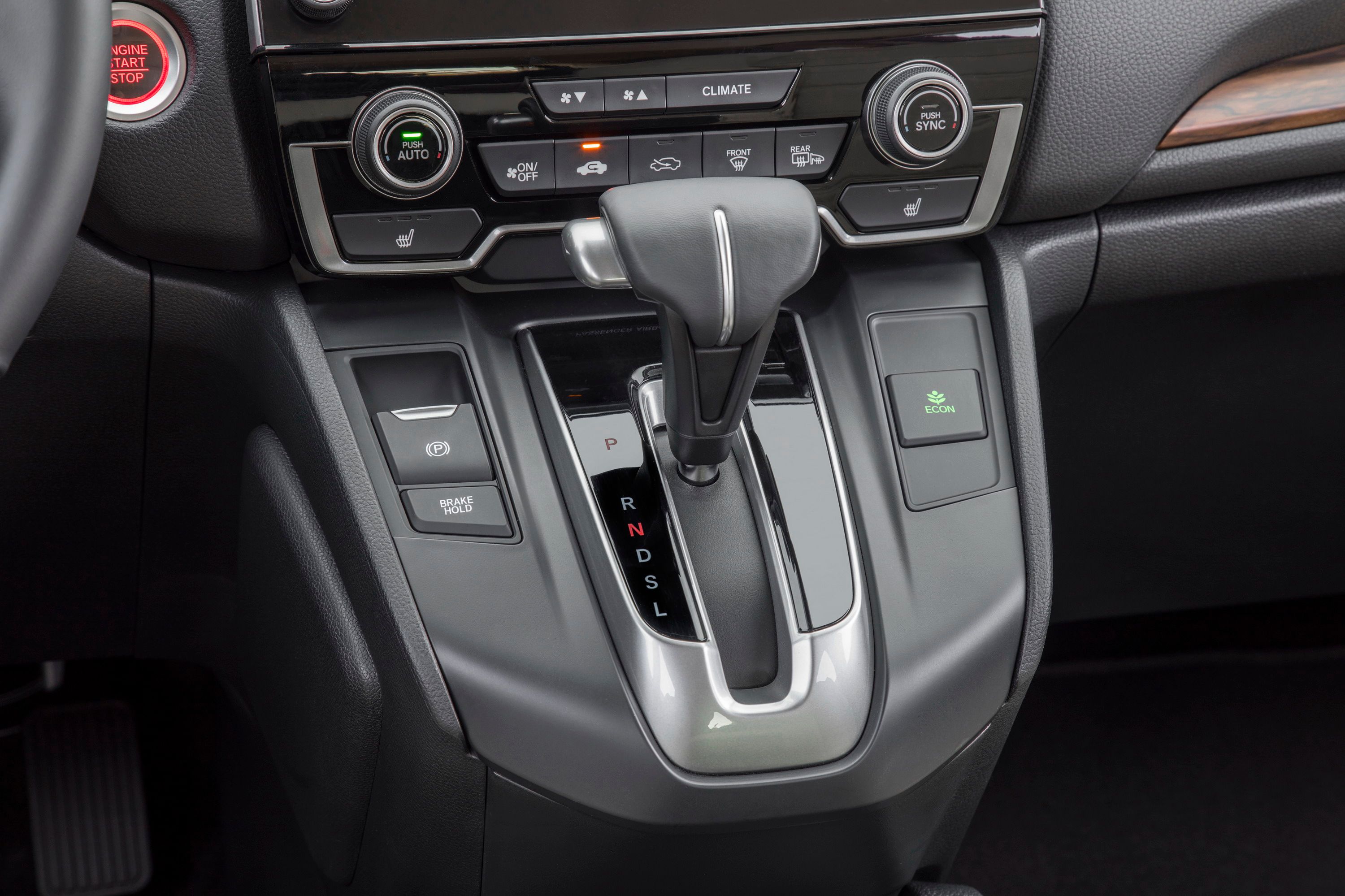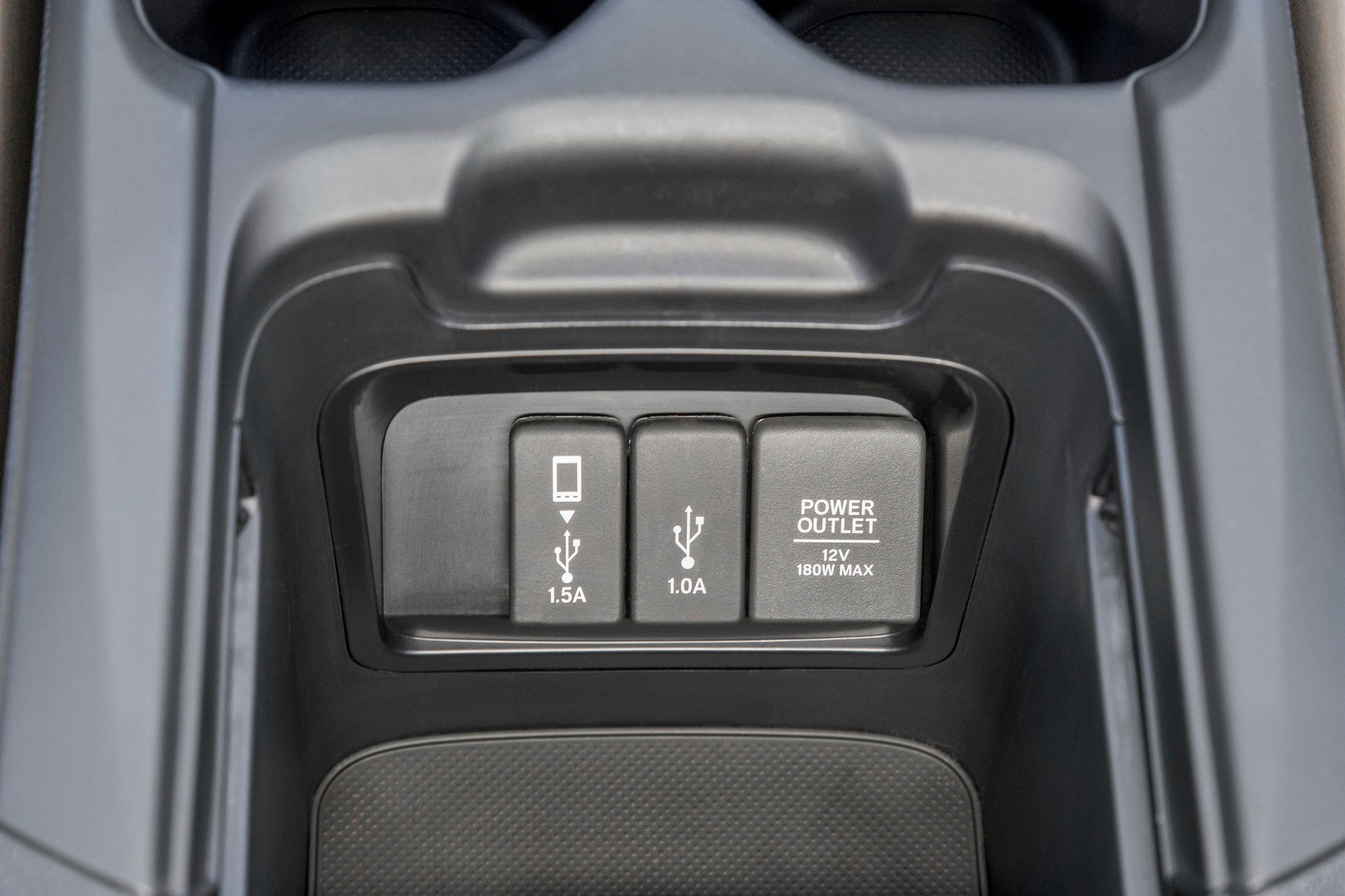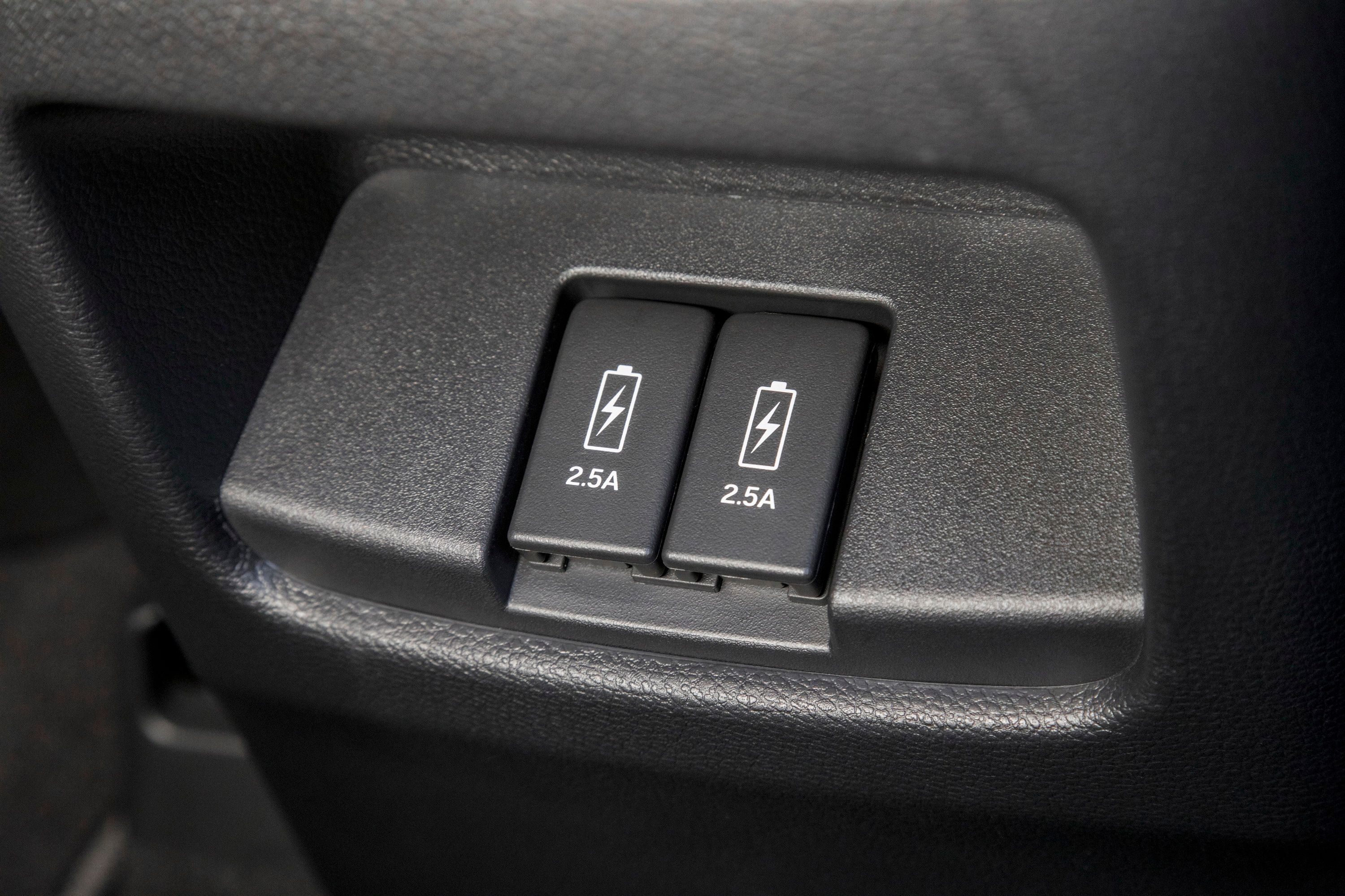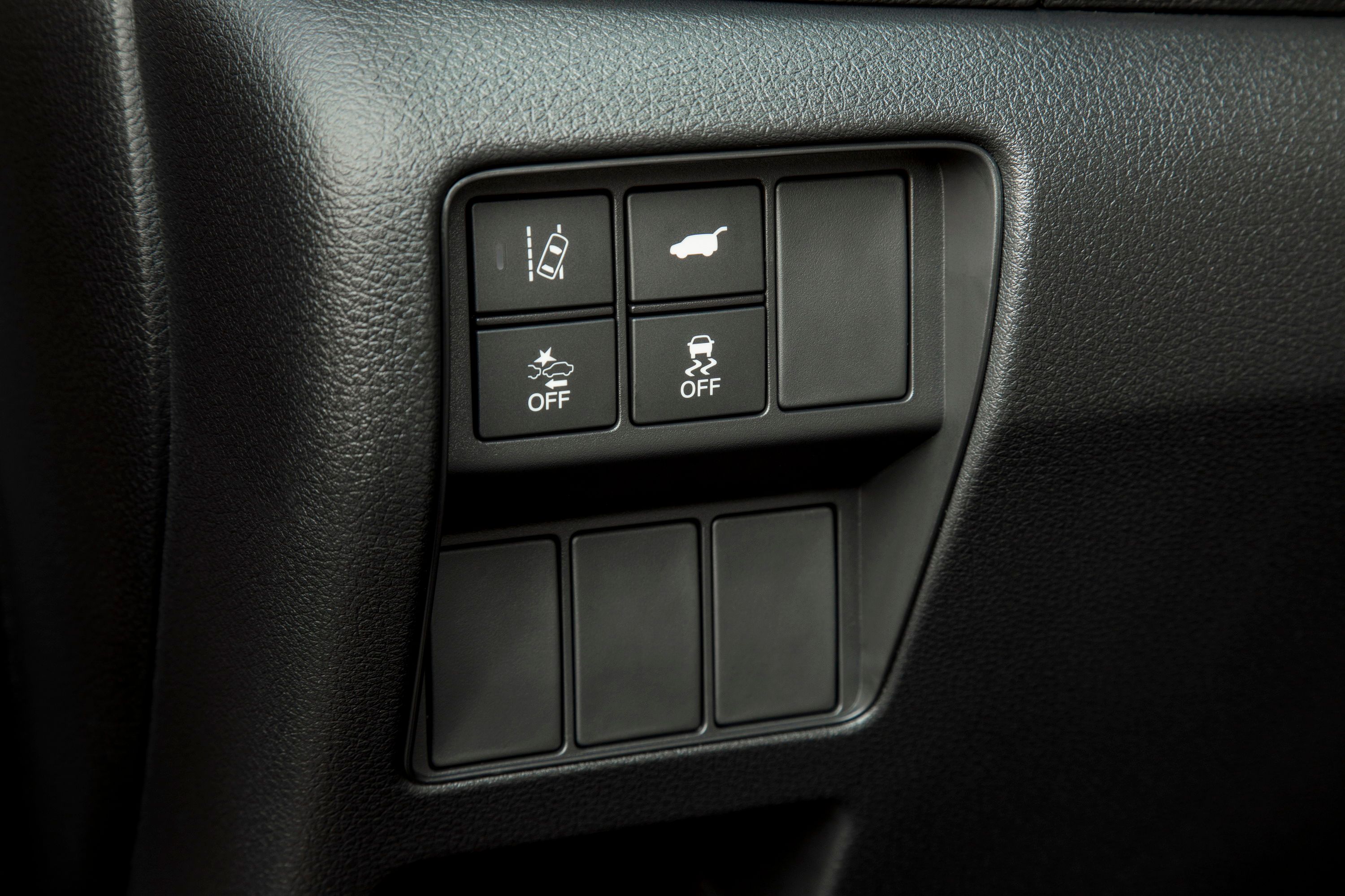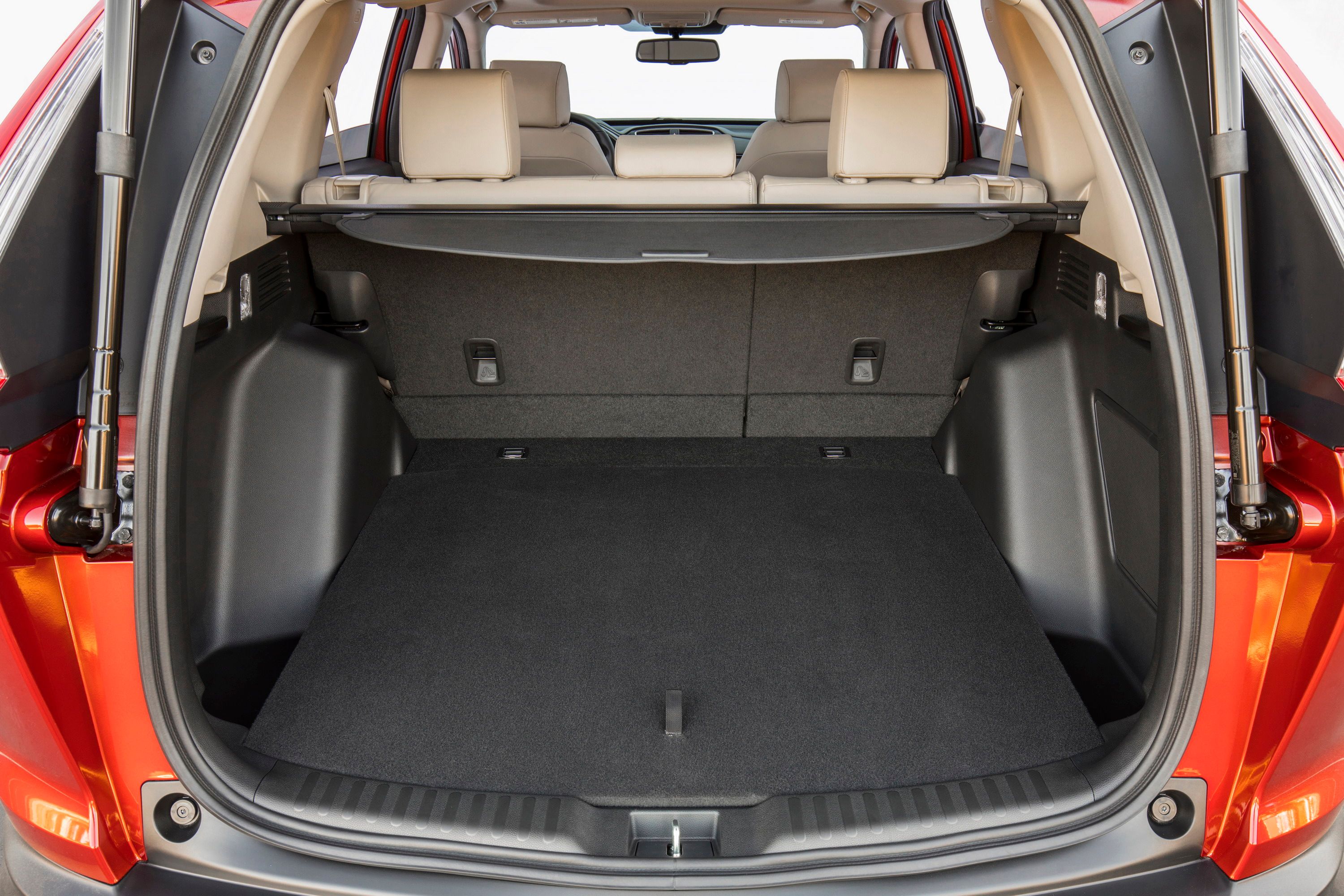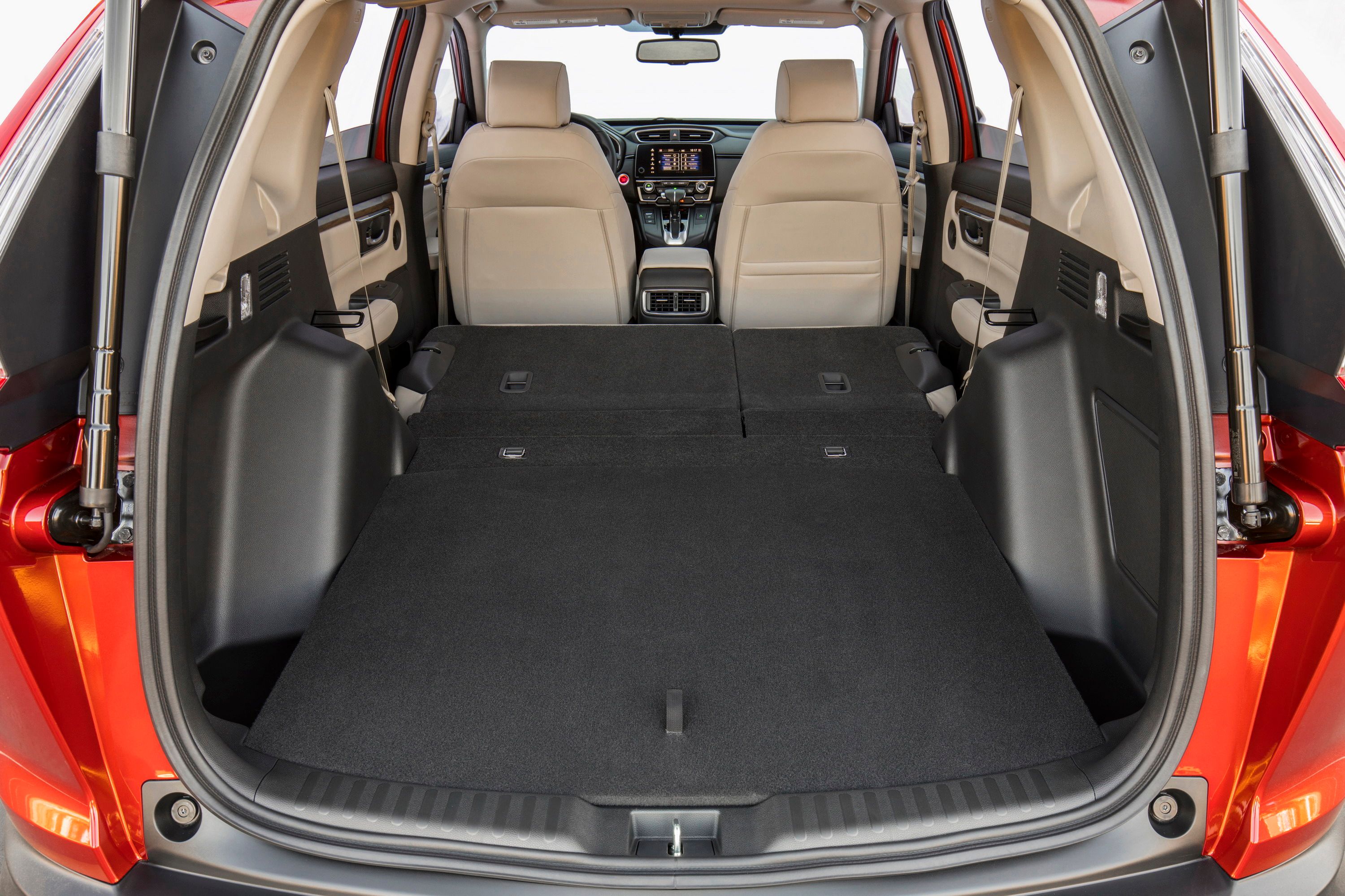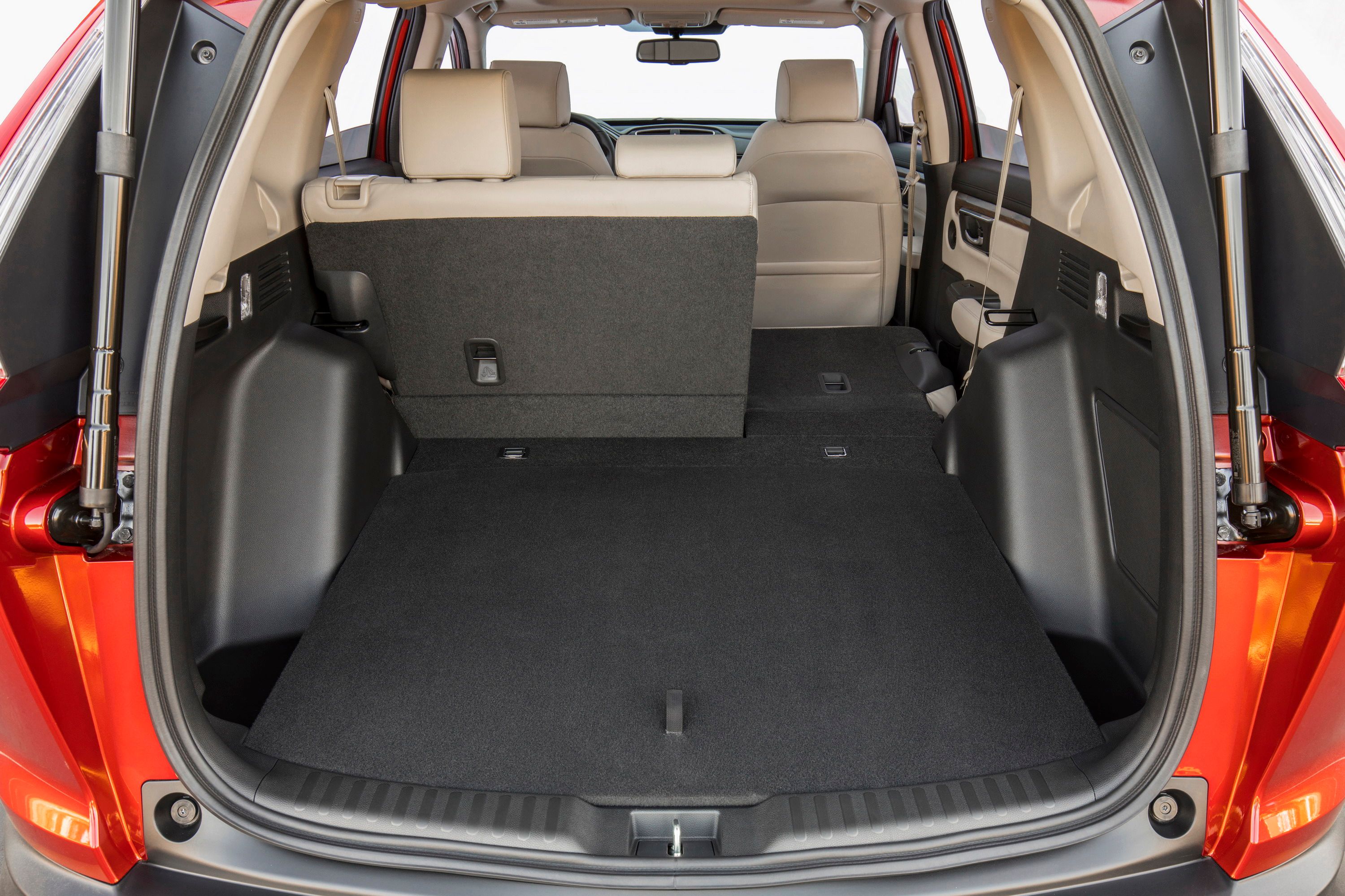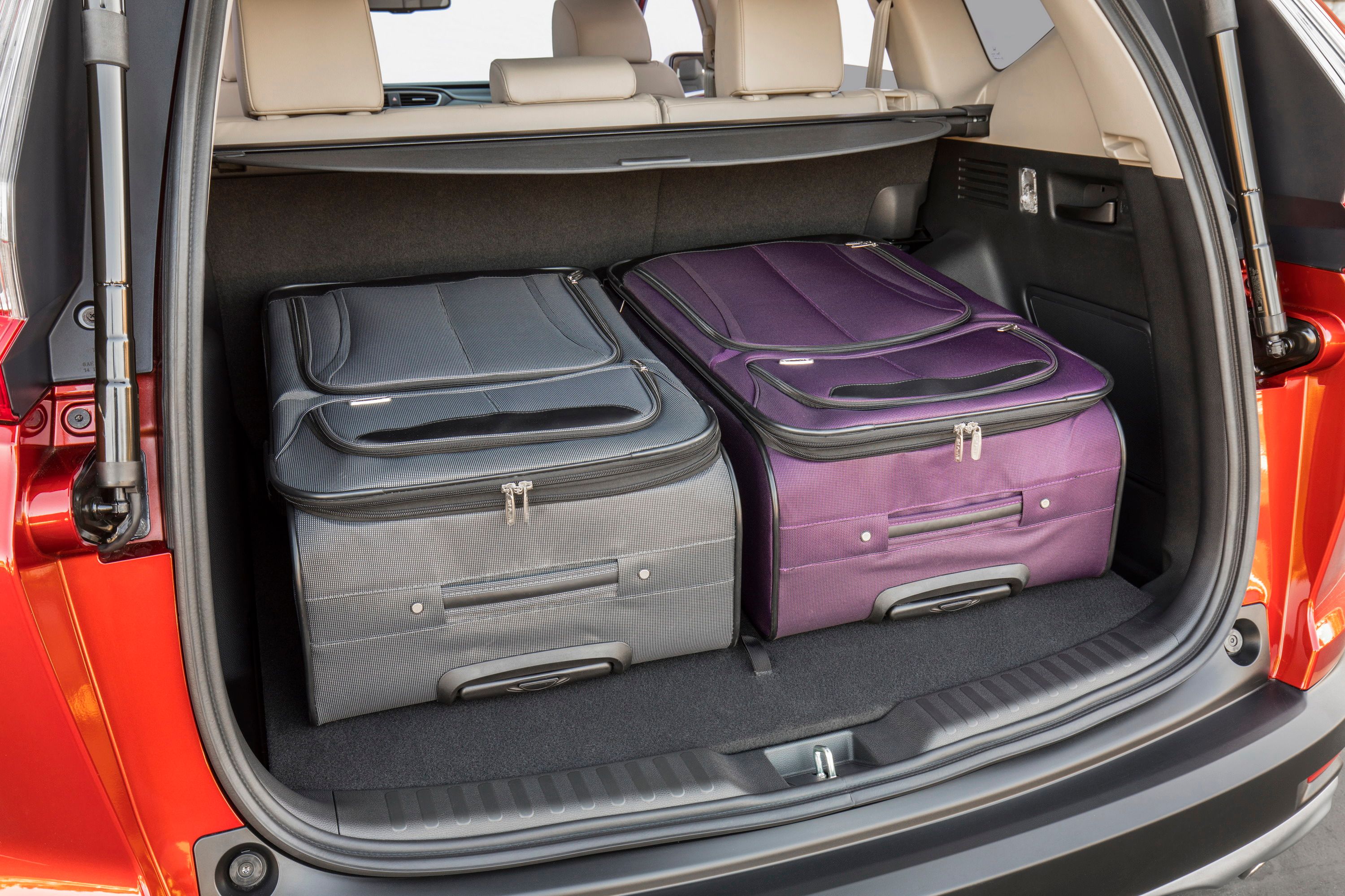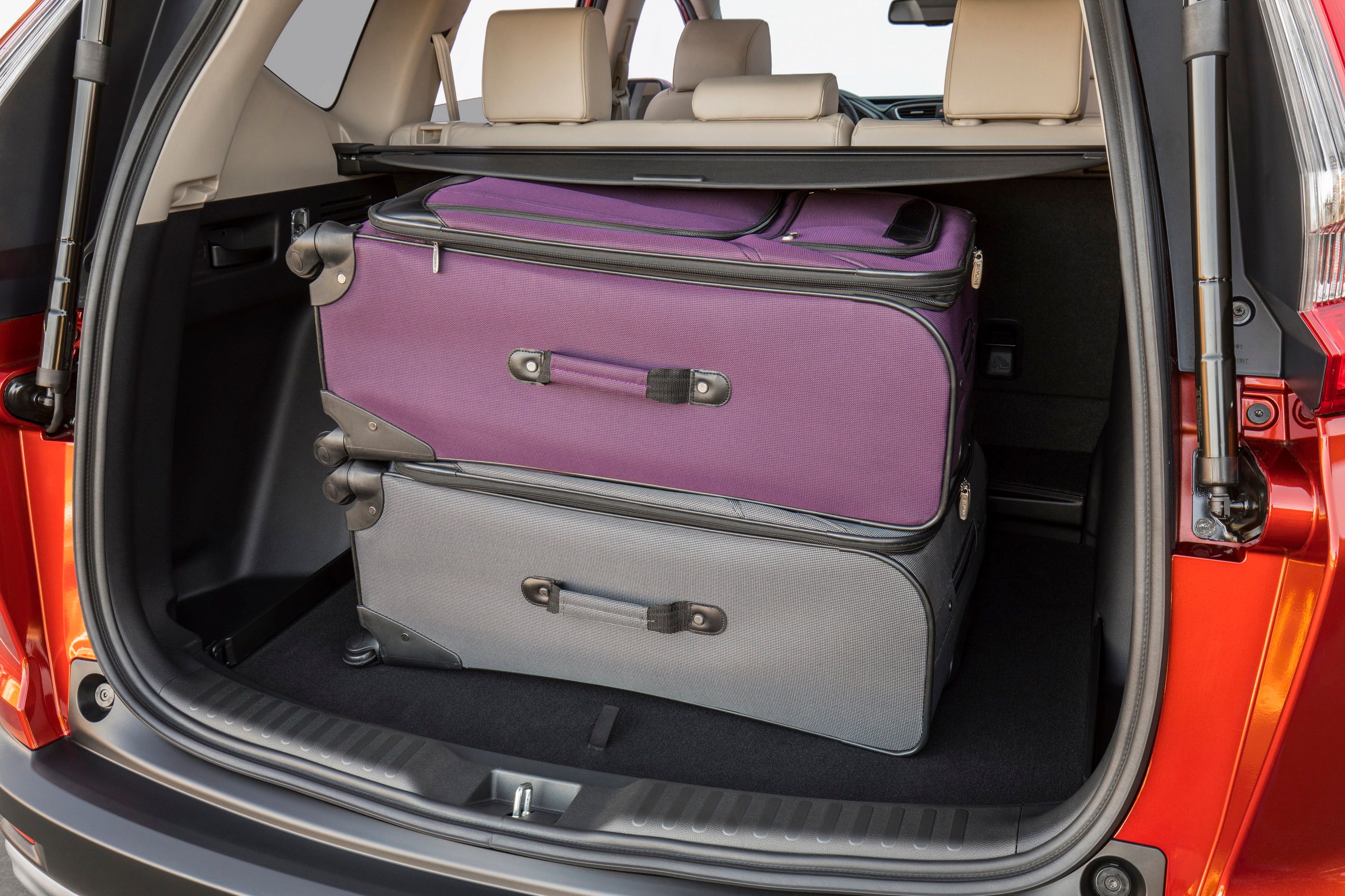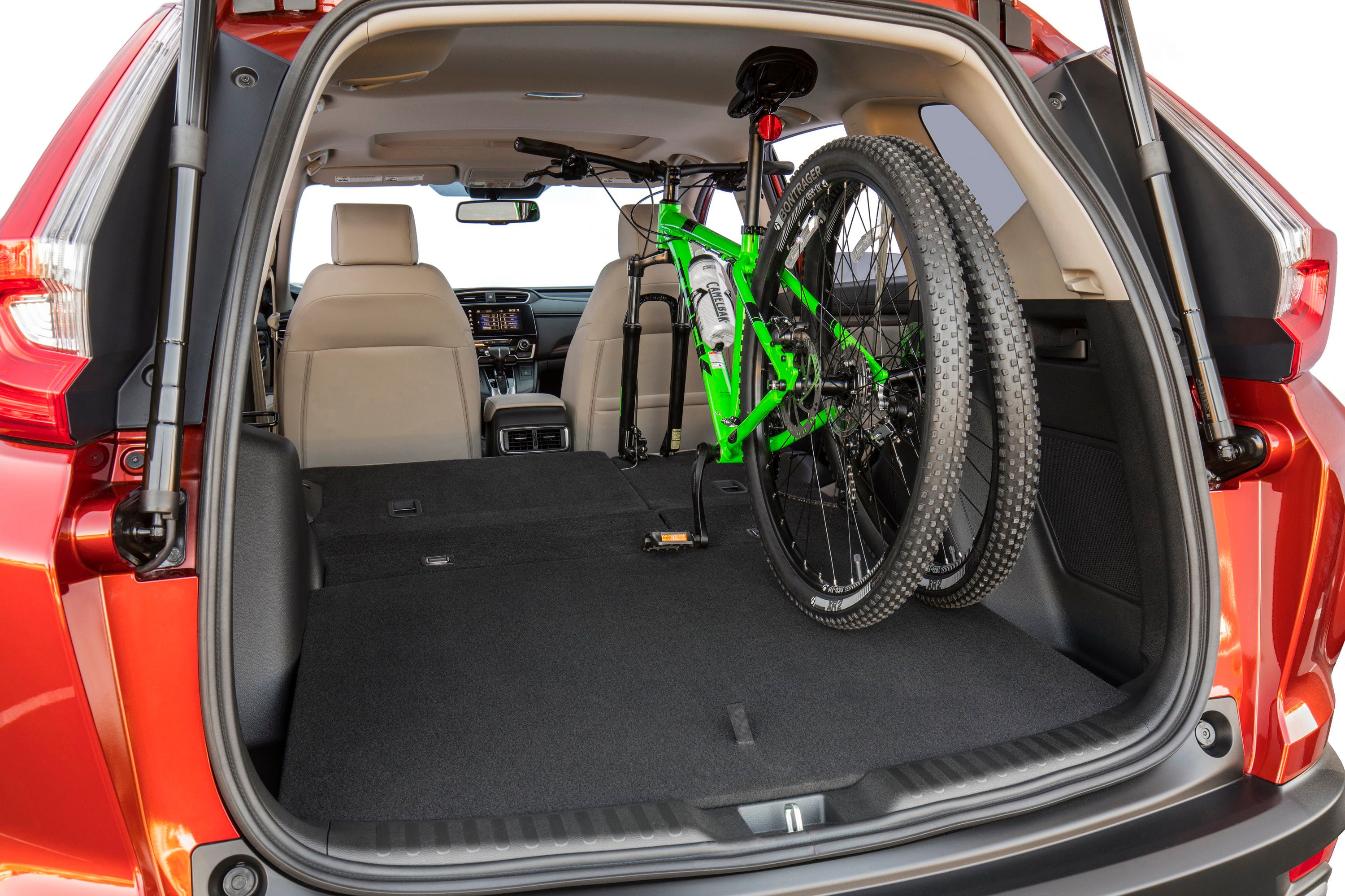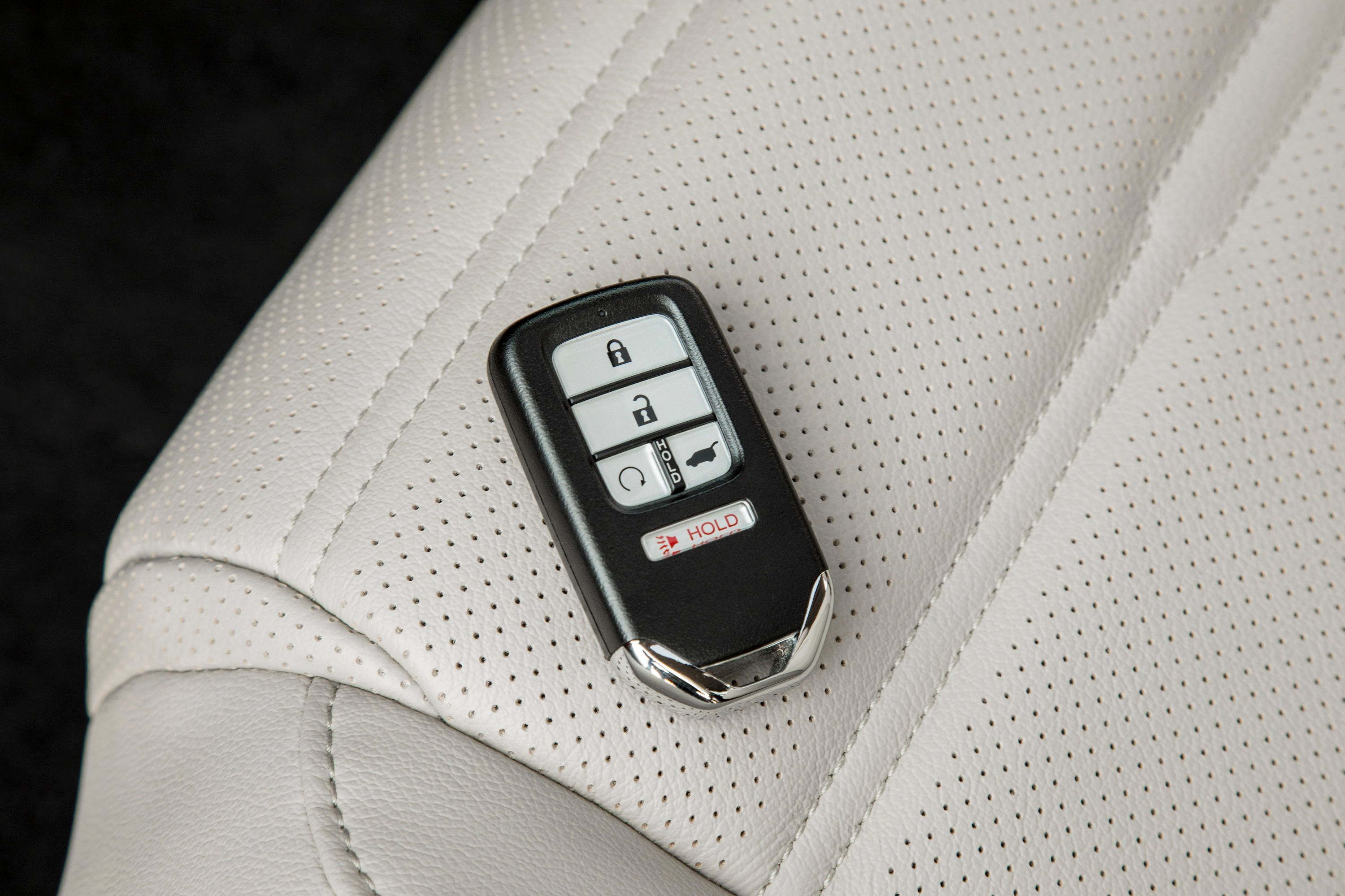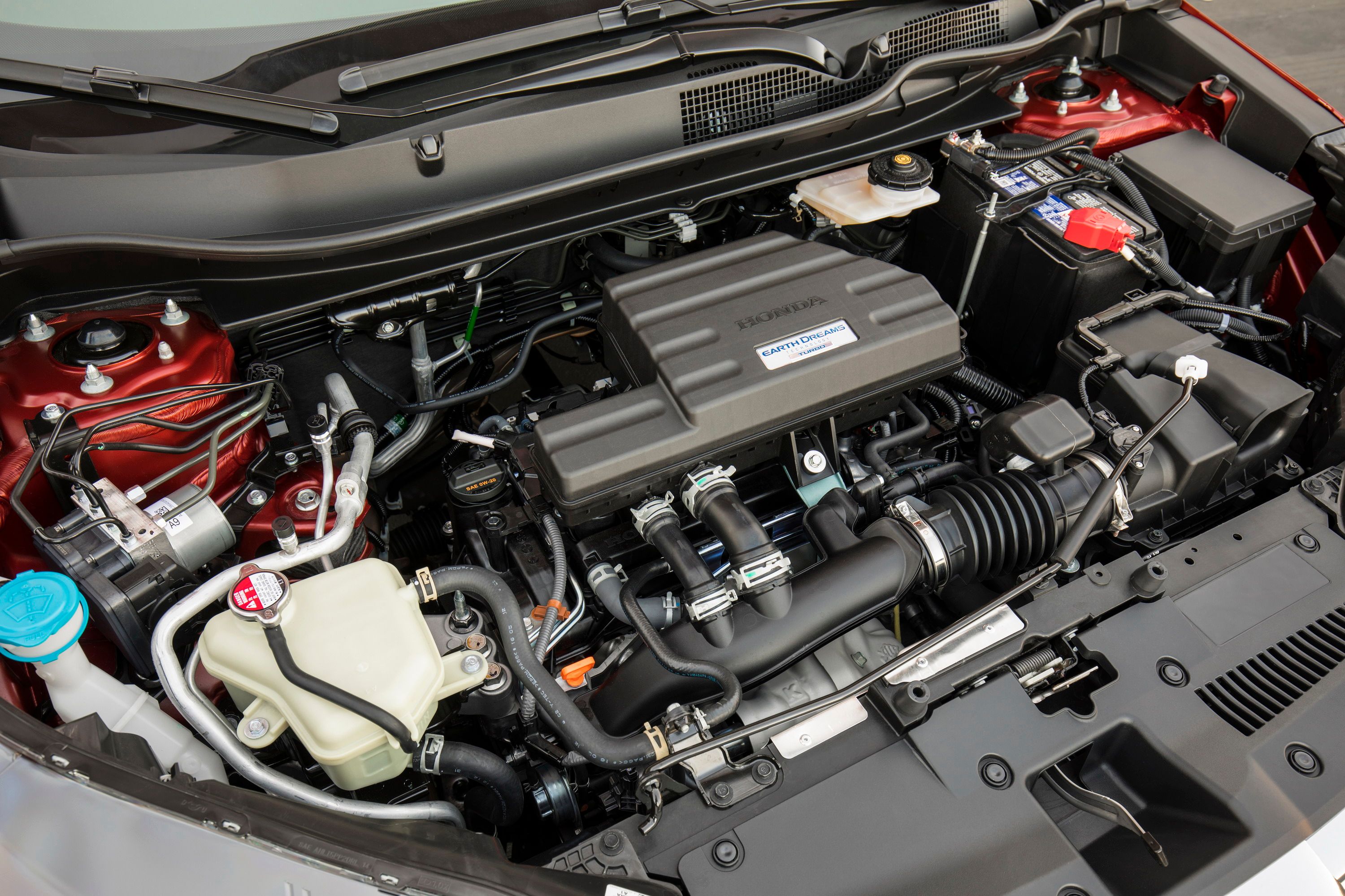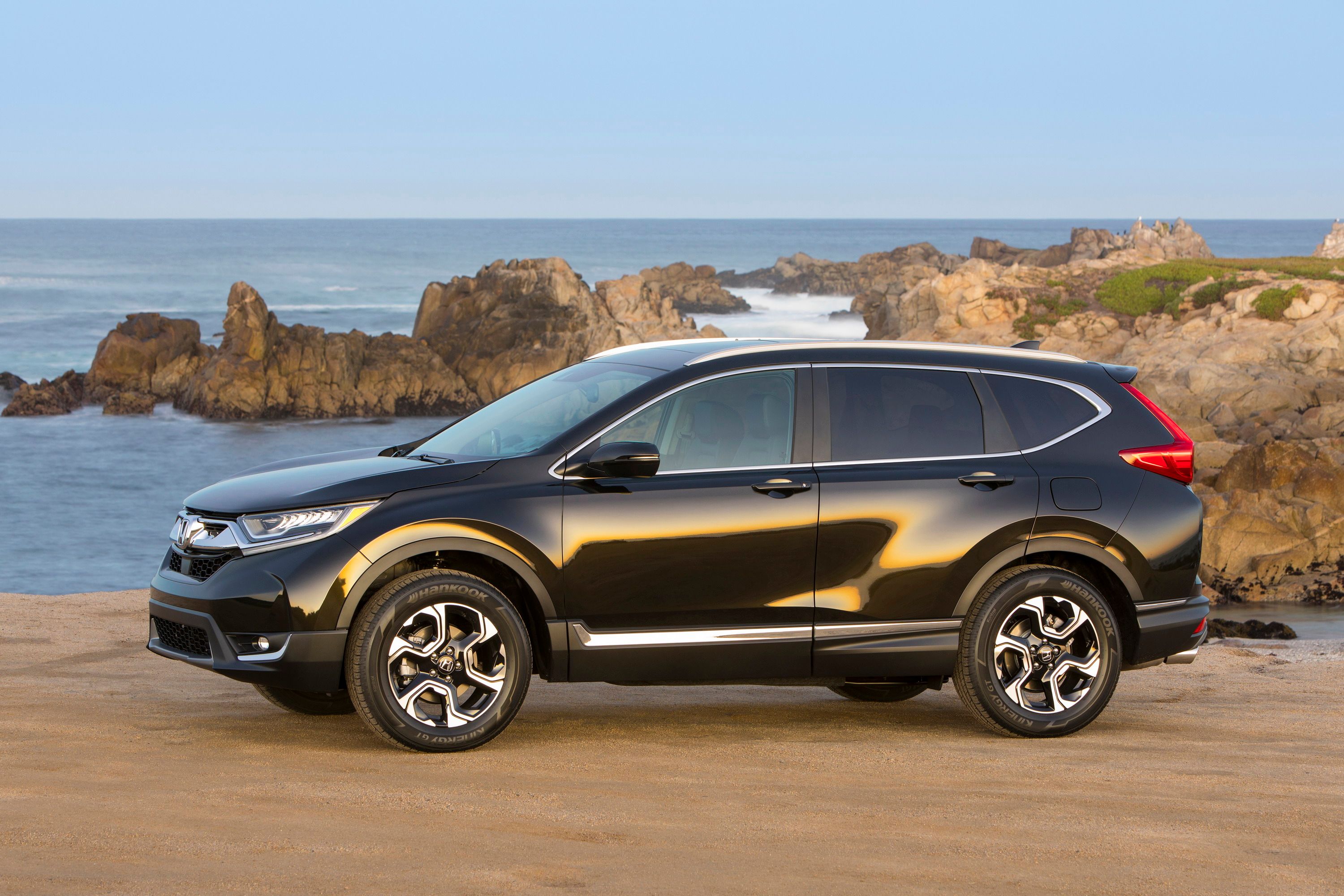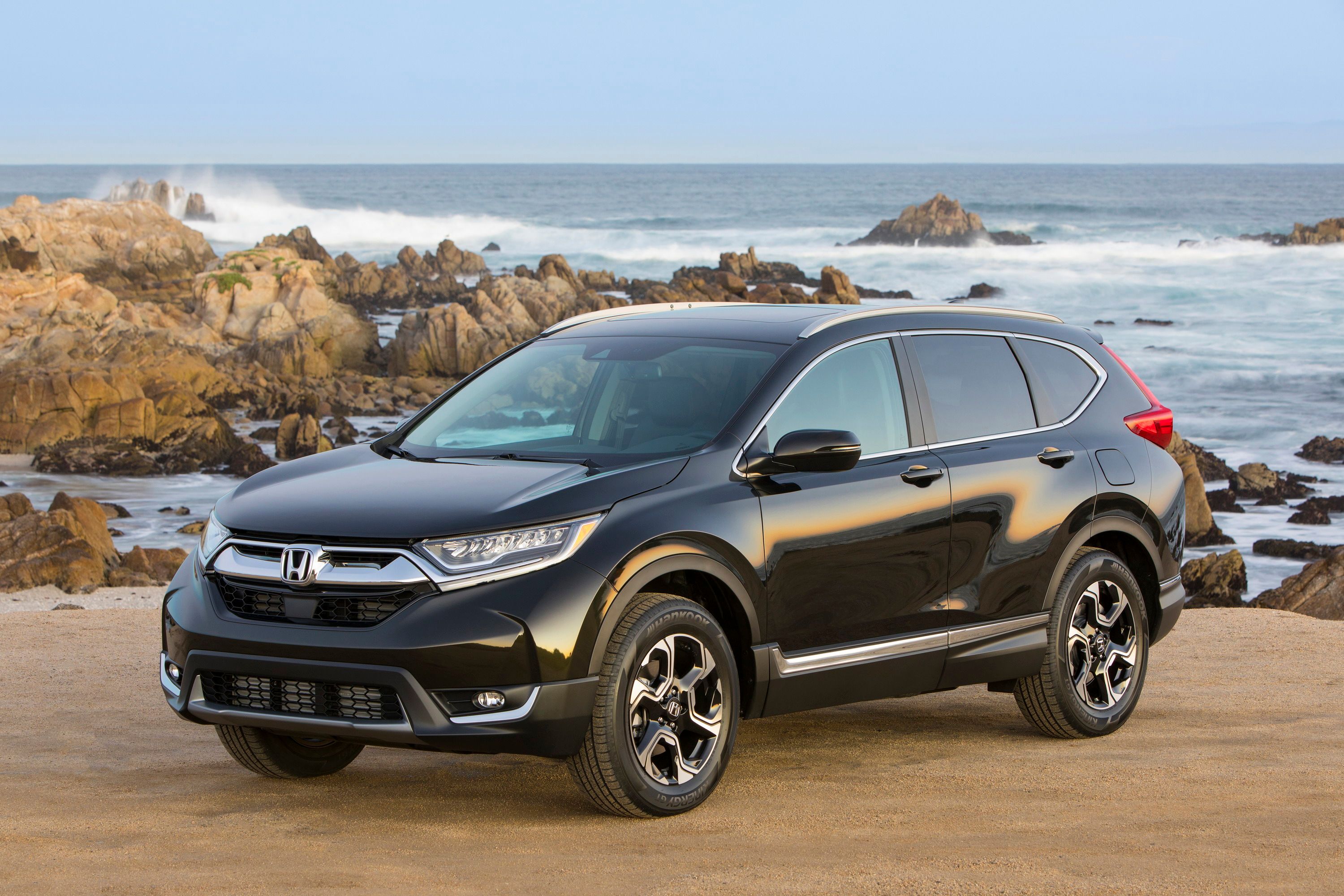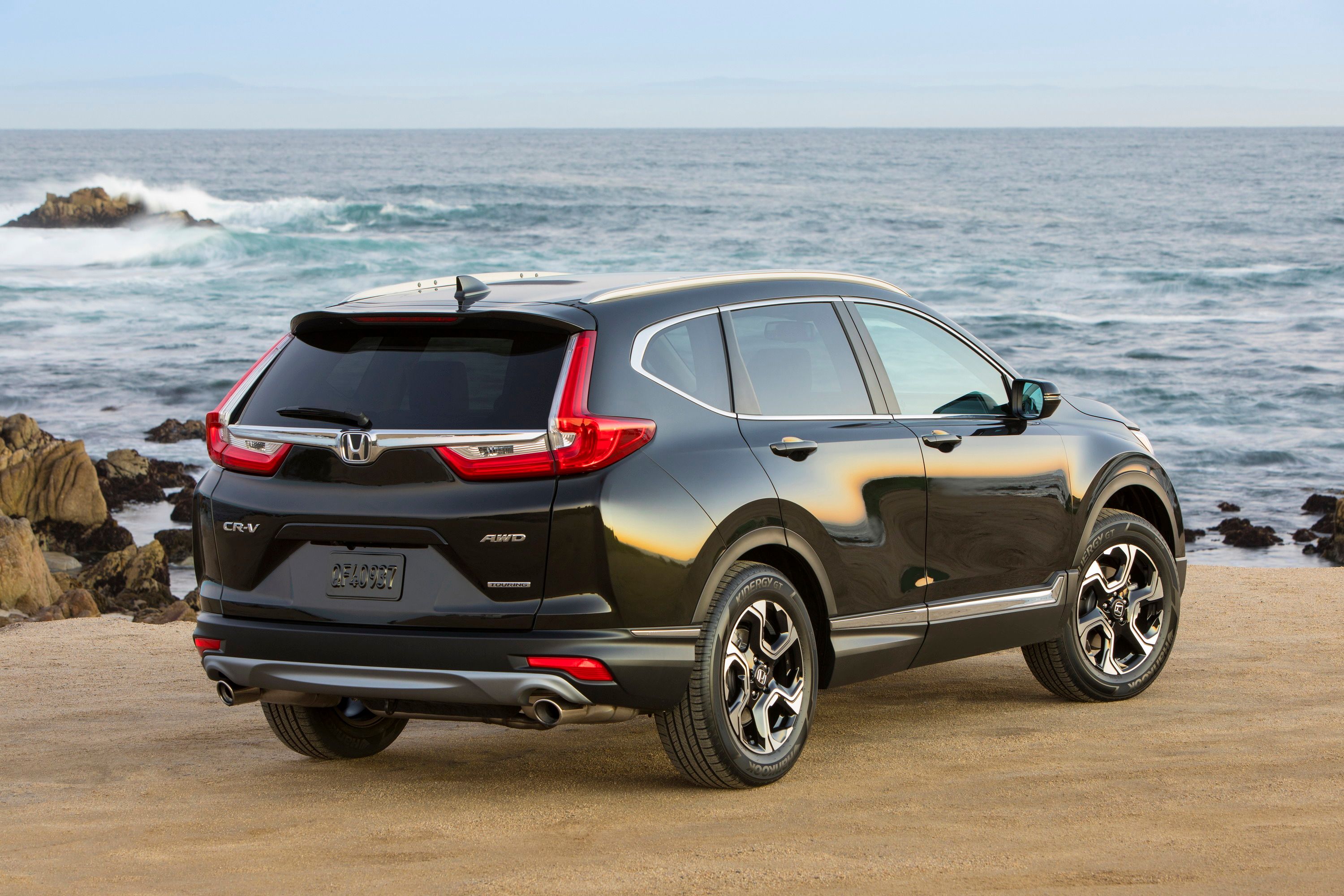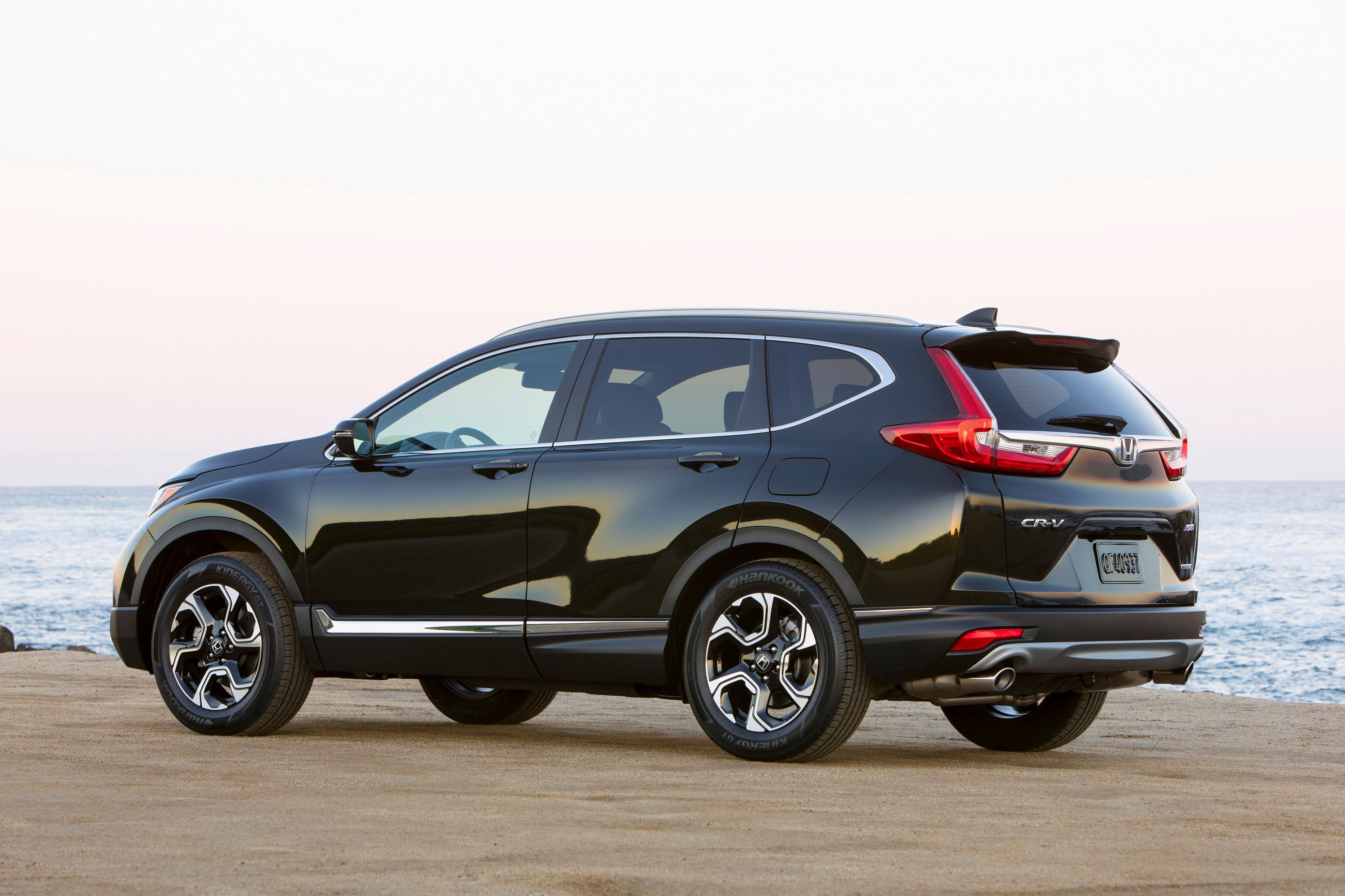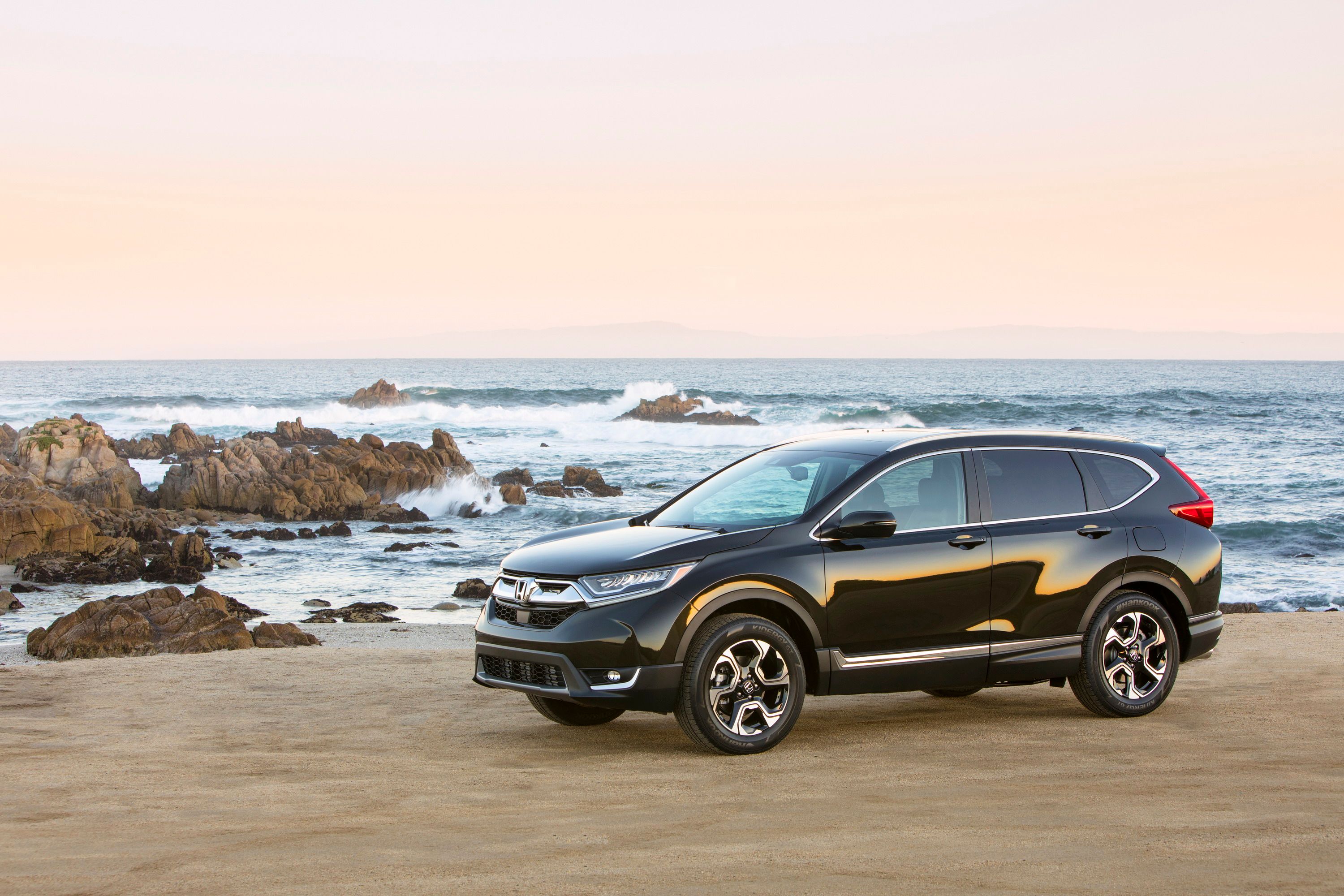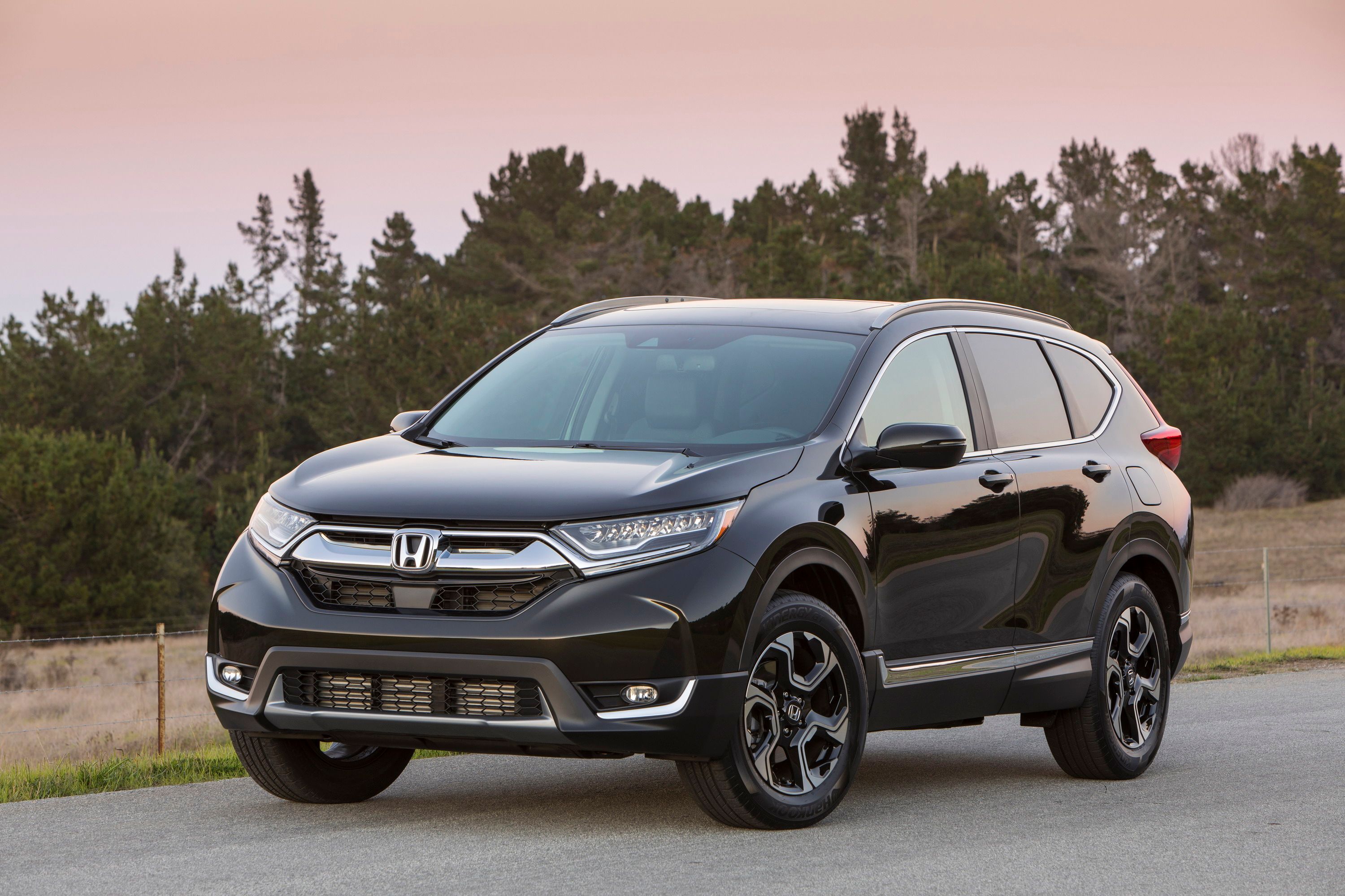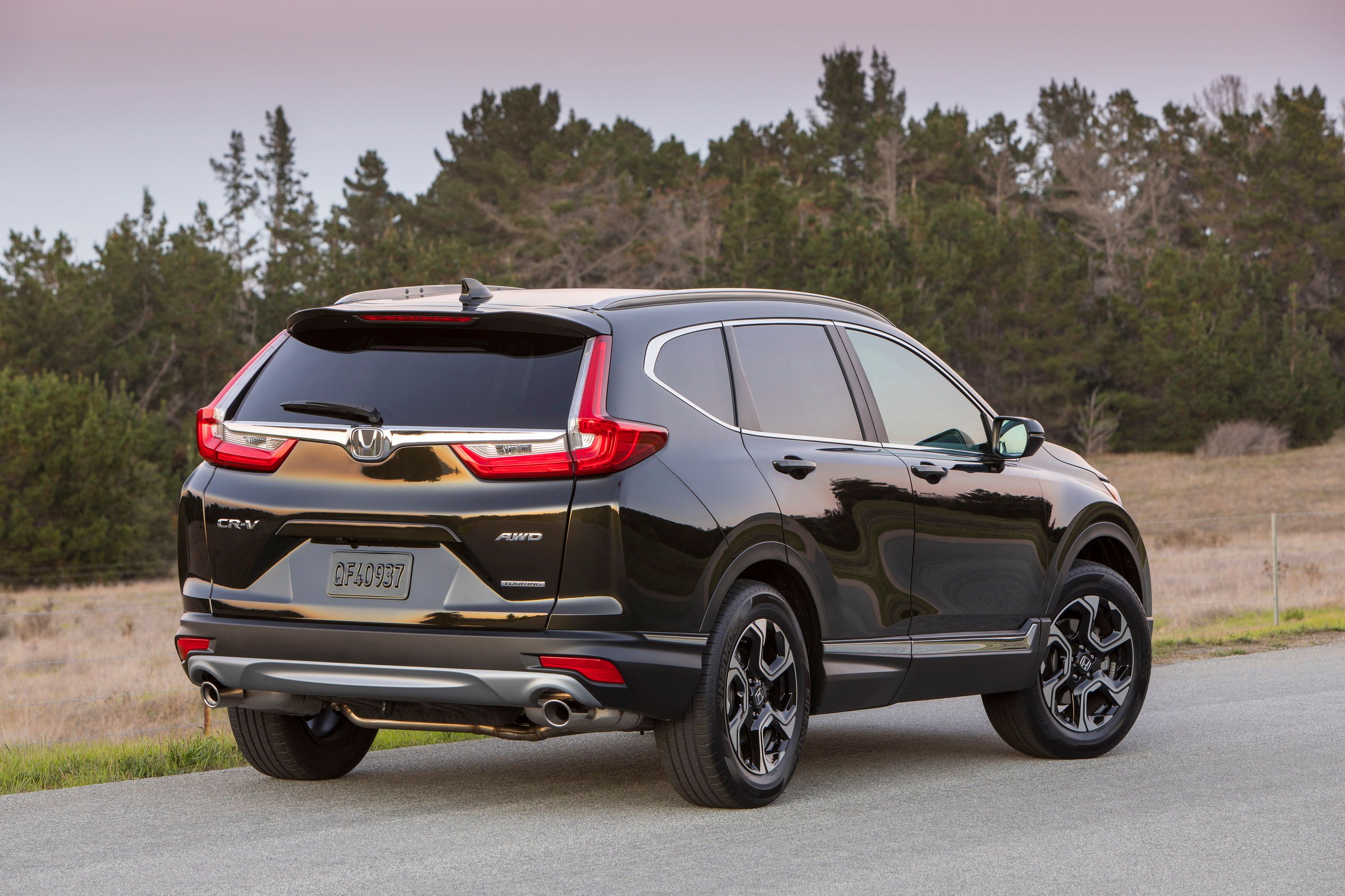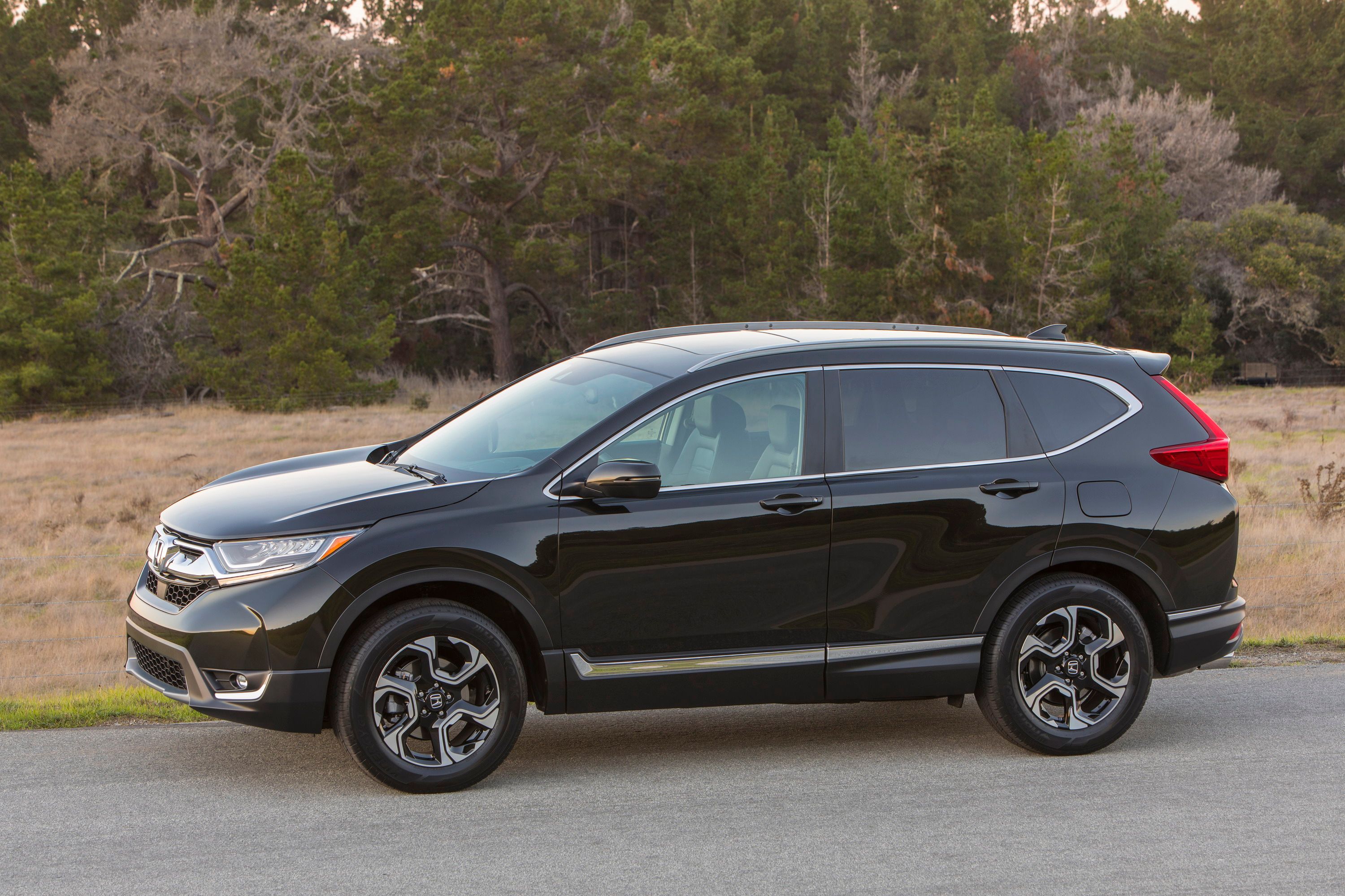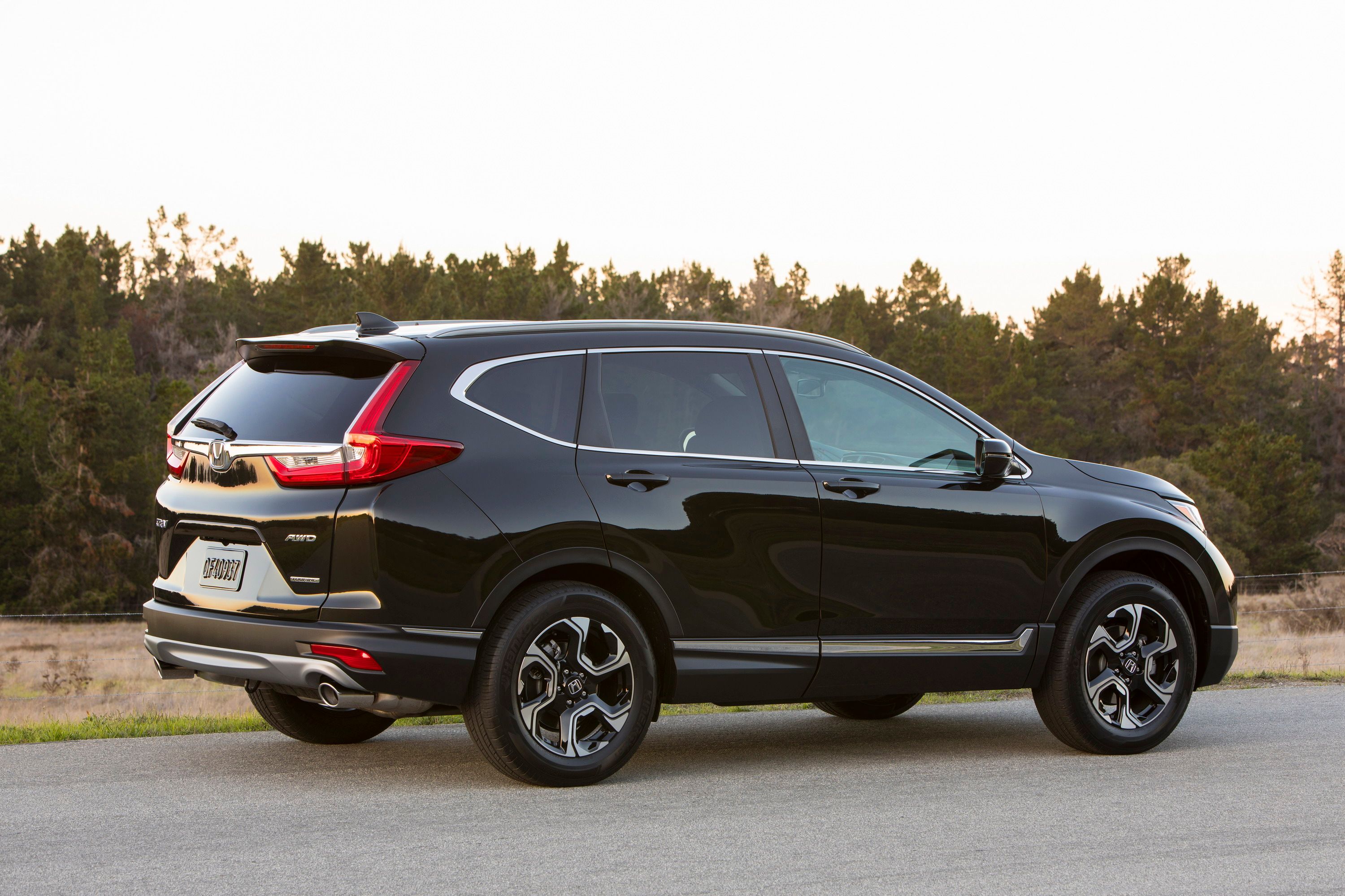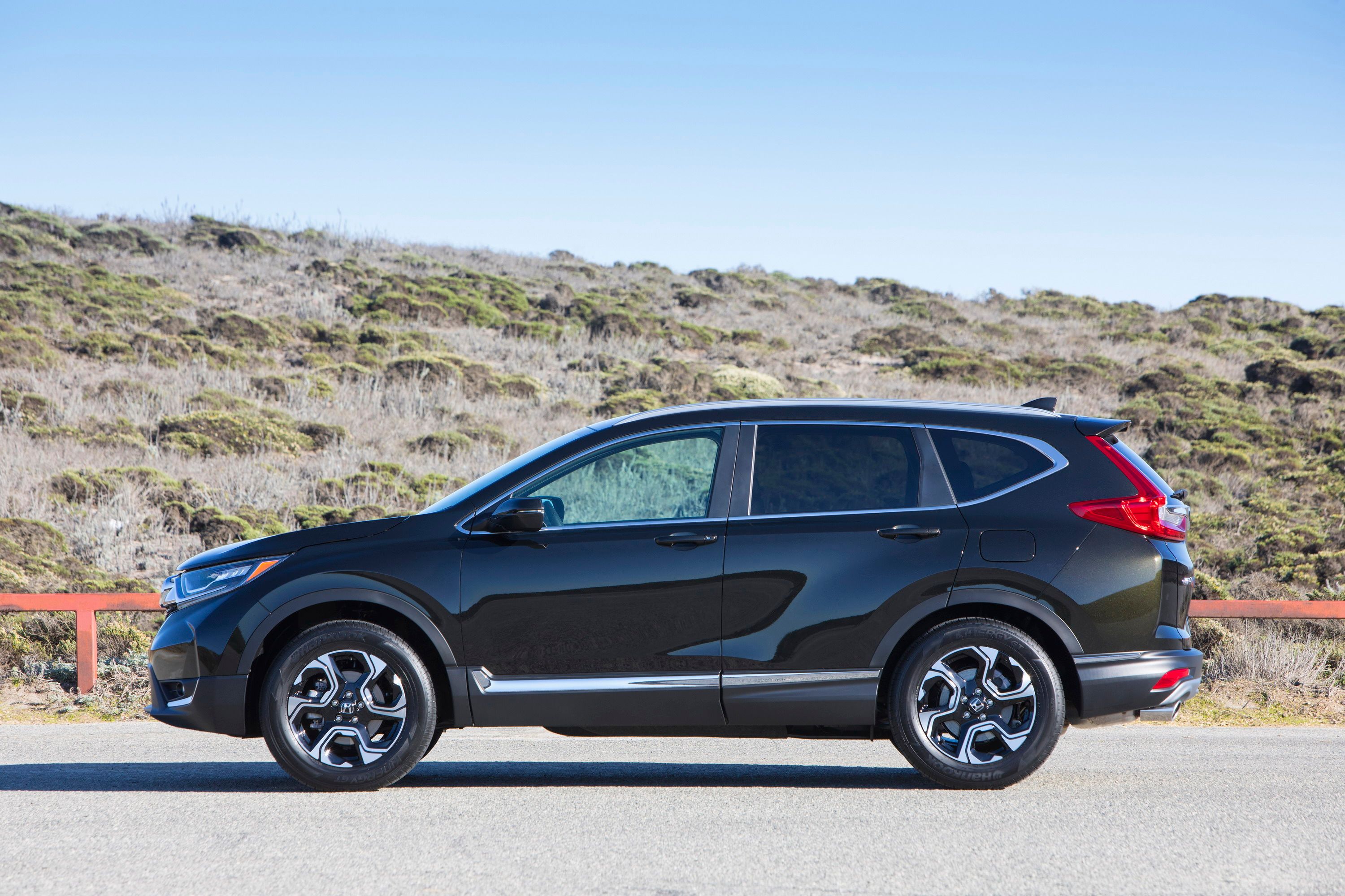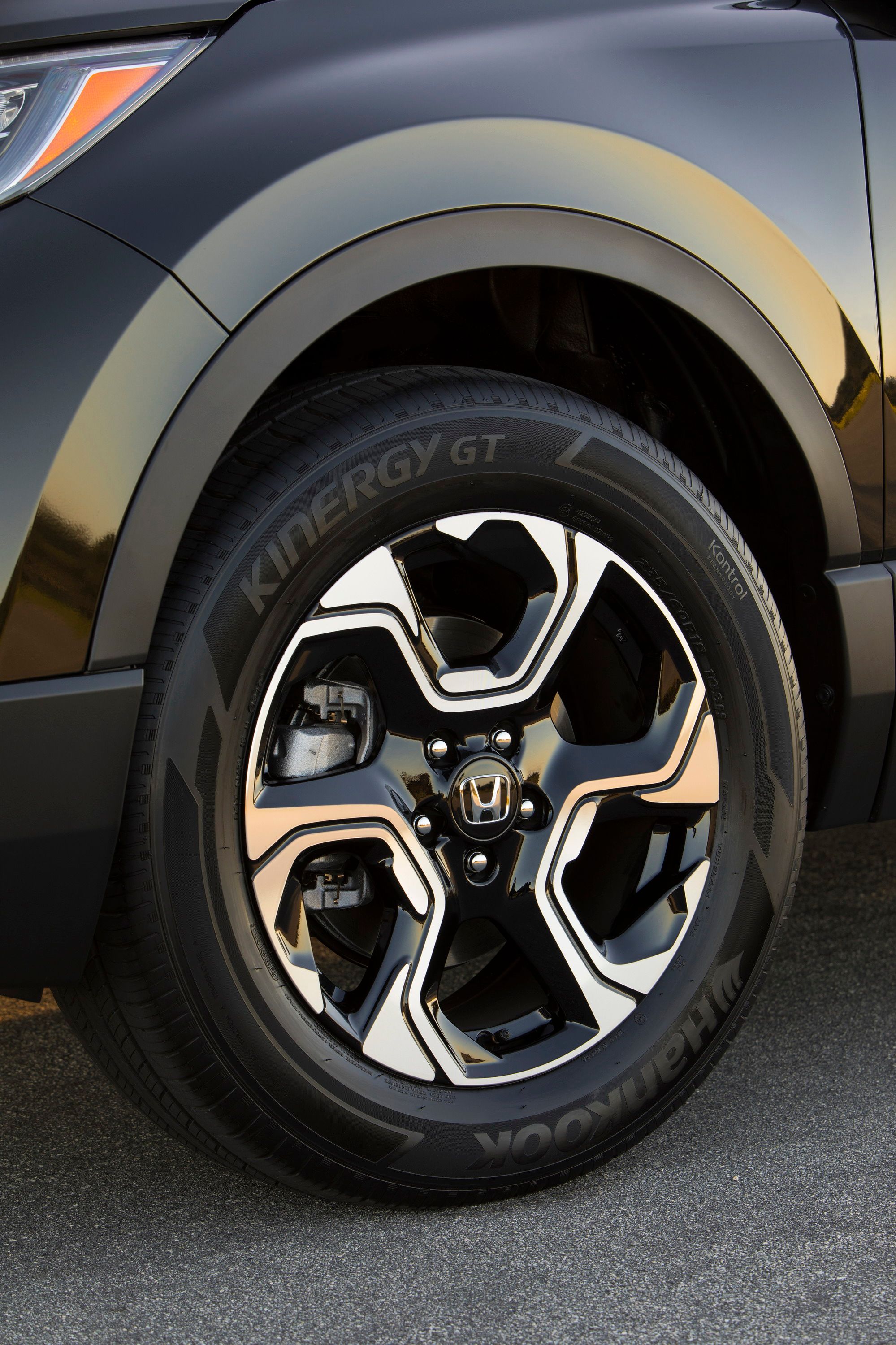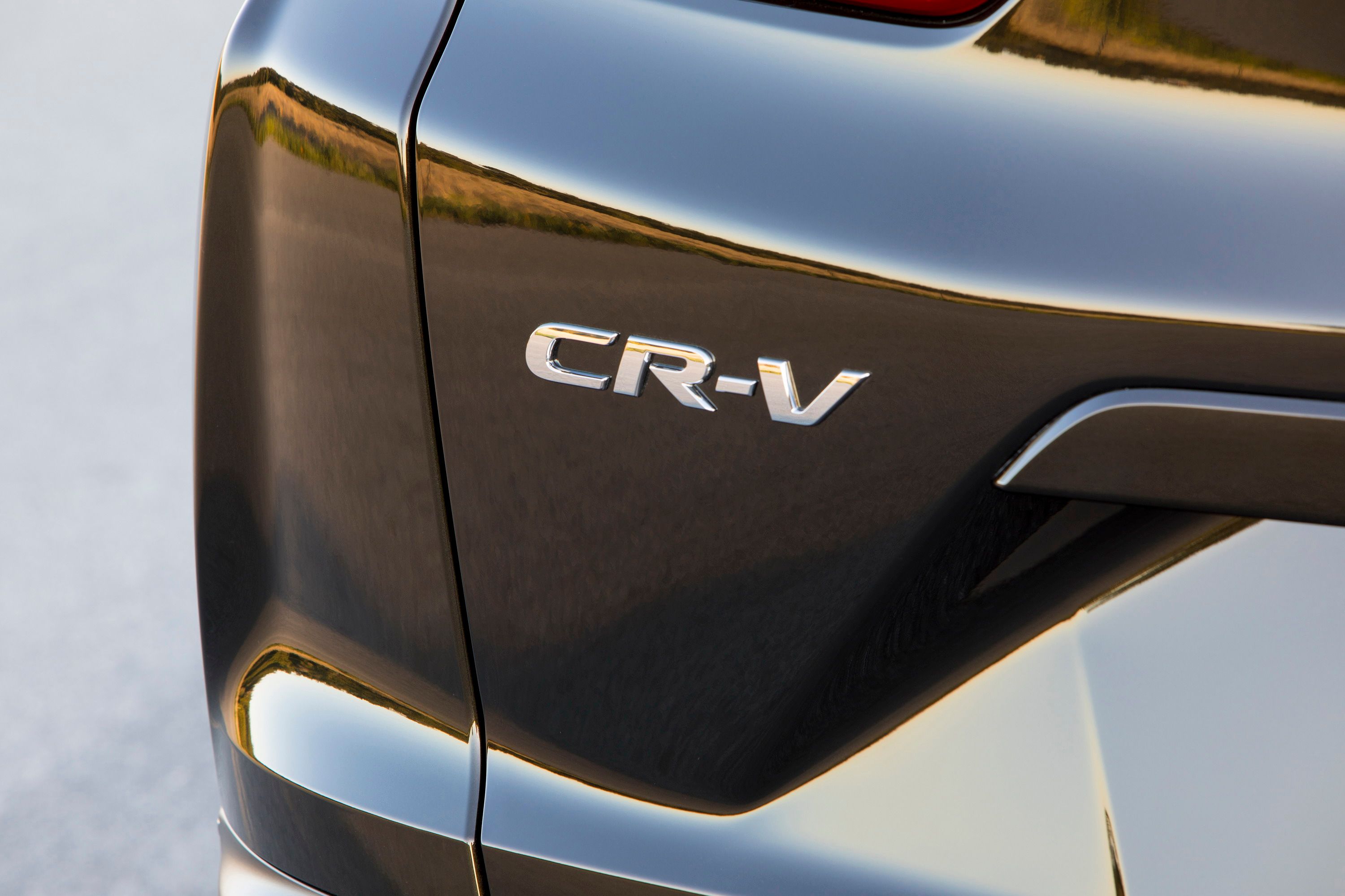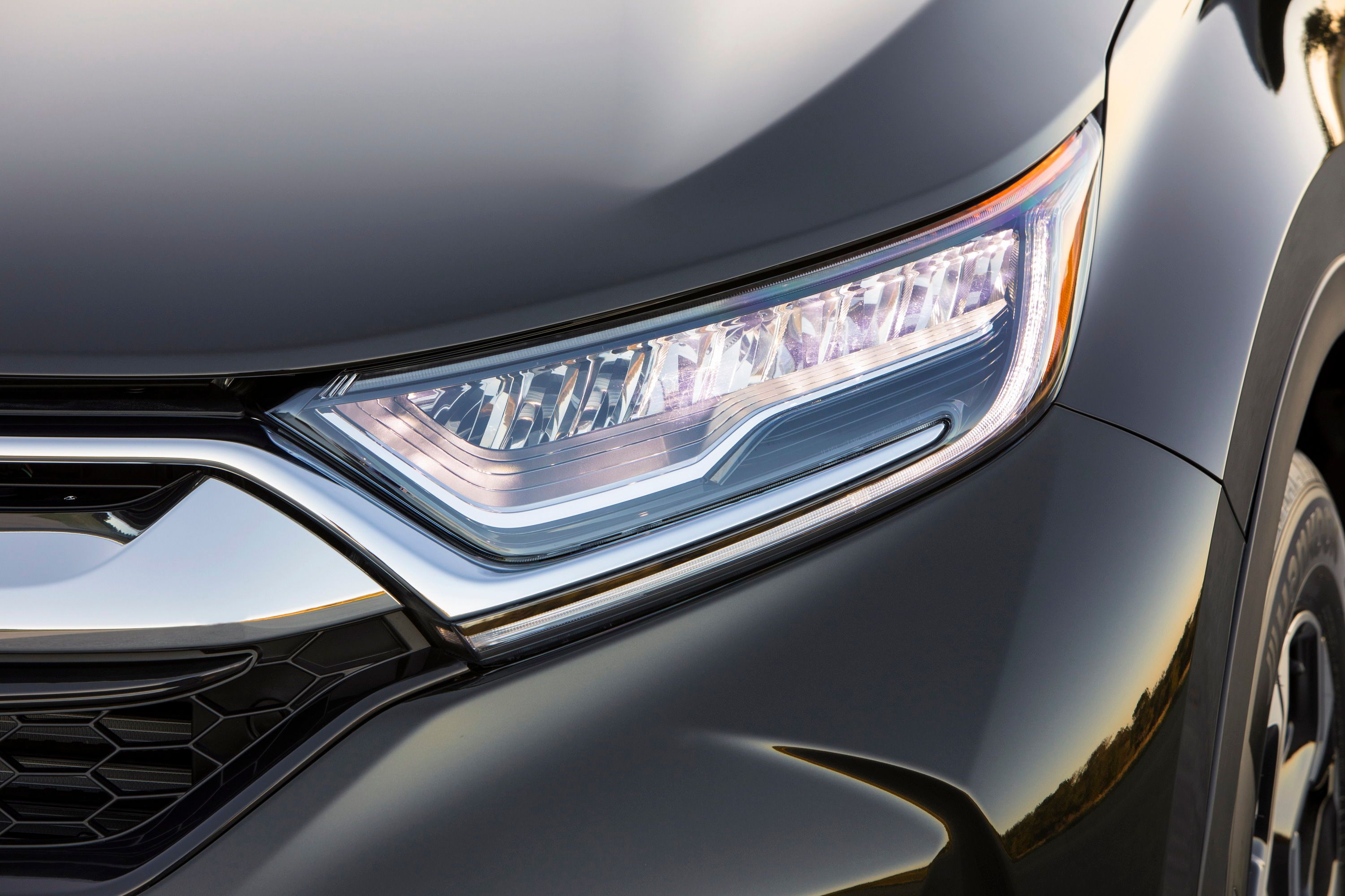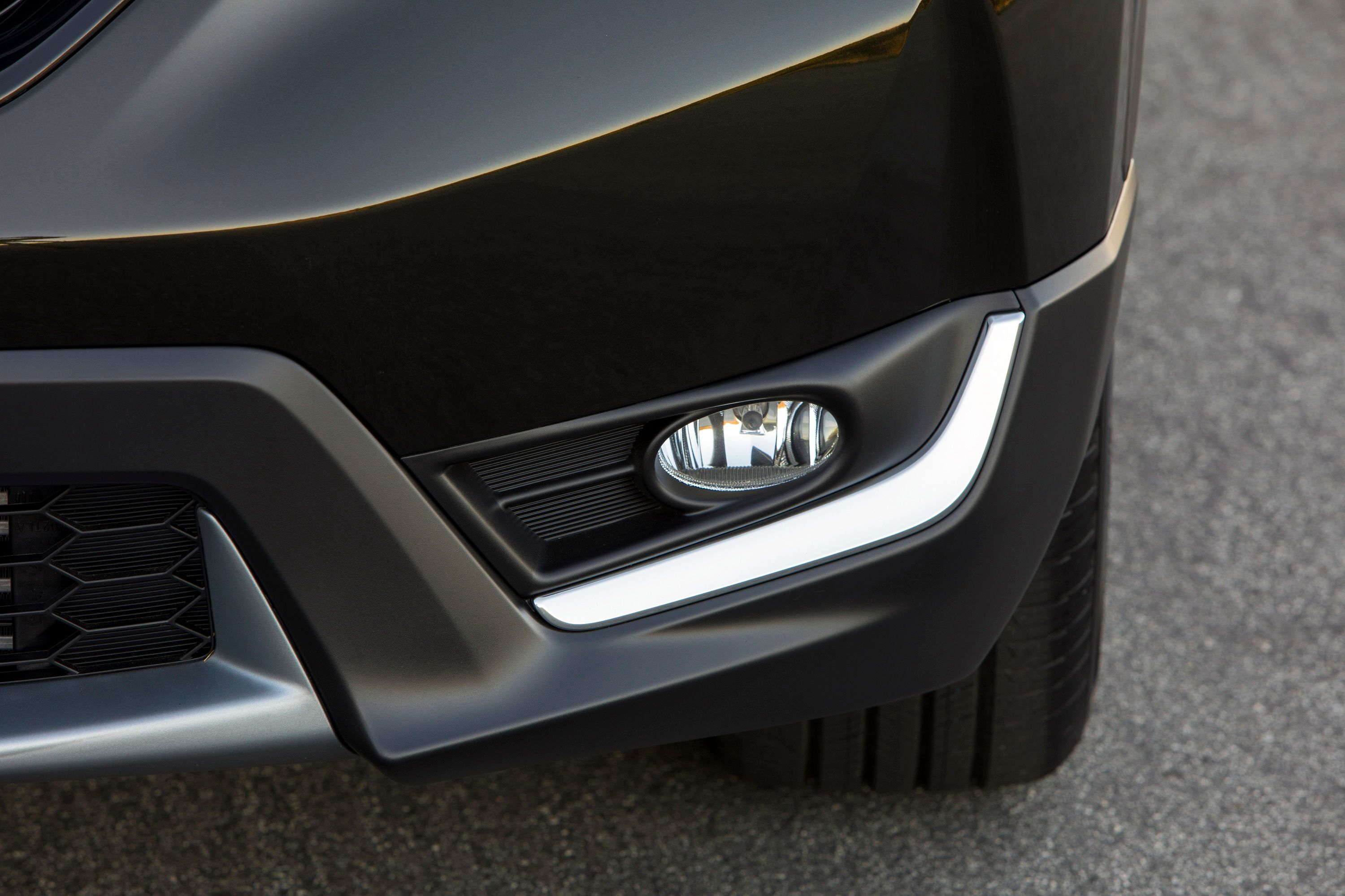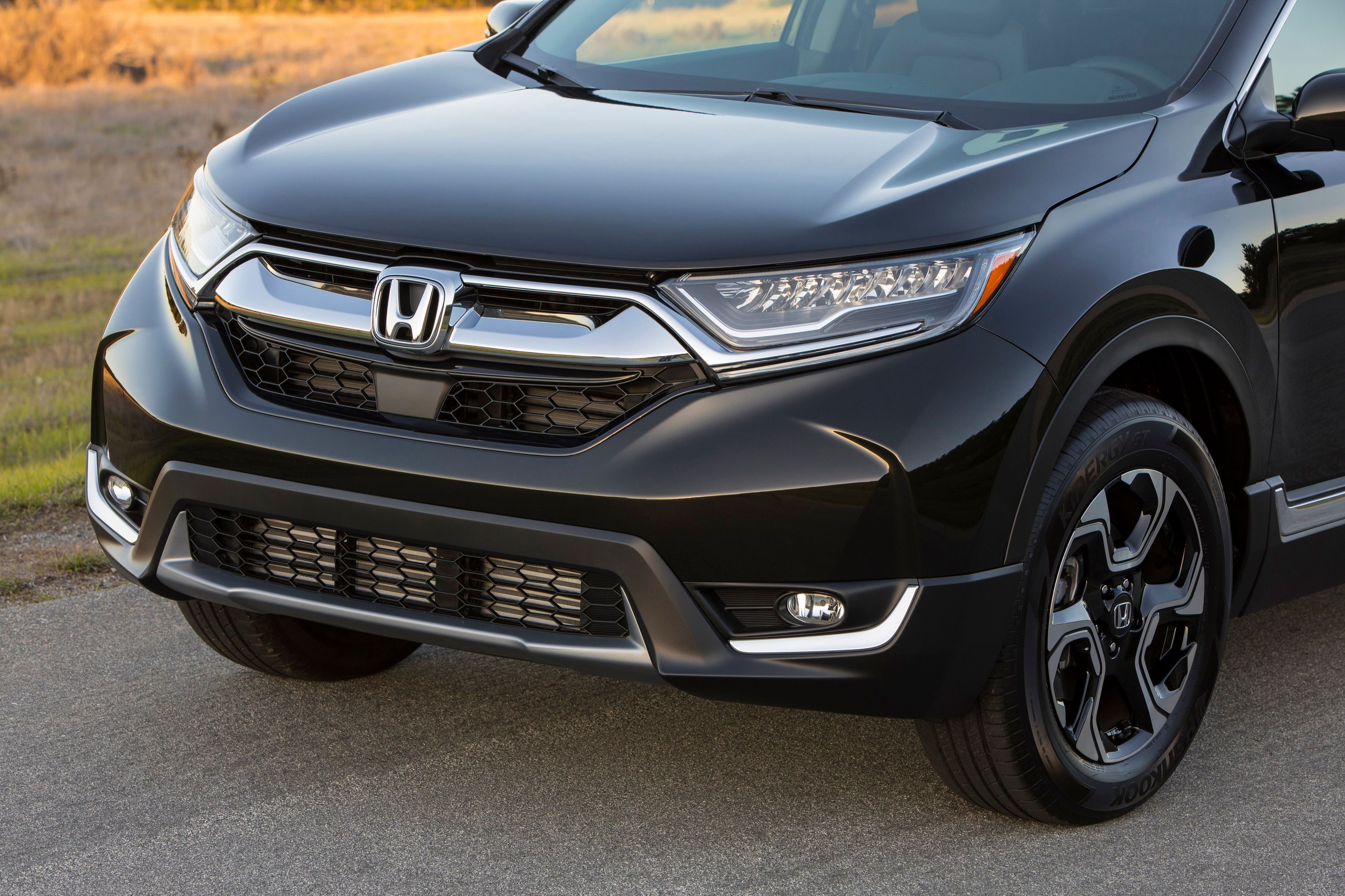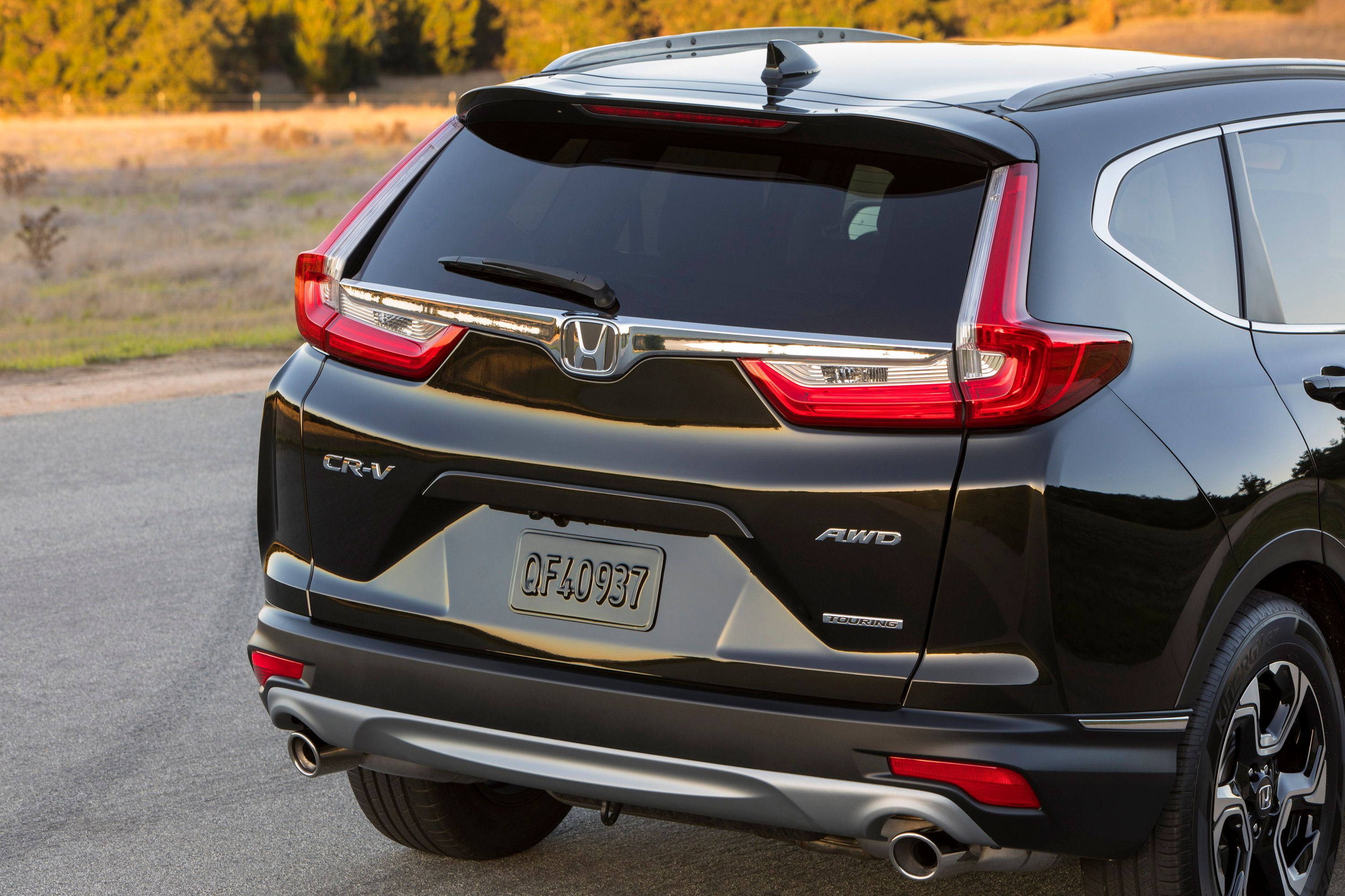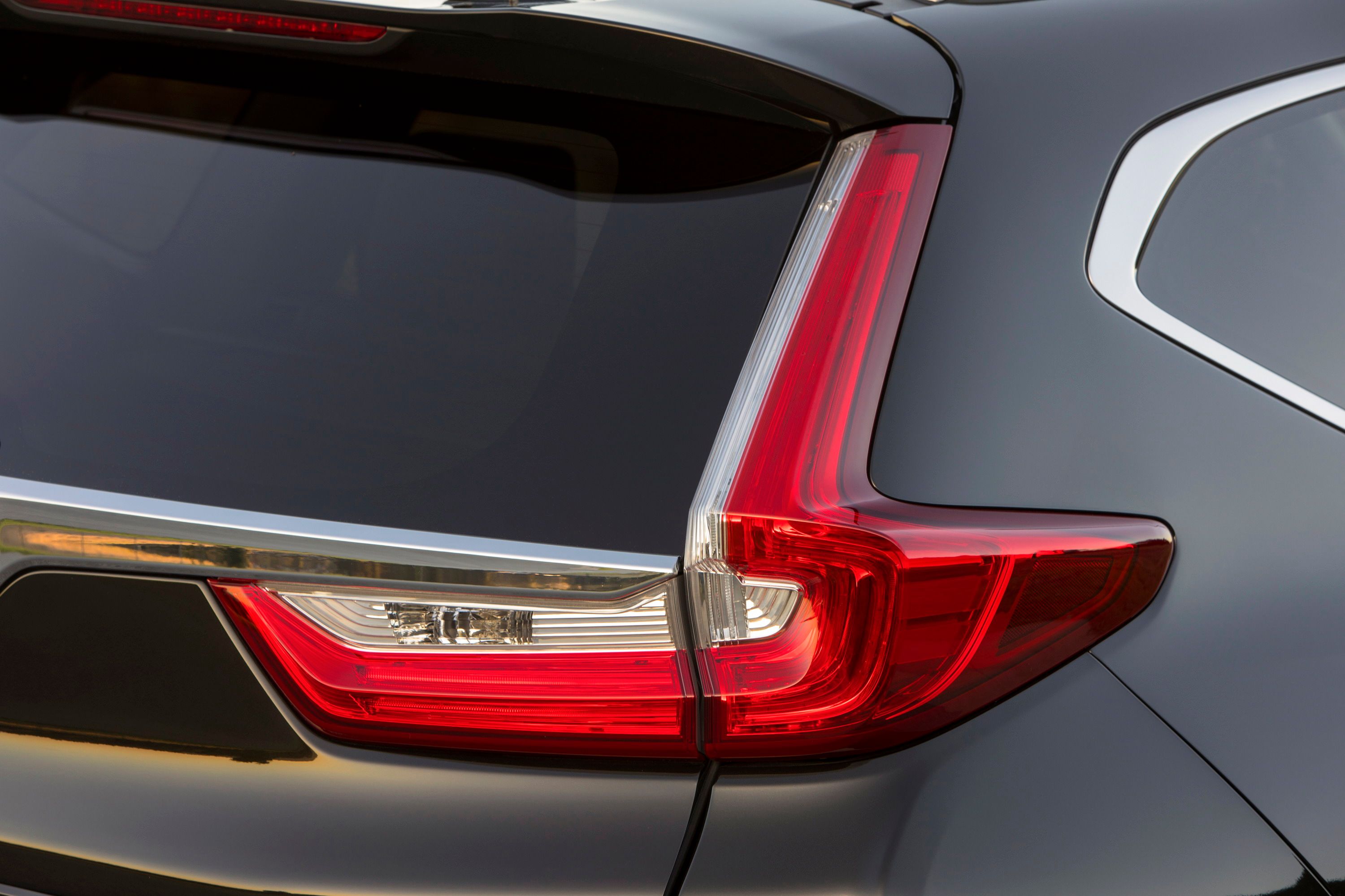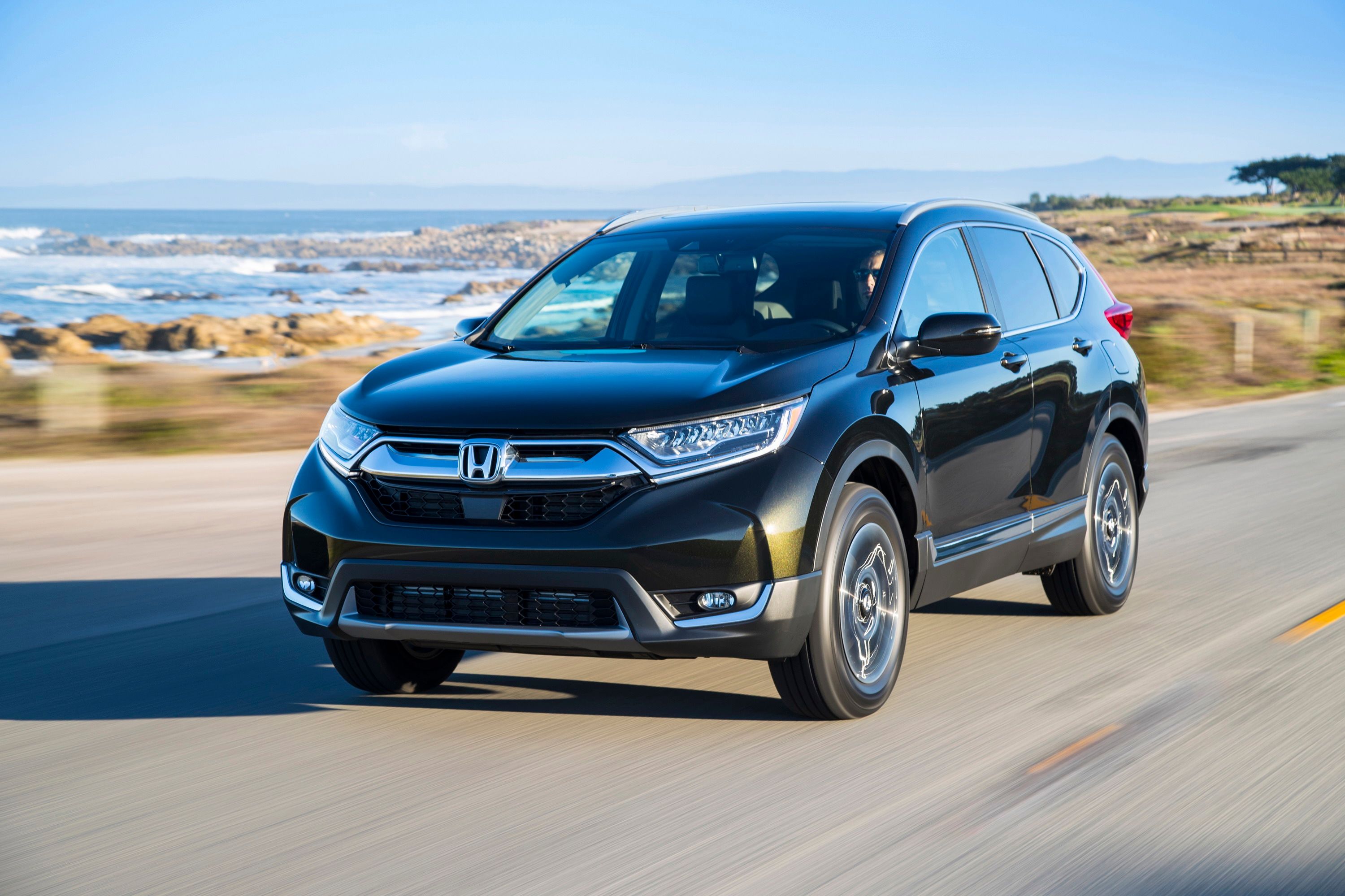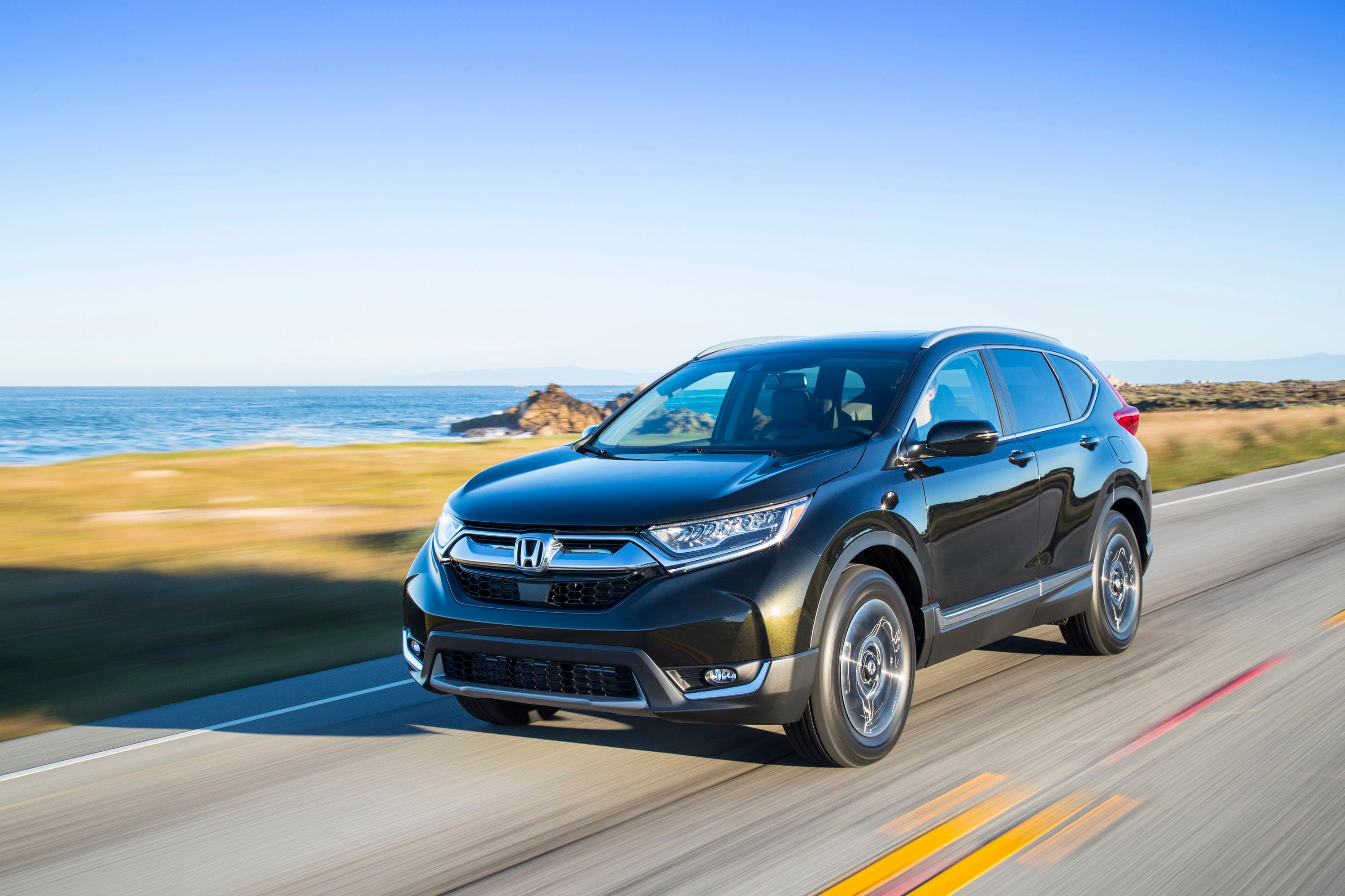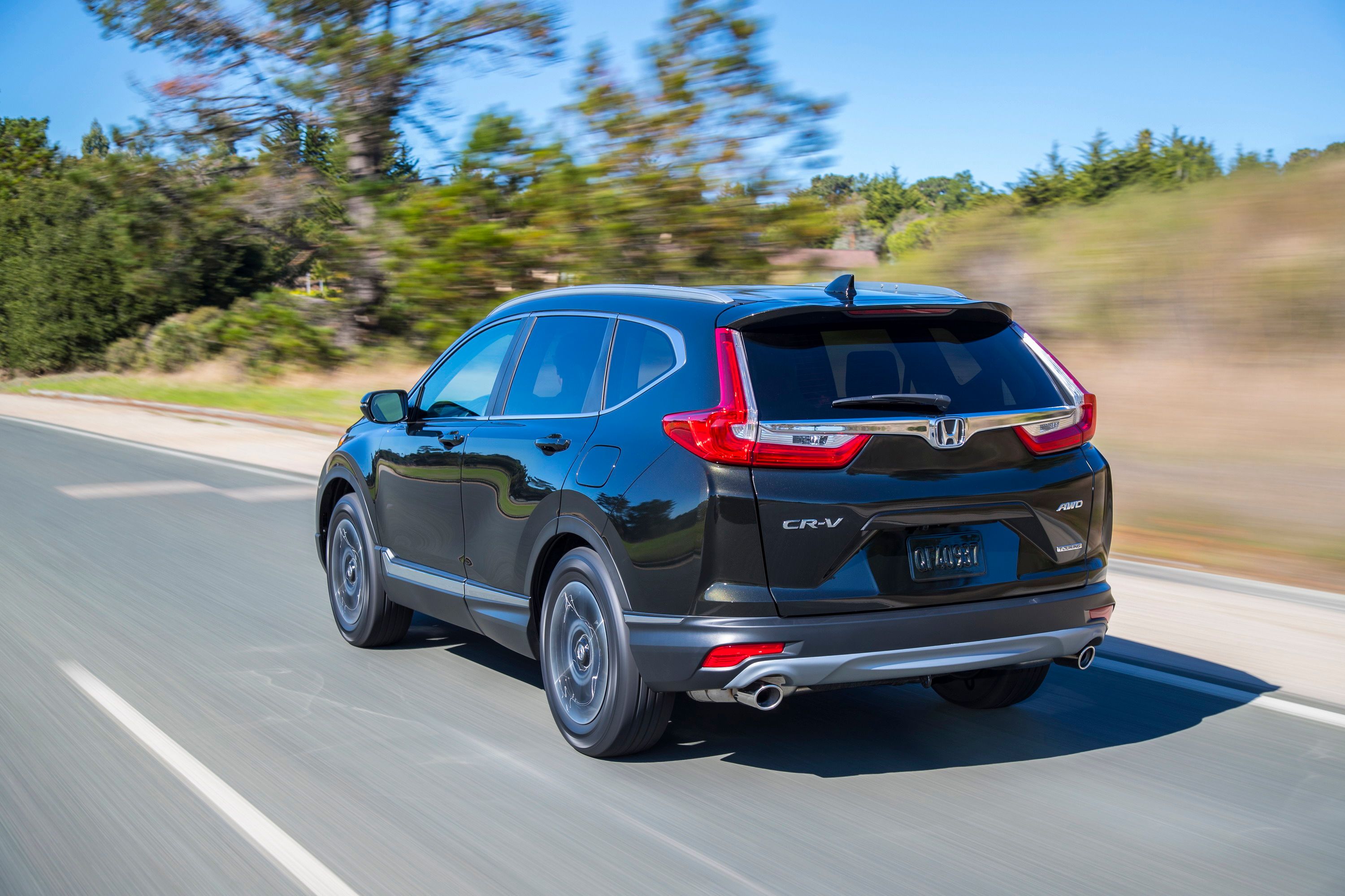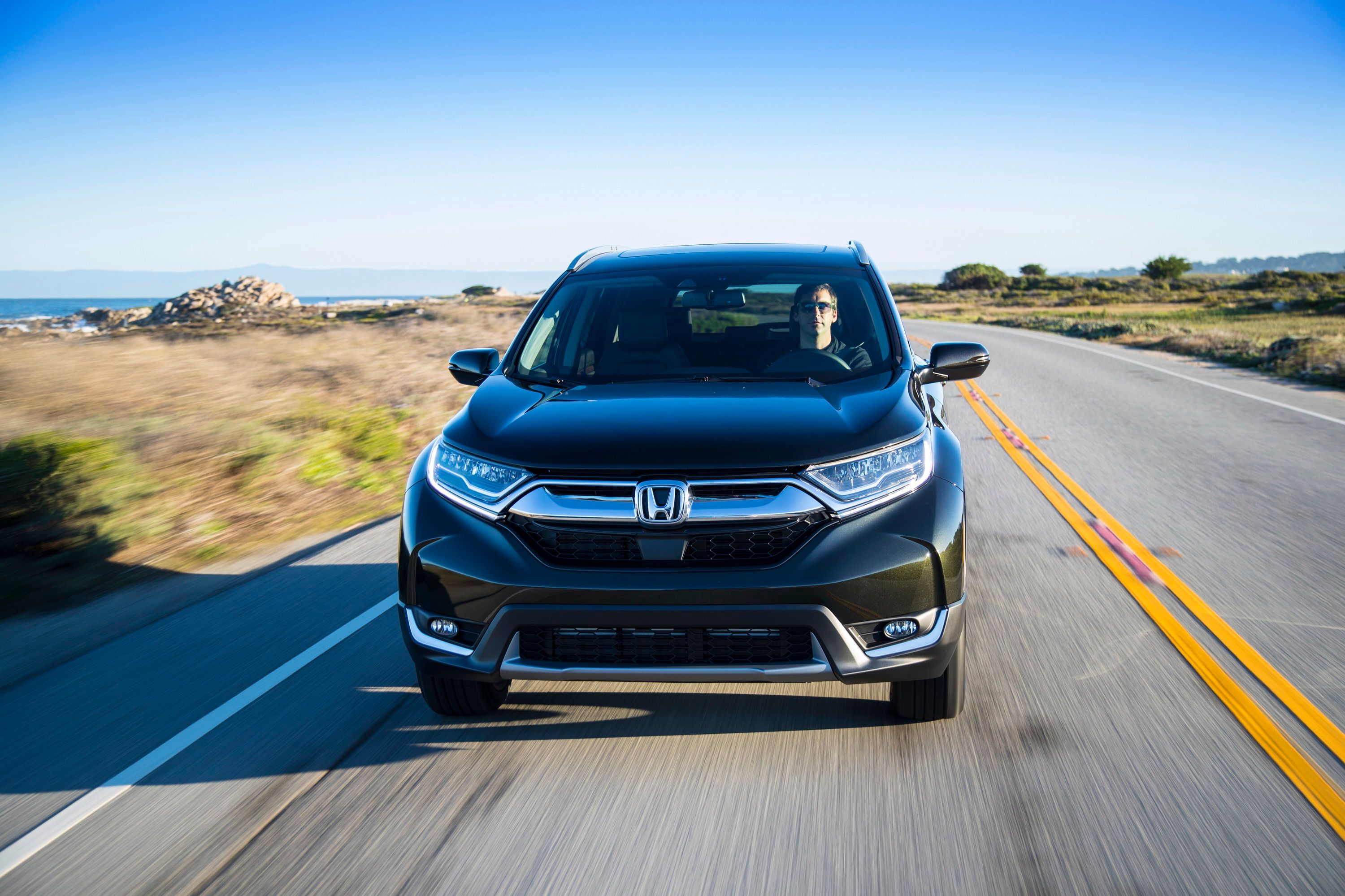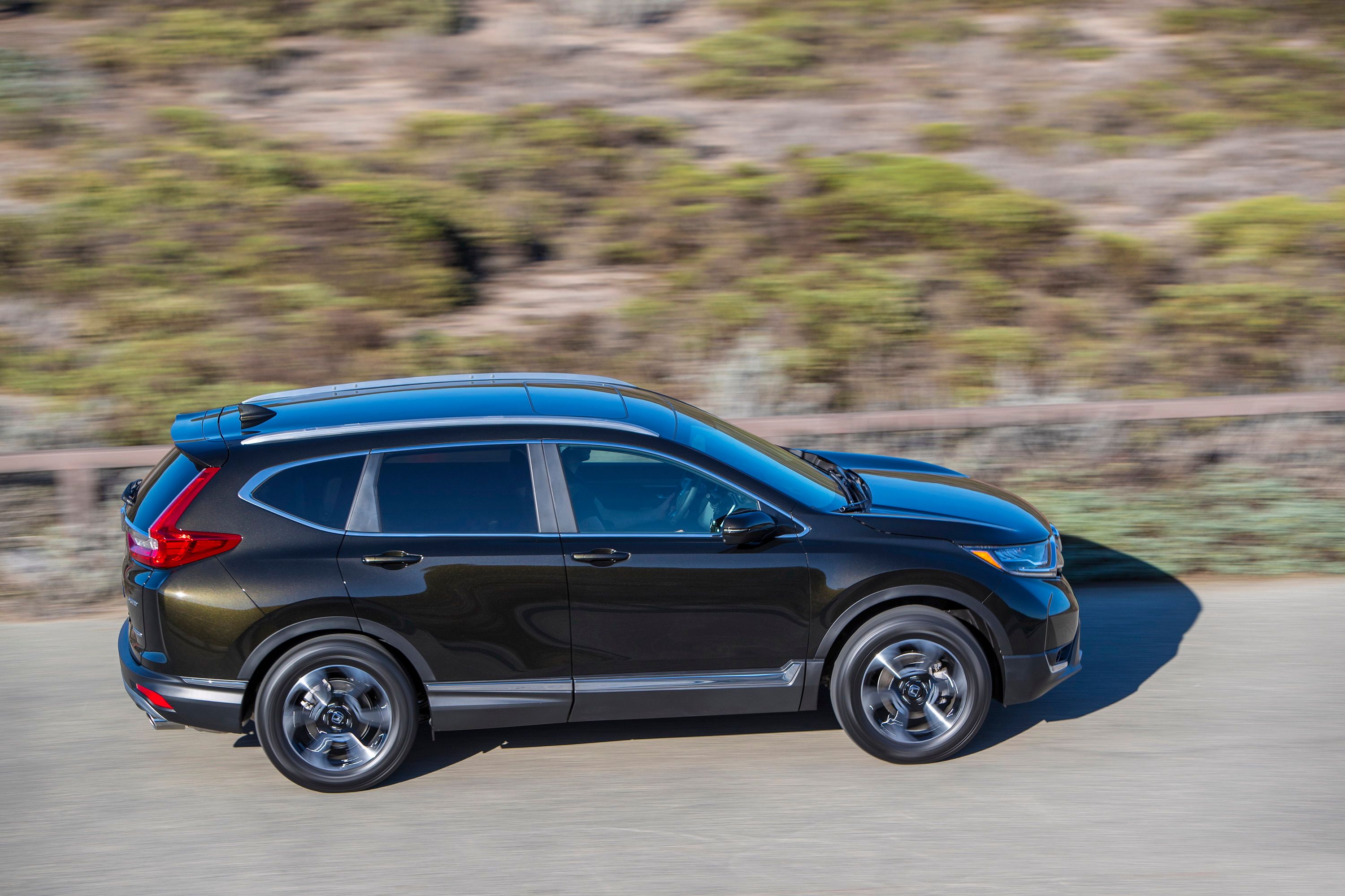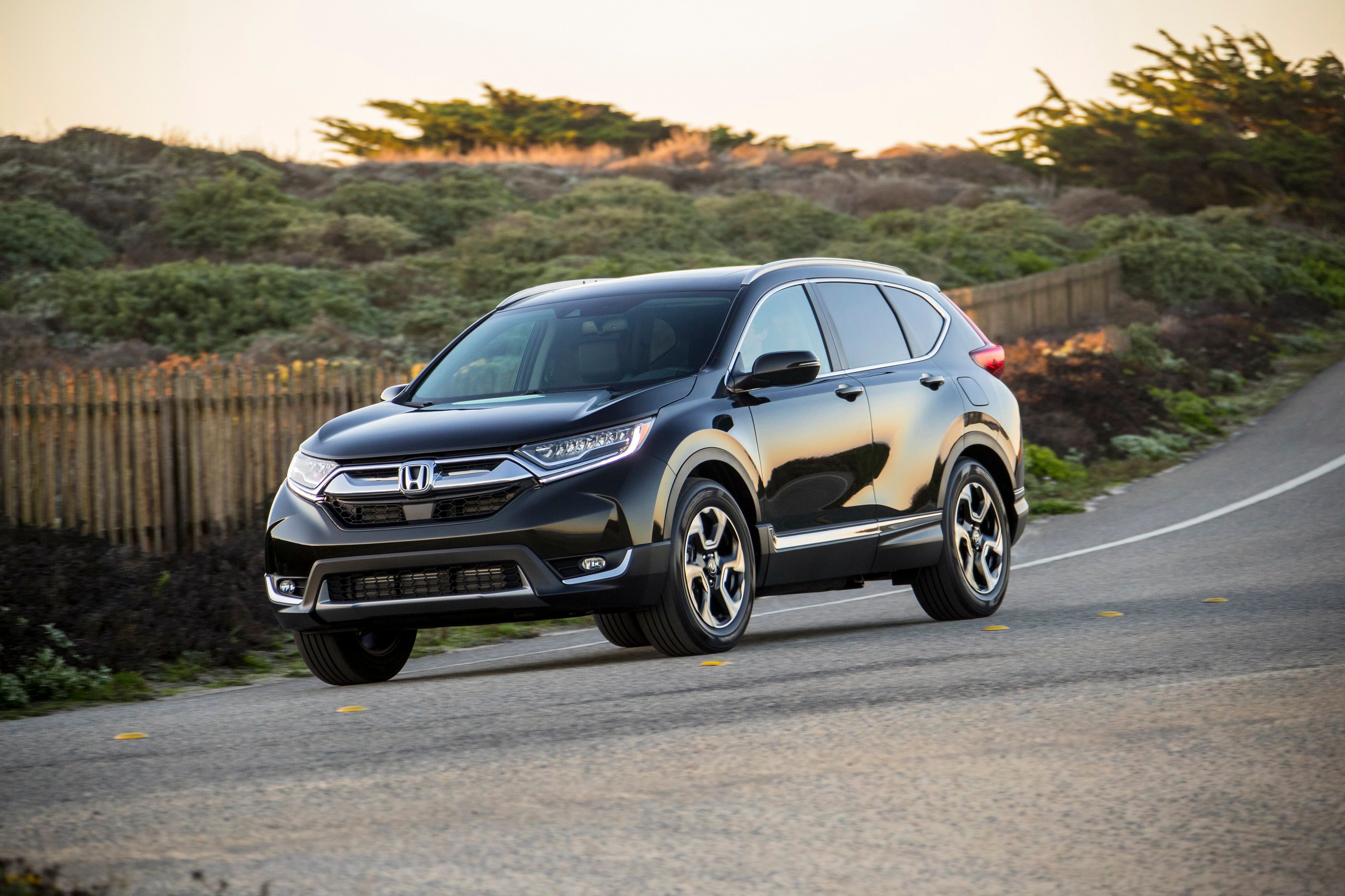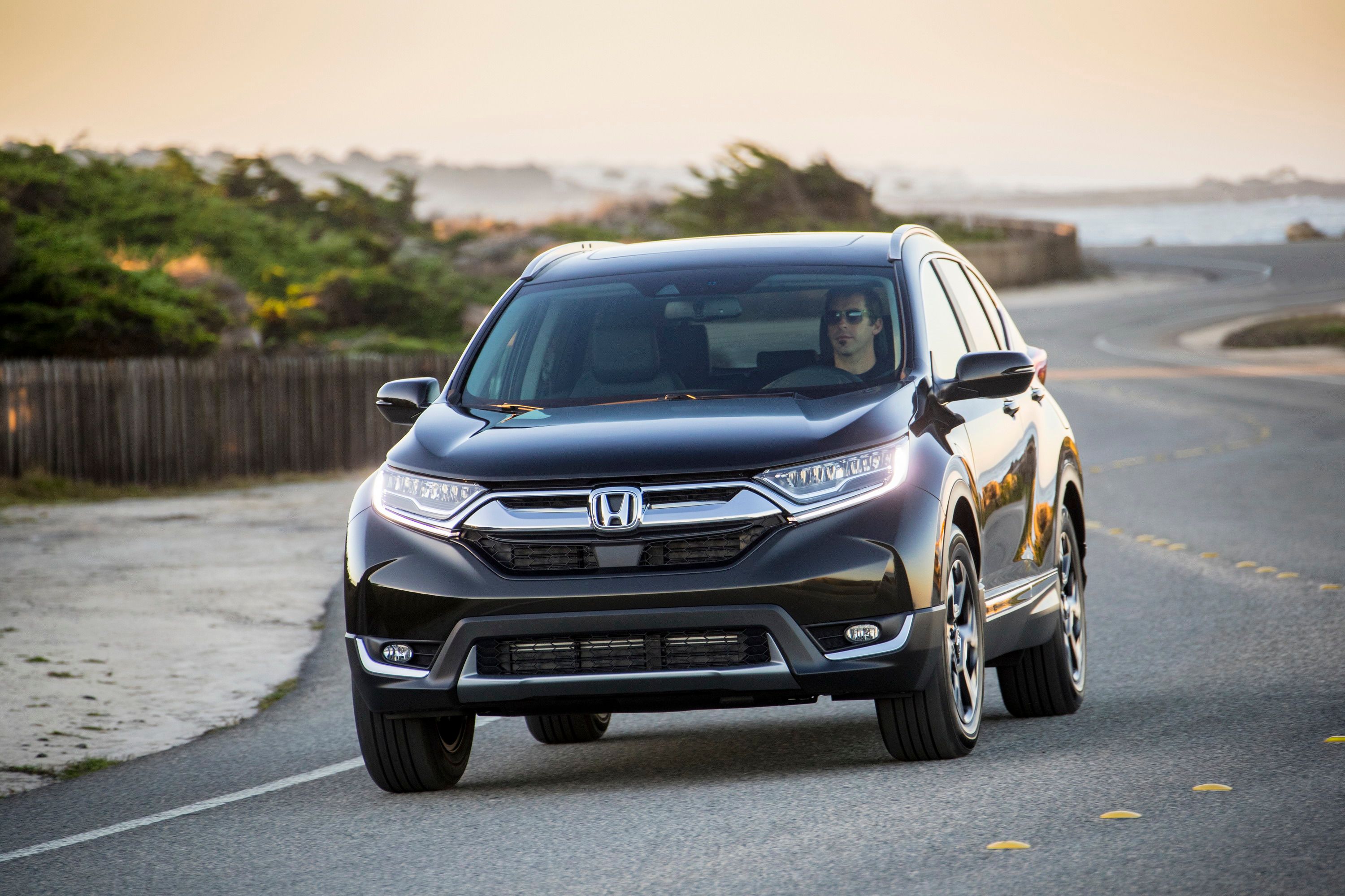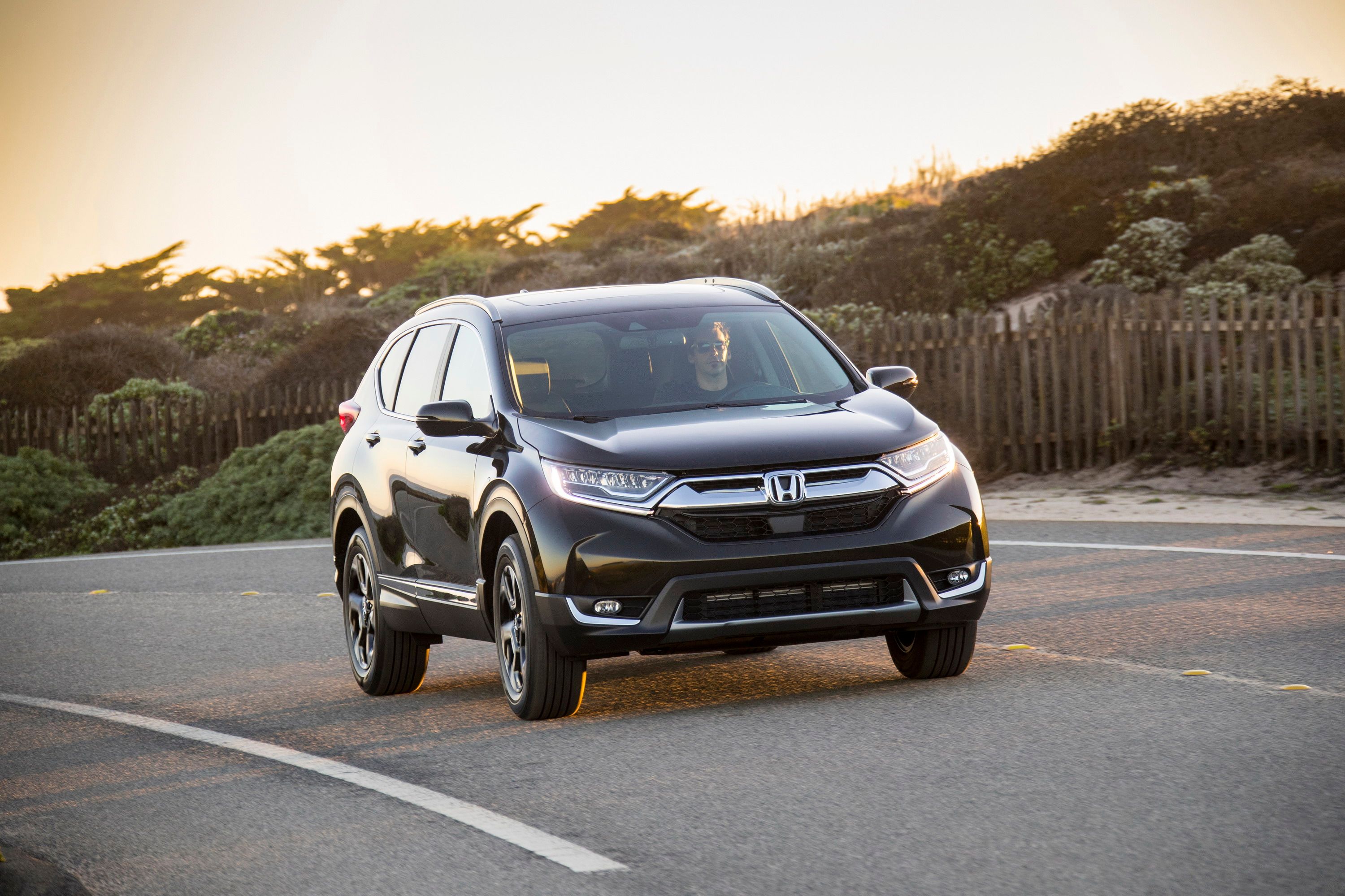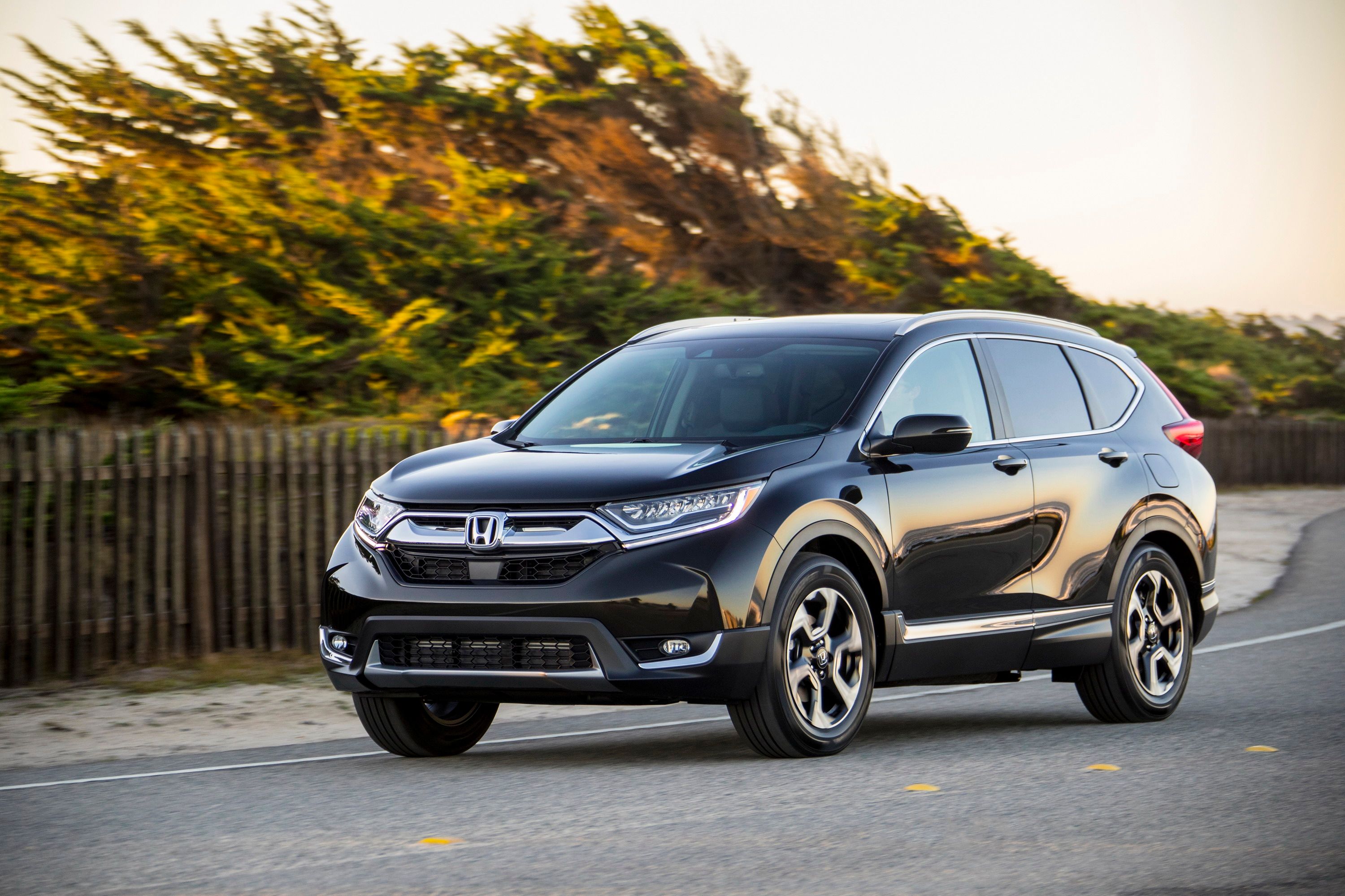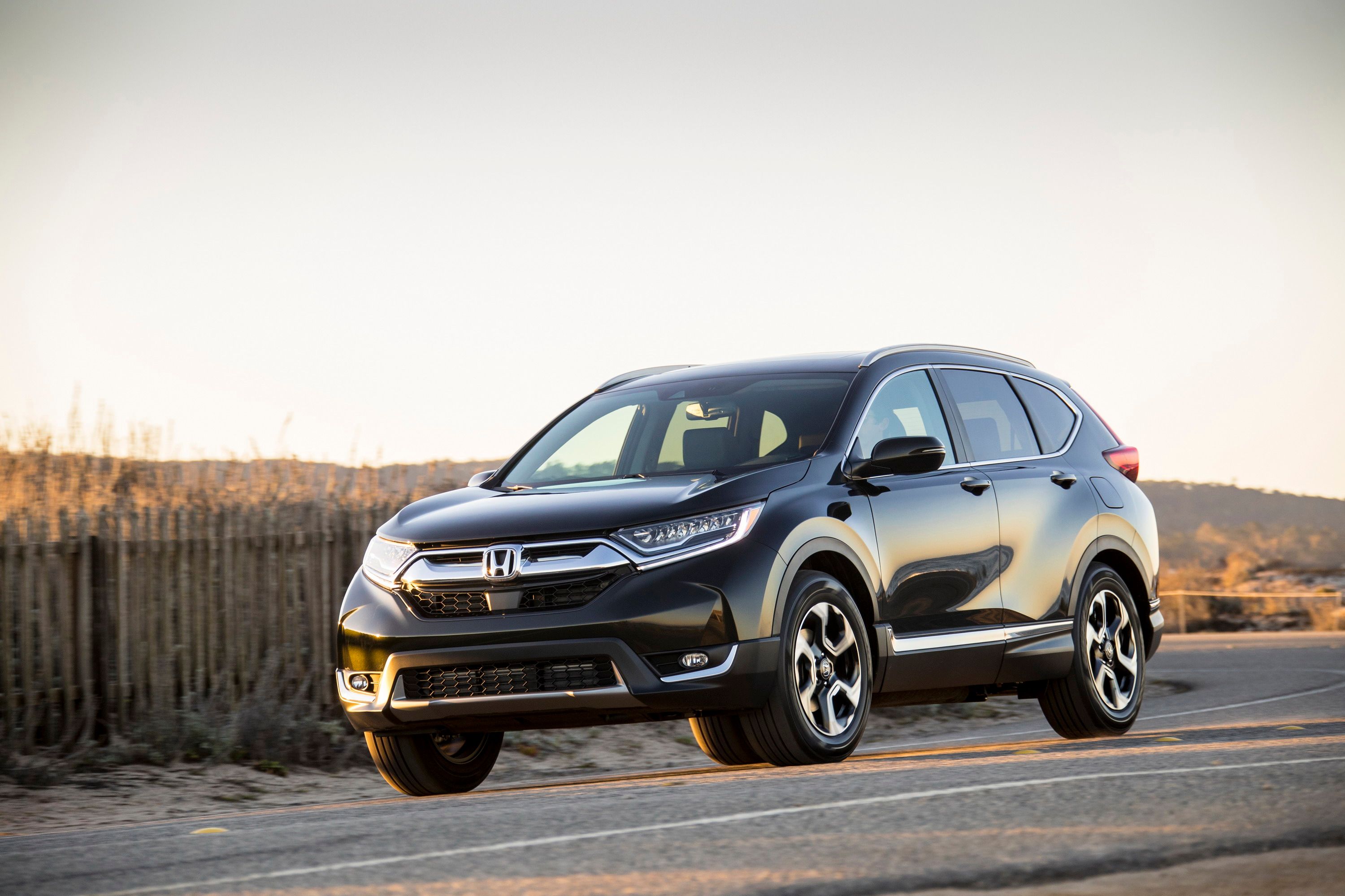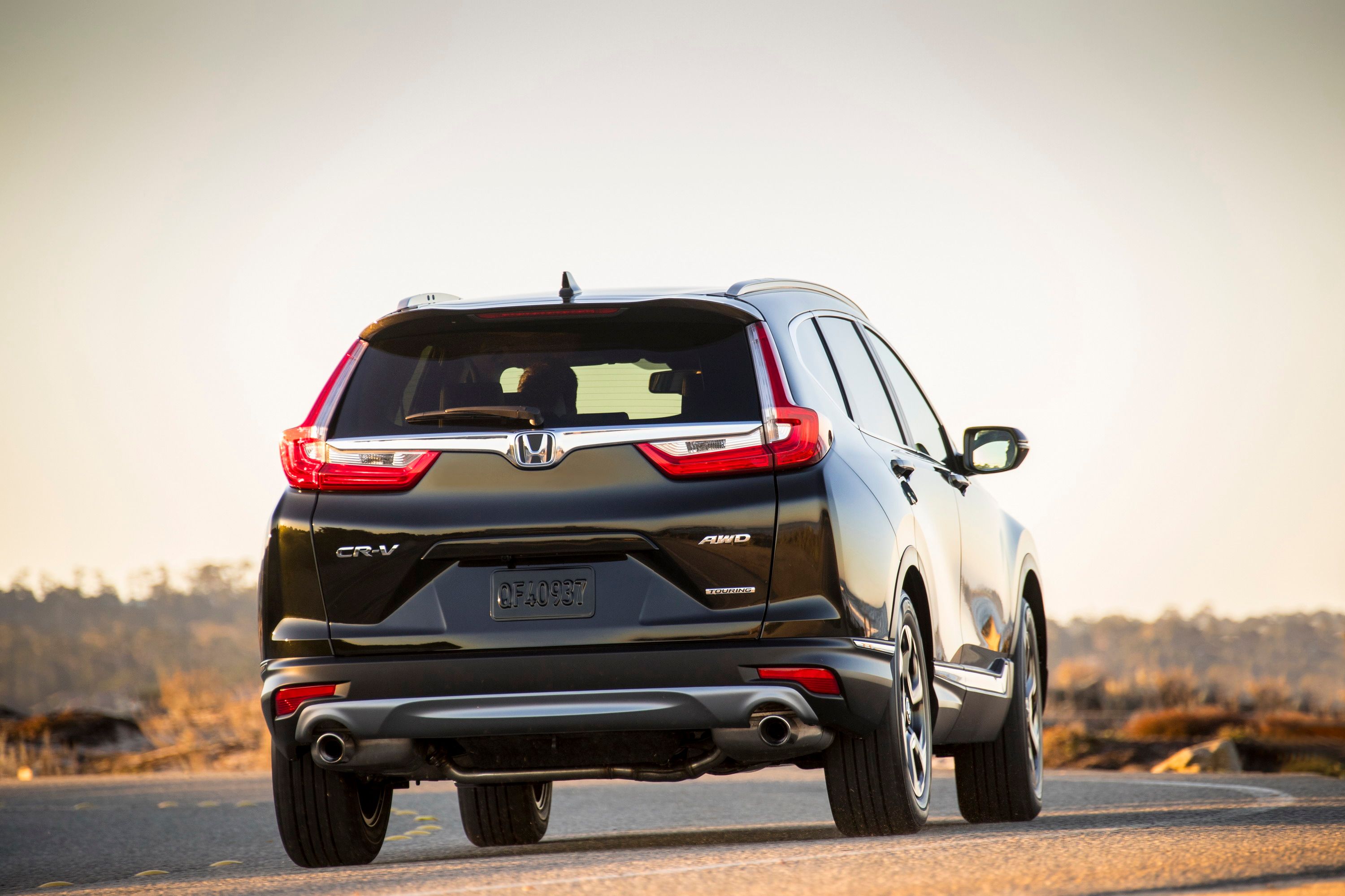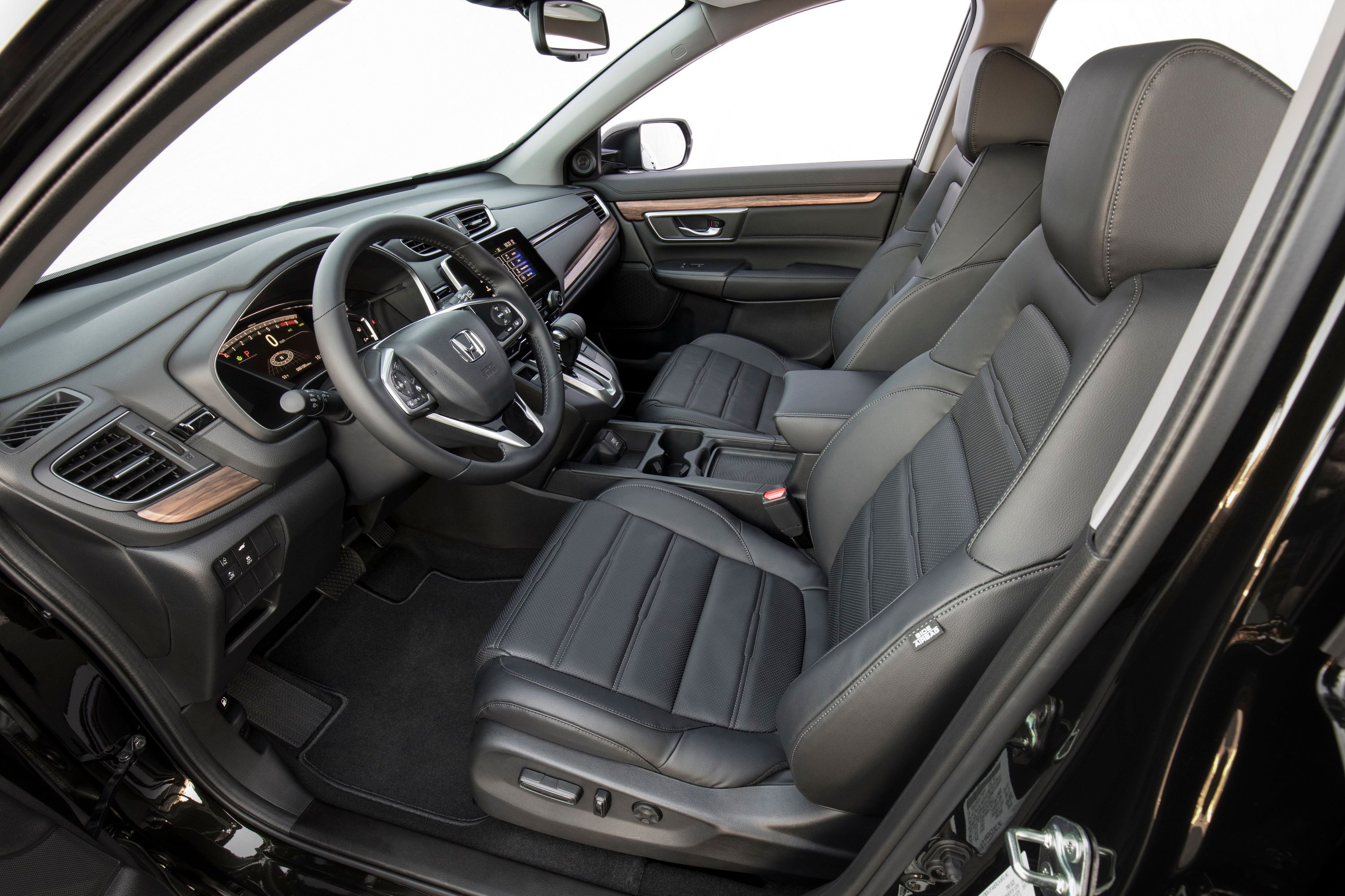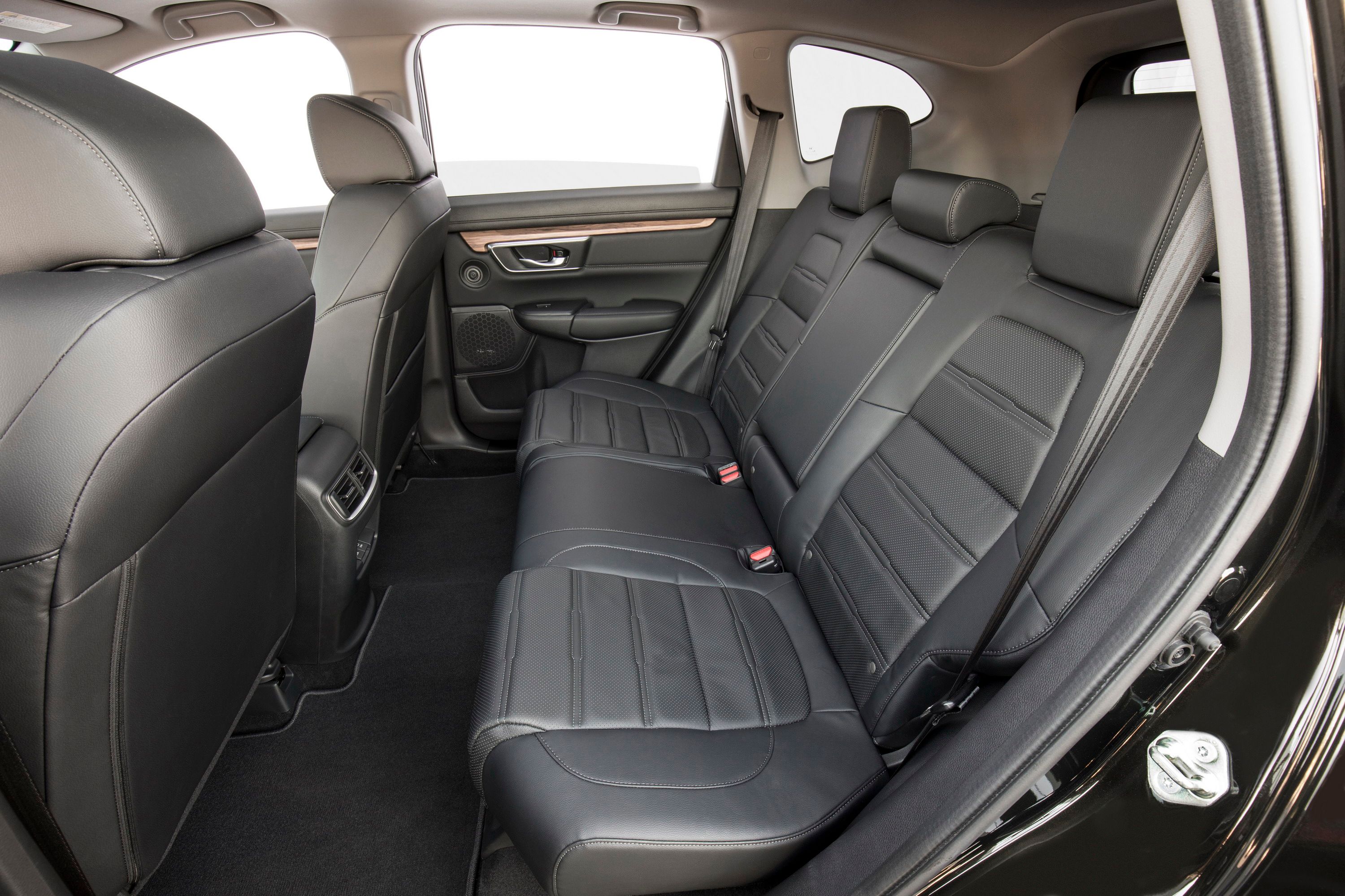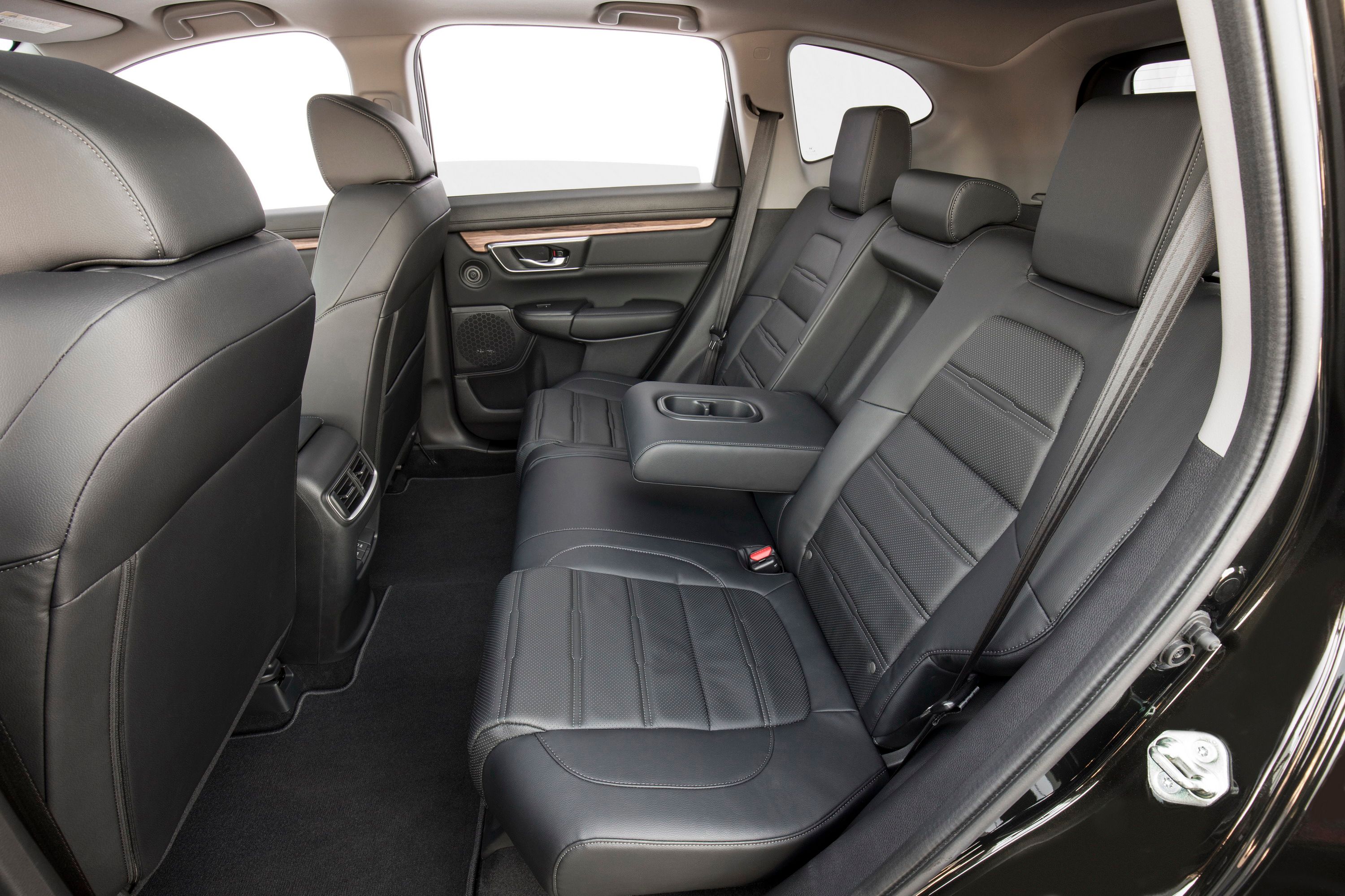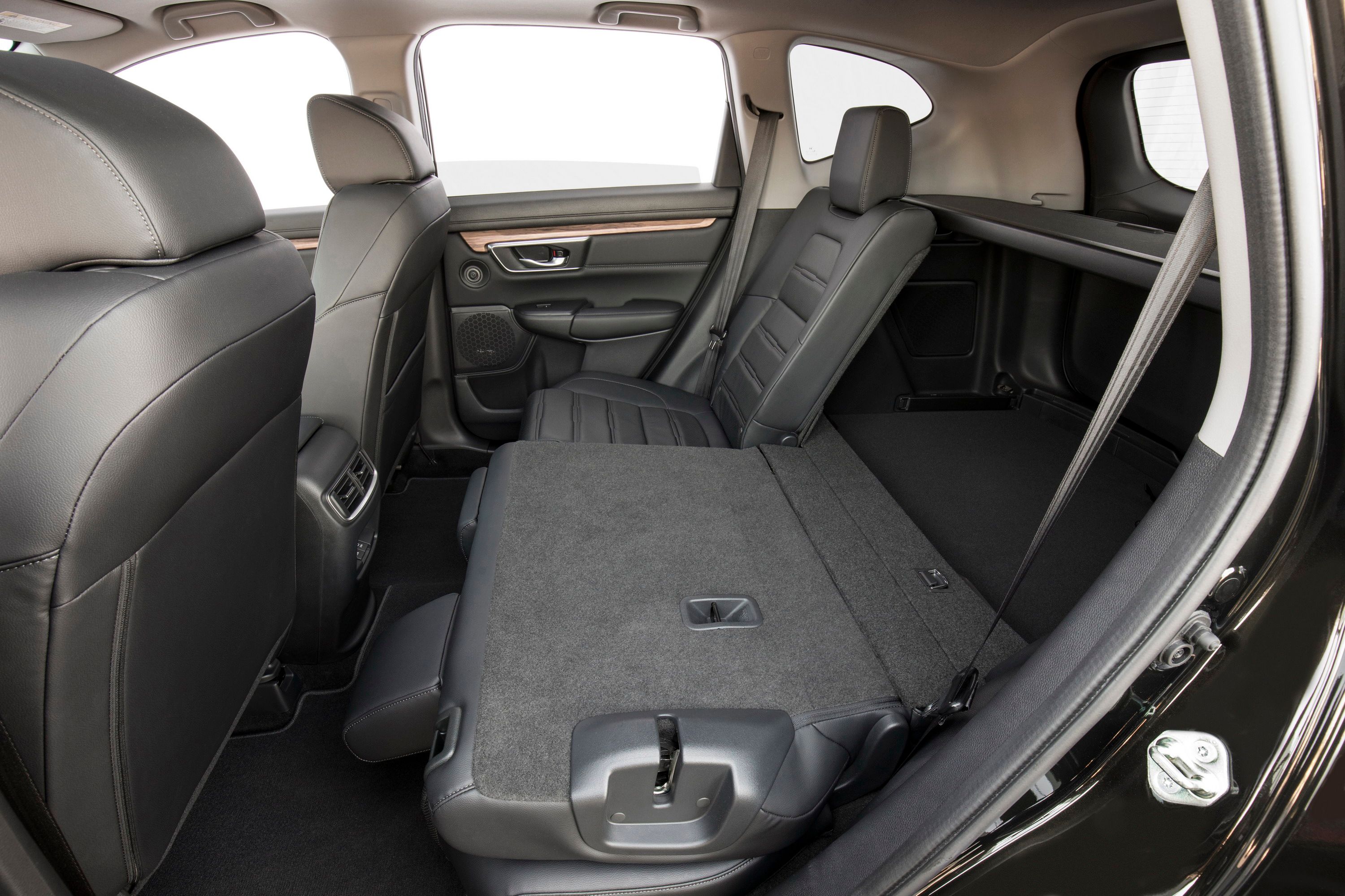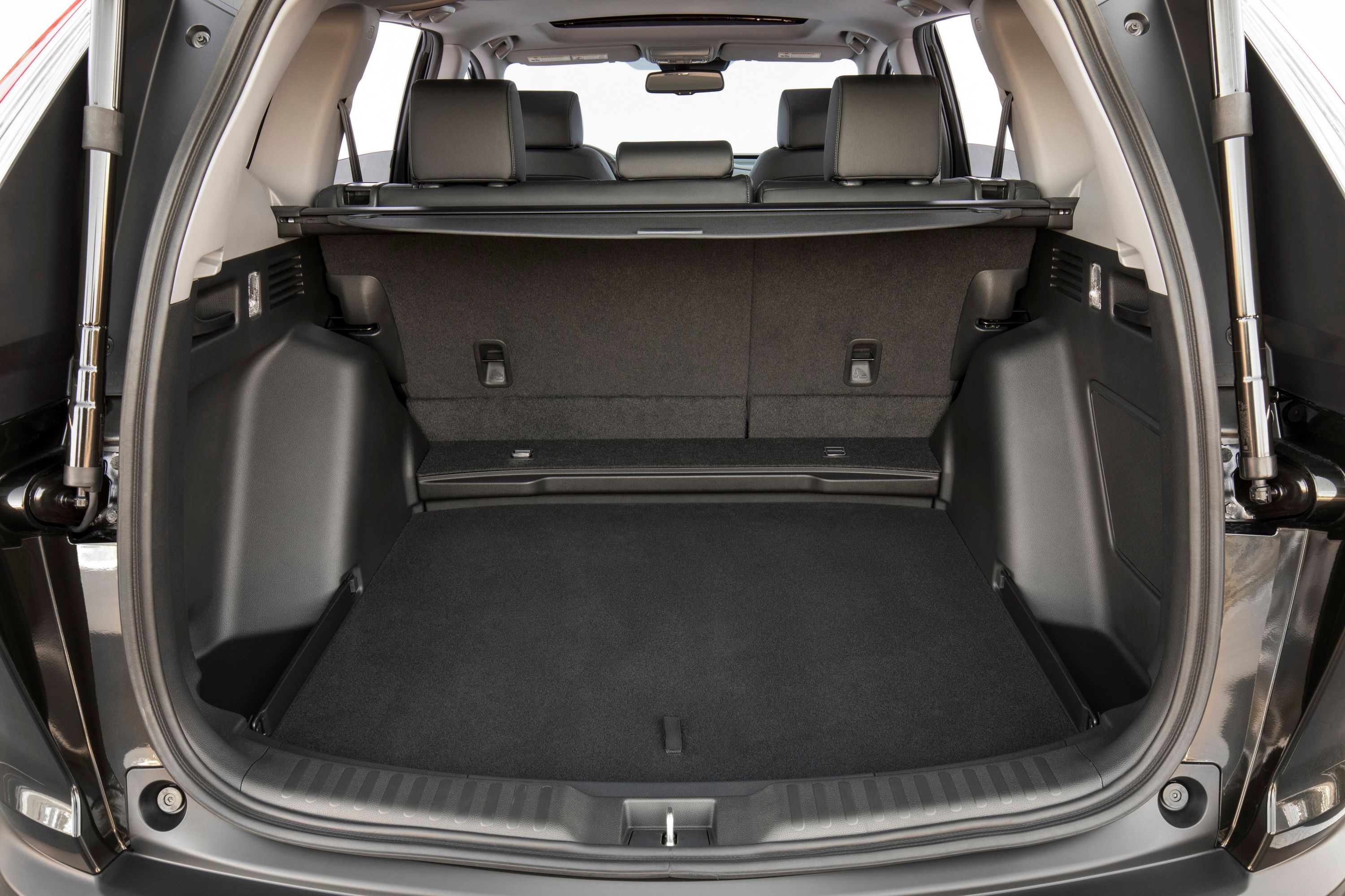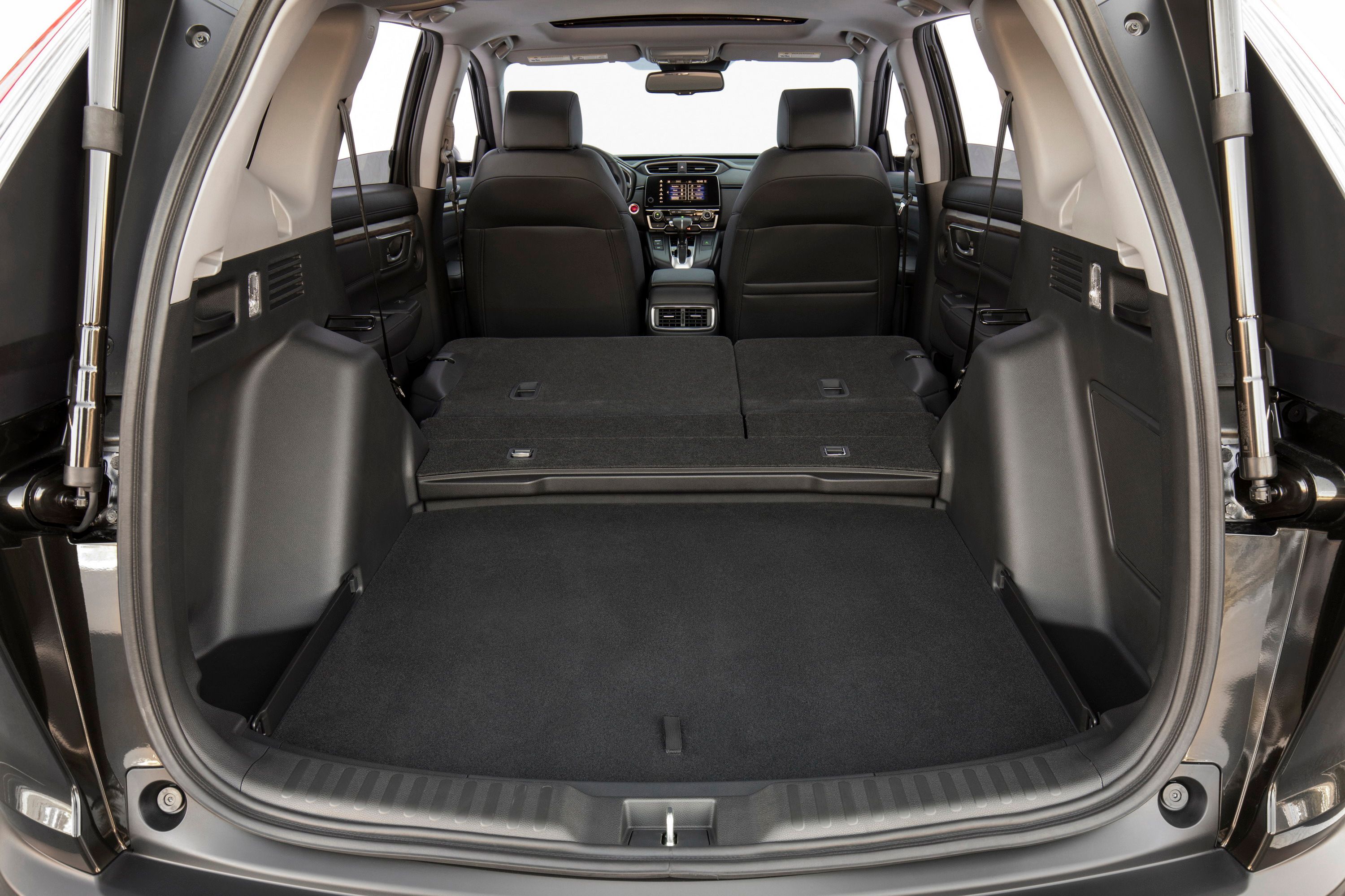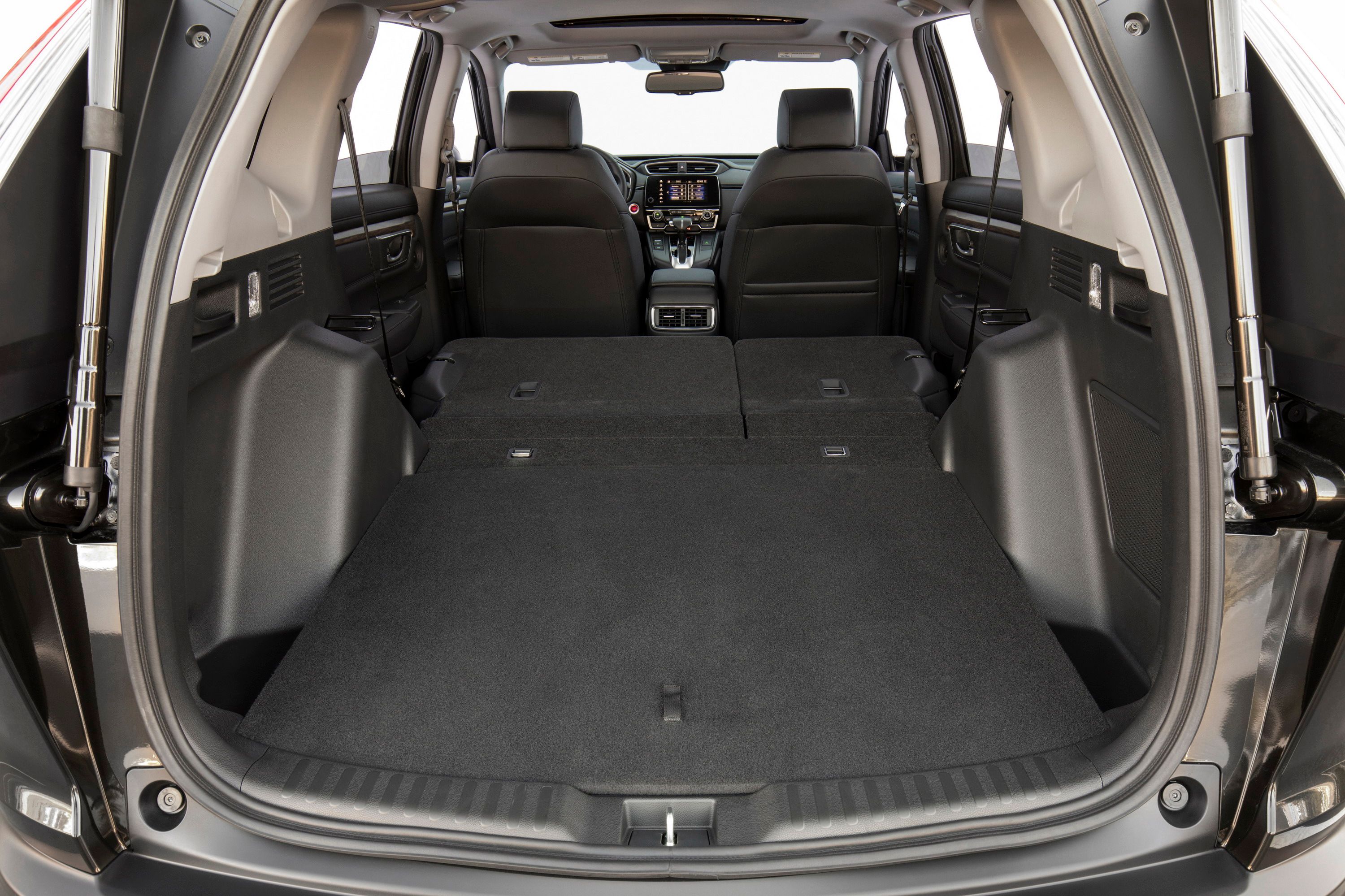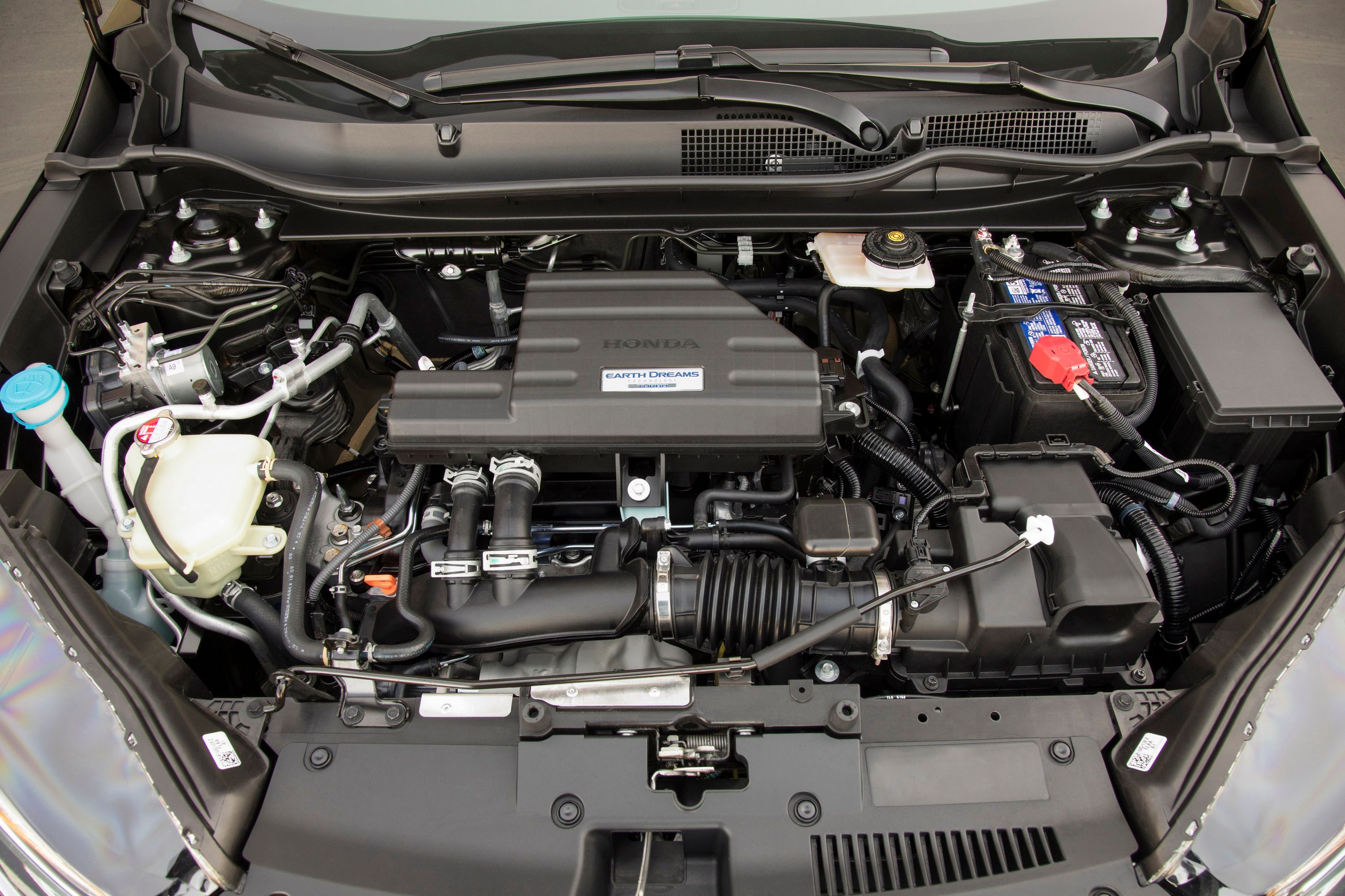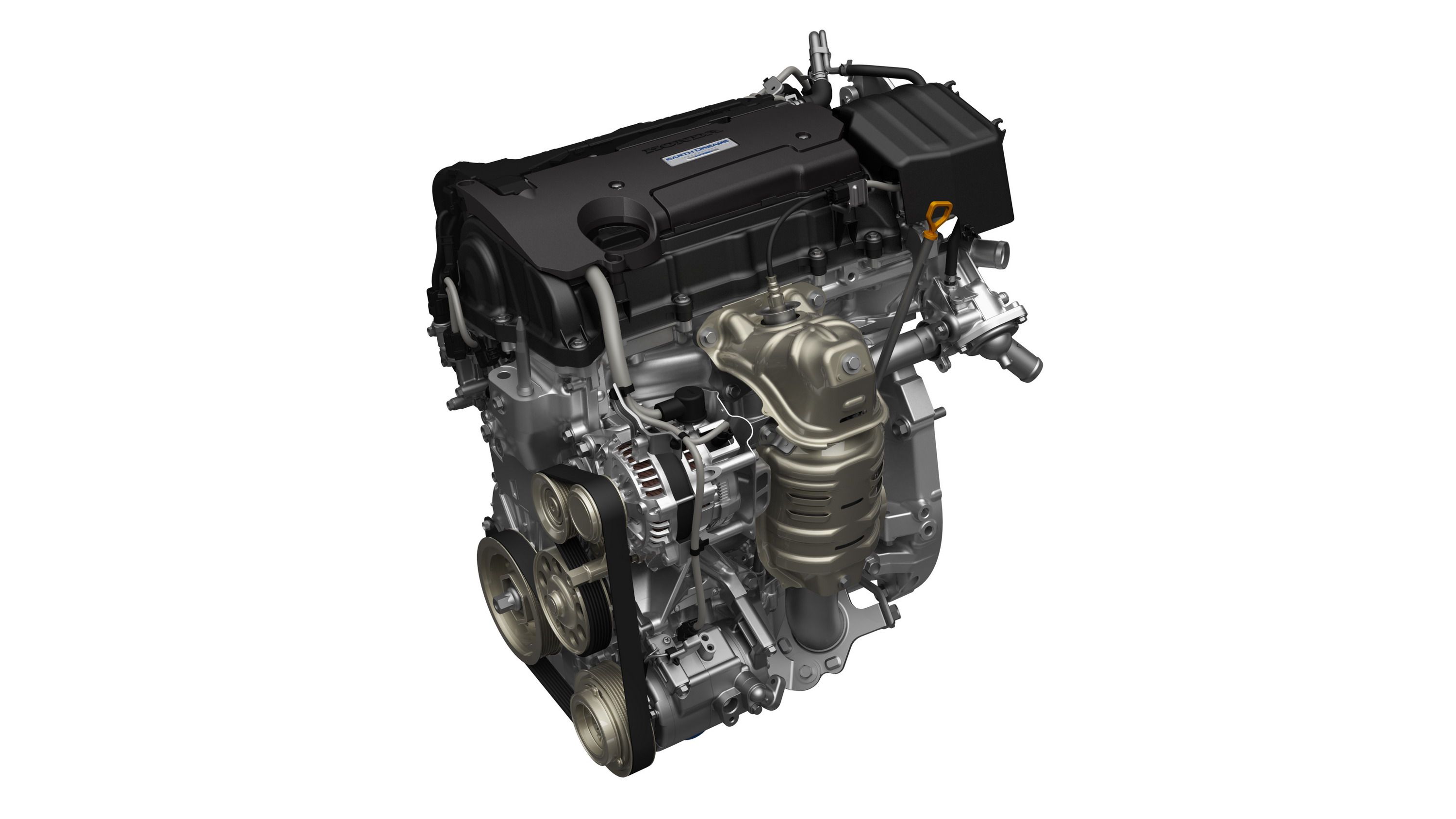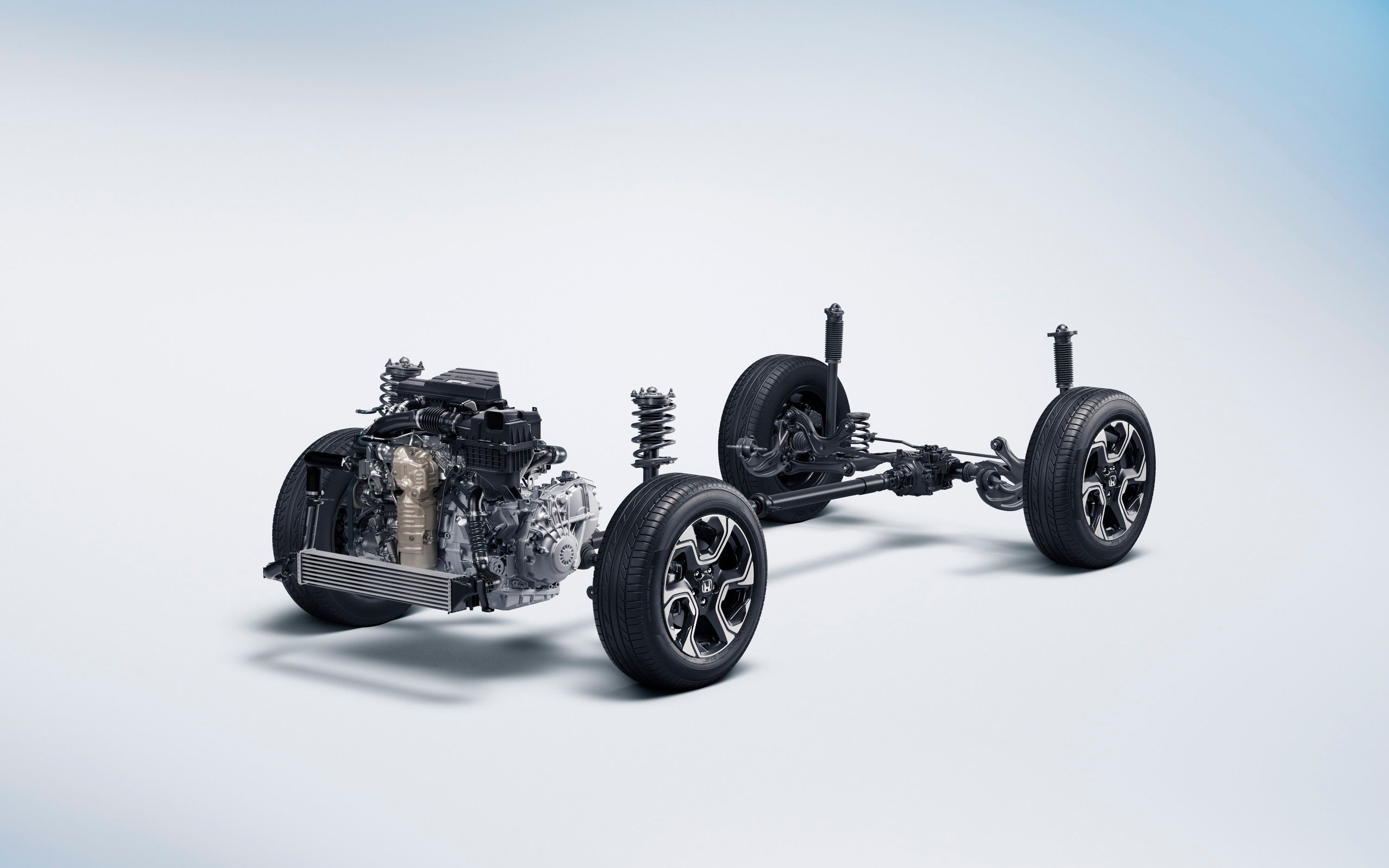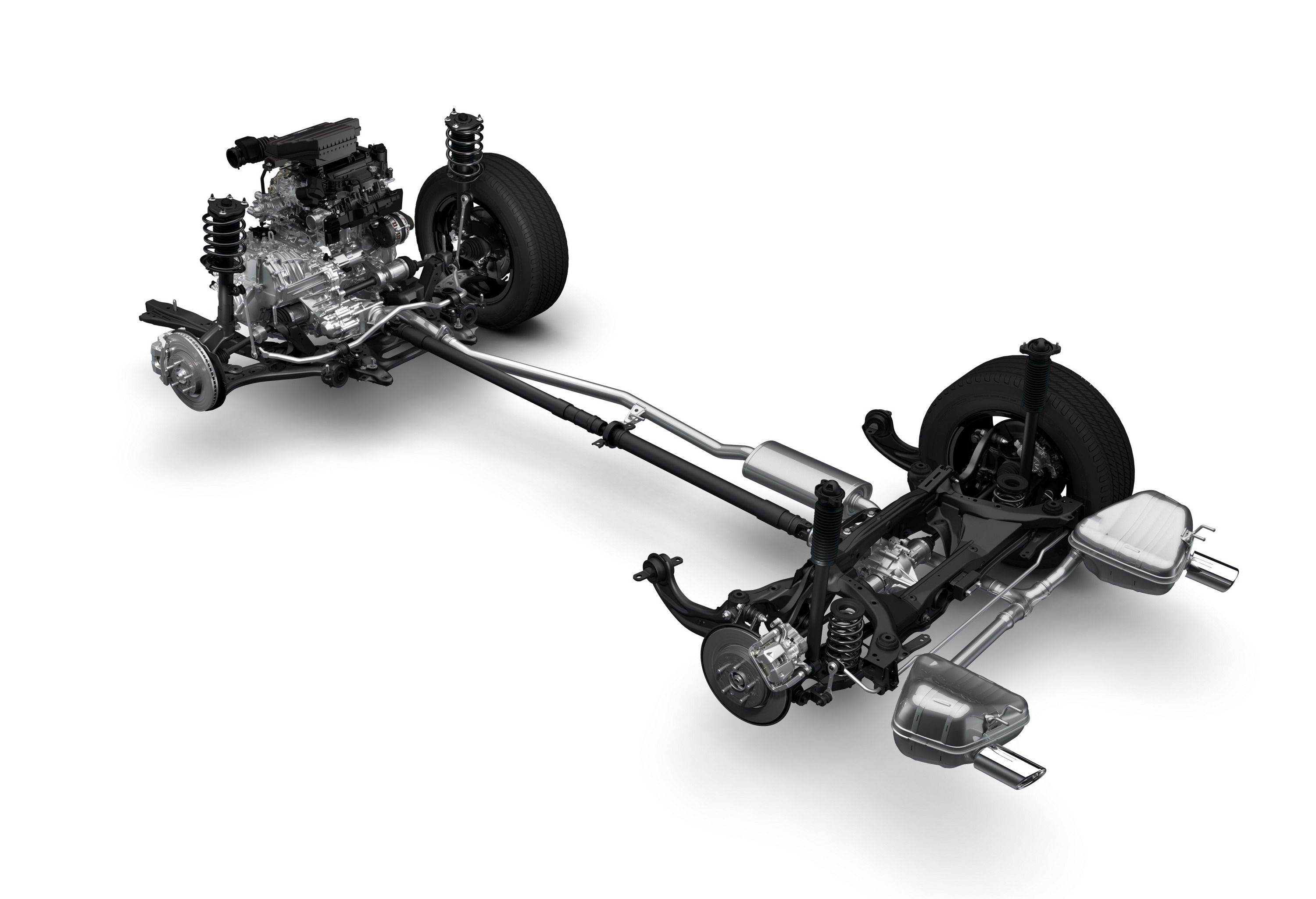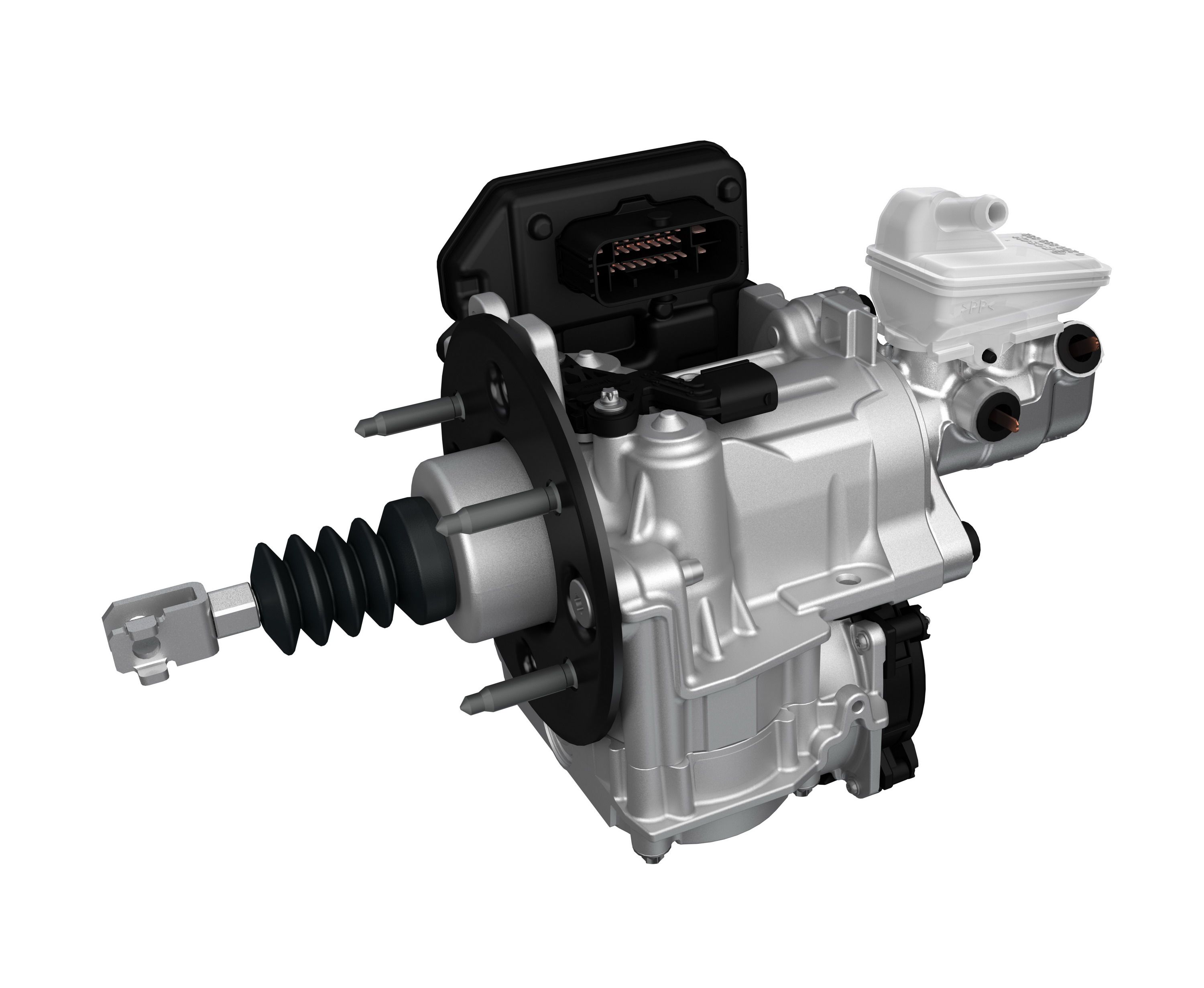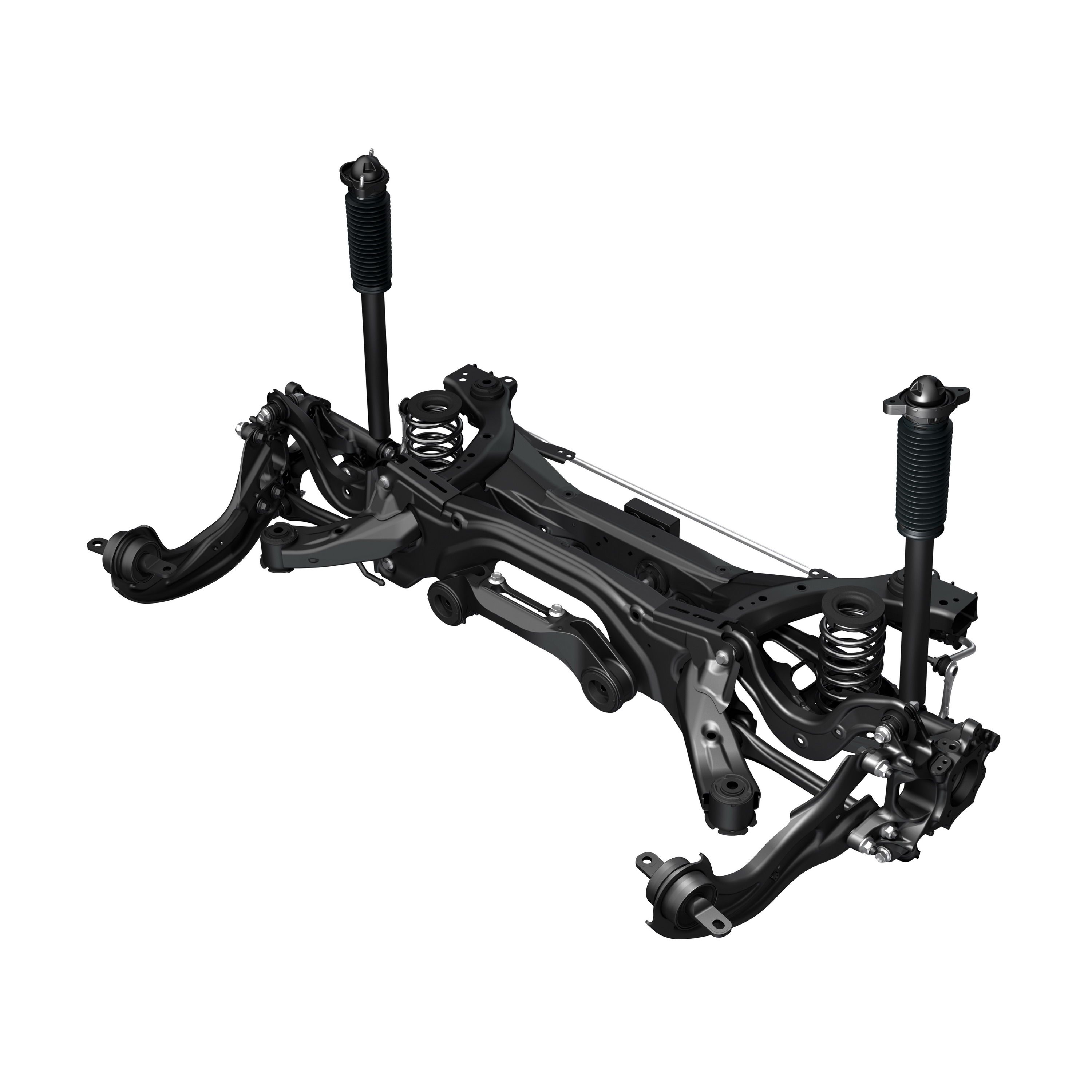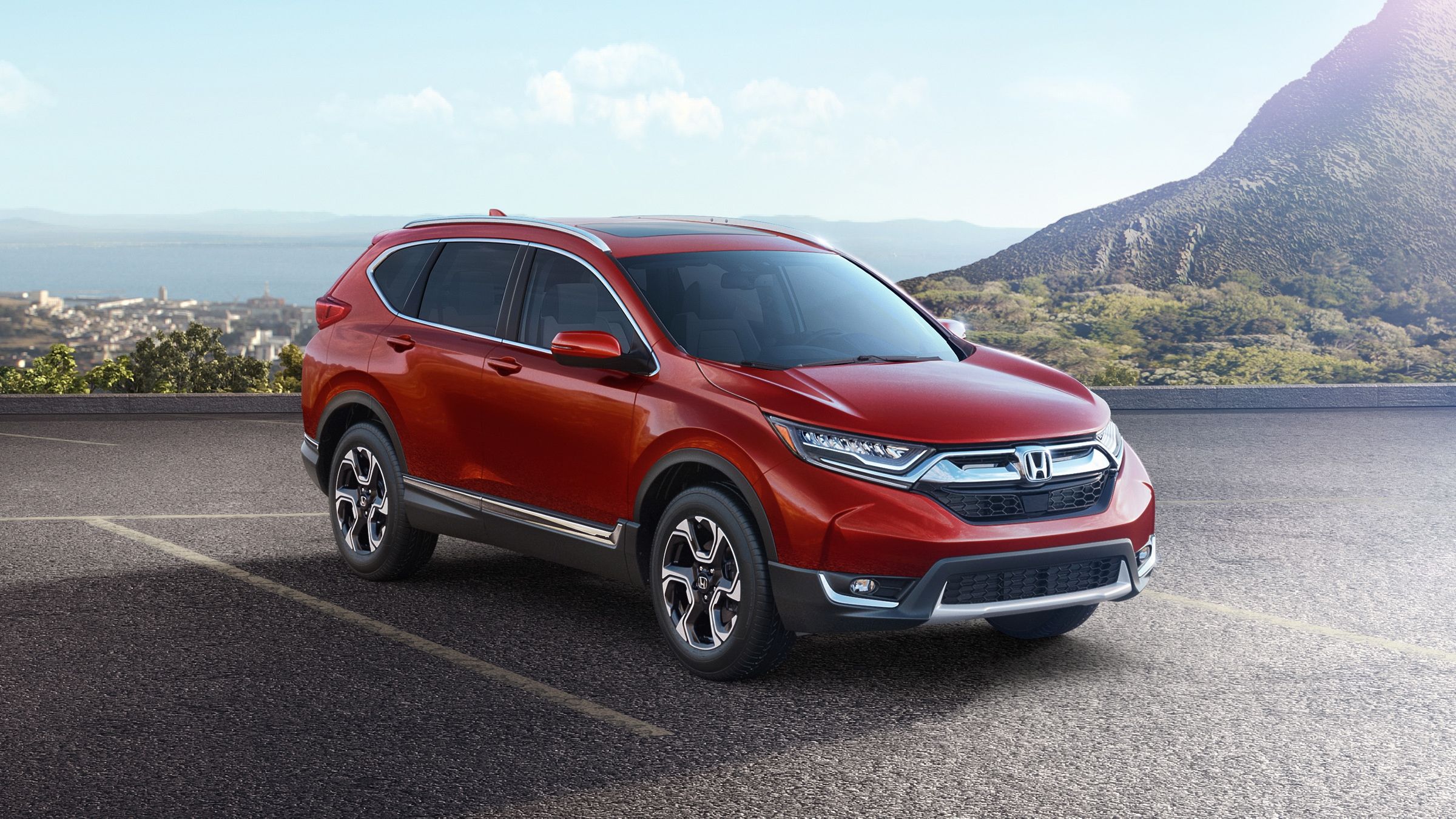The Honda CR-V hit the global market back in 1995 and has sold fairly well since its introduction. The CR-V entered the most recent generation back in 2012, but it went through a pretty significant update for 2015 that included an improved safety structure to help bring the little crossover up to par in IIHS crash testing. At the time, the CR-V also received a new, direct-injected engine, new CVT transmission, and some additional chassis work to help improve its overall ride. For the 2017 model year, Honda is ushering in the fifth-gen model that brings even more significant change, including additional interior space and a new, turbocharged engine for the upper trim levels – marking the first time the CR-V has been offered with forced induction of any kind from the factory.
Despite the fact that Honda is boasting an all-new body and chassis design, you’re not going to see a whole lot of significant change on the outside. The car has been reworked to some extent, but it’s more in line with what you might see on a facelift as opposed to a generational redesign. There are some fresh goodies to talk about inside, and there is that new, turbocharged engine that promises the best fuel economy in the compact SUV class. So, without spilling the beans too much here, let’s dive on in and take a good look at the 2017 Honda CR-V.
Update 10-17-2017: Honda has announced pricing for the 2018 CRV and while there is nothing new, prices increase just a bit across the line. Check out the prices section below to see what you’ll pay for a new 2018 CR-V
Continue reading to learn more about the 2017 Honda CR-V.
2017 Honda CR-V
- Make: Array
- Model: 2017 Honda CR-V
- Engine/Motor: inline-4
- Horsepower: 190
- [do not use] Vehicle Model: Array
Exterior
When you first walk up to the 2017 Honda CR-V, you’ll notice that there are quite a few similarities compared to the 2016 model. To start, the hood still has those muscular body lines on each side. They look to be a little more defined than before. Further ahead, you’ll notice the bottom edge of the headlights still swoop upward and meet the upper edge to create a sharp point on the fenders. The difference here, however, is that the upper and lower edges meet much lower than before – ultimately leading to the hood having a more rounded nose. The inner edges of each headlight unit are now slanted with the upper edge of the headlight existing closer to the grille than the lower edge.
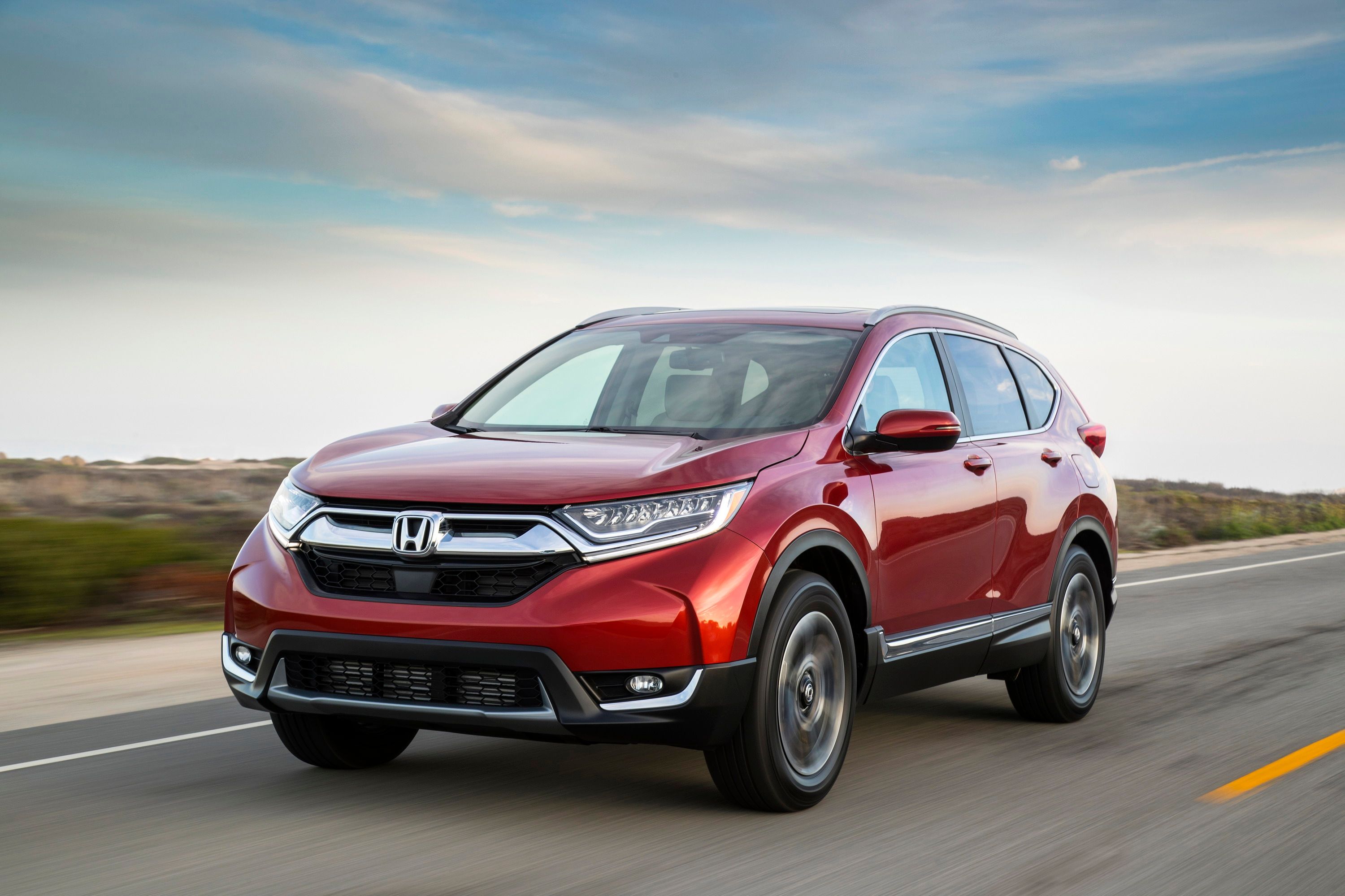
|
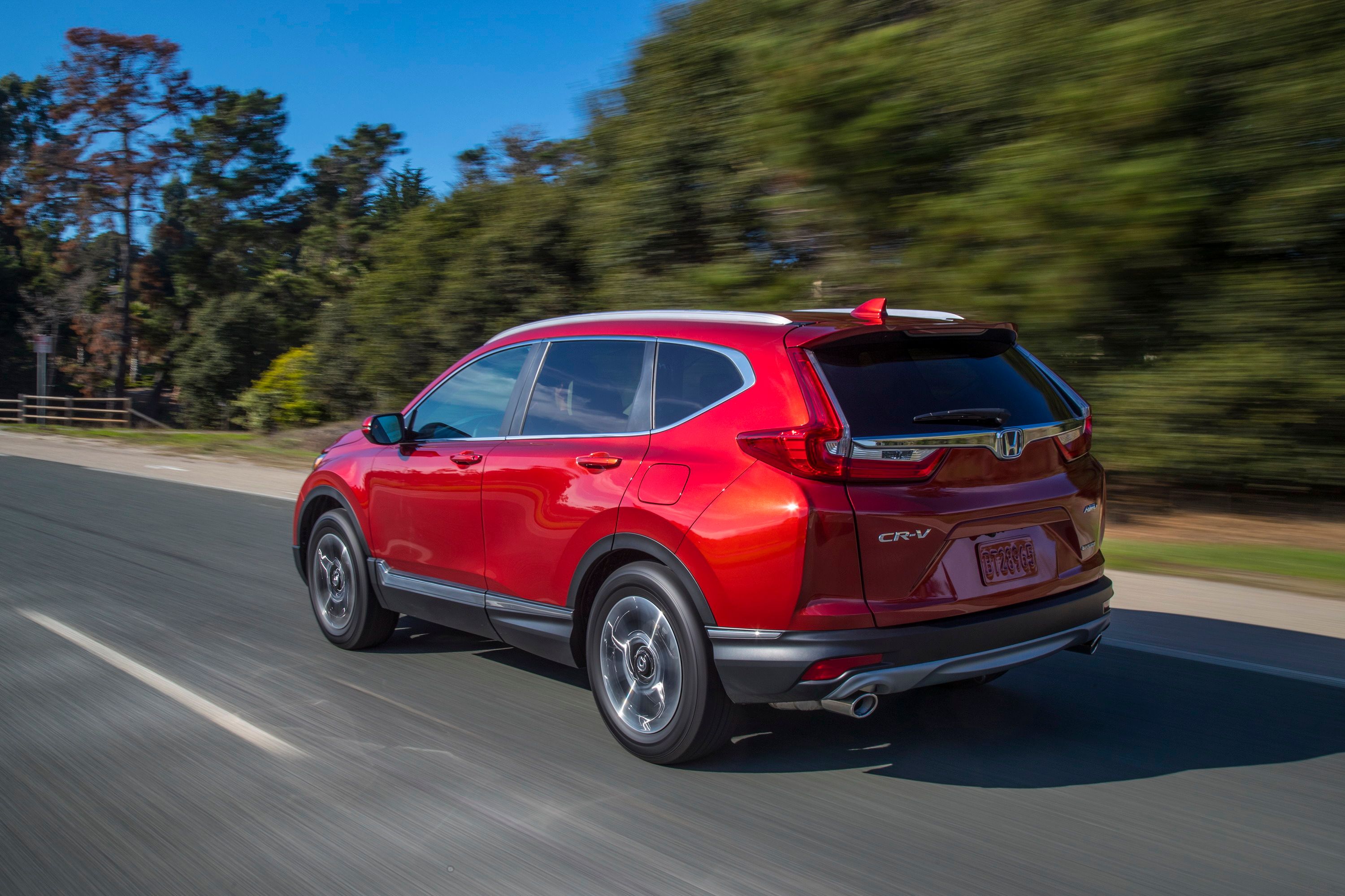
|
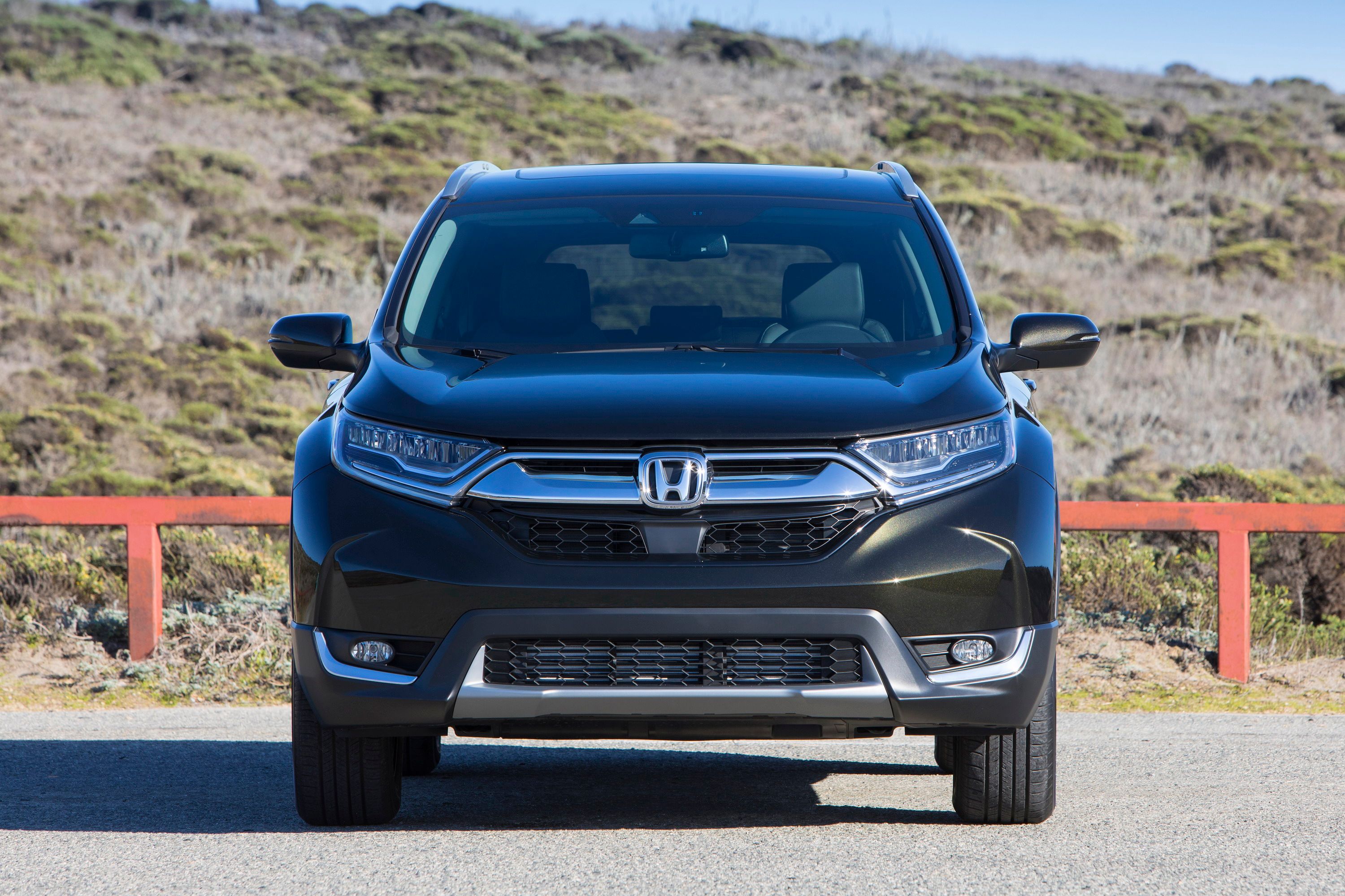
|
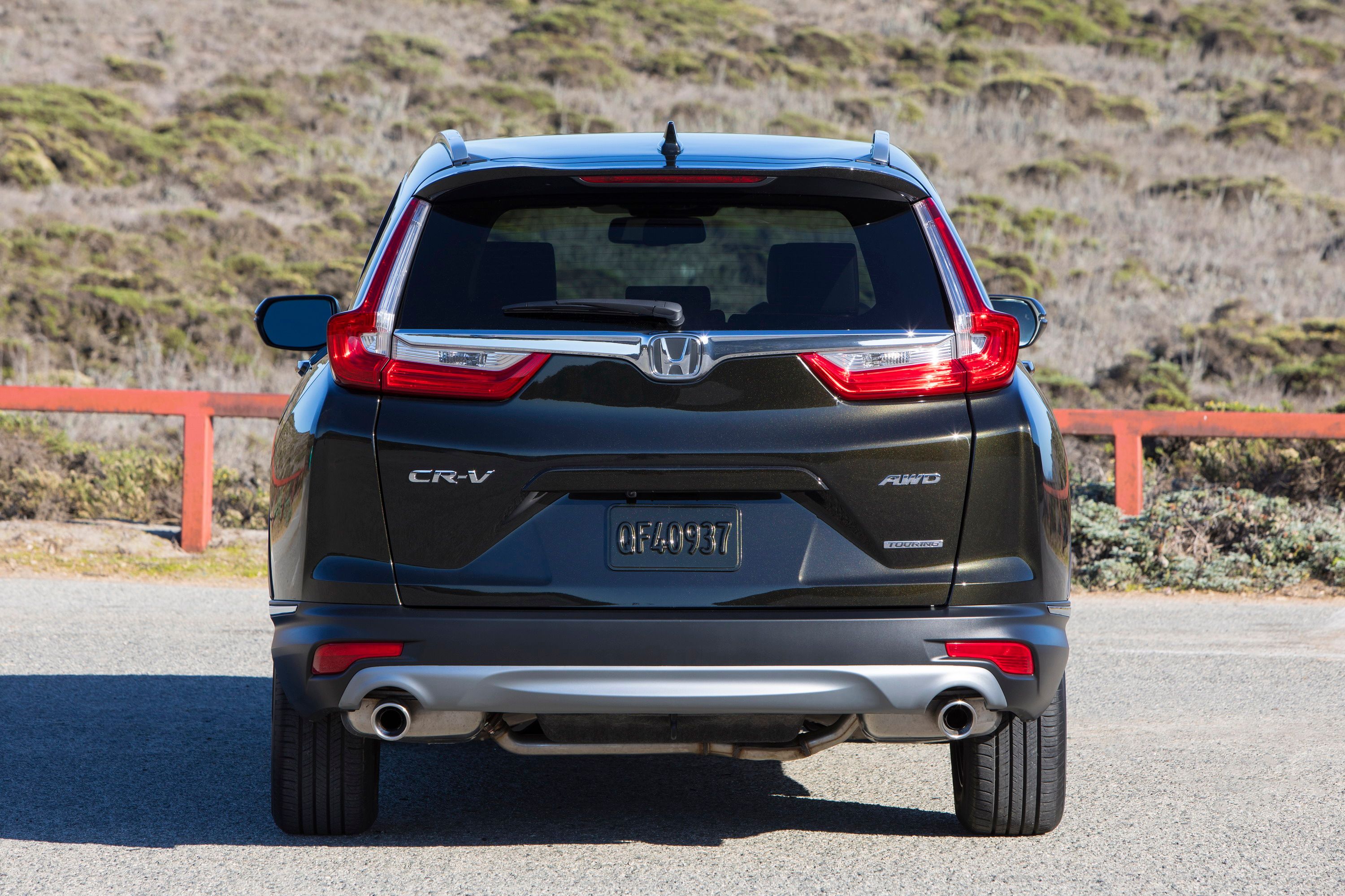
|
The grill itself looks somewhat familiar, however, there is now a chrome strip that links the headlights to the Honda emblem and the black insert from the outgoing model has been replaced with a silver or polished aluminum insert. The upper radiator grille is now a bit wider and taller, allowing the outside edges to meet up with the lower, inner point of the headlight units. Down below, the air dam has also increased in size and now sports a rectangular shape. A silver or brushed aluminum insert makes up the lower edge of the air dam. The fog light units are now much smaller, sit lower, and are now round in shape. The bottom of the corner vents that house the headlights also get the silver insert treatment.
The side profile is far less eventful as far as change goes. The upper body line and wheel arch contours carry over from the outgoing model. That upper body line, however, does extend farther onto the front fender and curves downward up front to meet up with the wide body line on the front fascia. Honda smoothed out the lower body line, and instead added black body cladding as side skirts. This cladding matches the lower portion of the front and rear fascia as well as the cladding that surrounds the wheel arches. Tying the front and side together is a long and defined silver insert on the body cladding. The fuel filler door is now more squared, and the headlights now protrude from the rear quarters more than before. The waistline itself didn’t change much, but the rear quarter glass takes on a slightly different shape. The rear most point of the glass now sits parallel with the corner of the taillights in the rear quarter. It should also be noted that the roof itself doesn’t curve as much in the rear, giving the whole rear quarter a fresher look. The side profile is rounded off by a set of awesome-looking wheels that are finished in black and silver.
Around back, it becomes evident that we’re looking at some new design work. The taillights still travel along the upper edges of the rear hatch but are now thinned. The reverse lights are now integrated into the lenses on the rear hatch. The taillights now make more of a boomerang shape than before, with the lower portion of the lens protruding from the rear quarter. The layout of the lens itself is also fresh and very modern looking. The hatch itself looks to be about the same size, however, the lower corners seem to curve inward a bit. The vertical body lines on each side of the hatch are sharper and give a sense of forward depth. The black cladding carries around onto the lower portion of the rear fascia and now includes integrated reflectors. There is a silver insert that runs along the bottom of the hatch glass and encompasses the Honda emblem in the middle. Finally, there is a silver insert in the middle of the lower fascia that accents the chrome exhaust outlet on each corner.
Despite the familiar features here and there, one really has to give Honda credit for managing to bring fresh design cues without having to completely rework the vehicle. Not too shabby, if I say so myself.
Competing Designs
There’s no denying that the compact SUV/crossover market is packed to the brim with competing models. So much so, that you could spend an entire week going to different dealerships to test drive vehicles, and still not try them all out. On the Korean side of things, the Hyundai Tucson (top left) brings some pretty stiff competition, while the Subaru Forester (top right) offers a more utilitarian look that isn’t quite so aggressive. On the American side of things, you could choose to go with the GMC Terrain (bottom.)
The Hyundai Tucson brings a sleek and sexy design to the table with a massive front grille with four slats, long and thin headlights, and a unique front fascia that’s sculpted and aggressive, but easy to look at. The side profile is heavily defined by a sharp body line that runs from the front fender to the rear where it overlays a second sculpted line above the rear wheel arches. Body-colored roof rails provide a bit of utility without sacrificing the SUV’s sporty appearance, while the rear end showcases a dominate hatch overhang, large 3D taillights, and a rear fascia that has lines in all the right places. There’s also a sharp line that curves around from the rear quarters and traverses across the rear hatch to give the rear end a wide look from a distance. There’s body cladding that runs all the way around the bottom edge to provide a little protection should you decided to leave the beaten path. All told, it’s not a bad proposition in this market.
The Subaru Forester is more toned down and utilitarian, but still has a pleasing look to it. Its grille is fairly small while the headlights are tall and wide. It’s definitely not as sleek in the front as the CR-V or the Tucson, but that can probably be attributed to the functional air dam in the low fascia and the inserts in each corner that house fog lights and chrome trim. Moving over to the sides, you’ll find body-colored mirrors and a rather smooth profile. There are mild flares over the wheel arches that feature small but sharp contours, and the window trim is very thin, making it look like the side glass and body integrate seamlessly. Around back, the taillights protrude just a little from the body and are quite wide, overlaying onto the hatch just a little bit. There is a small overhang on the hatch, but what really defines the rear end is the angle of the glass in the lower corners. It’s expensive to replace if it is broken, but it’s nice to look at. Like the other models here, body cladding covers the lower edges all the way around, but in the rear, the cladding gives the rear fascia a unique look and serves as a housing for a pair of reflectors and the exhaust outlet.
It wouldn’t be a true battle royal if we didn’t throw an American model into the ring, and in this case, it’s the GMC Terrain. But, if you don’t like boxy looks, you’ll want to go with one of the foreign offerings mentioned above. I can’t stress that enough, as this thing is excessively boxy. The hood sits almost flat with a big, nearly square grille up front that is flanked by almost-square headlights. Down below, there is a pair of square LED fog lights that are linked together indirectly with a very defined chrome strip. Moving over to the sides, there are very dominate wheel arch flares that are square with rounded corners to go with an otherwise uneventful side profile. There is one very sharp body line down below, just above the cladding, but like the rest of the vehicle, it’s somewhat mundane. The Rood sports a pair of chrome roof racks while the near-90-degree curves continue around back. The taillights wrap around from the rear quarters, while the lower fascia sports the same chrome strip that links the fog lights together up front. Body cladding surrounds the lower edge of this model too, but it’s nowhere near as seamless as the other models we’ve discussed.
|
Hyundai Tucson |
Subaru Forester |
GMC Terrain |
Honda CR-V |
|
|
Wheelbase (Inches) |
105.1 |
103.9 |
112.5 |
104.7 |
|
Length (Inches) |
176.2 |
181.5 |
185.5 |
180.6 |
|
Width (Inches) |
72.8 |
70.7 |
72.8 |
73.0 |
|
Height (Inches) |
64.8 |
66.4 |
66.3 |
66.1 |
|
Approach/Departure Angles (2WD) |
17.2°/23.9° |
15.2°/23.5° |
19.3°/23.5° |
|
|
Approach/Departure Angles (AWD) |
17.2°/23.9° |
23.0°/25.0° |
15.2°/23.5° |
20.8°/24.8° |
Interior
The inside of the fifth-gen CR-V is nothing short of impressive. The dash is now wrapped in a soft-touch surface and has been completely redesigned. The outgoing model featured a recessed display screen in the center with the infotainment display position just below in the center stack. This created a weird two-tier appearance. Out with the old, the dash is much flatter than before, the infotainment display is now larger and almost appears to float out of the center stack at you. Honda didn’t say what size the standard screen is, but an Android-powered seven-inch display is available as an option. The instrument cluster is all new and features a TFT digital display in the middle. The HVAC vent on each corner of the dash is now more square in shape while the center vents now sit on the top of the dash and are rectangular.
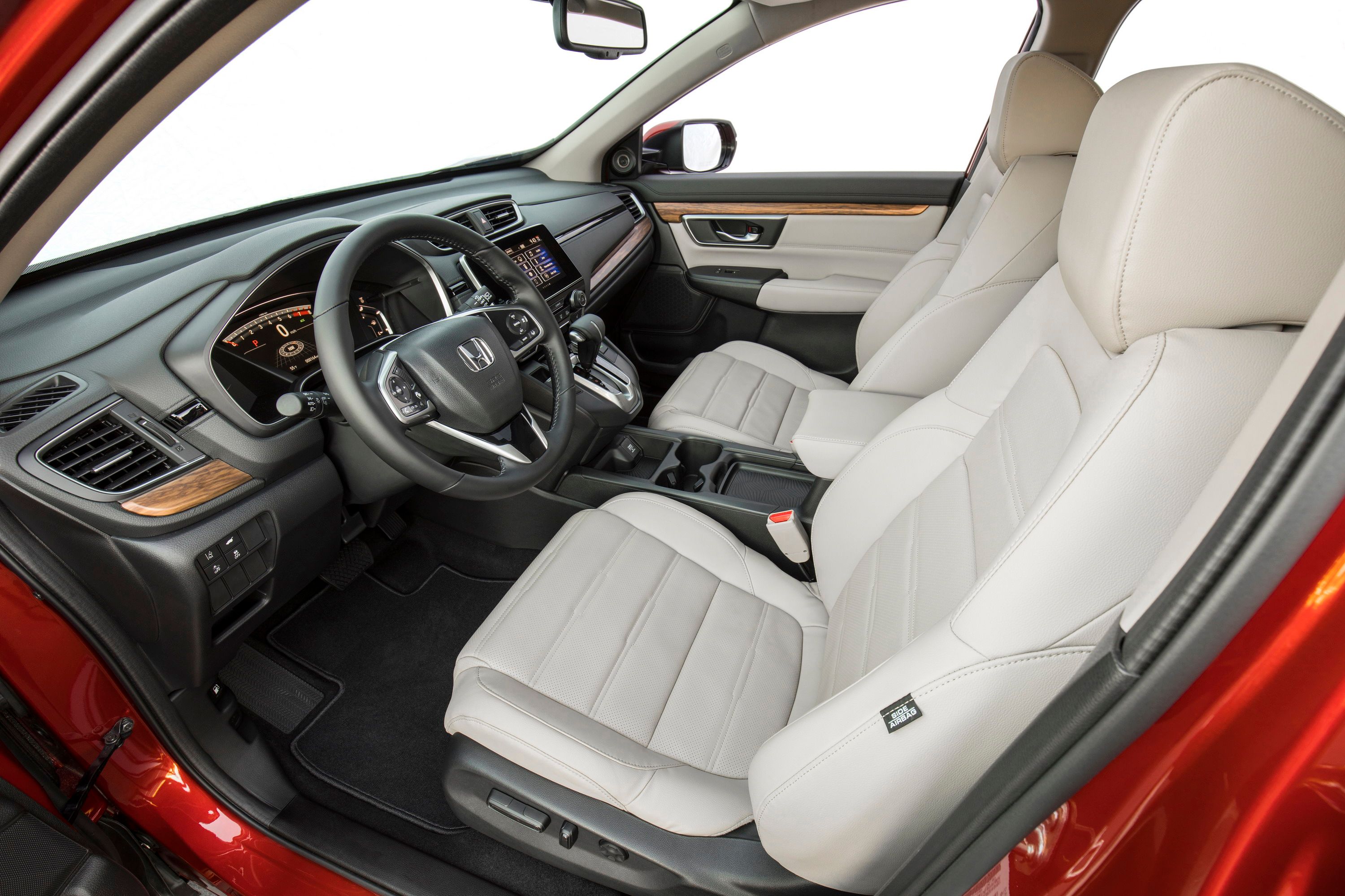
|
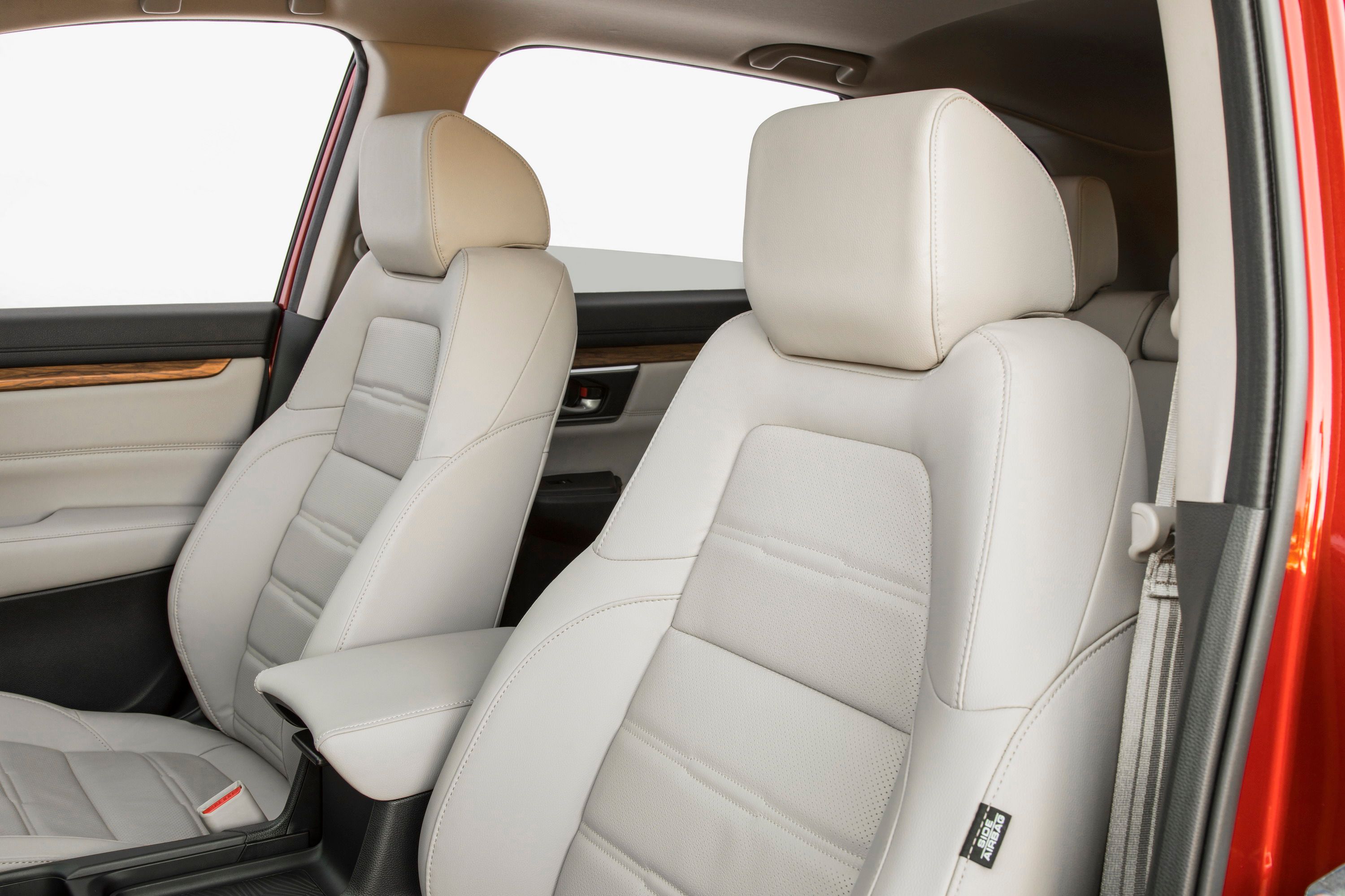
|
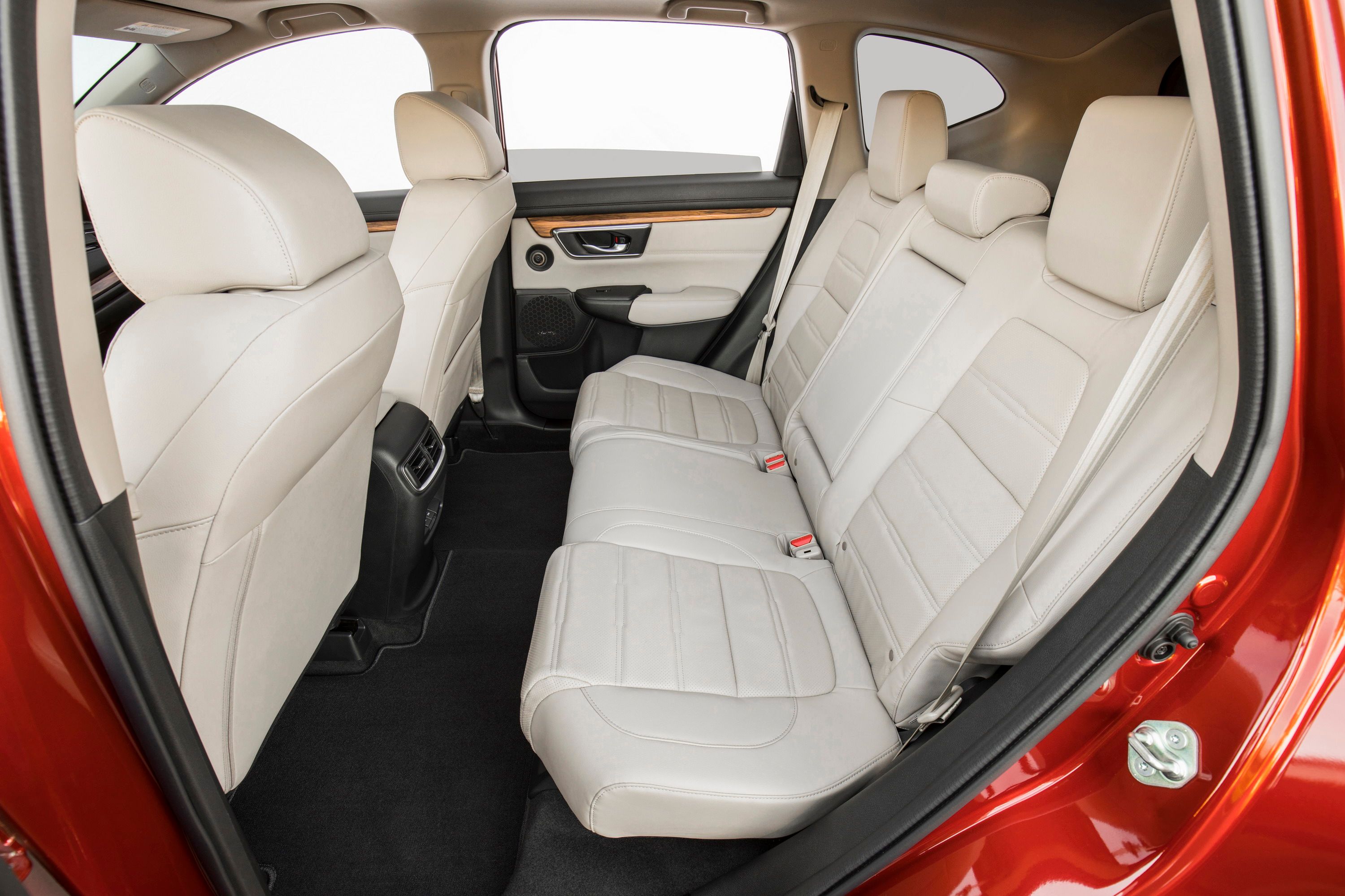
|
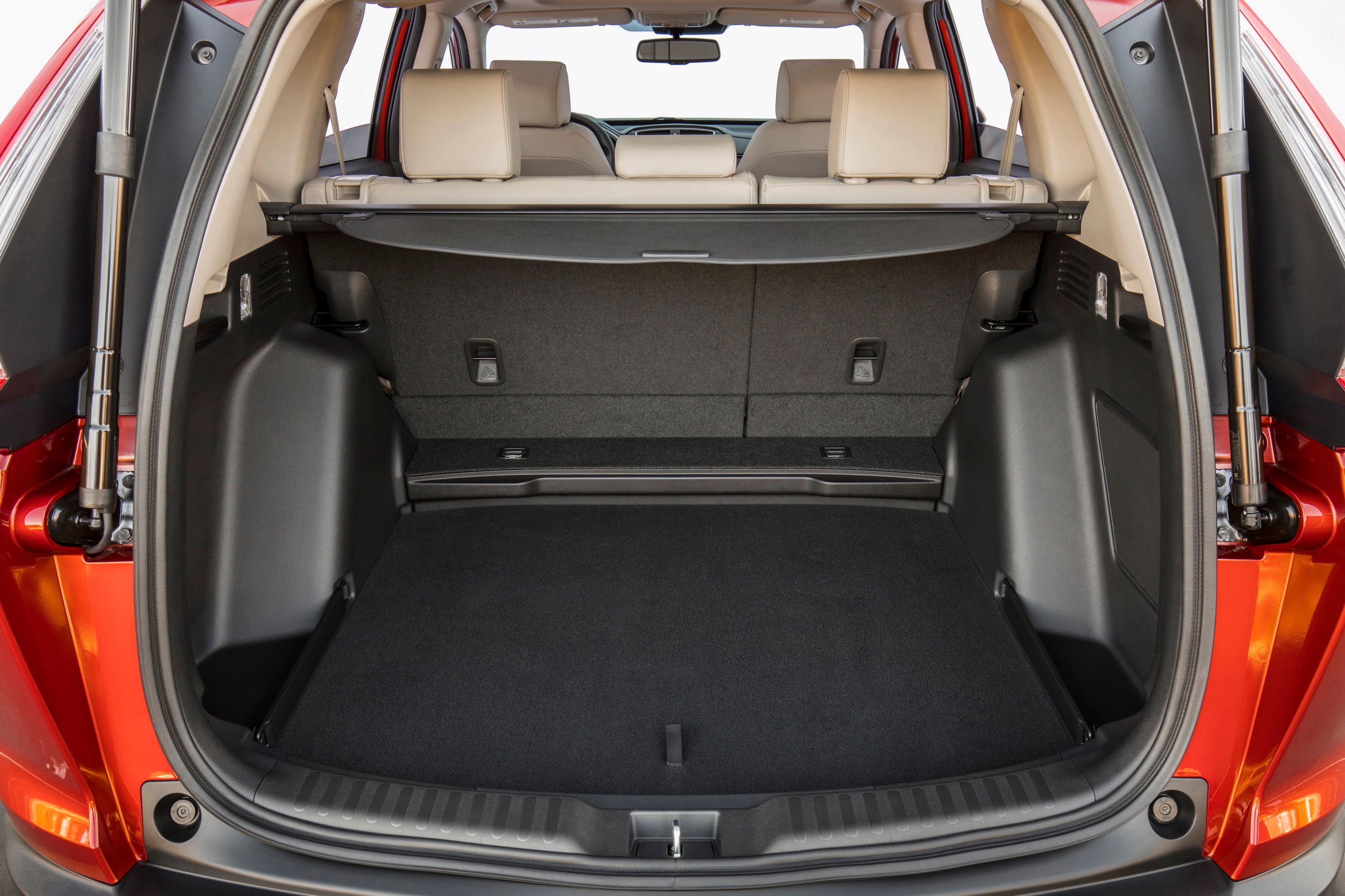
|
The steering wheel is also new, but still features a three-spoke design. The central hub is now smaller and makes for a longer lower spoke. The side spokes still feature thumb buttons, but it appears as if there are more than on the outgoing model. The silver and black inserts on the steering wheel give the new CR-V a sportier feel. Down below the infotainment display sits a dual knob control system for the heating and ventilation. The center console, if that’s what you would call it protrudes from the dash directly below the HVAC controls. This portion of the console almost looks to be separate from the dash (it really isn’t) and is now wider than before. The gear shifter is outlined with black and silver inserts to match the steering wheel and vent accents. The rearward portion of the center console has been refined a bit to offer larger cup holders and a more user-friendly storage pocket. As you can see, wood trim inserts add a bit of luxury to the face of the dash and the redesigned door panels.
Honda has yet to release full dimension information of the new CR-V but has said that the cabin is more spacious than ever and it supposedly has best-in-class rear legroom. AS far as technology goes, the new CR-V can be had with that seven-inch, android-powered display, Honda, satellite-linked navigation, and Apple CarPlay and Android Auto connectivity. Other available features include remote start, dual-zone climate control, heated mirrors, electric parking brake, rear USB charging ports, and powered front seats.
A World of Difference
When it comes to interior layout, no two cars are created equal, and such is the case with the models we’re discussing here today. The Tucson (top left) has a very defined exterior, but once you open the door, you’ll find more simplicity than anything. The upper portion of the dash is primarily flat and features nothing more than a couple of light contours over the instrument cluster and center stack. The instrument cluster is a dual-gauge unit that also has a small TFT screen in the middle. Moving to the center stack, you’ll find a large infotainment display in the center with two rows of buttons just below it. This setup is flanked on three sides by a contrasting trim insert that houses a pair of vertically oriented HVAC vents. Down below, the second lower tier of the dash extends towards passengers just a little more and transitions smoothly into the center console. The dual-zone climate control system is located at top, with a storage pocket and accessory plugs just below it. The center console features just a few buttons, the shifter, and a cup holder. On the options front, you can get Wine Red leather upholstery, a 315-Watt Infinity sound system, as well as Android Auto and Apple CarPlay. All cloth-equipped models benefit from YES Essential stain-resistant fabric – not bad for a Hyundai, huh?
Next up is the Forester, and believe it or not, it actually has the most American-looking design you’ll probably ever see come out of Japan. The dash is long and fairly uneventful, but it does curve downward toward the passengers where it creates a supporting area for the center stack. Atop the center stack is a weird display screen that provides some vehicle information and is recessed into the dash a bit. It looks a little awkward, but right below it sits a pair of HVAC vents followed by a decent-sized infotainment display with buttons on each side. The HVAC system is primarily controlled by three knobs just below the display. The center stack continues downward to provide a small area with accessory plugs and a large storage cubby. As such, there isn’t much of a center console, but there is just enough to house a gear shifter and handbrake lever. The built-in navigation system features voice control, but you must opt for the Harmon Kardon system to get that feature. The instrument cluster was updated for 2017 to include a small color display between the two analog gauges, however, it primarily displays information for the various driver assistance features. Leather and cloth upholstery is available.
Stepping into a GMC Terrain will get you a very Americanized interior, but you’ll actually be surprised to see just how many curves there are inside. In fact, it’s actually a whole different world inside compared to the exterior. The dash is intricate with a large center pad in contrasting color while the outer edges move inward toward the bottom to create the link between the dash and center console. The infotainment system is positioned at the top of the center stack with a tiny overhang on top. The bezel around the display is tall and houses a number of buttons as well as the HVAC controls. Two small cubbies make up the bottom end of the center stack. The center console appears to be excessively long and wide, with the cup holds positioned next to the gear shifter. The central armrest also feels incredibly long but provides access to a nice storage area underneath. The door trim panels are just wild and feature wooden inserts for a hint of luxury while the rest of the interior can be had in leather with two contrasting colors.
|
Hyundai Tucson |
Subaru Forester |
GMC Terrain |
Honda CR-V |
||||
|
Hyundai Tucson |
Subaru Forester |
GMC Terrain |
Honda CR-V |
39.6/39.2 |
41.4/39.8 |
39.8/39.2 |
40.1/39.2 |
|
Headroom front/rear (Inches) |
41.5/38.2 |
43.0/37.5 |
41.2/39.9 |
41.3/40.4 |
|||
|
Legroom front/rear (Inches) |
57.1/55.1 |
57.0/56.5 |
55.7/55.3 |
57.9/55.6 |
|||
|
Shoulder room front/rear (Inches) |
55.6/54.5 |
53.9/53.0 |
55.1/51.3 |
55.1/49.5 |
|||
|
Hip room front/rear (Inches) |
31.0/61.9 |
34.4/74.7 |
31.6/63.9 |
39.2/75.8 |
Drivetrain
The new CR-V will be offered with two different engines. The entry-level LX trim gets a 2.4-liter, DOHC, i-VTEC that delivers 184 horsepower and 180 pound-feet of torque. It comes with front-wheel drive as standard equipment, but can be optioned with all-wheel drive. Fuel economy for this model comes it at 26 mpg in the city, 32 on the highway, and 28 combined with FWD or 25 in the city, 31 on the highway, and 27 combined with AWD. The big news here is the 1.5-liter, turbocharged, four-banger that comes standard in EX and higher trim levels. For the first time, the CR-V is getting a turbocharged mill, and this one happens to offer 190 horsepower and 179 pound-feet of torque. Honda claims that this engine offers best-in-class fuel economy for the compact SUV class. The figures announce at the CR-V’s launch have fuel economy set at 28 mpg in the city, 34 mpg on the highway, and 30 mpg combined when equipped with FWD only. Opting for the AWD drivetrain setup drops those numbers to 27, 33, and 29, respectively. Like most of the other models in this segment, the CR-V has a maximum tow rating of just 1,500 pounds.
The chassis has also been reworked and, according to Honda, provides “more agile and confident handling.” Up front, the CRV is supported by a pair of MacPherson struts, while the rear is equipped with a multi-link setup with low-friction dampers. FWD and AWD models have a tubular sway bar up front and solid sway bar in the rear. This should dramatically improve the amount of body roll seen when cornering and will help to prevent oversteer if things get a little funky. Steering duties are handled by an electric power steering system.
For now, performance specs aren’t available but expect the performance to be similar to the outgoing model. Zero-to-60 mph should come in about 8.8 seconds with top speed coming at around 112 mph. We’ll update you with official specs as they become available, so stay tuned.
The Power Behind Them All
Buying yourself a Tucson here in the U.S. will have you choosing between one of two engine options. The first and entry-level engine is a 2.0-liter four-cylinder that delivers 164 horsepower and 151 pound-feet of torque. It mates to a six-speed automatic and achieves 23 mpg in the city, 30 mpg on the highway, and 26 mpg combined. All-wheel drive models drop a bit to 21,26, and 23, respectively. Going with any trim level but the entry-level SE will get you the 1.6-liter, turbocharged four-cylinder that delivers 175 horsepower and 195 pound-feet of torque. It’s mated with a seven-speed, dual-clutch unit and manages to achieve 26 mpg in the city, 32 mpg on the highway and 28 mpg combined. All-wheel drive drops those numbers to 25, 30, and 27, respectively.
Stopping by the Subaru dealer will have you considering five different Forester models. Four of those models come equipped with a 2.5-liter with 170 horsepower and 174 pound-feet on tap. 2.5 and 2.5i trims come with a six-speed manual transmission while a CVT can be had as an option. That same CVT comes standard on the 2.5i Limited and Touring, as well as the 2.0XT Premium. That 2.0XT Premium, by the way, gets a 2.0-liter turbocharged unit with a staggering-for-this-segment 250 horsepower and 258 pound-feet of torque. Unfortunately, that extra power doesn’t translate into better towing capacity, as all models max out a 1,500 pounds. They all do come standard with Subaru’s awesome AWD system, however, so the Forester does have that going for it. Models equipped with the 2.5-liter can pull up to 32 mpg in the city and 26 on the highway while the 2.0XT gets just 27 in the city and 23 on the highway. Assistance features like Vehicle Dynamics Control, Traction Control, four-wheel ABS, brake assist, and a rear-vision camera come standard across the lineup.
Unlike the other models we’ve discussed here, considering our American Contender means that you’ll have to choose between a four-banger and a V-6. On the low end of the spectrum, you can get the 2.4-liter with 182 horsepower and 172 pound-feet of torque. It manages 21 mpg in the city and 31 on the highway with front-wheel drive or 20 and 28 with all-wheel drive. Regardless of the number of driven wheels, towing capacity for models with the 2.4 is limited to a segment usual of 1,500 pounds. Then you’ve got the 3.6-liter V-6 that delivers a high-for-this-segment 301 horsepower and 272 pound-feet of torque. It garners just 17 mpg in the city and 24 on the highway in a front-wheel configuration, but those numbers drop to 16 and 23, respectively, if you opt for all-wheel drive. All models equipped with the 2.4-liter get an 18.8-gallon fuel tank, while the larger-engined models get a 20.9-gallon tank. Towing capacity for the V-6 is limited to 3,500, which is actually great for a compact. All models make use of a six-speed automatic transmission.
|
Hyundai Tucson SE |
Hyundai Tucson Sport |
Subaru Forester 2.5i |
Subaru Forester 2.0XT |
GMC Terrain |
GMC Terrain |
Honda CR-V LX Honda CR-V EX |
||
|
Engine |
2.0-liter Inline 4-cylinder |
1.6-liter Inline 4-cylinder |
2.5-liter four-cylinder |
2.0-liter four-cylinder |
2.4-liter DOHC I-4 DI |
3.6-liter DOHC V-6 DI |
2.4-liter Inline 4-cylinder |
1.5-liter Inline 4-cylinder |
|
Horsepower |
164 HP @ 6,200 RPM |
175 HP @ 5,500 RPM |
170 HP @ 5,800 RPM |
250 HP @ 5,600 RPM |
182 HP @ 6,700 RPM |
301 HP @ 6,500 RPM |
184 HP @ 6,400 RPM |
190 HP @ 5,600 RPM |
|
Torque |
151 LB-FT @ 4,000 RPM |
195 LB-FT @ 1,500-4,500 RPM |
174 LB-FT @ 4,100 RPM |
258 LB-FT @ 2,000-4,800 RPM |
172 LB-FT @ 4,900 RPM |
272 LB-FT @ 4,800 RPM |
180 LB-FT @ 3,900 RPM |
179 LB-FT @ 2,000-5,000 RPM |
|
Transmission |
6-speed automatic |
6-speed automatic |
6-speed manual |
CVT |
Hydra-matic 6T45 six-speed automatic |
Hydra-matic 6T70 six-speed automatic |
CVT |
CVT |
|
Weight |
3,325-3,439 Lbs |
3,369-3,580 Lbs |
3,322 Lbs |
3,653 Lbs |
3,853 Lbs |
4,032 Lbs |
3,307 Lbs |
3,349 Lbs |
|
Towing Capacity |
1,500 Lbs |
1,500 Lbs |
1,500 Lbs |
1,500 Lbs |
1,500 Lbs |
3,500 Lbs |
1,500 Lbs |
1,500 Lbs |
|
Fuel economy city/highway/combined |
23/31/26 |
25/30/27 |
22/28/24 |
23/27/25 |
22/32 |
17/24 |
26/32/28 |
28/34/30 |
Pricing
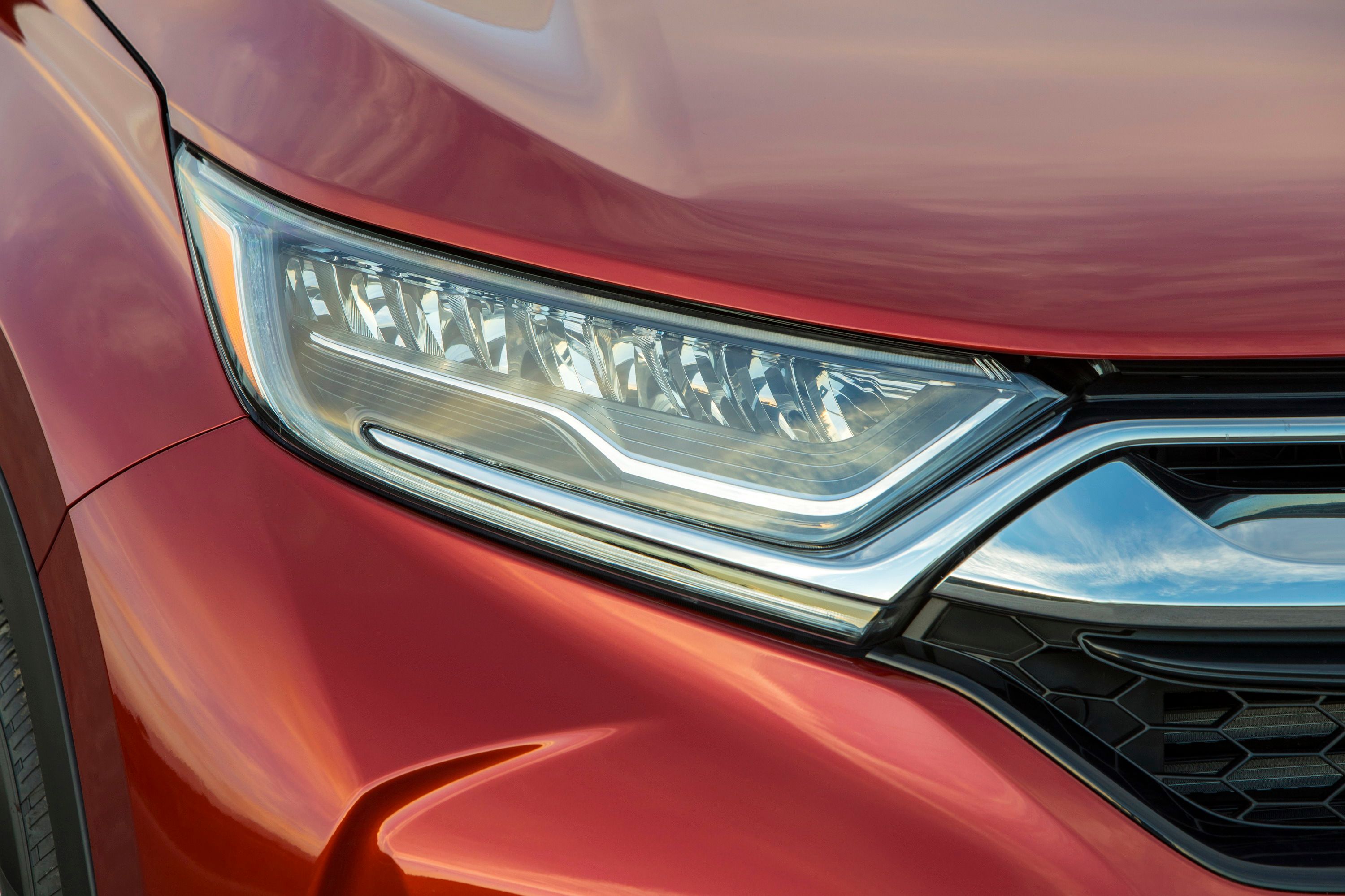
|
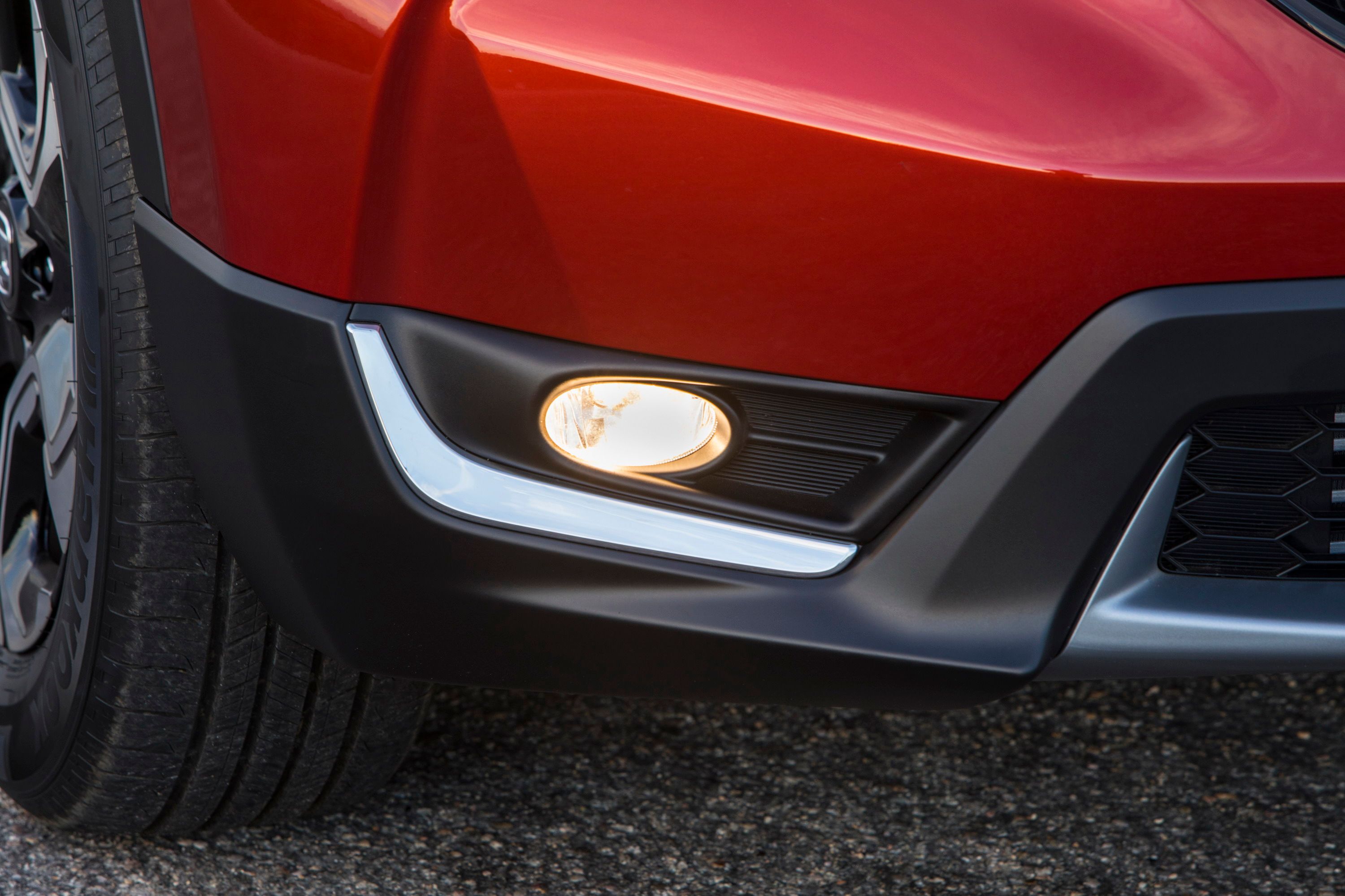
|
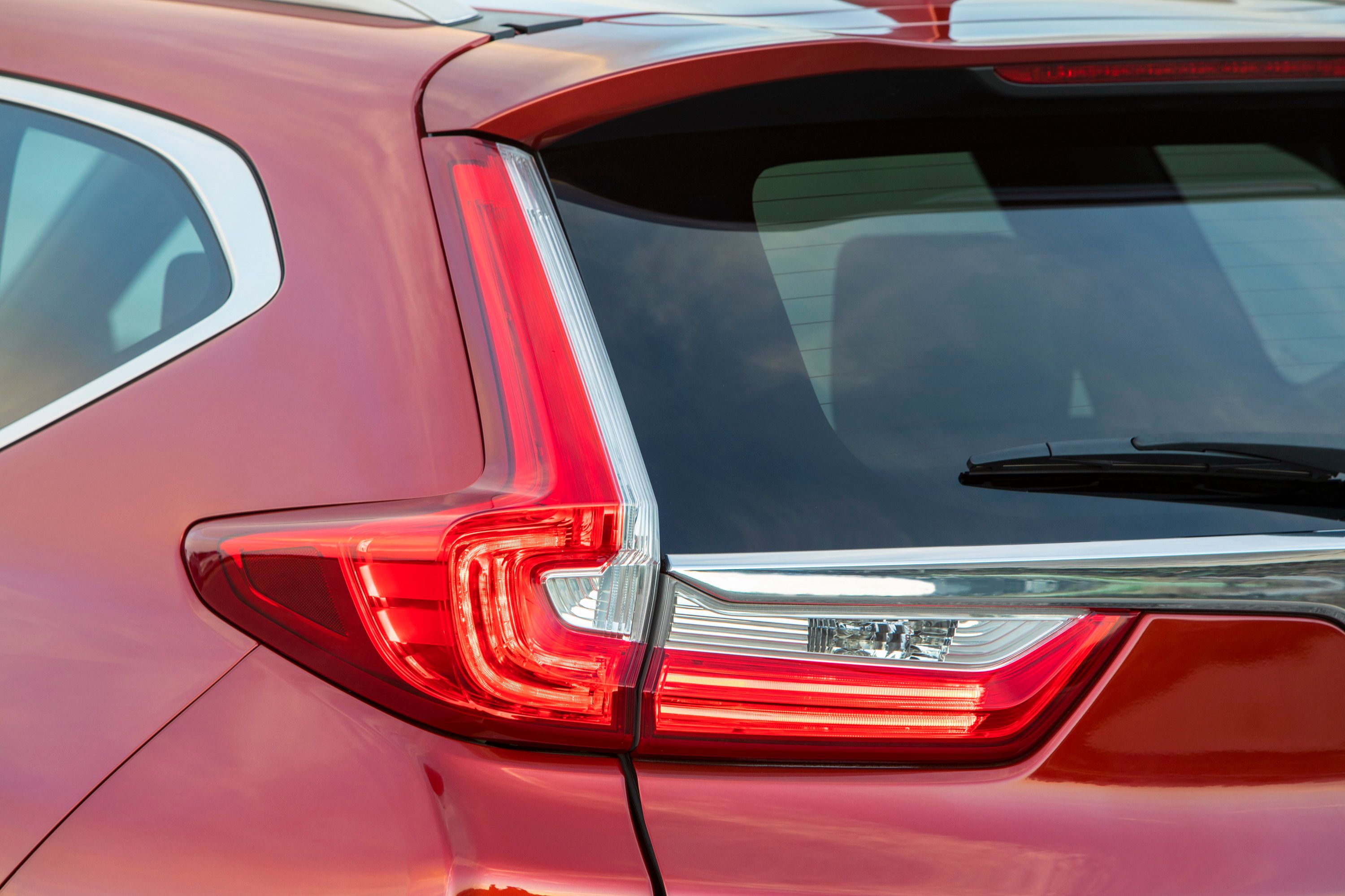
|
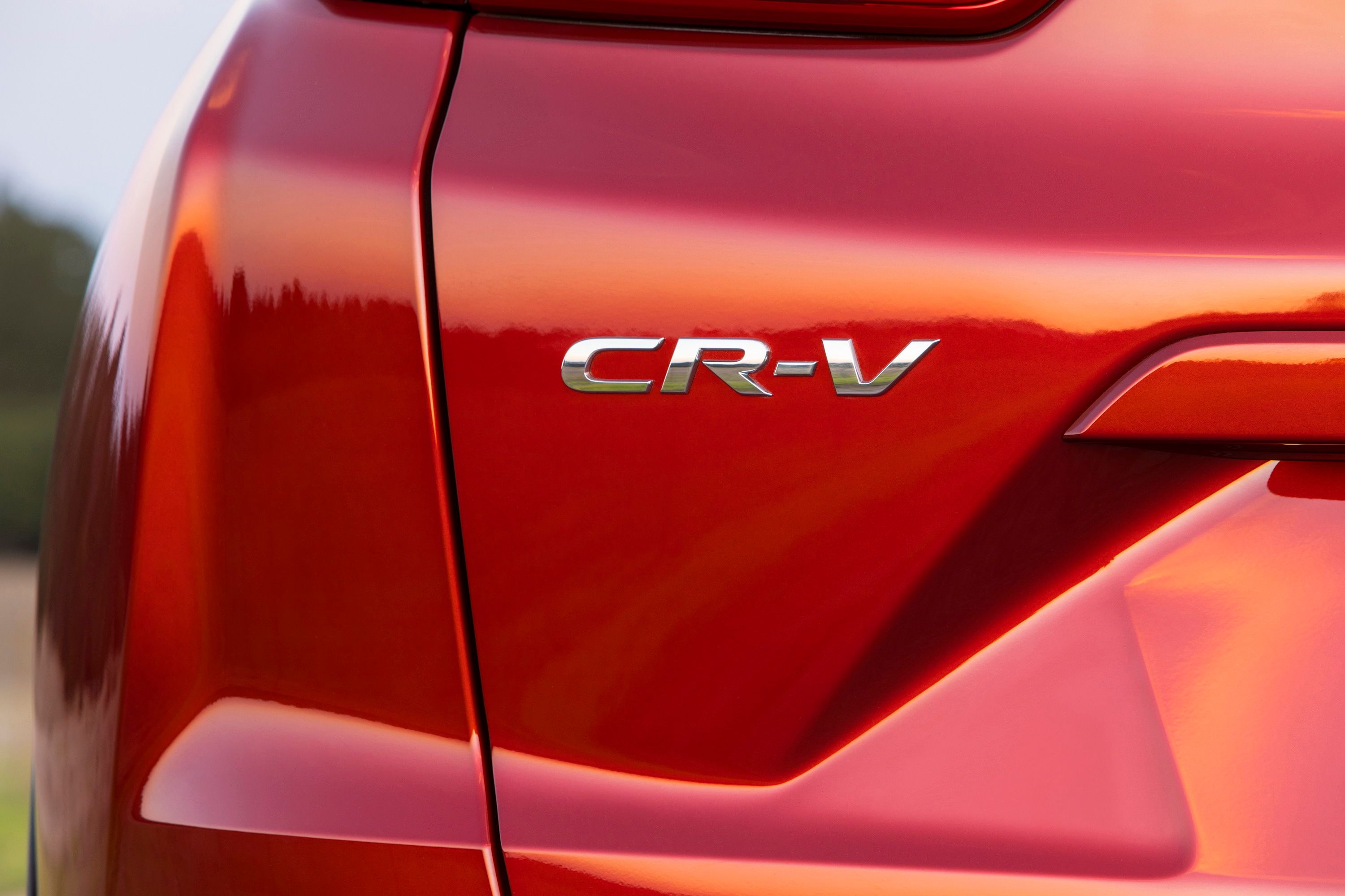
|
The 2017 CRV starts out at $24,045 for an entry-level LX with front-wheel drive. Moving up to all-wheel drive increases that price to $25,345. Prices continue to increase gradually as you move up the line with the range-topping Touring model commanding $32,395 with front-wheel drive or $33,695 with all-wheel drive. All told, the 2017 model has increased in price across the board by no more than $400.
Competitive Pricing
In such a competitive segment, it should come as no surprise that the pricing point of each model is very tight. The Hyundai Tucson starts out at $22,700 and climbs to as much as $29,775 for the range-topping Limited trim. The Forester starts out just a bit cheaper, with the 2.5i commanding $22,595 in entry-level form but increases to as much as $34,295 in range-topping 2.0XT Touring trim. Meanwhile, the American fighter starts out a little more expensive than the rest at $24,995 and increases to as much as $35,200 for the range-topping Terrain Denali. Or course, the Terrain is a few grand more expensive, but is quite luxurious and can even he had with wooden trim. If pricing isn’t an issue to you, you’ll find that the amenities available in the GMC are well worth the extra money spent. But, the other models are pretty nice too for the price.
|
Trim |
Price |
EPA |
|
CR-V LX (2WD) |
$24,045 |
26/32/28 |
|
CR-V LX (AWD) |
$25,345 |
25/31/27 |
|
CR-V EX (2WD) |
$26,695 |
28/34/30 |
|
CR-V EX (AWD) |
$27,995 |
27/33/29 |
|
CR-V EX-L (2WD) |
$29,195 |
28/34/30 |
|
CR-V EX-L (AWD) |
$30,495 |
27/33/29 |
|
CR-V EX-L with Navi (2WD) |
$30,195 |
28/34/30 |
|
CR-V EX-L with Navi (AWD) |
$31,495 |
27/33/29 |
|
CR-V Touring (2WD) |
$32,395 |
28/34/30 |
|
CR-V Touring (AWD) |
$33,695 |
27/33/29 |
2018 Honda CR-V
First, let’s start off with the entry-level, 2.4-Liter, LX trim. It starts out at $24,150 in 2WD form or $25,550 in AWD form That represents an increase of $105 for the 2WD model and $205 for the AWD model. For the rest of the lineup, things are a bit different. The remaining trims – EX, EX-L, EX-L with Navi, and Touring – all go up by $255 with 2WD or $355 with AWD. As such, the EX model is prices at $26,950 and $28,350 while the EX-L model comes in at $29,450 and $30,850. EX-L trims with Navi come in at $30,450 in 2WD form or $31,850 with AWD. Finally, the Touring trims come in at $32,650 and a range-topping $34,050 with AWD. Meanwhile, fuel economy, options, amenities, looks, and performance all remain the same.
|
TRIM |
TRANSMISSION |
MSRP |
EPA Fuel Economy Ratings (city / highway/ combined) |
|
CR-V 2.4 LX (2WD) |
CVT |
$24,150 |
26/32/28 |
|
CR-V 2.4 LX (AWD) |
CVT |
$25,550 |
25/31/27 |
|
CR-V 1.5T EX (2WD) |
CVT |
$26,950 |
28/34/30 |
|
CR-V 1.5T EX (AWD) |
CVT |
$28,350 |
27/33/29 |
|
CR-V 1.5T EX-L (2WD) |
CVT |
$29,450 |
28/34/30 |
|
CR-V 1.5T EX-L (AWD) |
CVT |
$30,850 |
27/33/29 |
|
CR-V 1.5T EX-L with Navi (2WD) |
CVT |
$30,450 |
28/34/30 |
|
CR-V 1.5T EX-L with Navi (AWD) |
CVT |
$31,850 |
27/33/29 |
|
CR-V 1.5T Touring (2WD) |
CVT |
$32,650 |
28/34/30 |
|
CR-V 1.5T Touring (AWD) |
CVT |
$34,050 |
27/33/29 |
Other Choices to Consider
Mazda CX-5
The Mazda CX-5 went through a mid-cycle facelift for 2016 that brought a slightly revised exterior. Inside the center console and center stack saw significant changes, and the overall fit and finish inside also saw some improvement. As is the usual case with mid-cycle facelifts, the CX-5 soldiered on with the same engines as before. However, this isn’t a bad thing as Mazda has essentially struck gold with its SkyActiv range of engines. The entry level model is motived by a 2.0-liter unit that delivers 155 horsepower and 150 pound-feet of torque. Fuel economy for this engine comes in at 26 mpg in the city, 35 mpg on the highway, and 29 mpg combined. The 2.5-liter SkyActiv unit delivers 184 horsepower and 185 pound-feet of torque. City and combined economy ratings are identical between both engines, but the 2.5-liter falls a little short on the highway, achieving just 33 mpg. Pricing starts out at $21,795 for the entry-level Sport trim, $25,215 for the mid-range Touring trim, and $28,570 for the range-topping Grand Touring trim.
Read our full review on the Mazda CX-5 here.
Ford Escape
Much like the 2017 Honda CR-V, the Ford Escape also sees its fifth-gen evolution for the 2017 model year. As such, it comes with an all-new look, two new engines, and a bunch of new technology that finally brought the little crossover that could back into the modern ages. The standard, 2.5-liter, i-VCT four-banger carried over to this generation with 168 horsepower and 170 pound-feet of torque. The mid-range 1.6-liter was replaced with a new 1.5-liter four-pot that delivers 179 horsepower and 177 pound-feet of torque. It’s a little more powerful than that 2.5-liter but manages to offer improved fuel economy across the board in FWD and AWD flavors. The range-topping engine is now a 2.0-liter, turbocharged unit that pumps out a Honda-killing 245 horsepower and 275 pound-feet of torque. Fuel economy for this engine comes in at 22 mpg in the city, 29 mpg on the highway, and 25 mpg combined. Four-wheel drive drops economy by 2 mpg across the board. Entry-level pricing on the escape comes in at $21,995 while the mid-range SE trim calls for $23,495. The range-topping Platinum trim commands $27,495.
Read our full review on the Ford Escape here.
Conclusion
At first, I was ready to criticize Honda after taking a quick glance at this fifth-gen model. But, now that we’ve been over it with a fine-toothed comb, I have to say that I’m pretty impressed. Plus, it’s nice to see that Honda finally went all in and brought a turbocharged mill into the fold. It has fresh looks, more upscale interior, plenty of options, and decent fuel economy. So, what’s not to like about it? Hopefully, we’ll get the full dimensions and performance information soon. As far as the competition goes, the CR-V doesn’t exactly offer the best power – Ford really takes the cake on that one – but Honda’s are known for reliability and fuel economy is often better than stated by Honda or the EPA. It looks to me like Honda has a winner on its hands, but I reserve official judgment until I get to see it in the metal.

